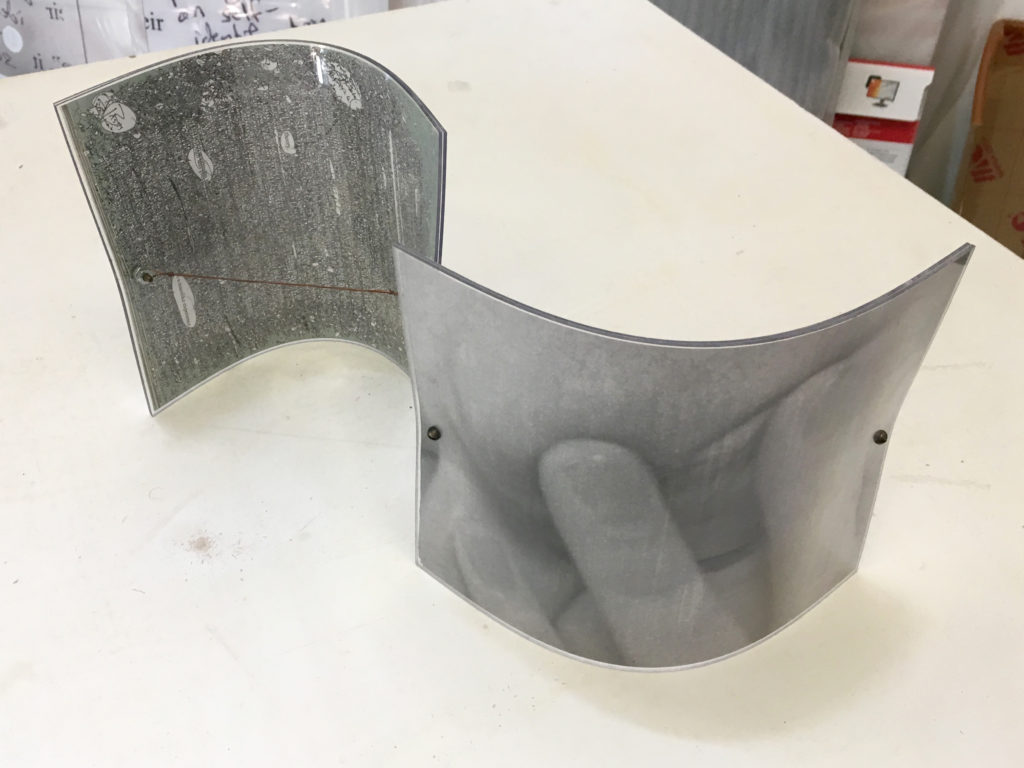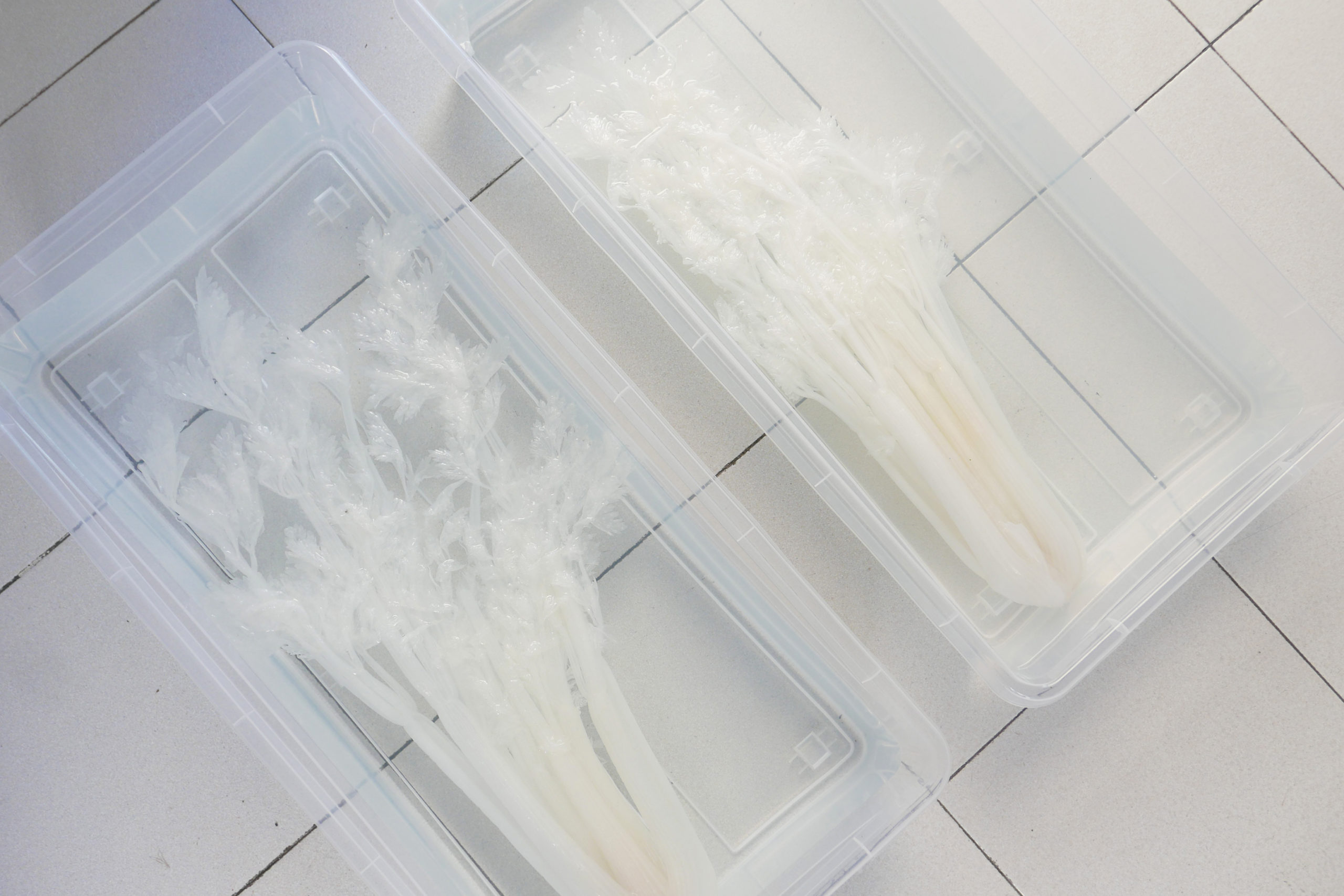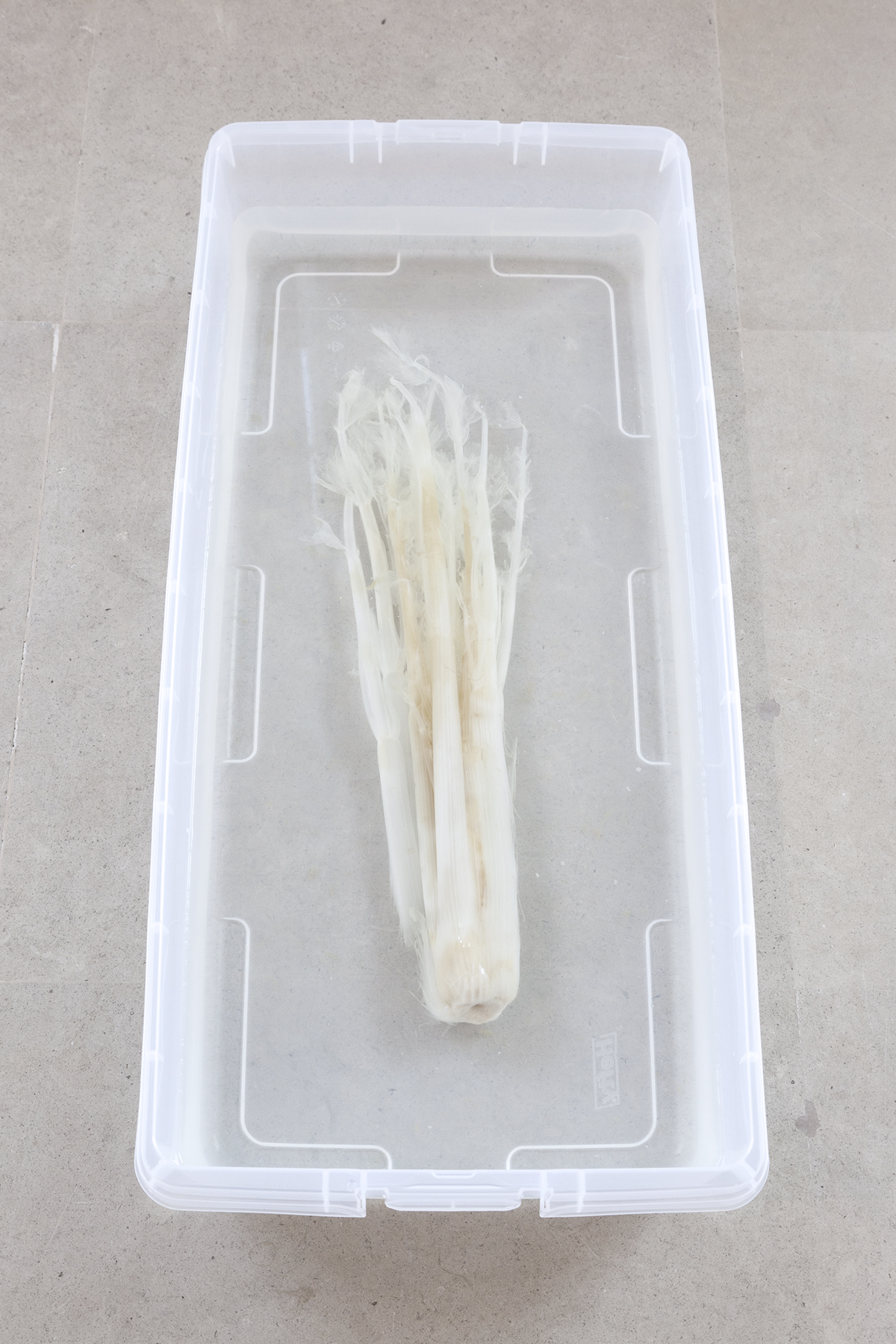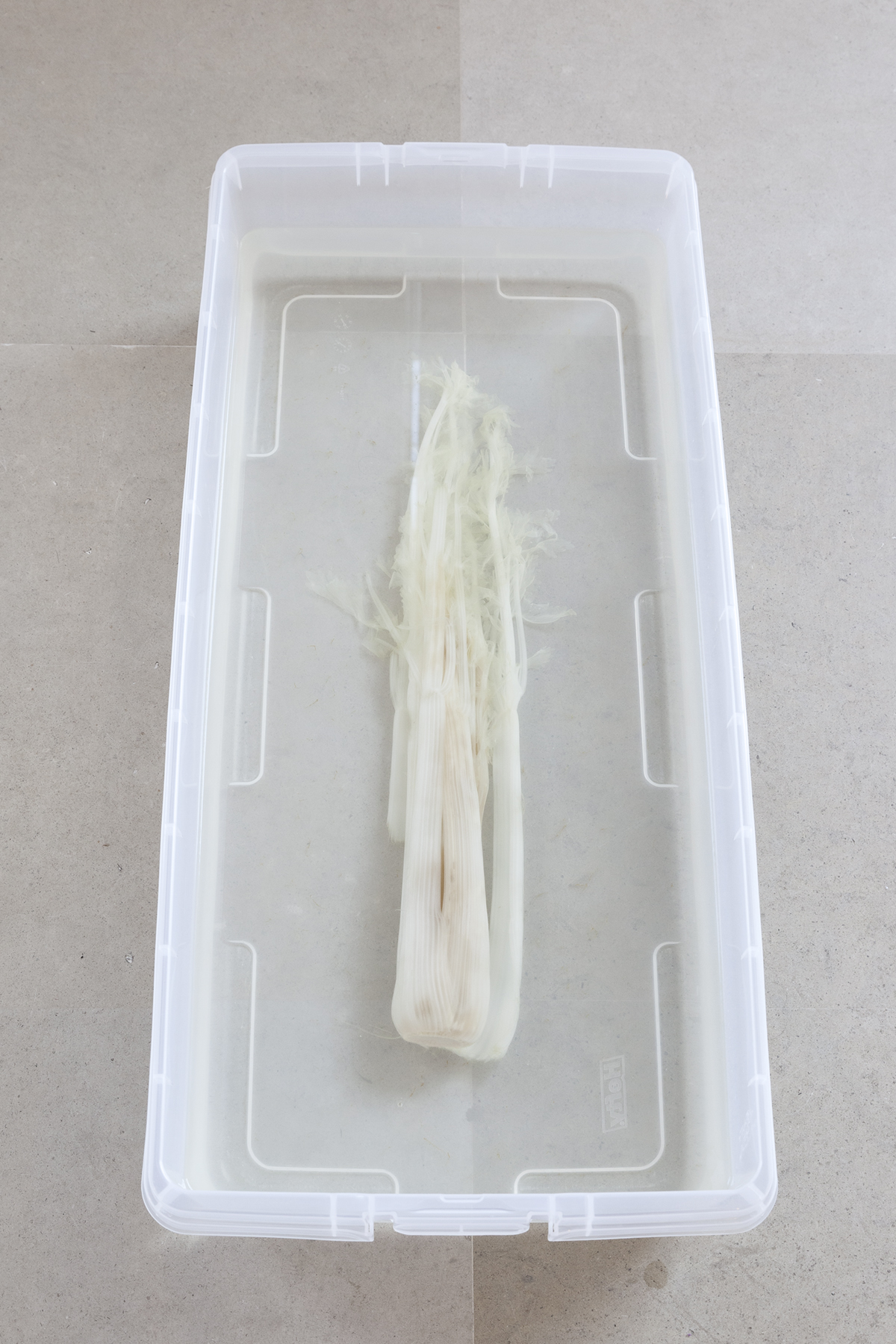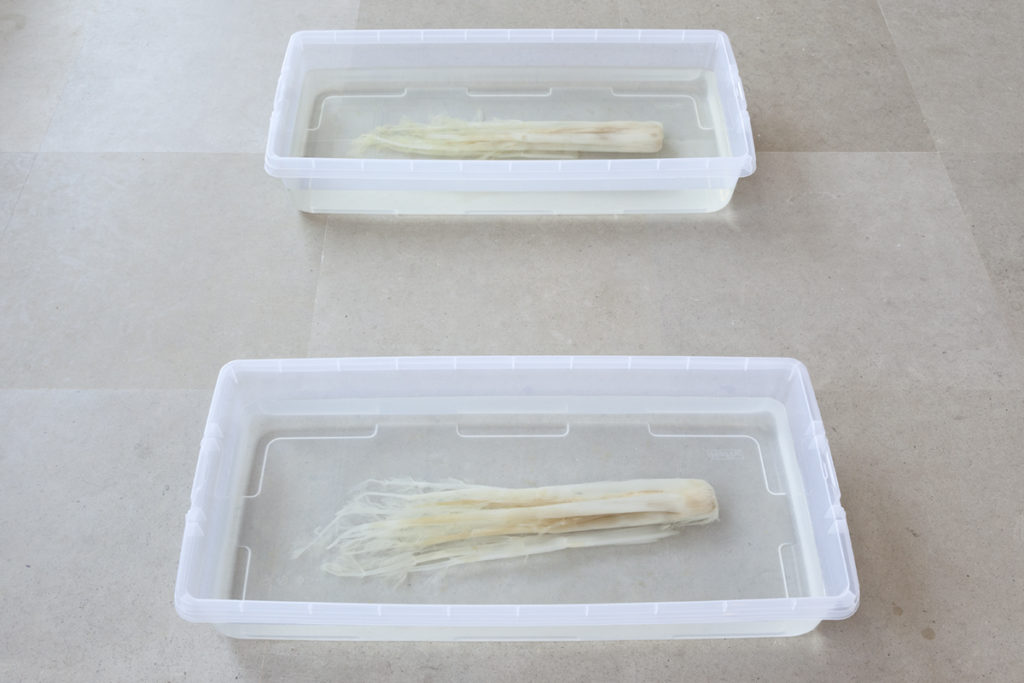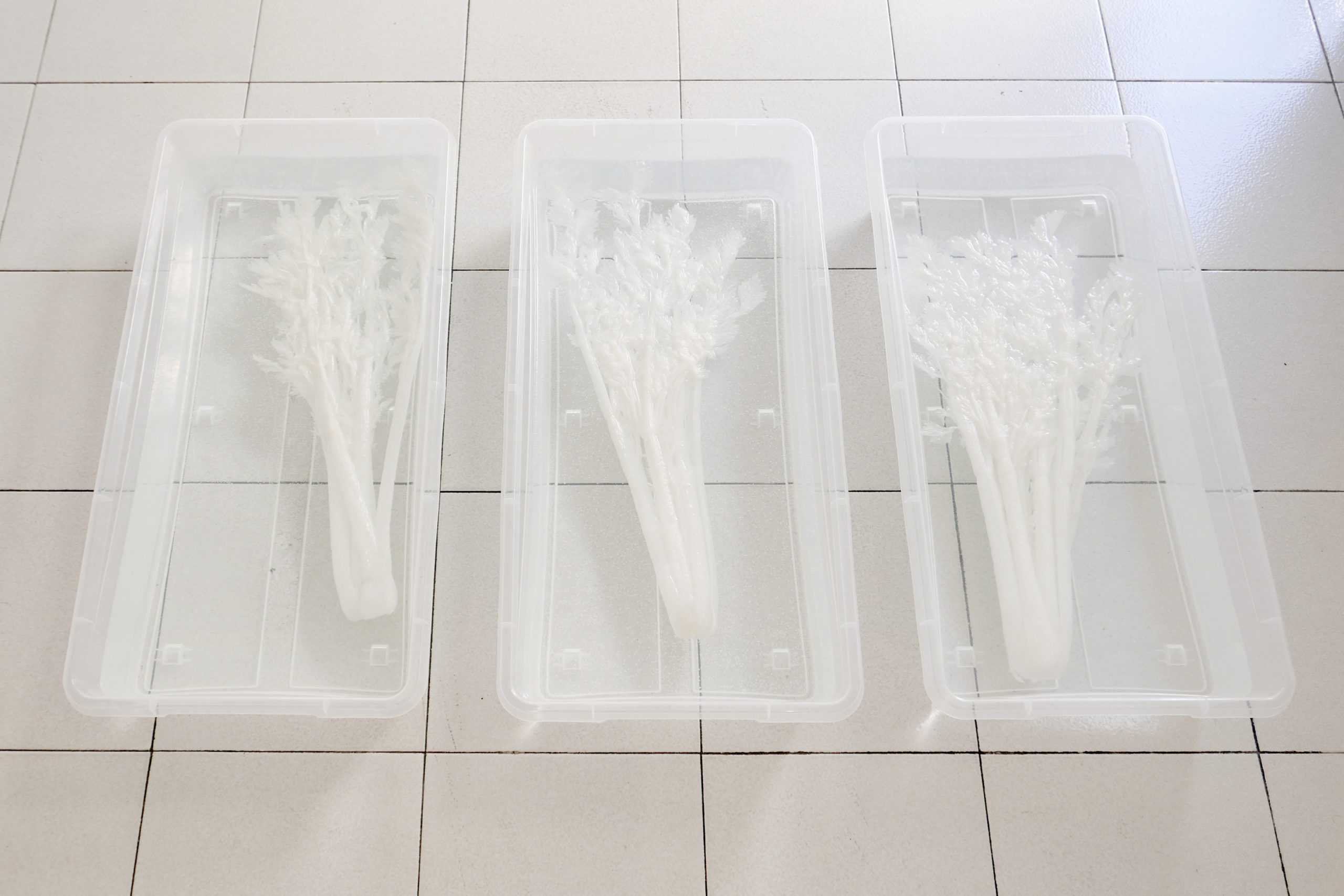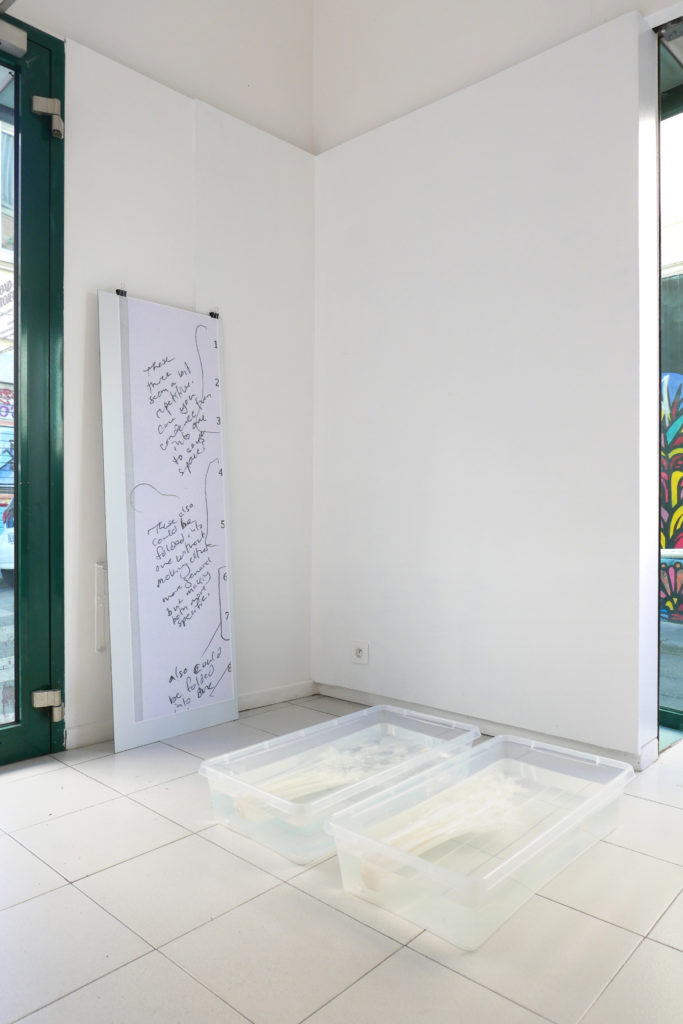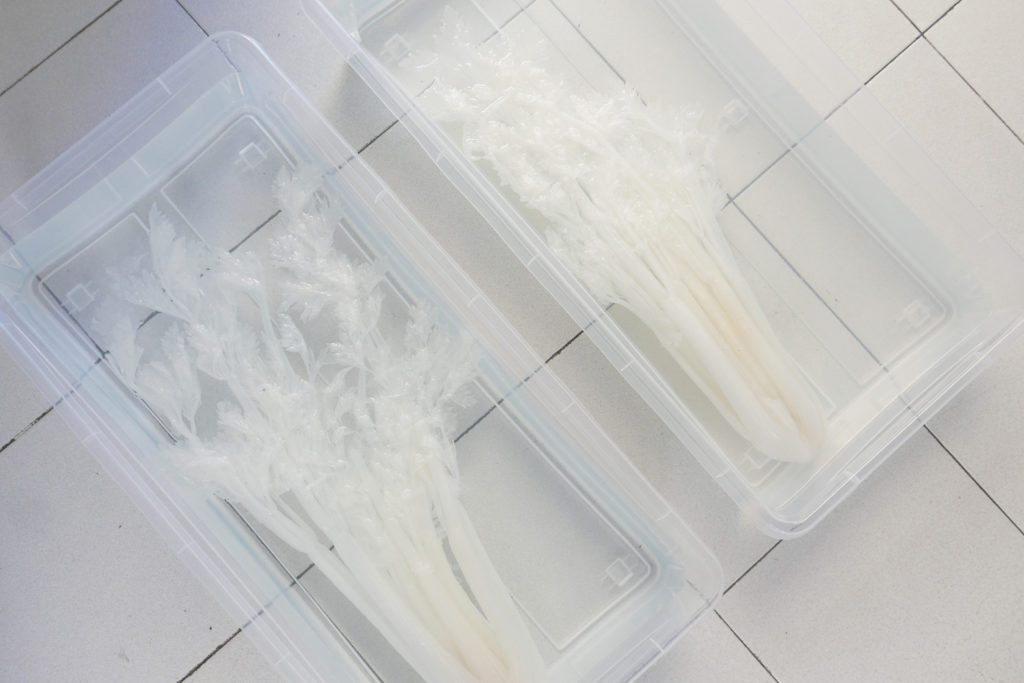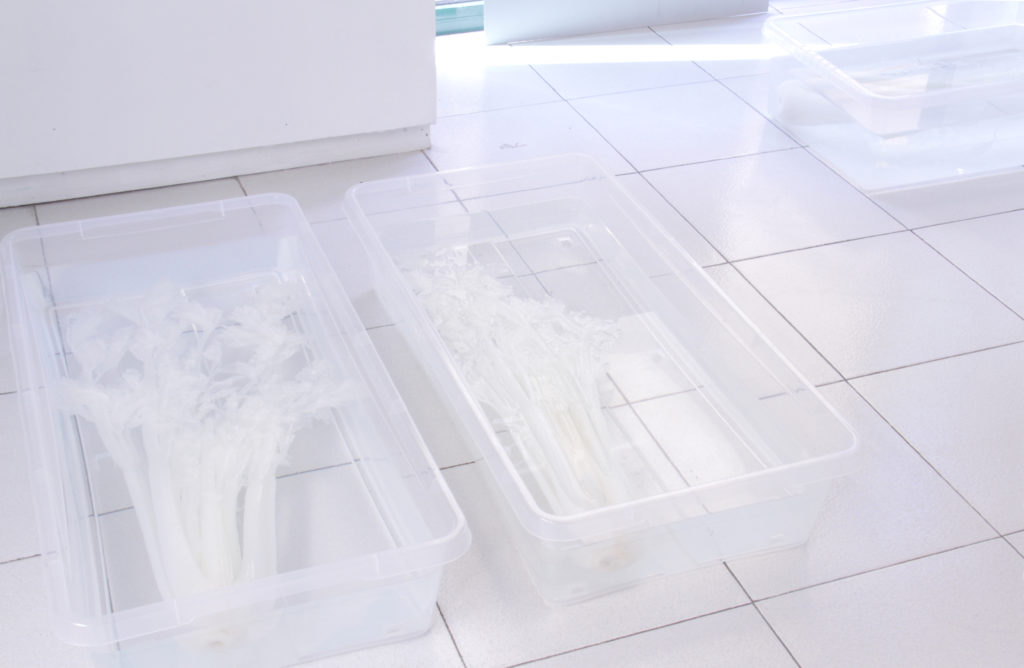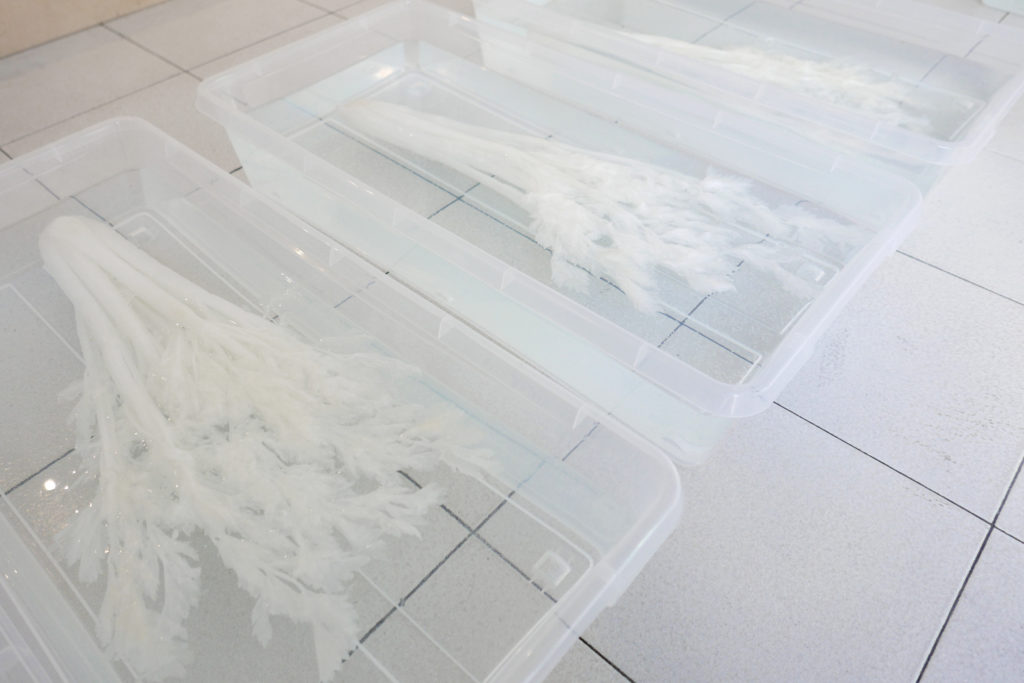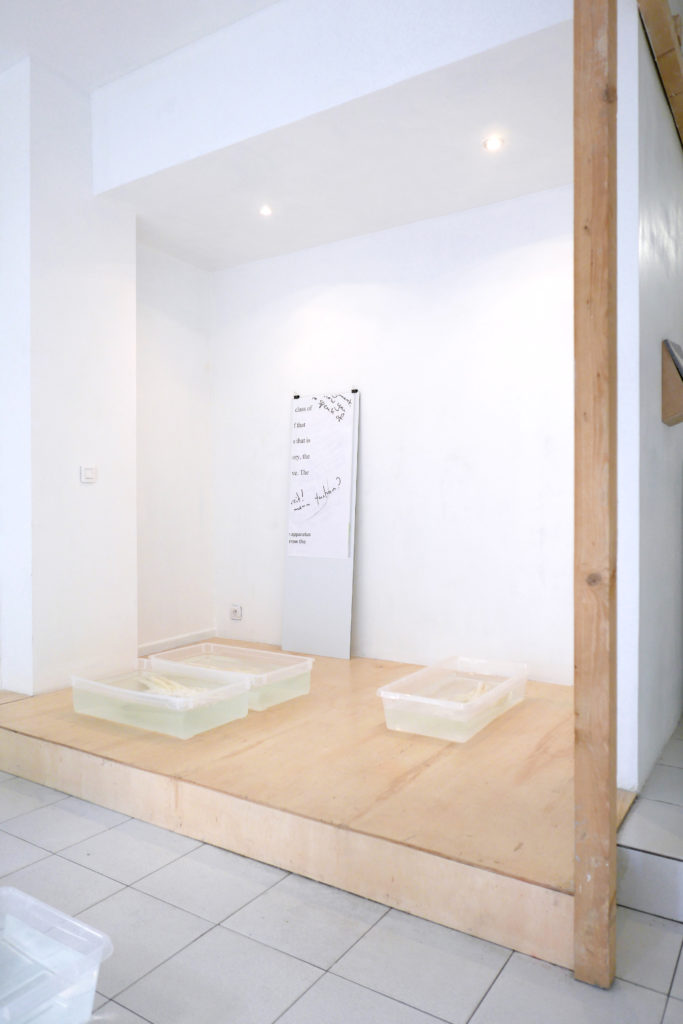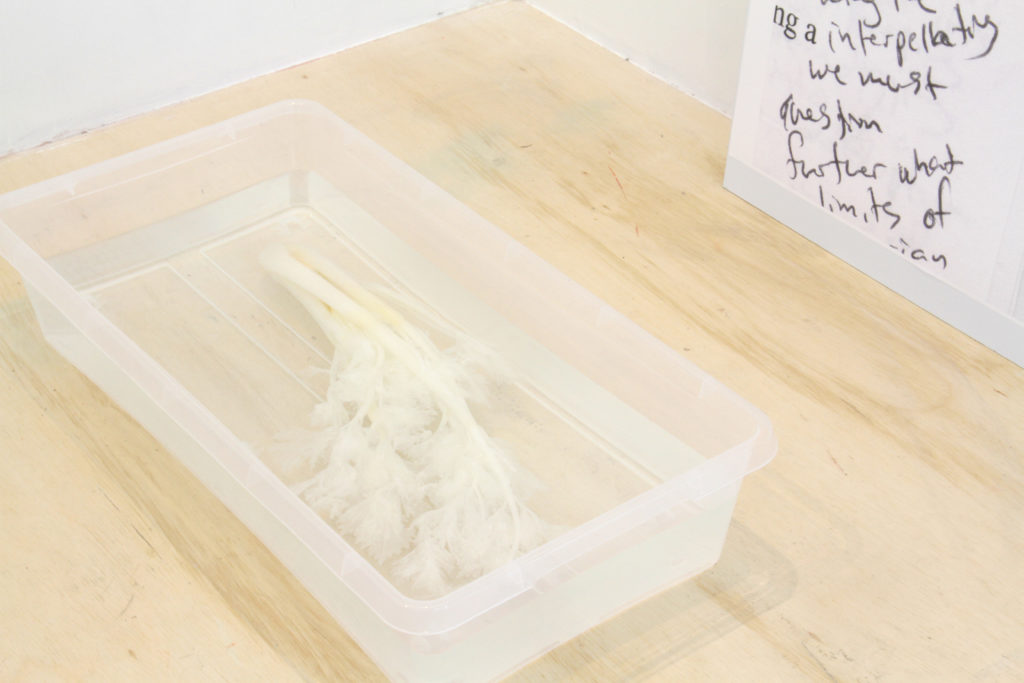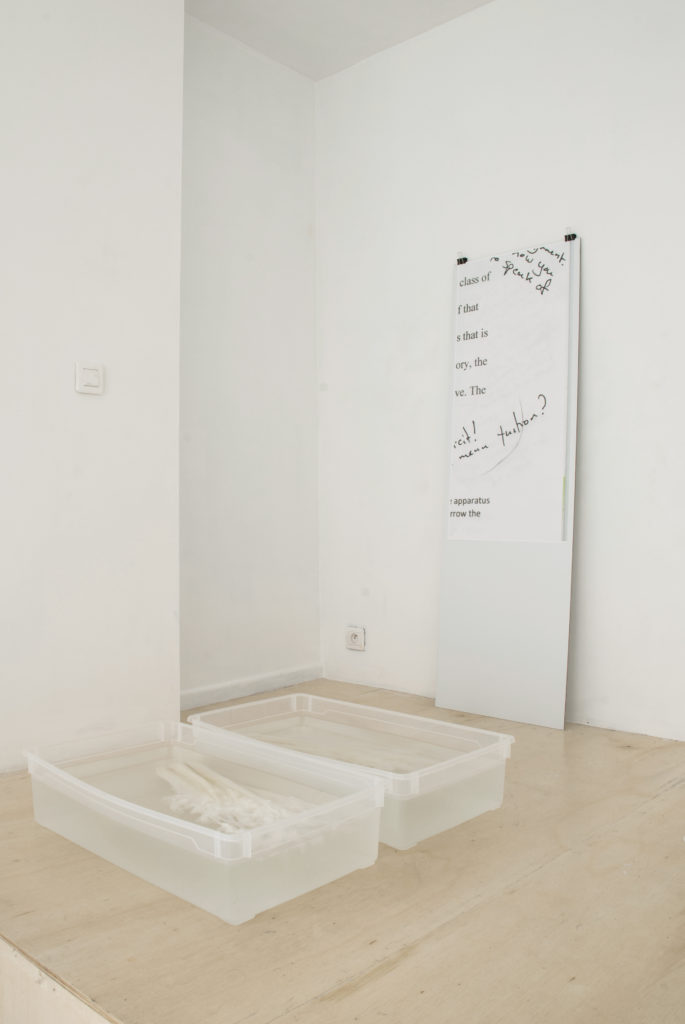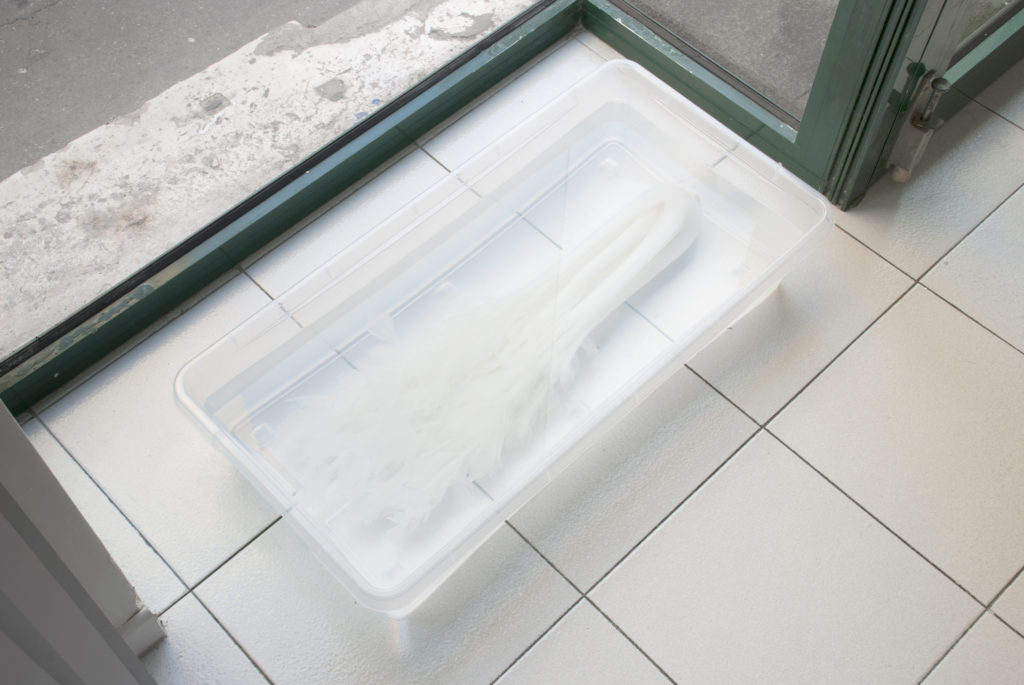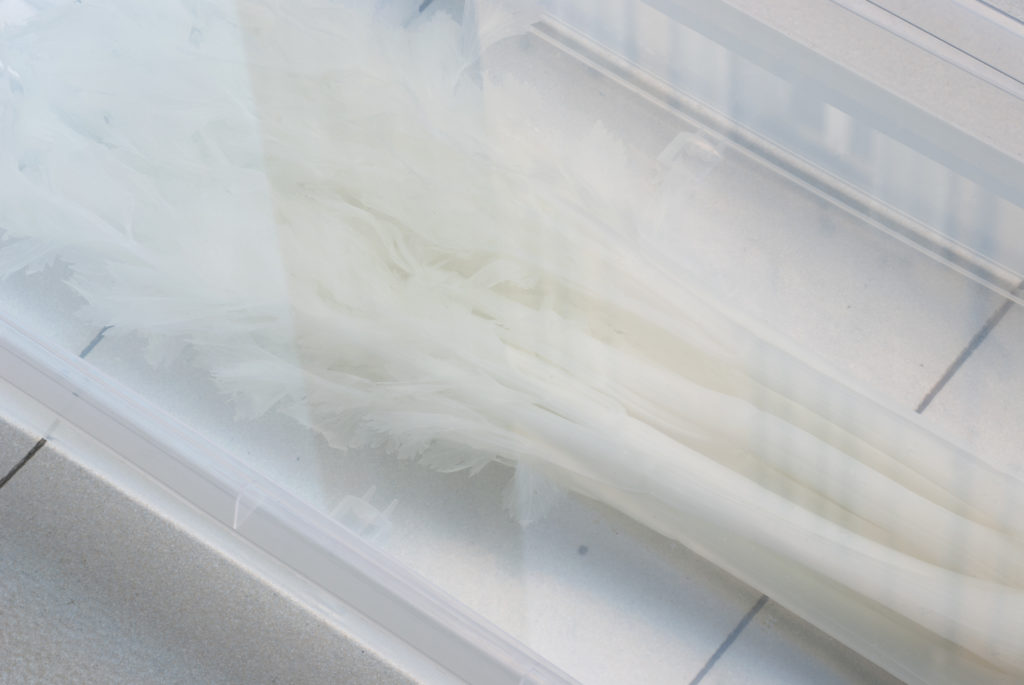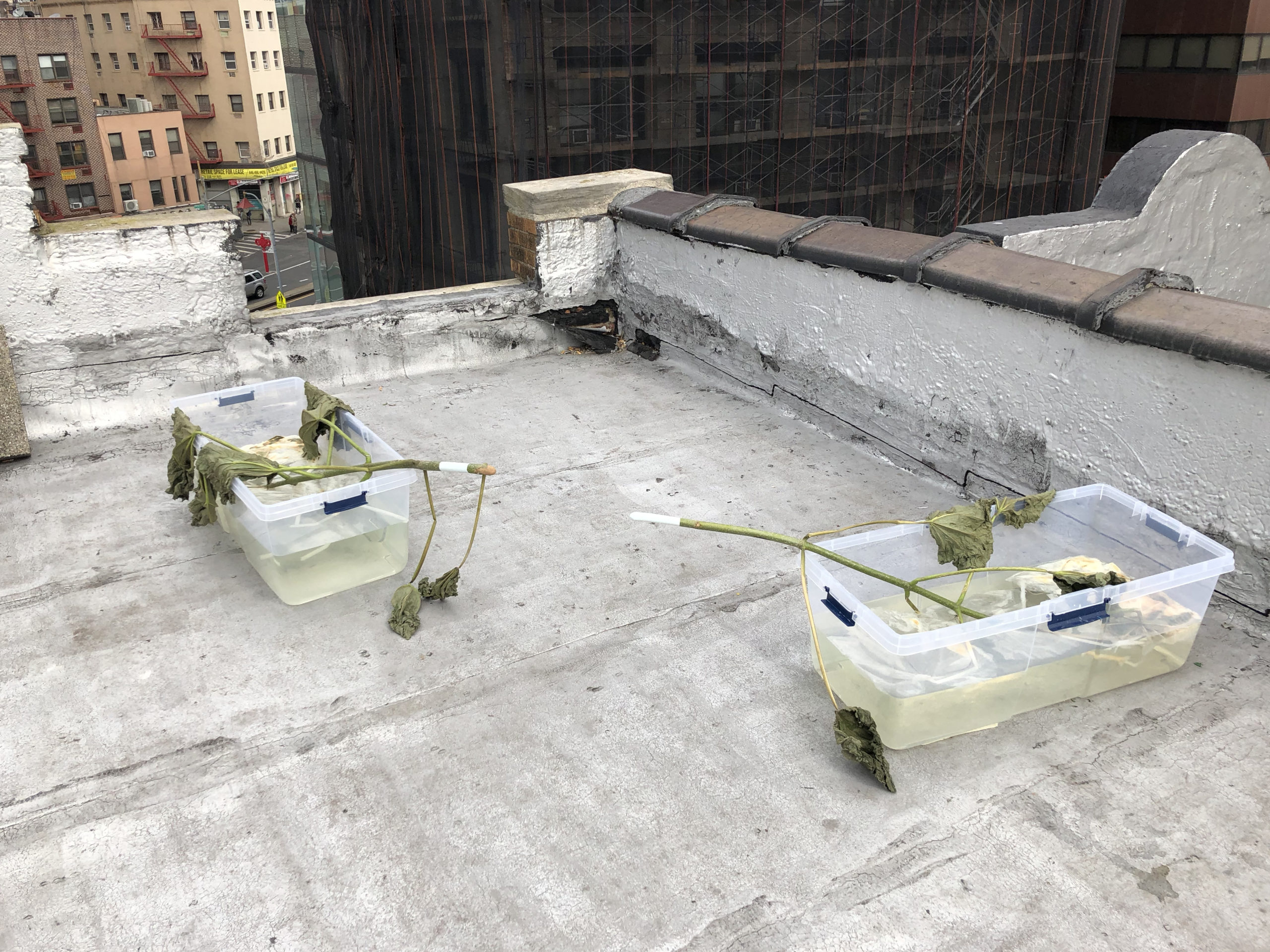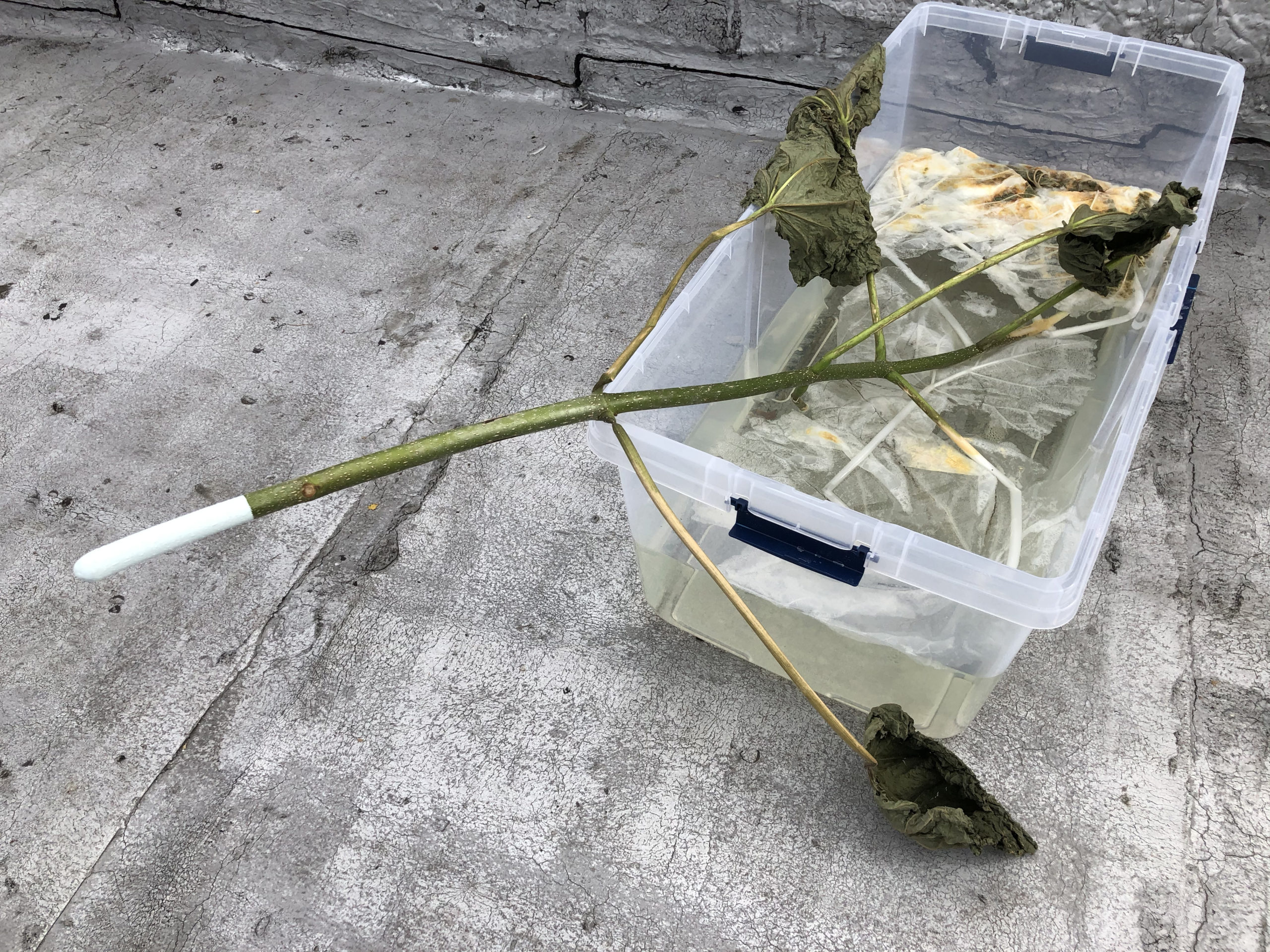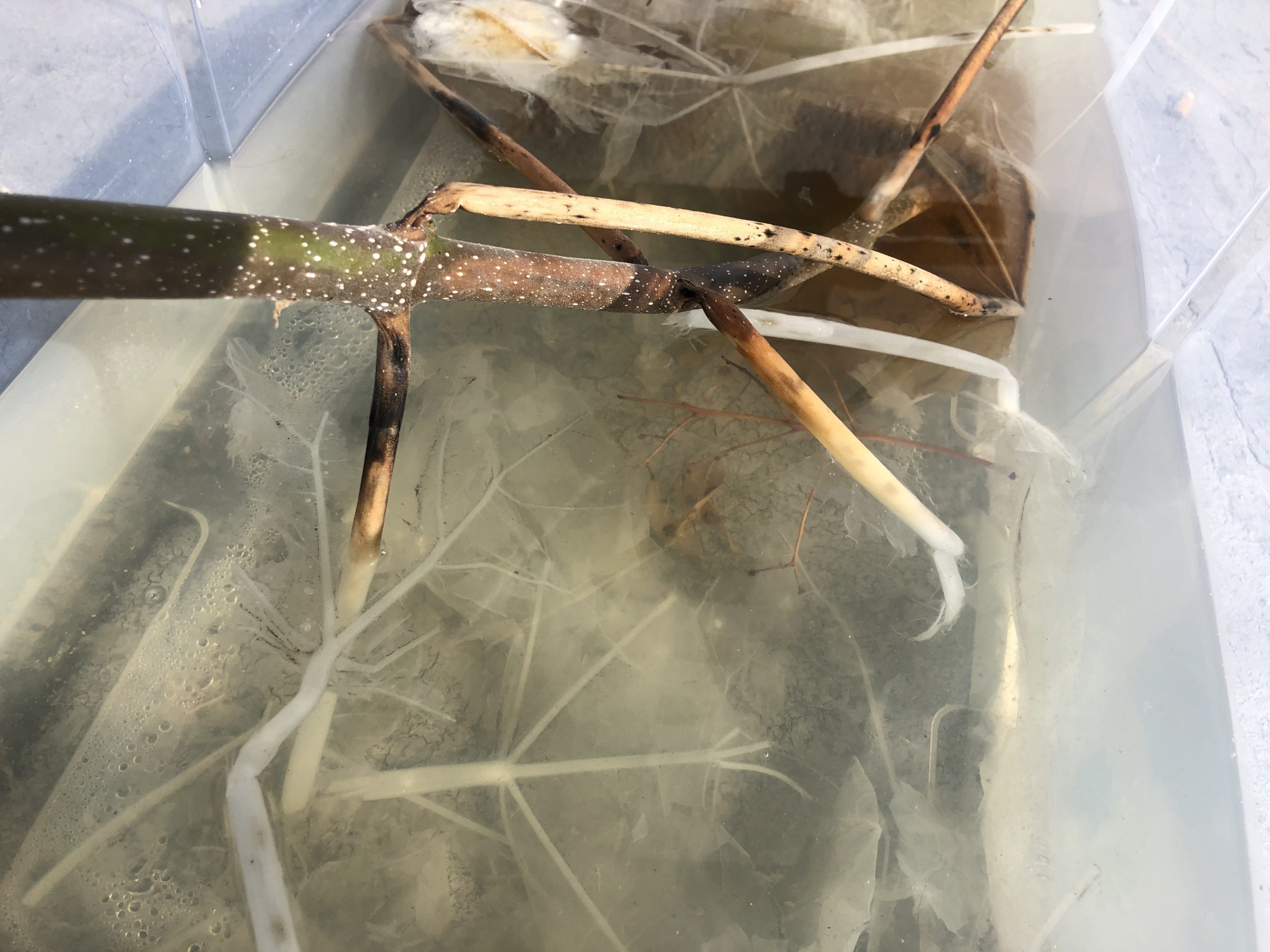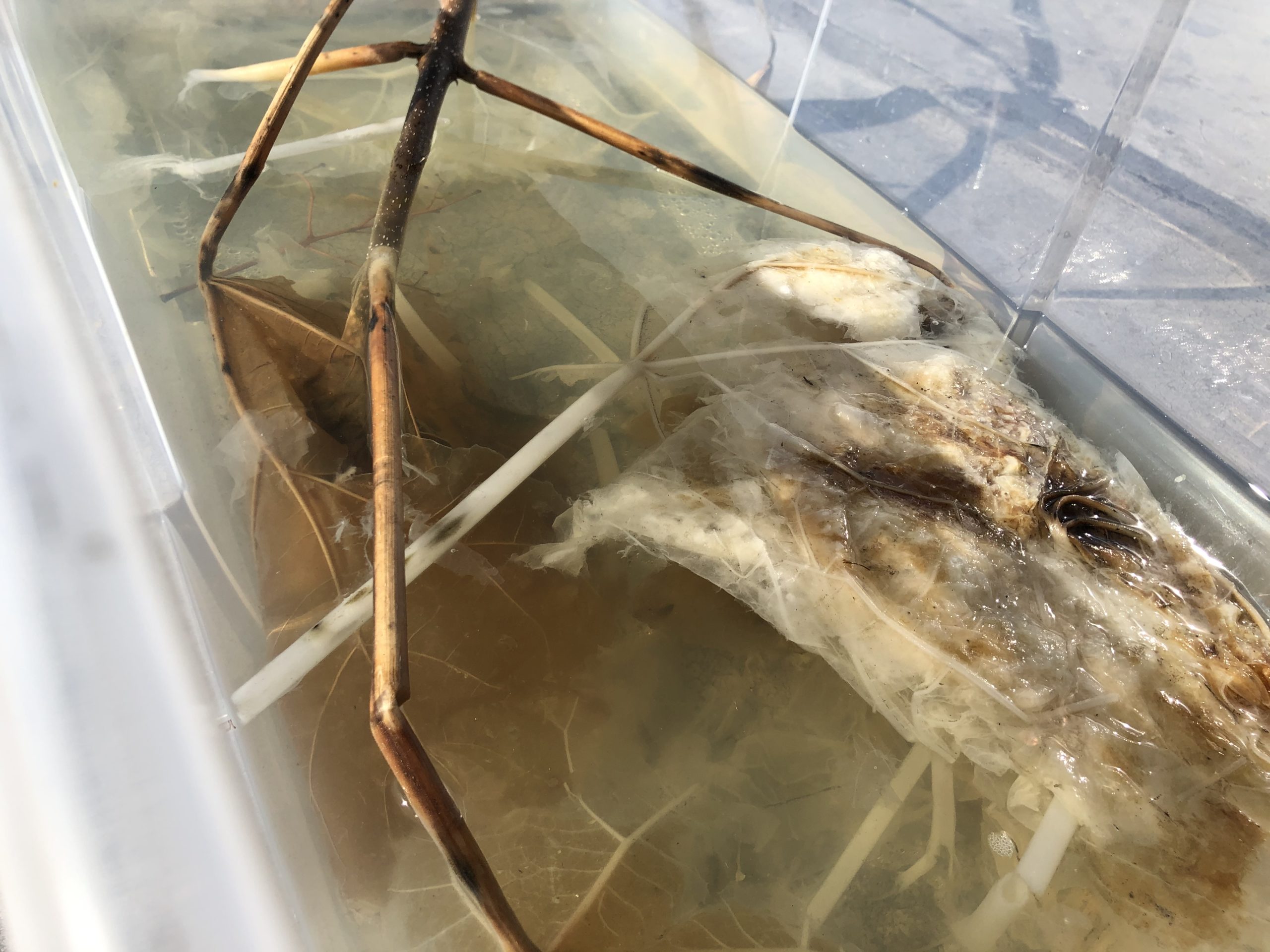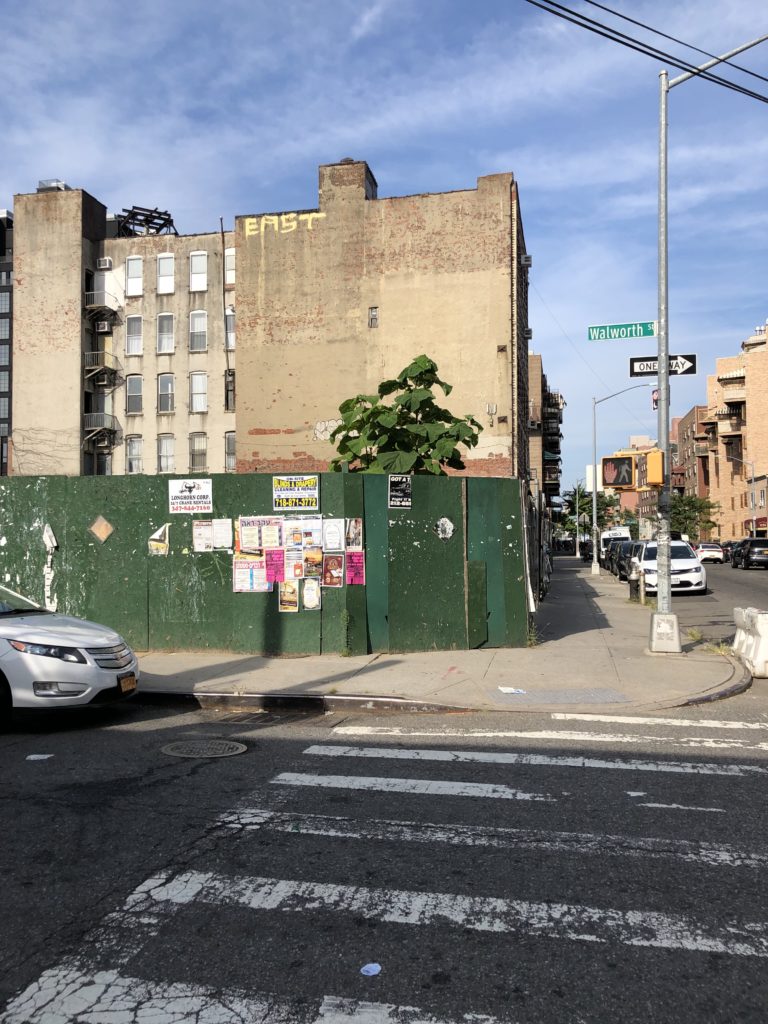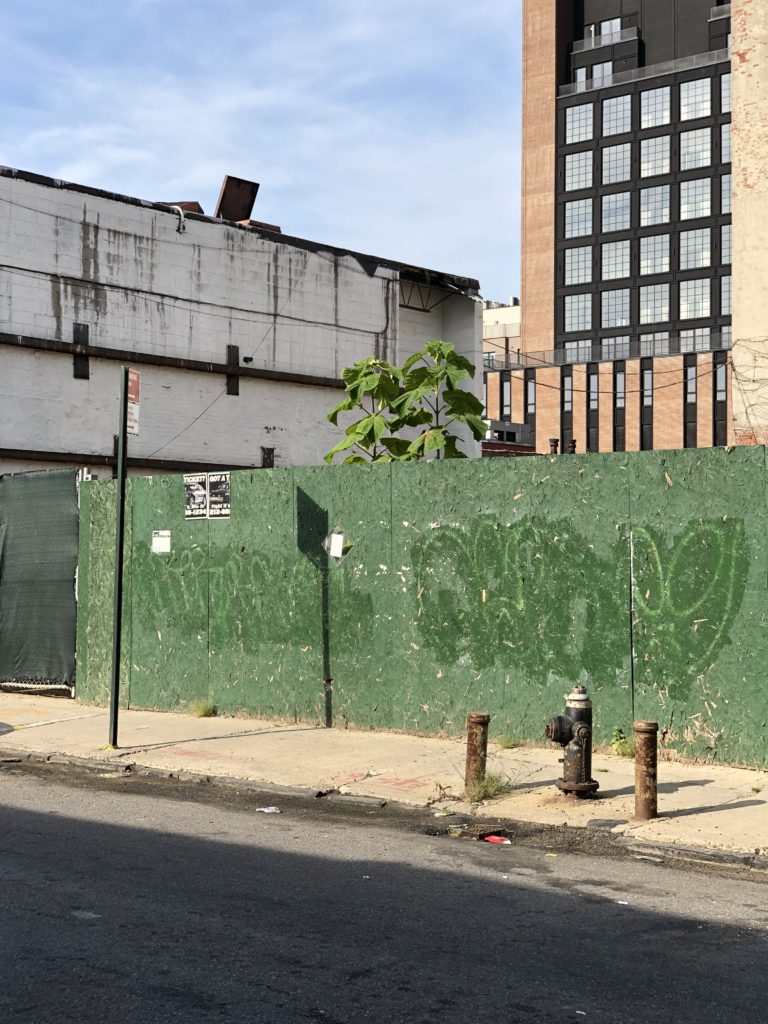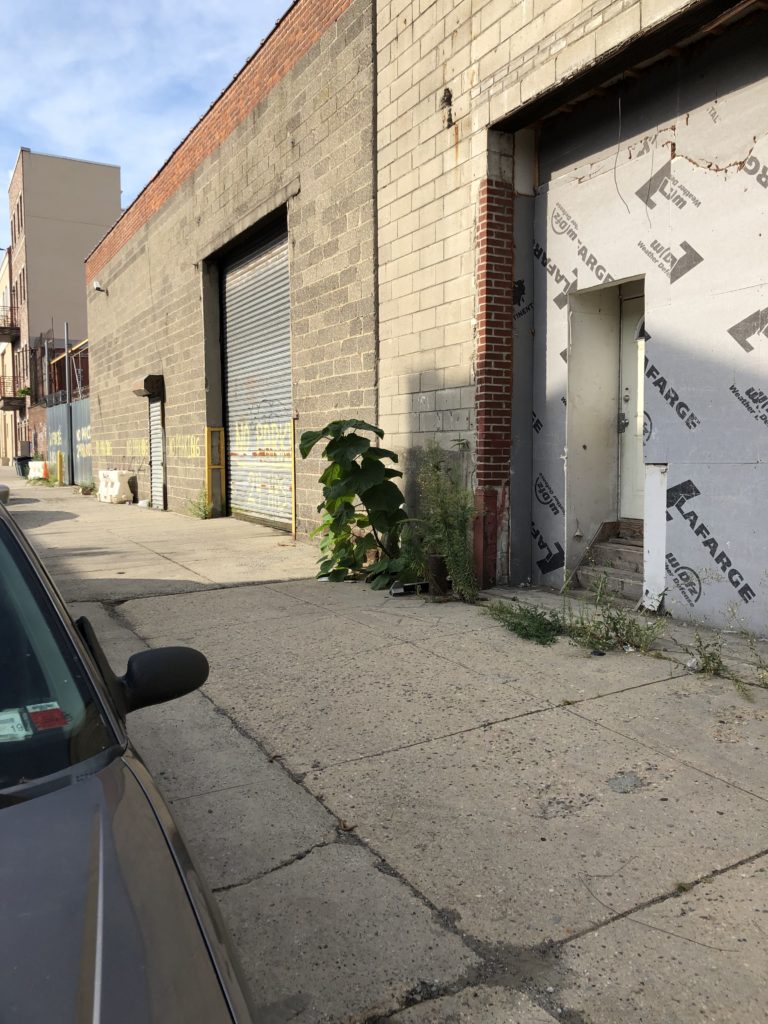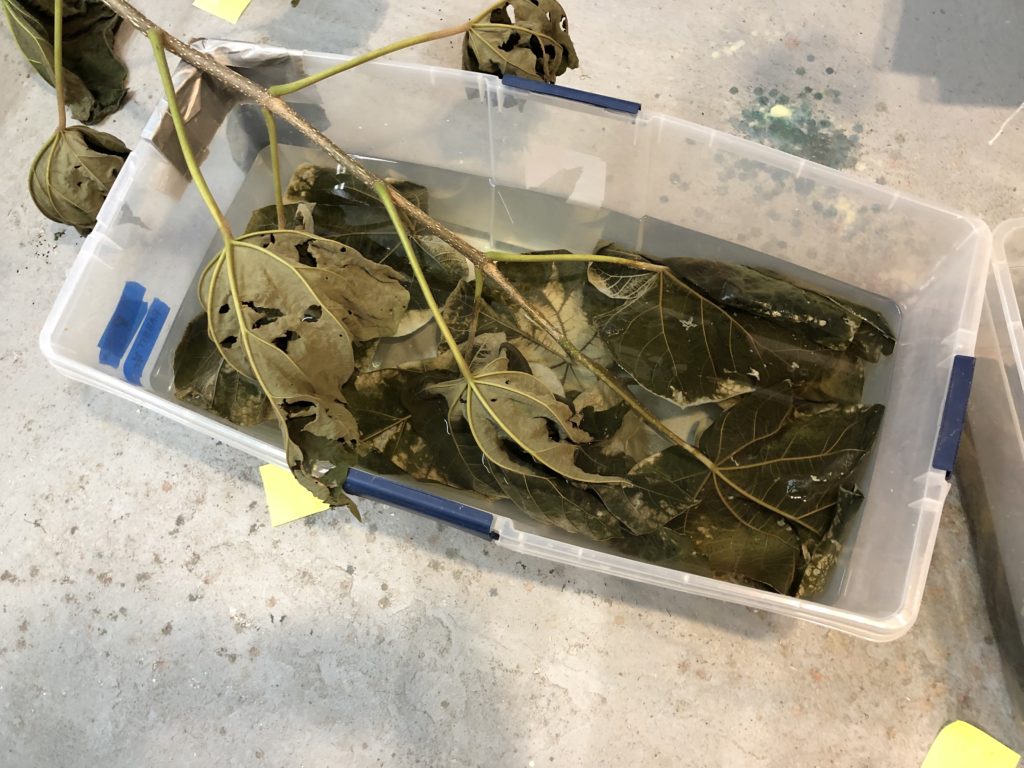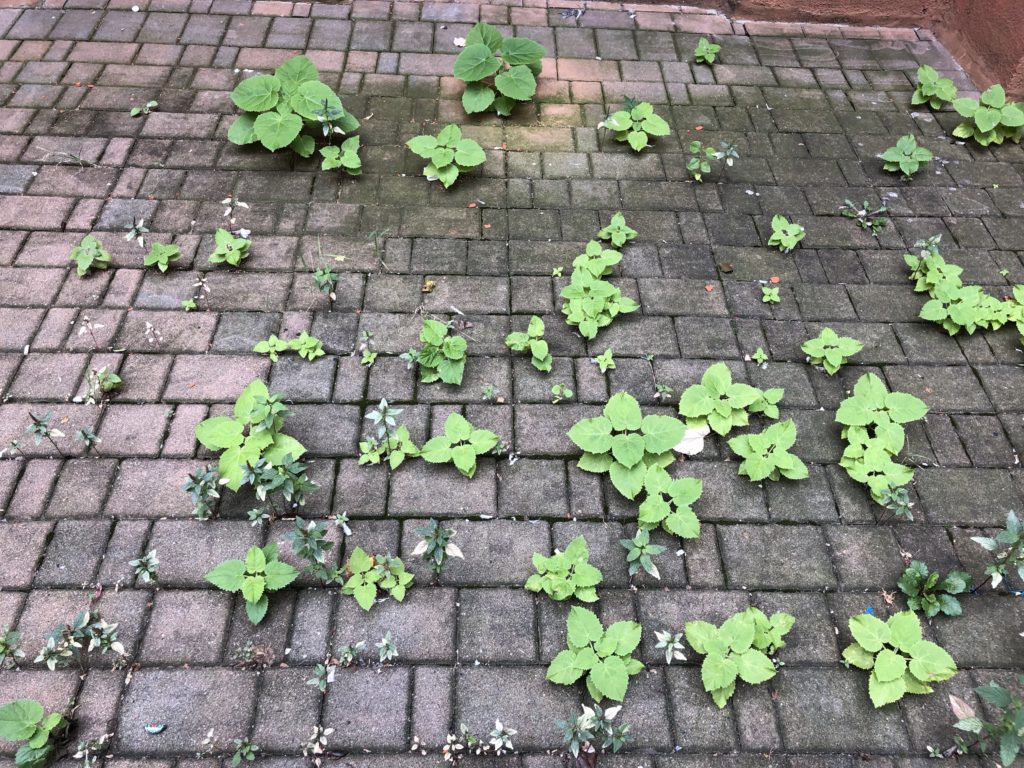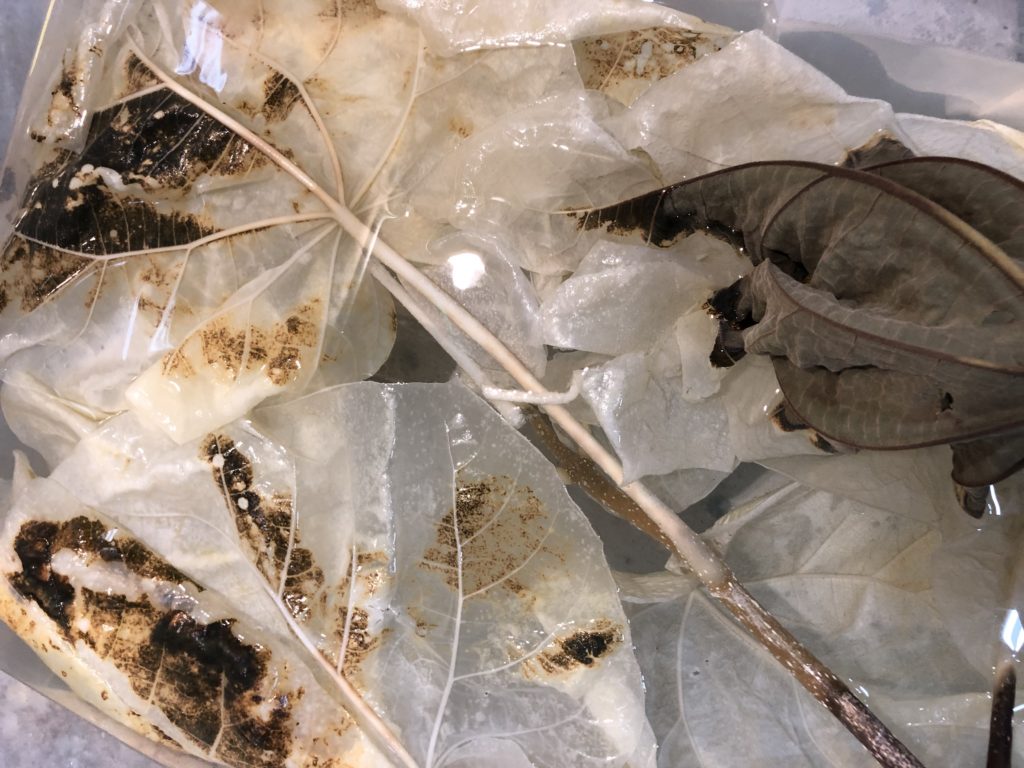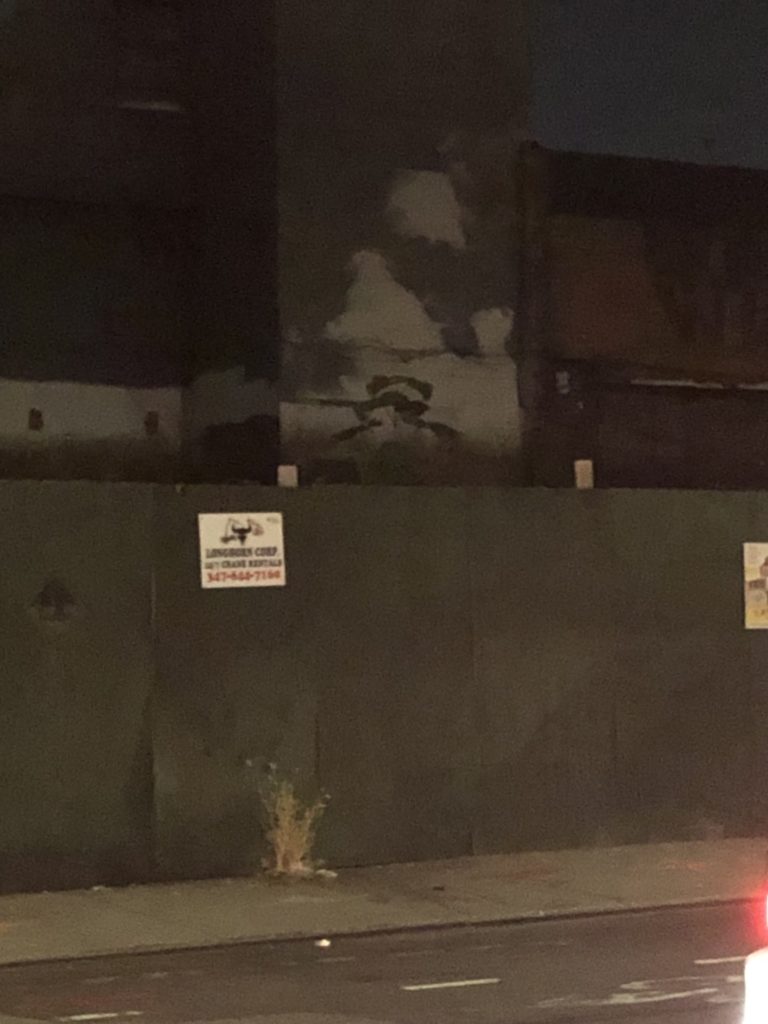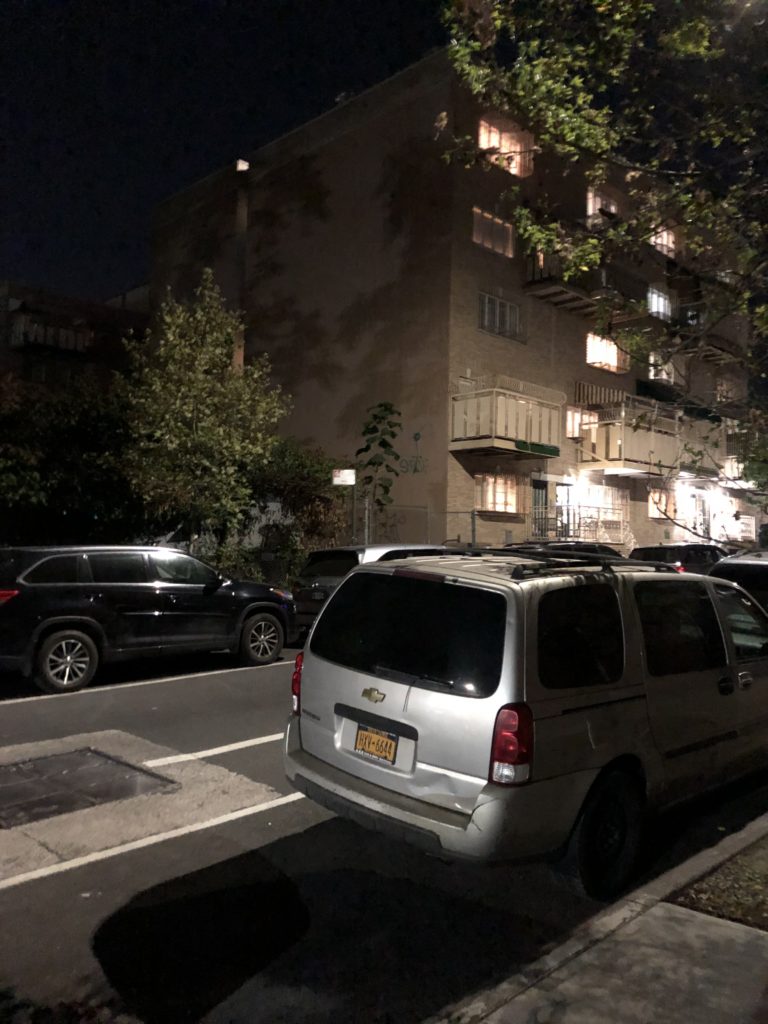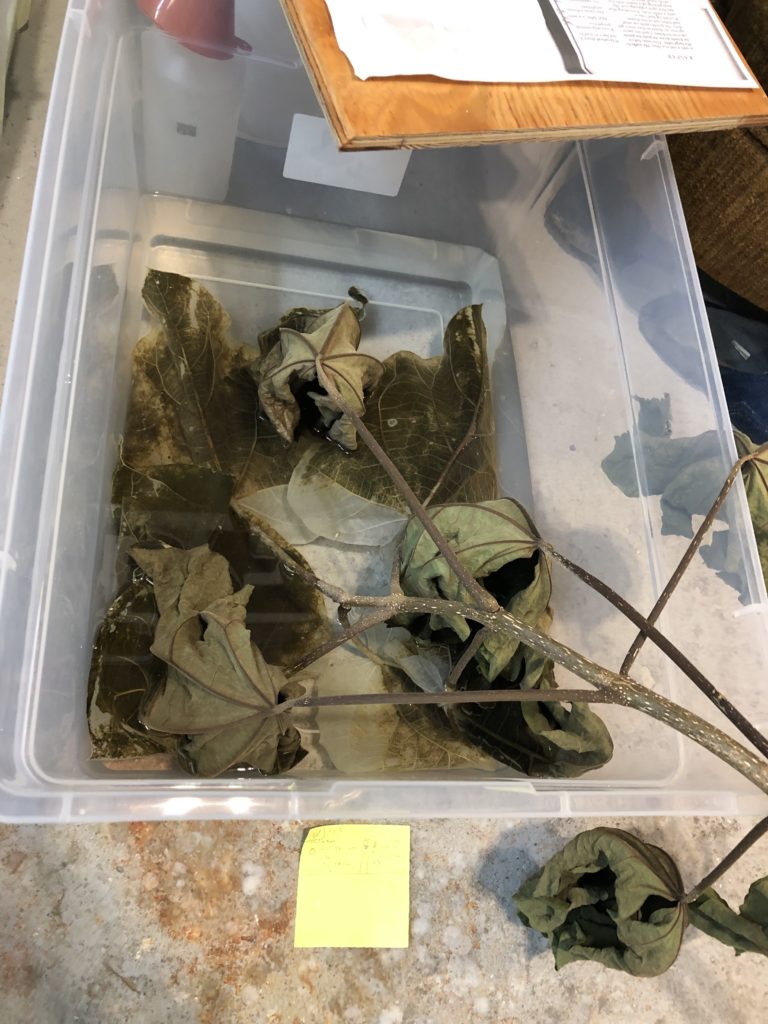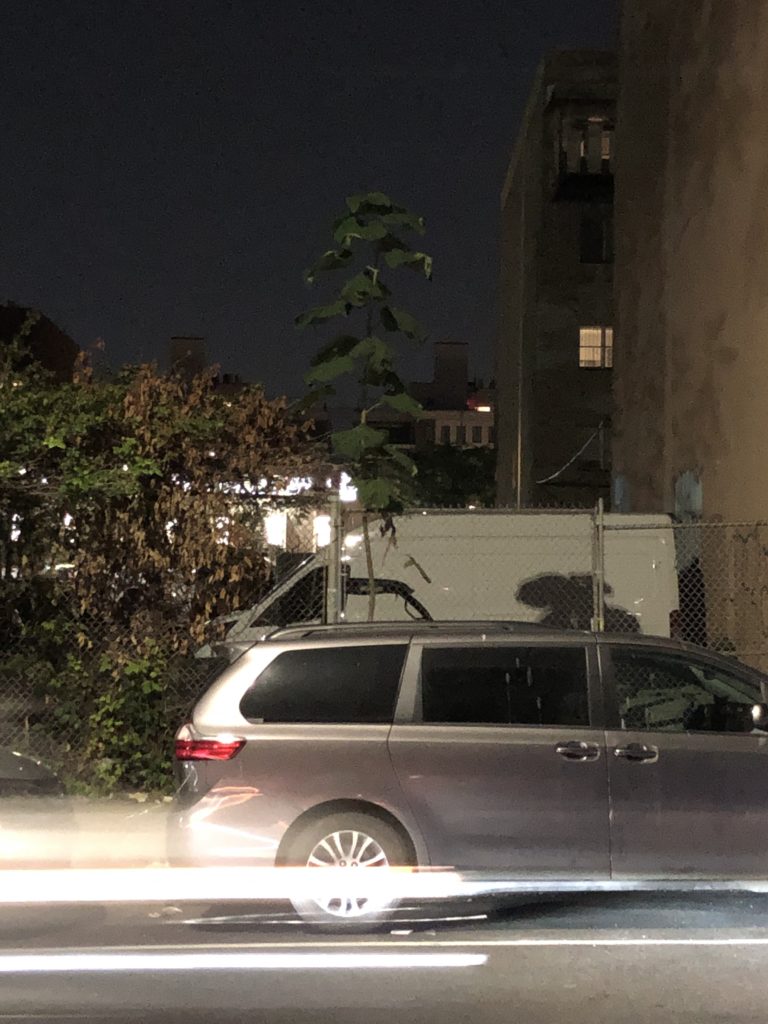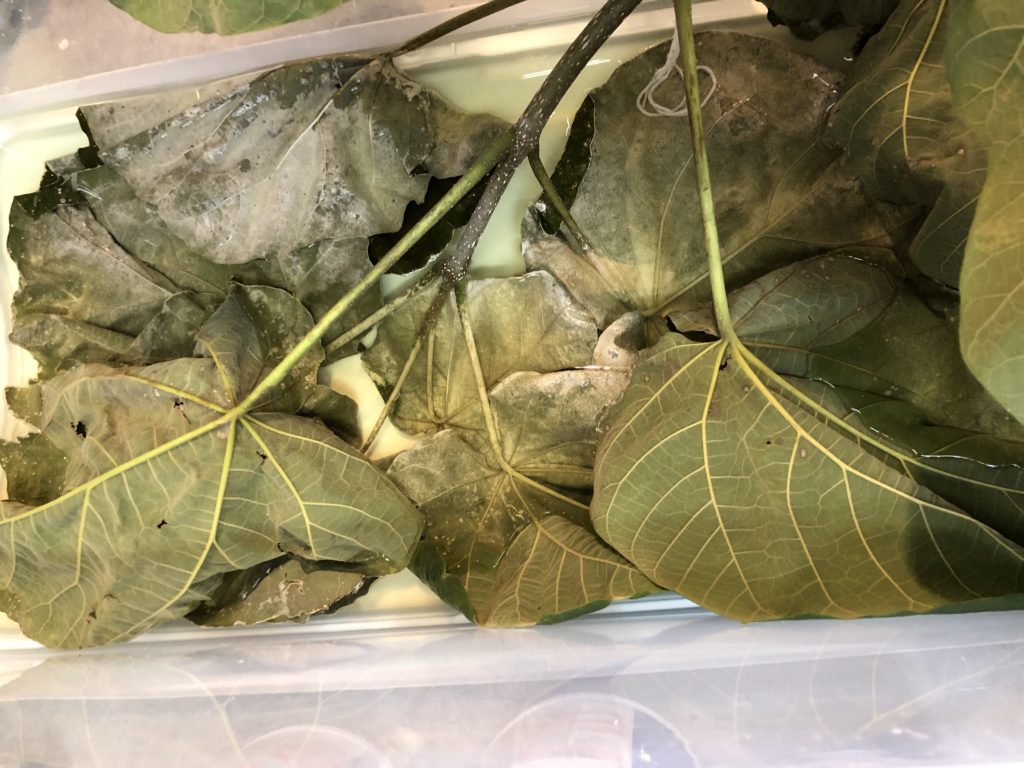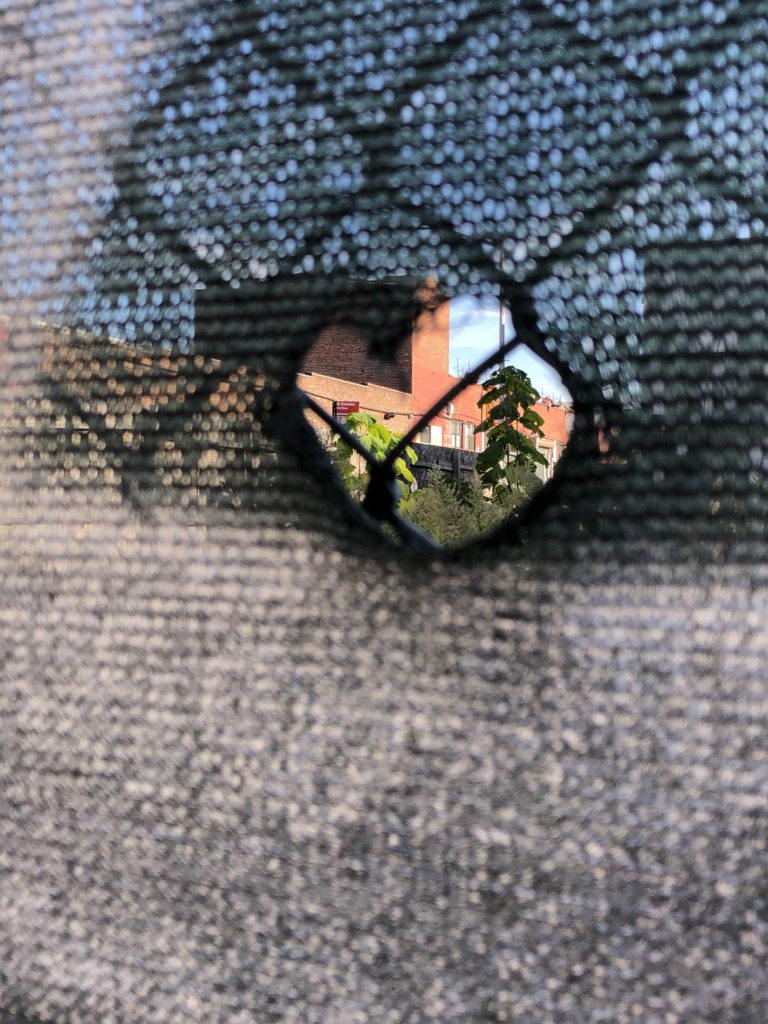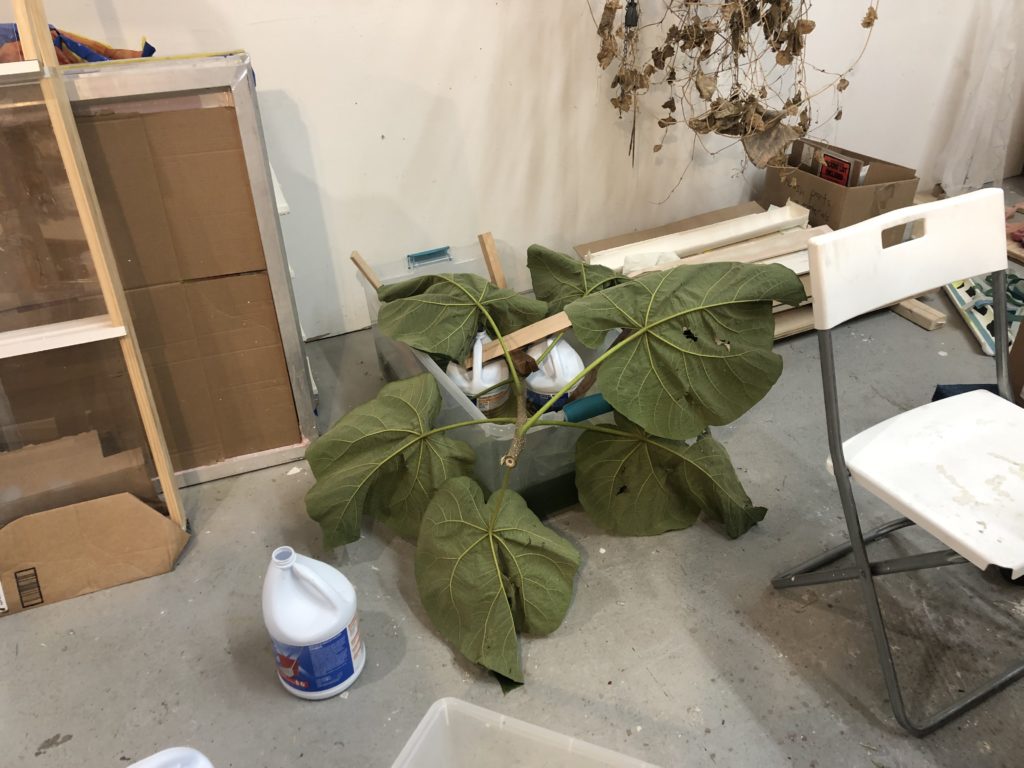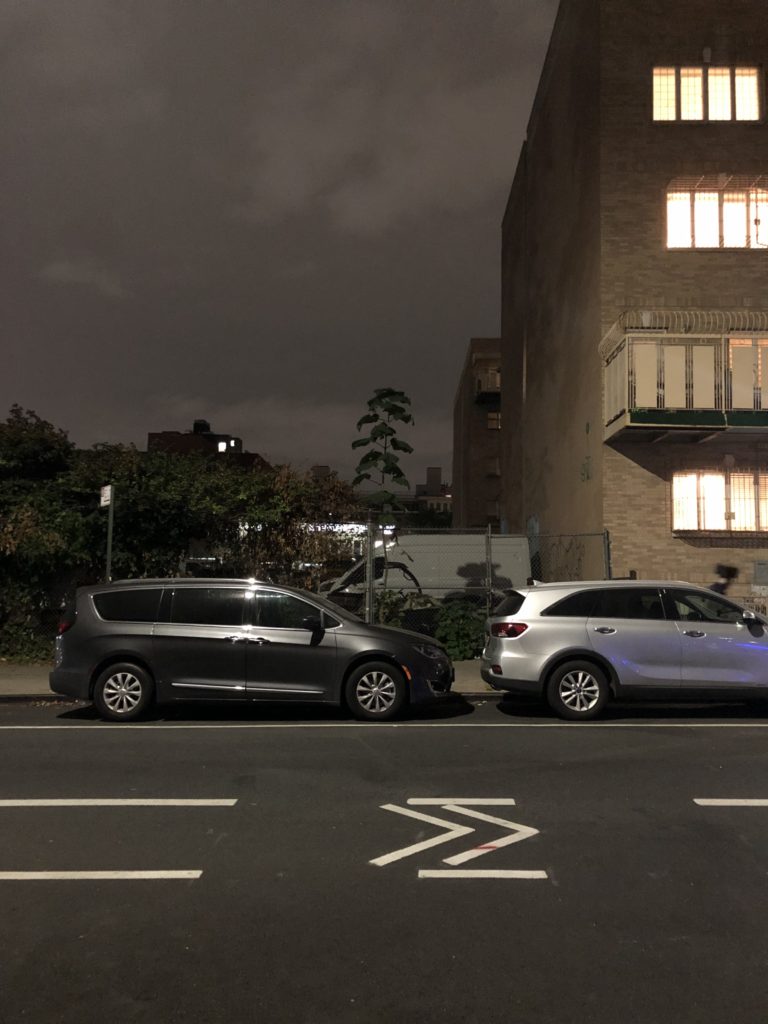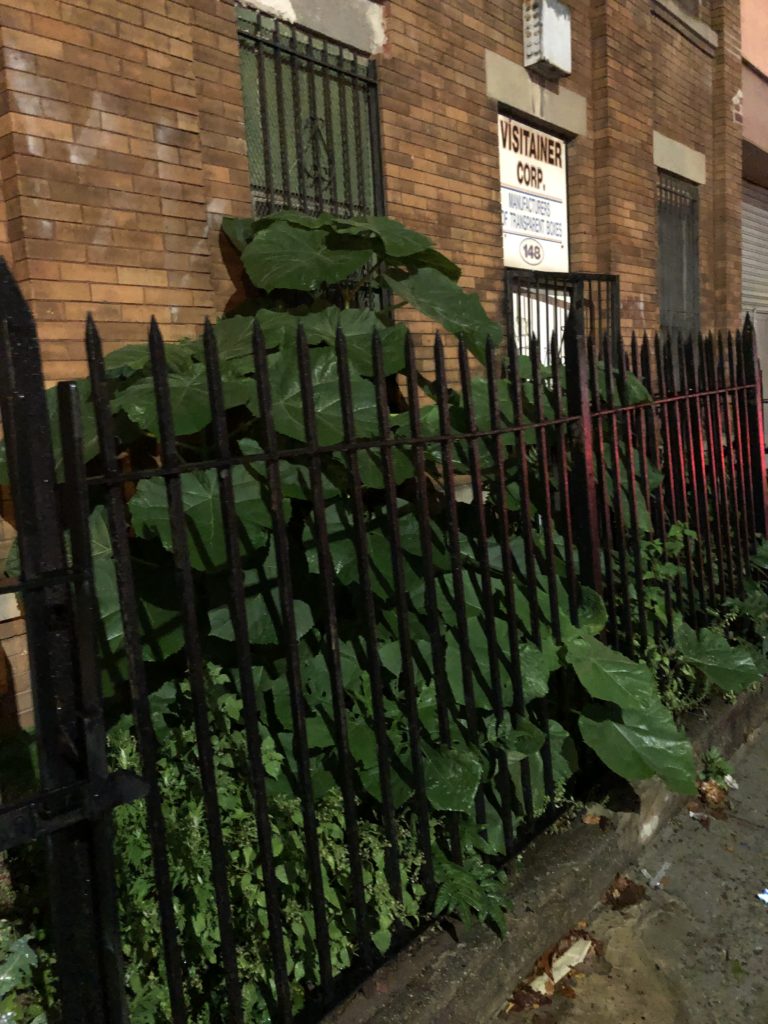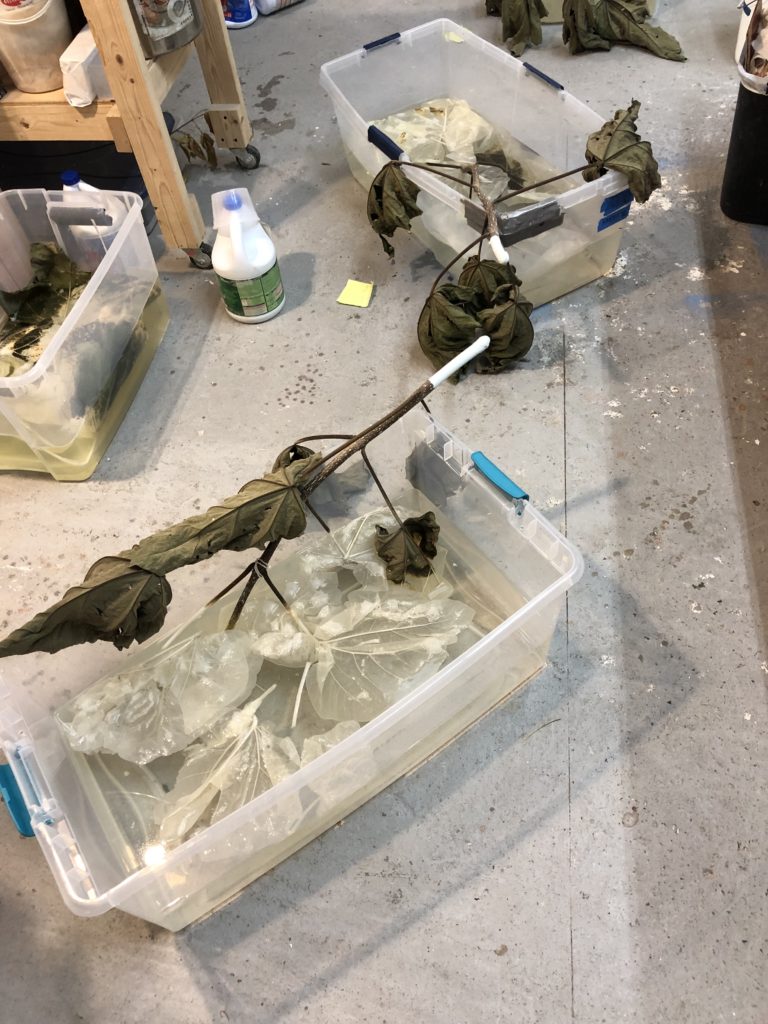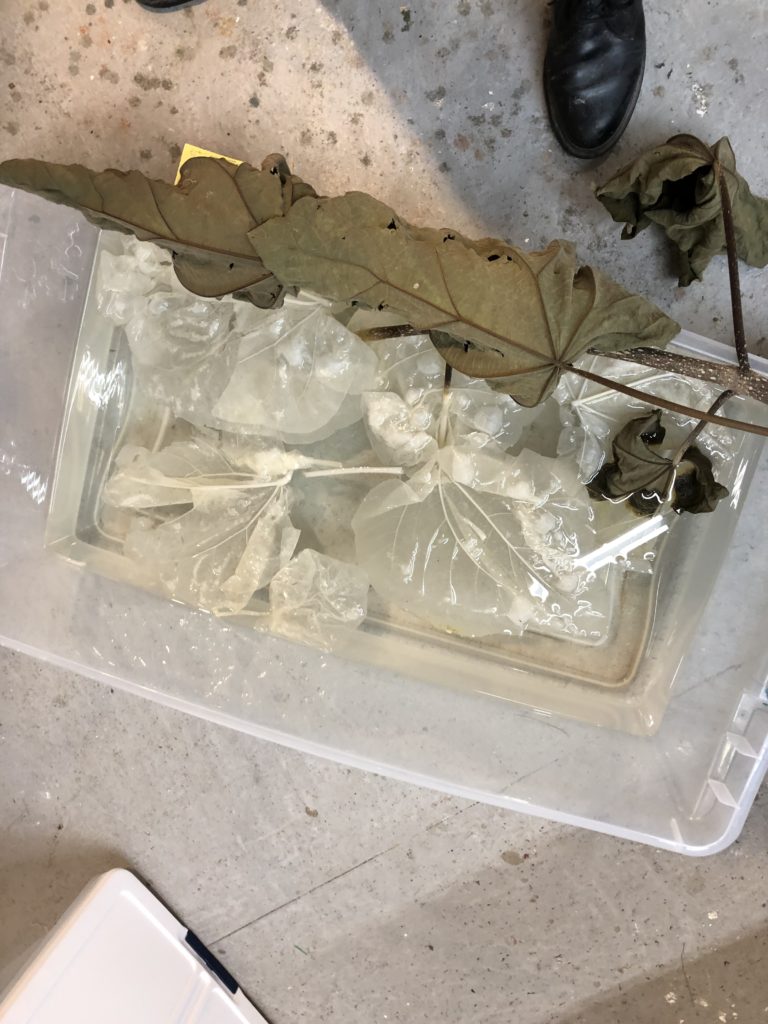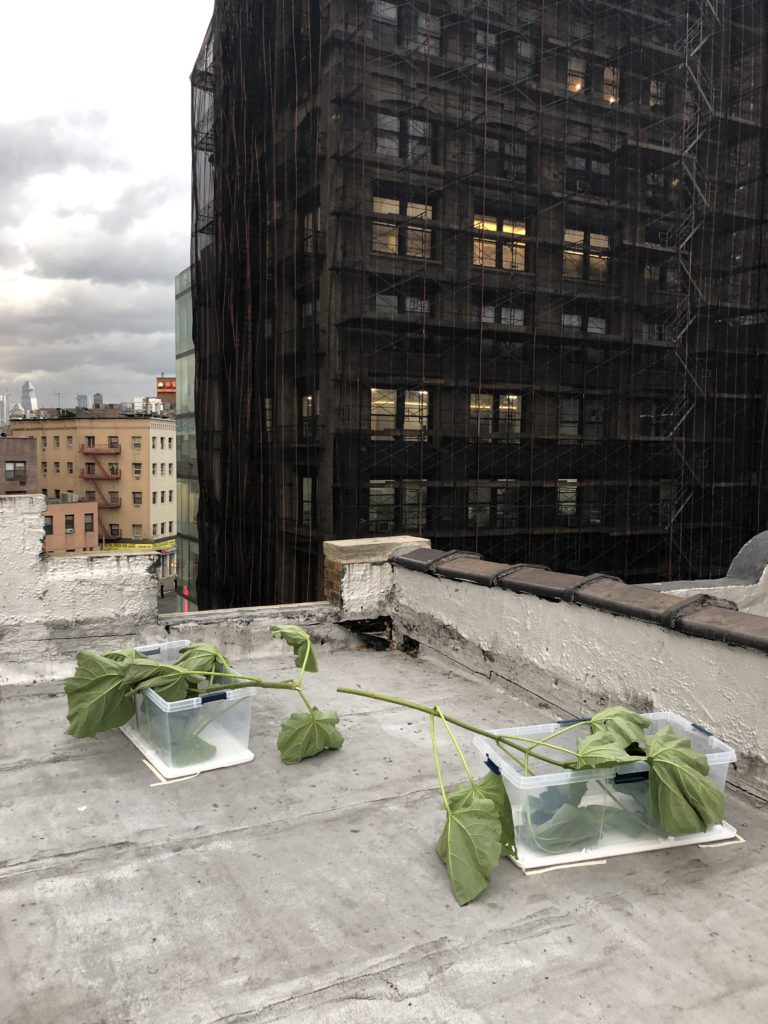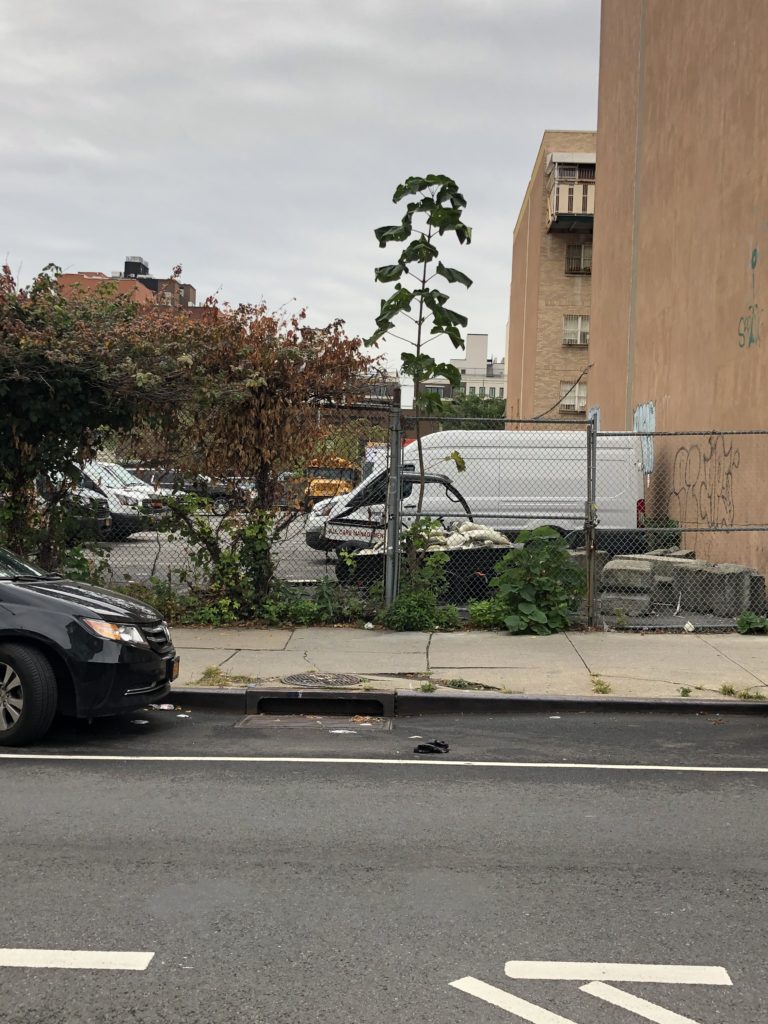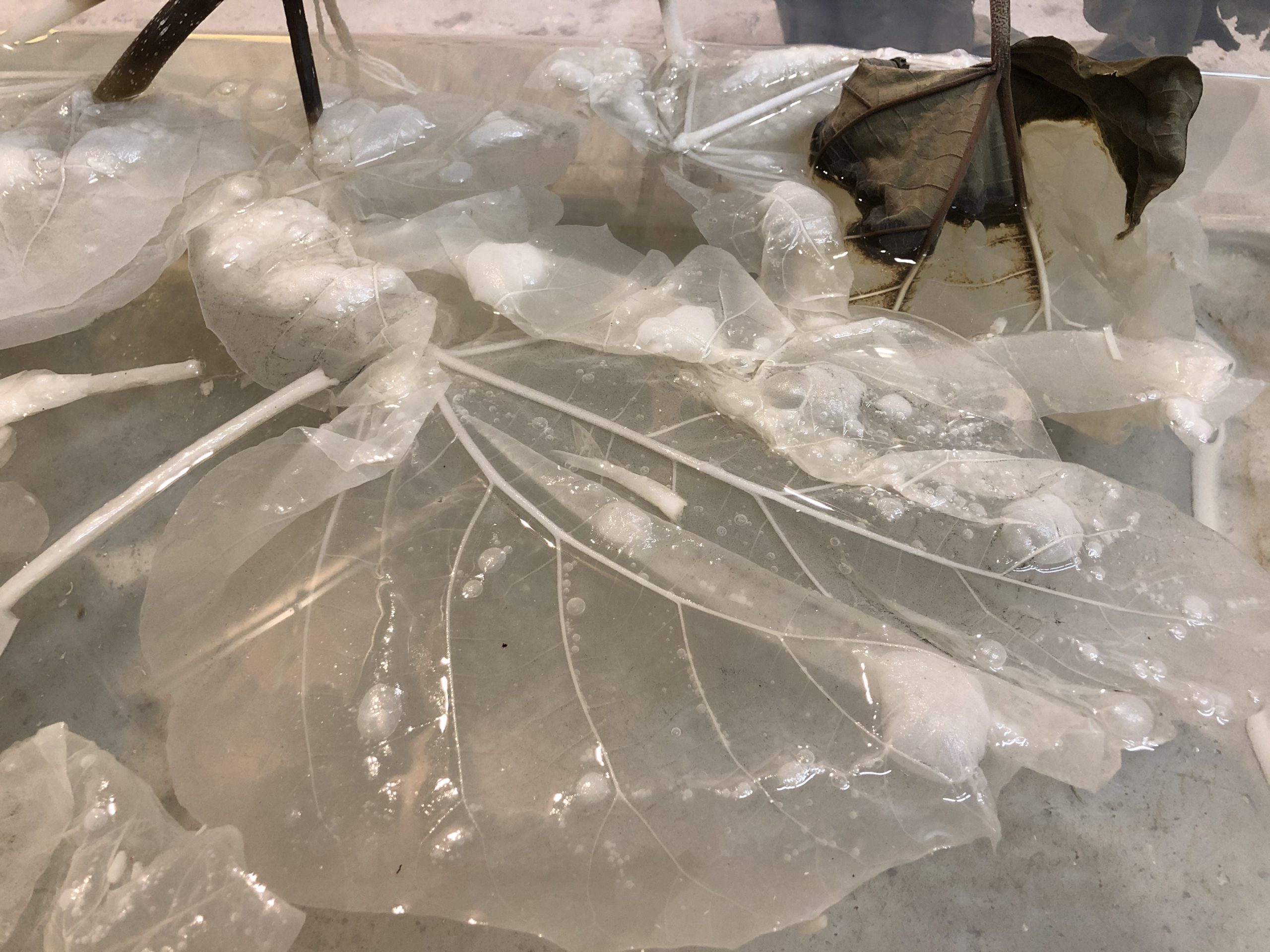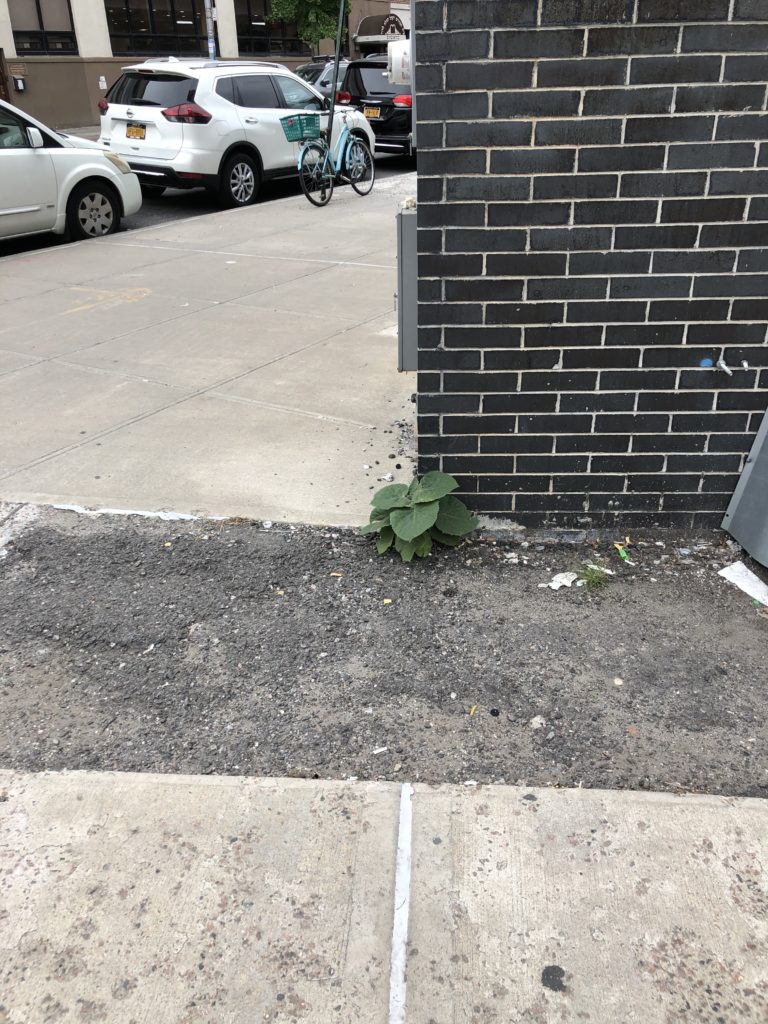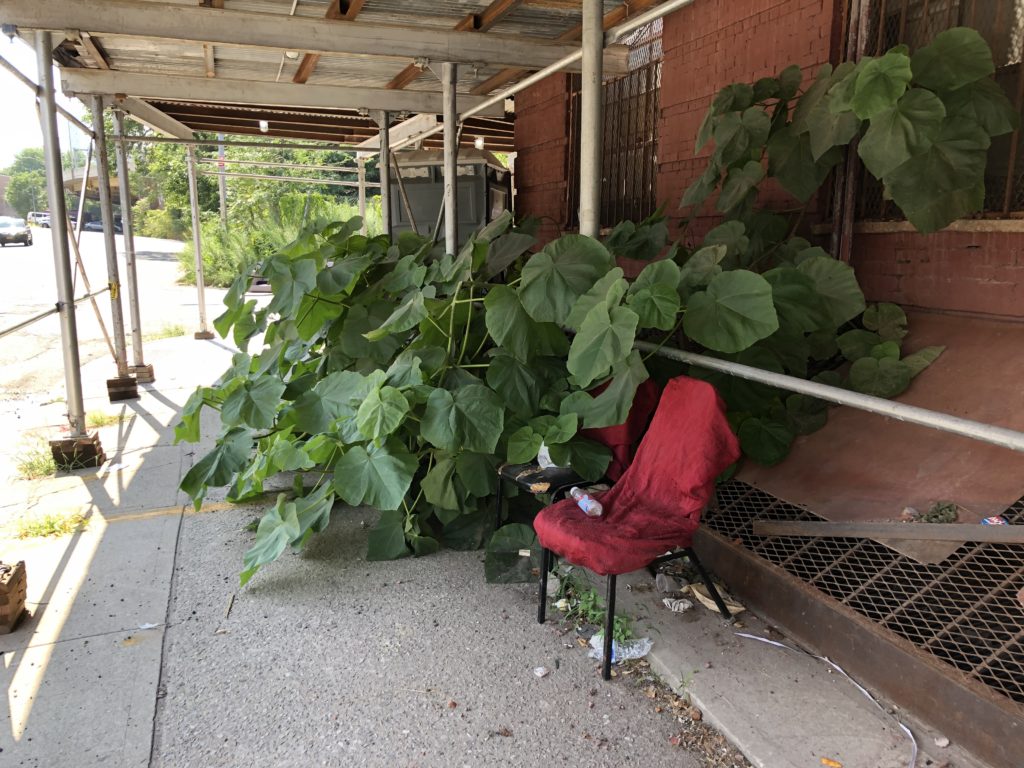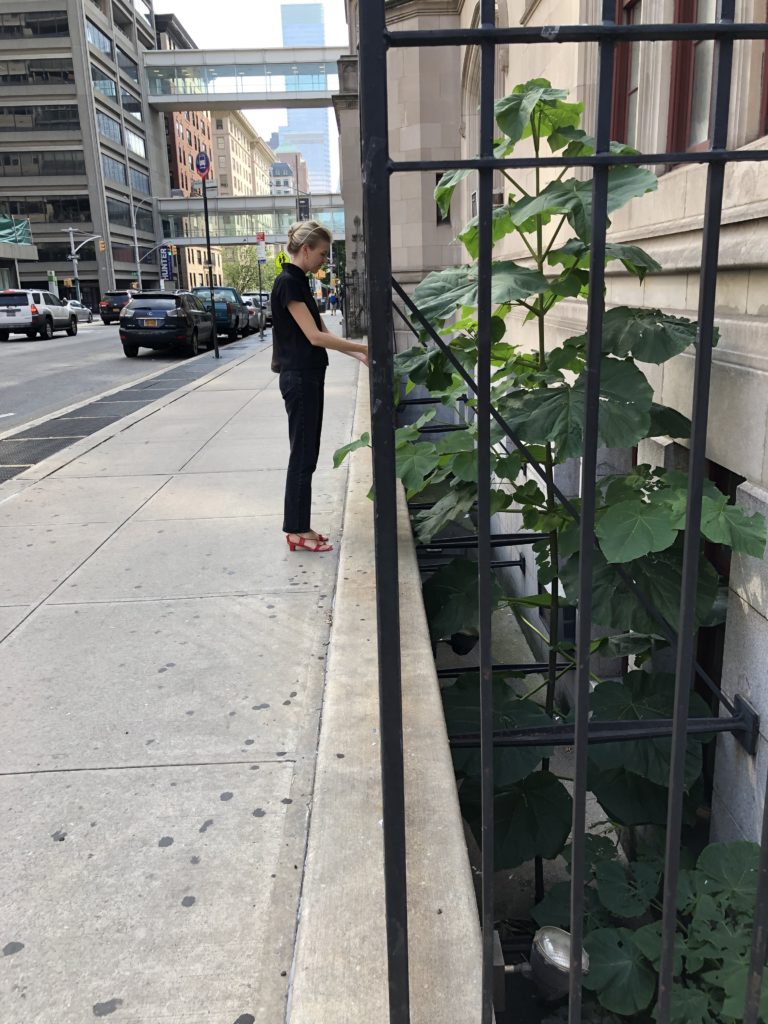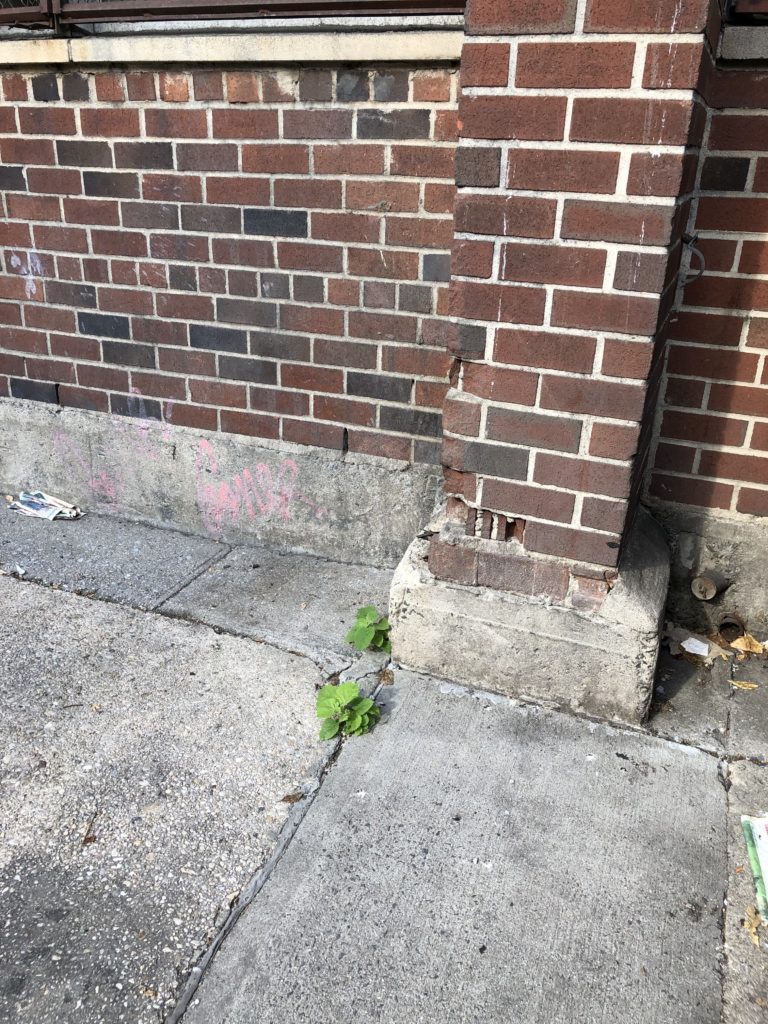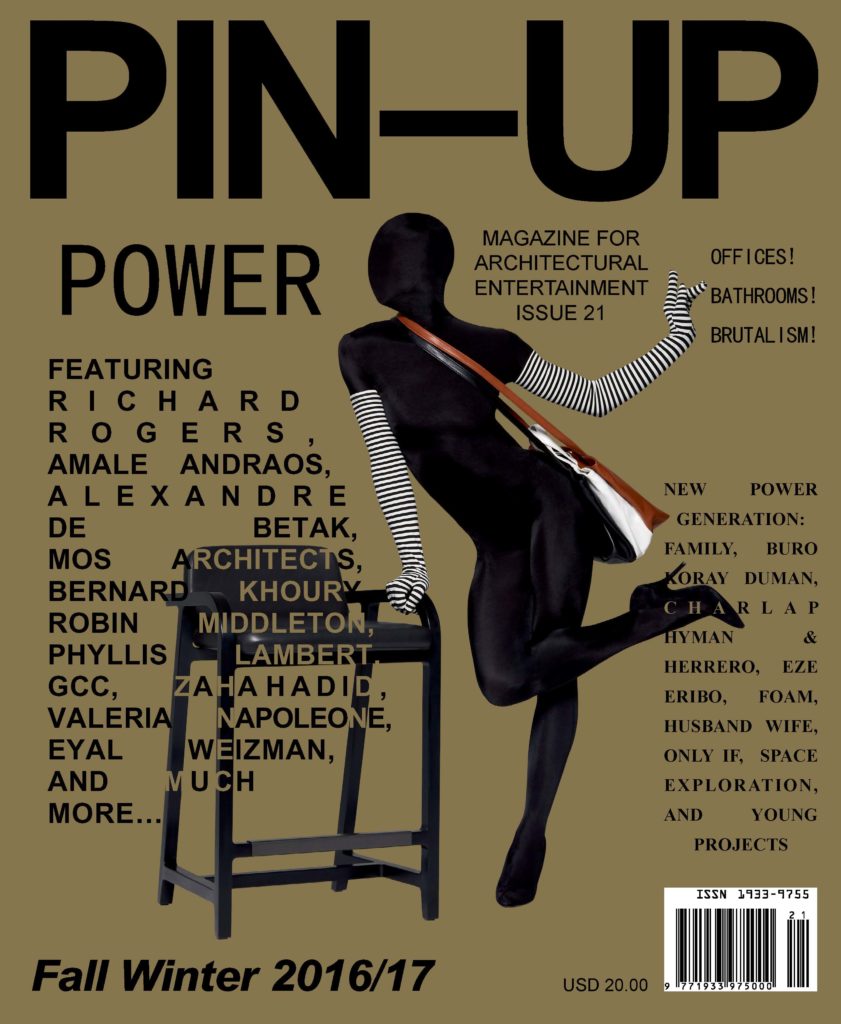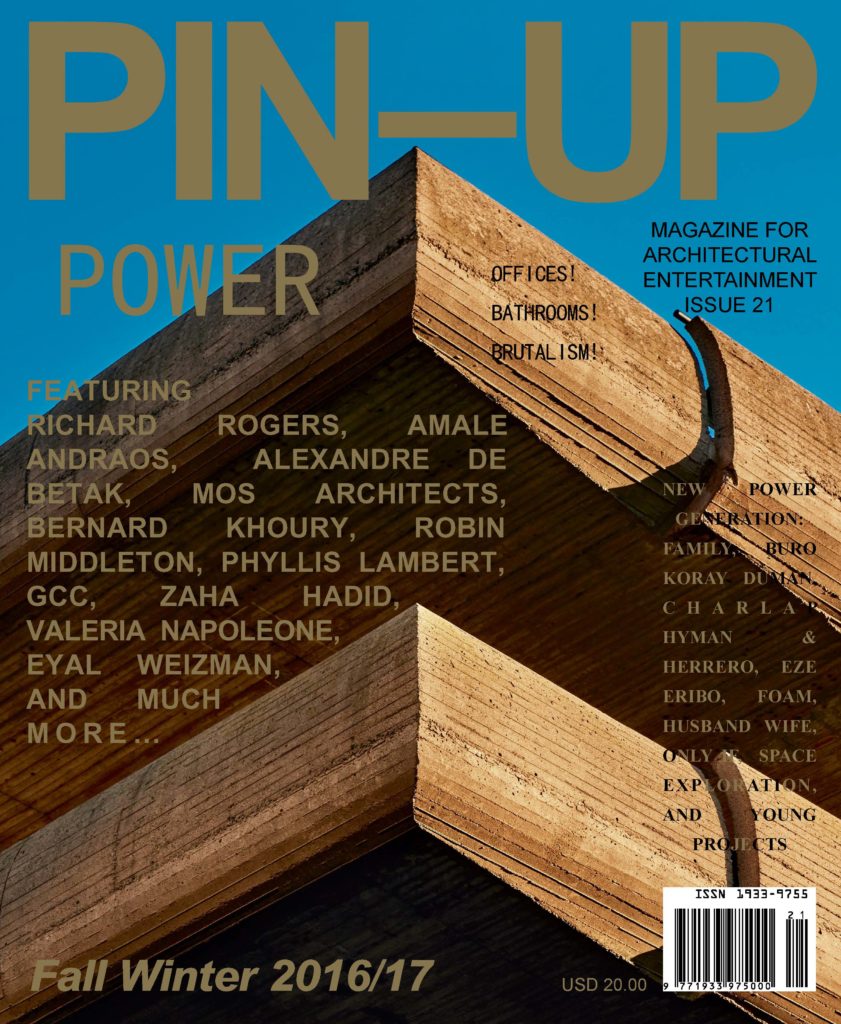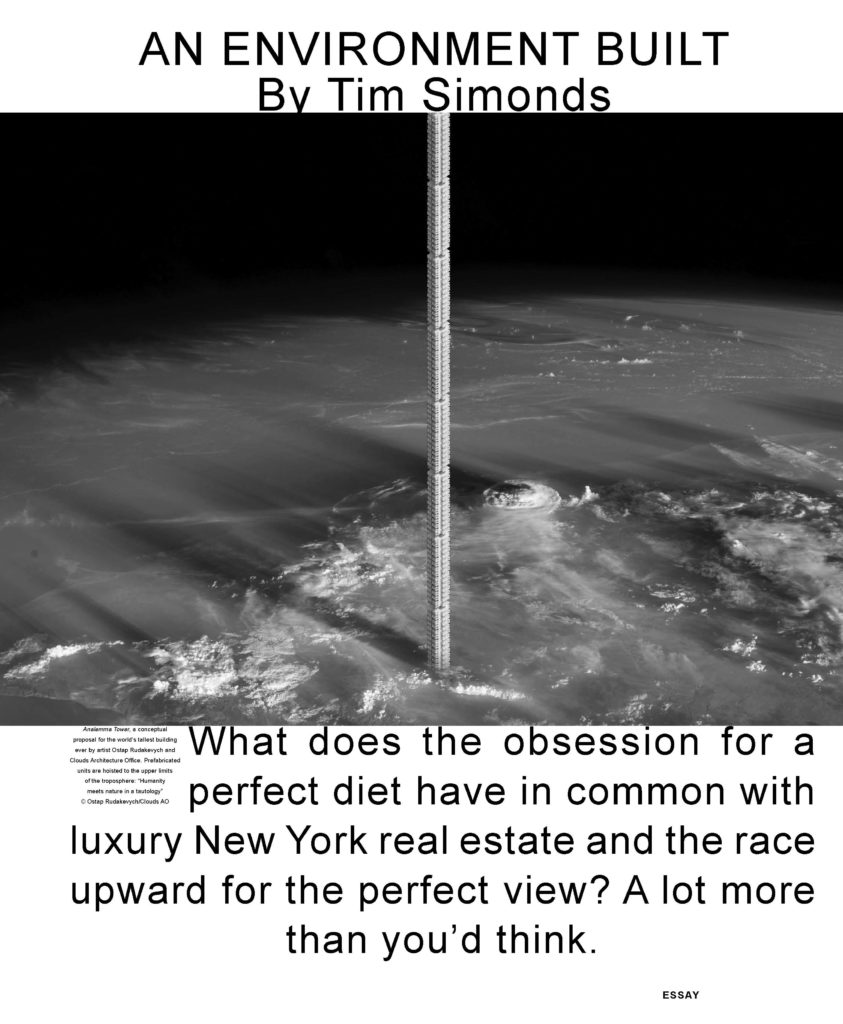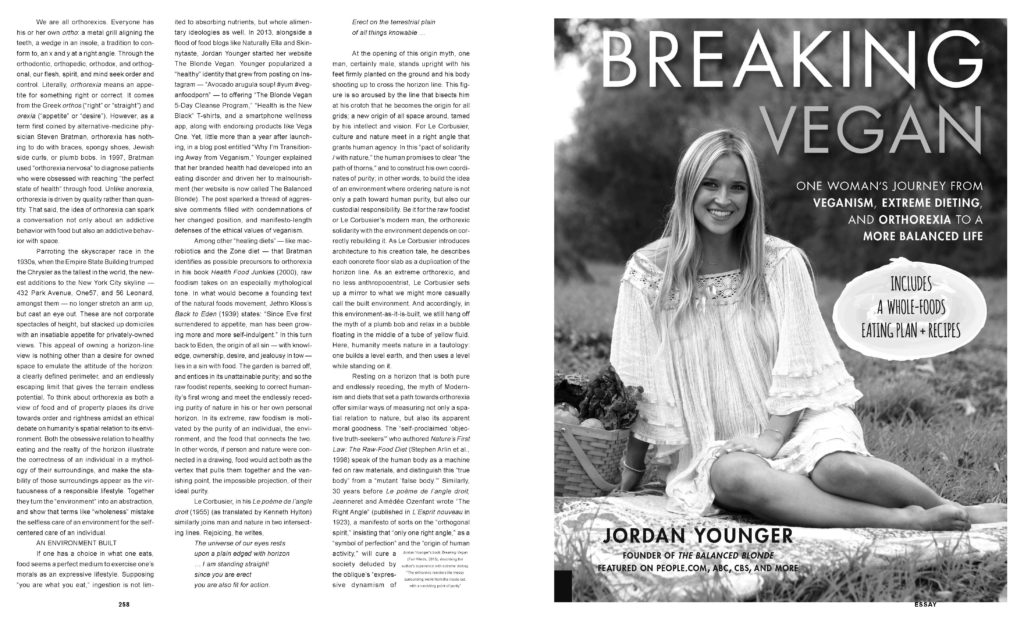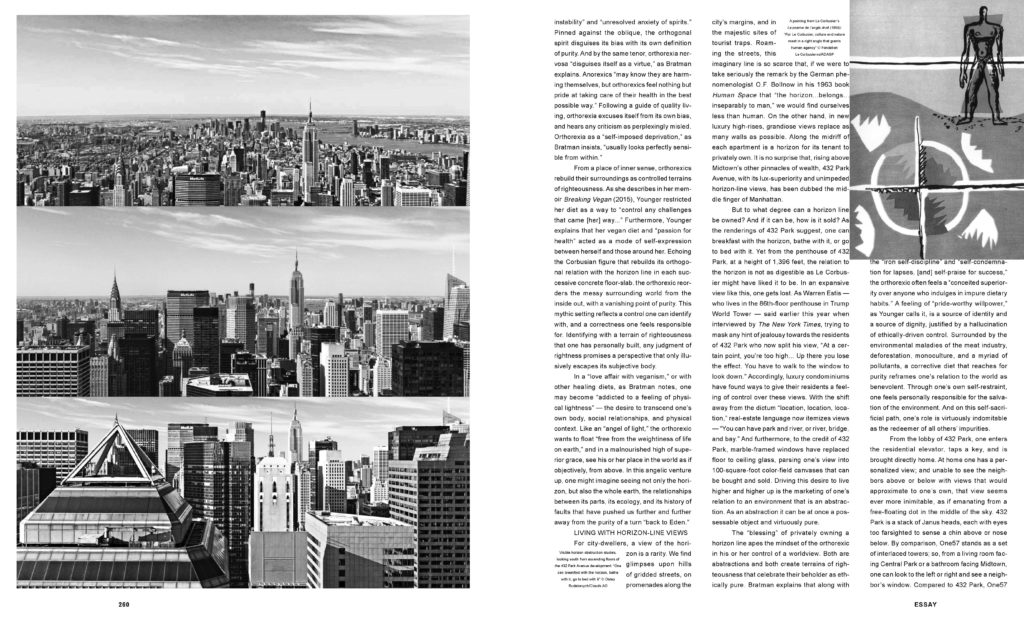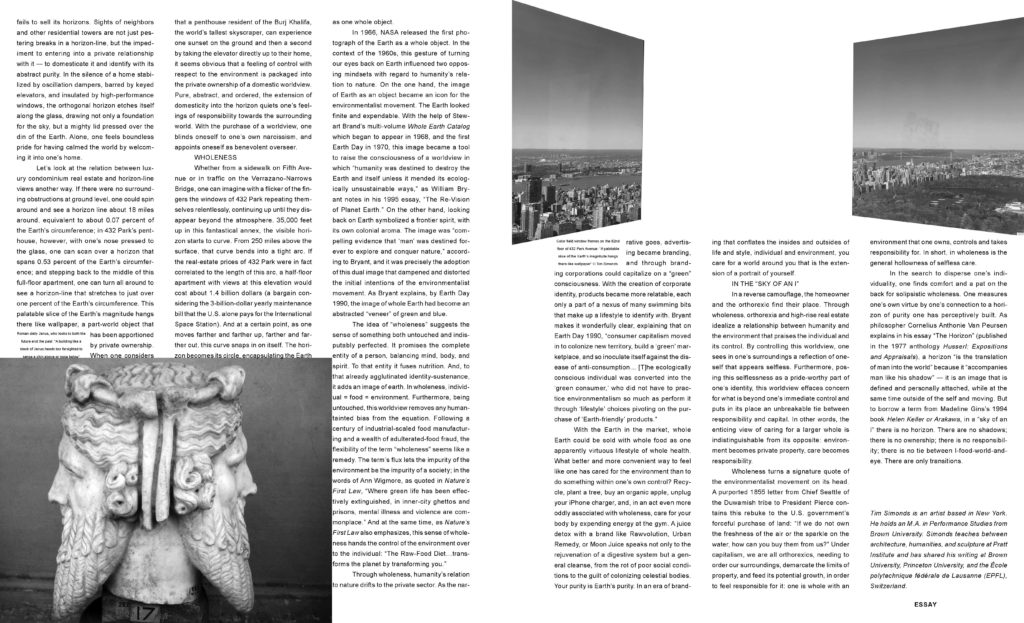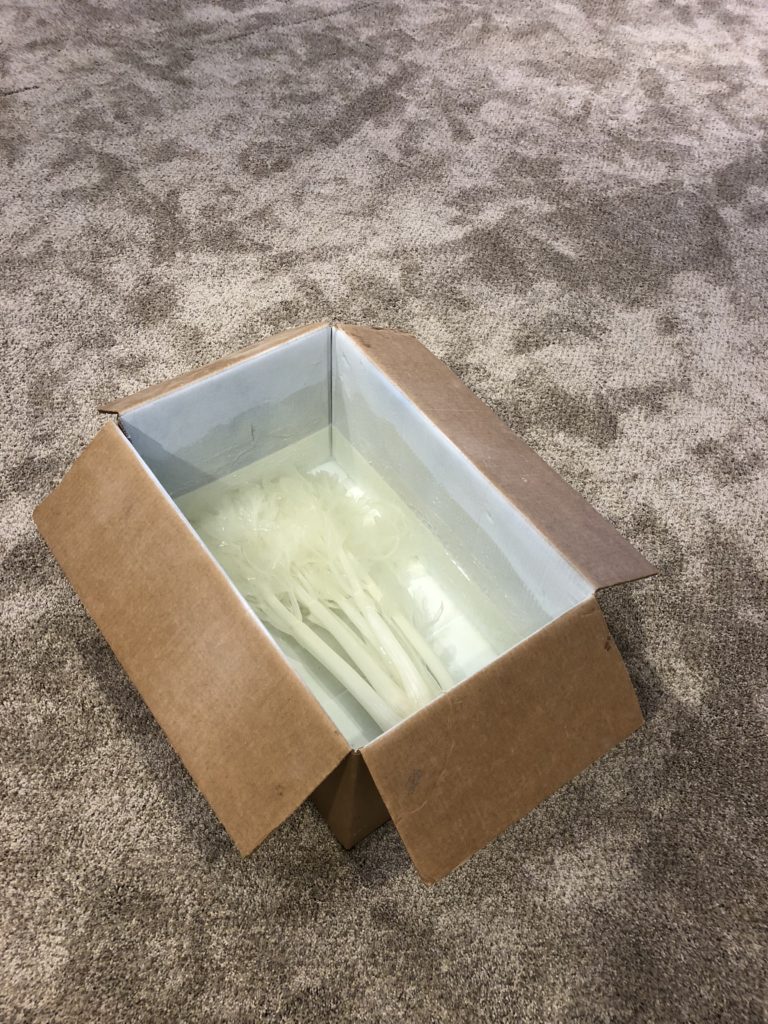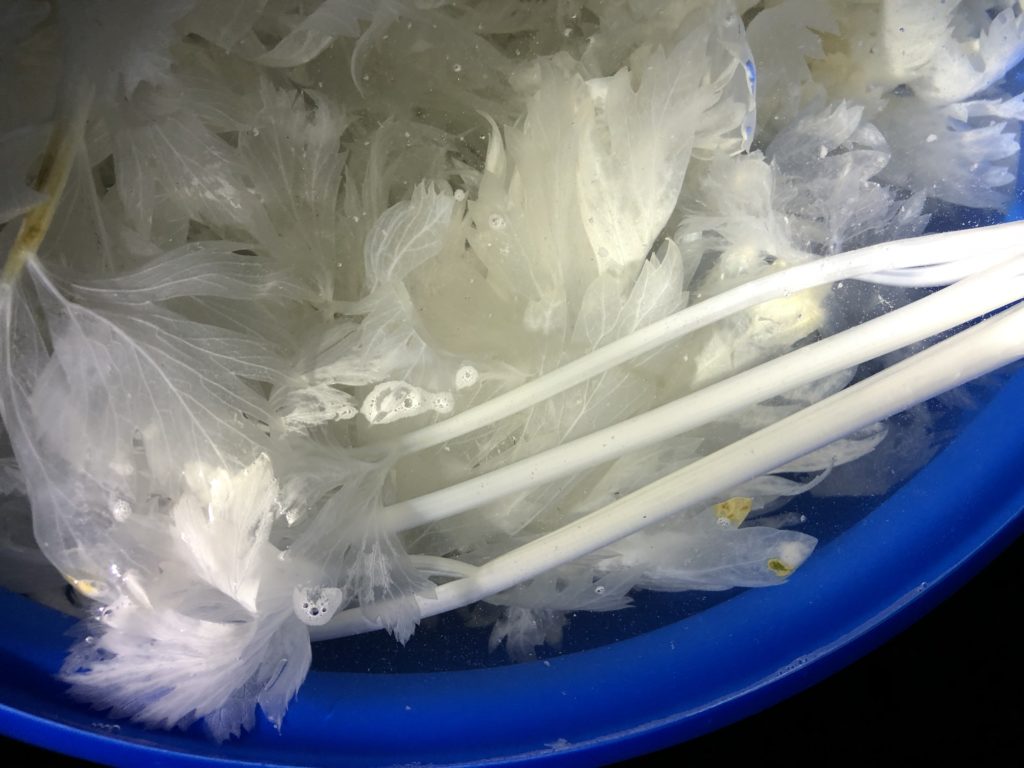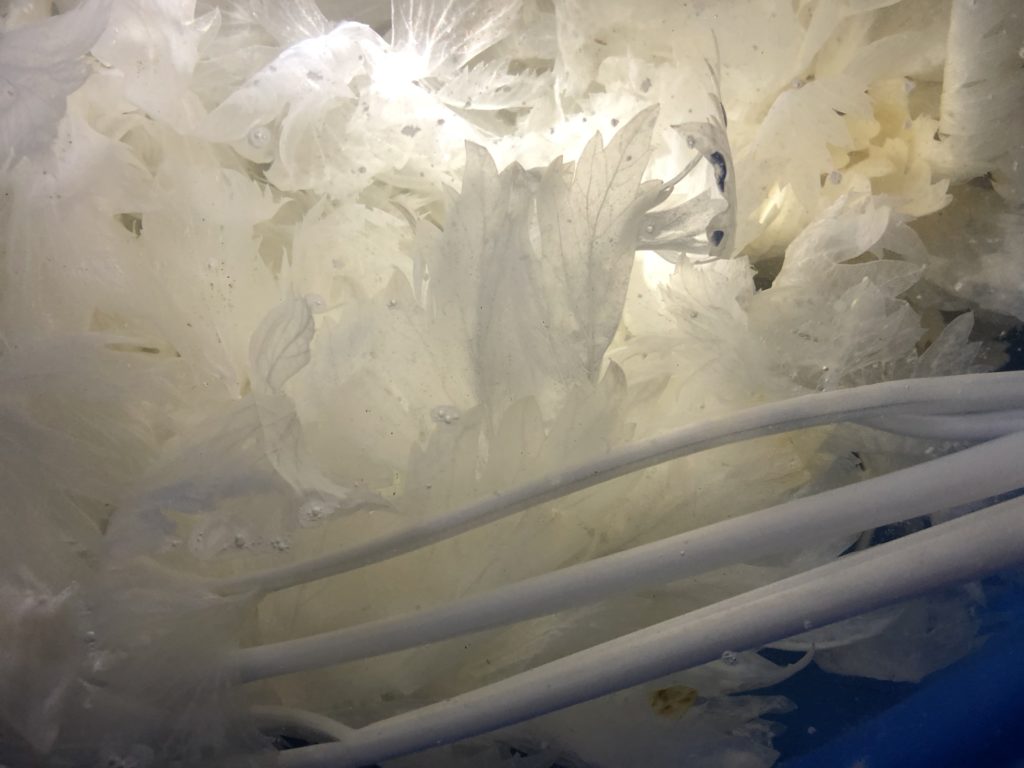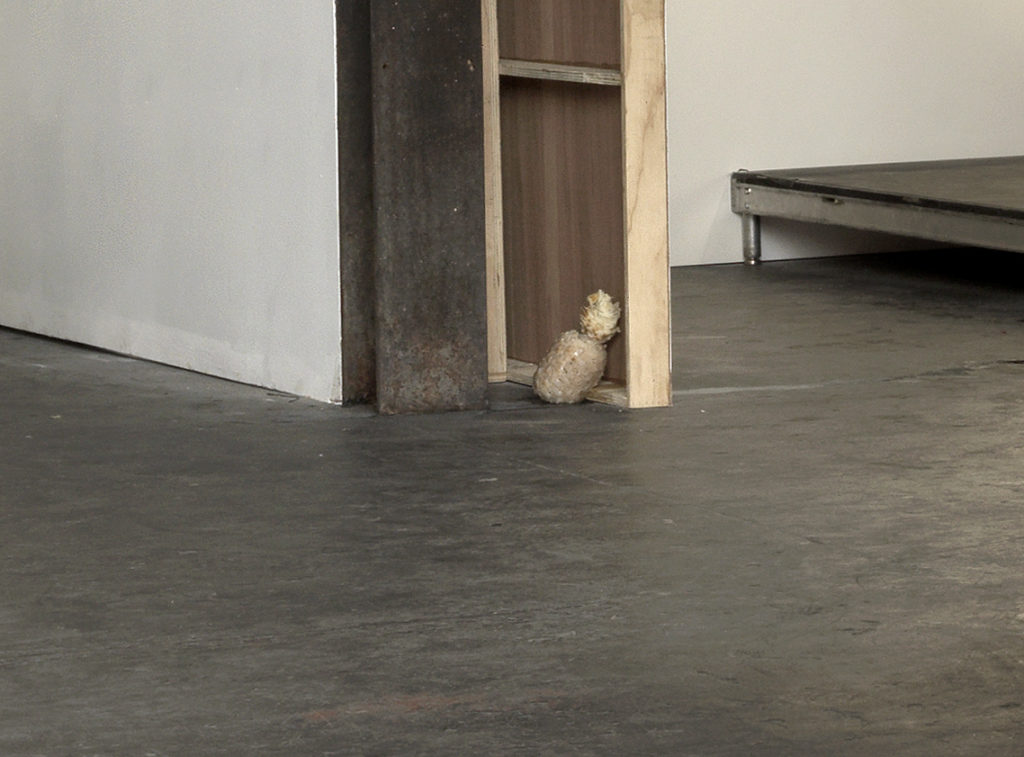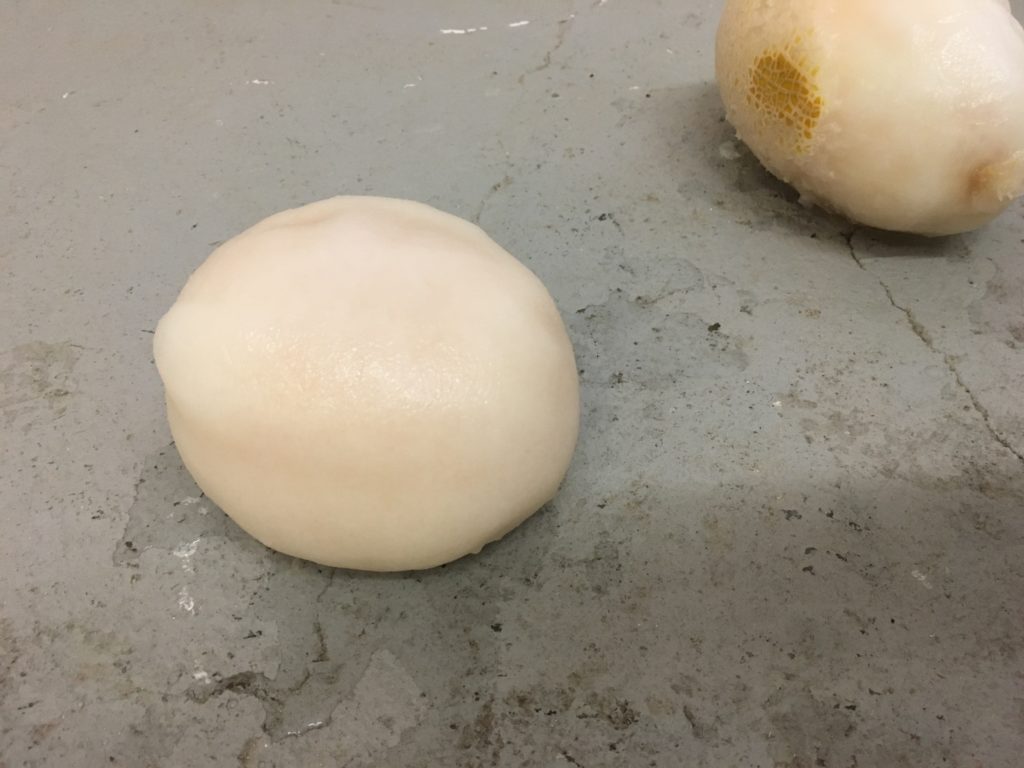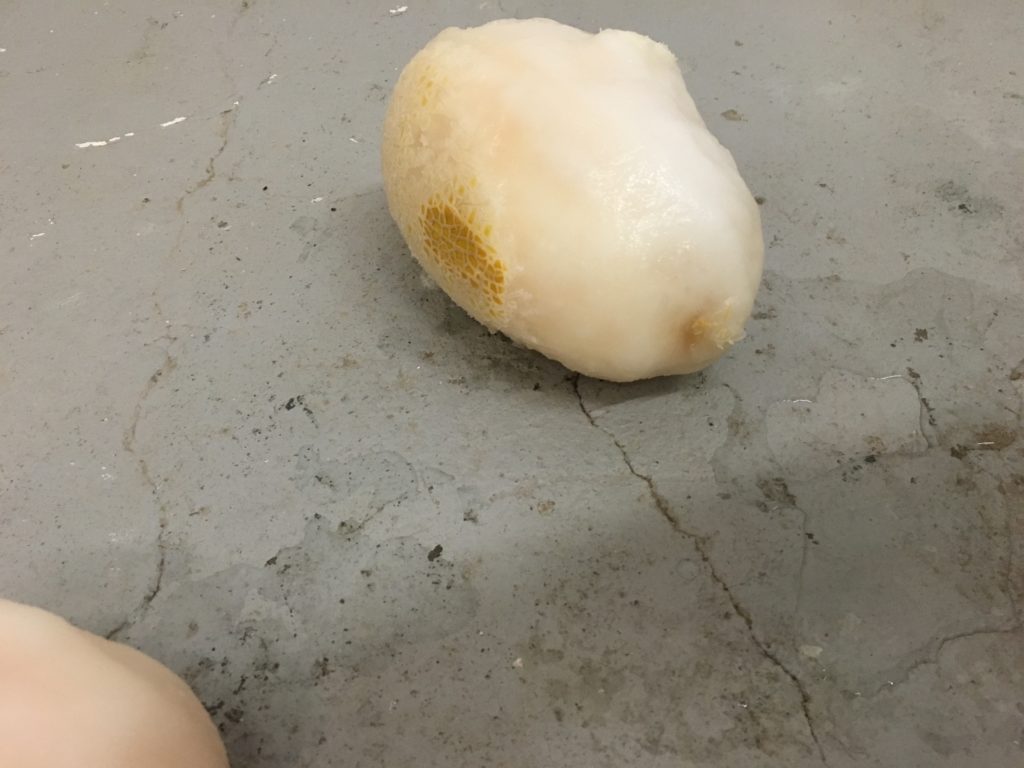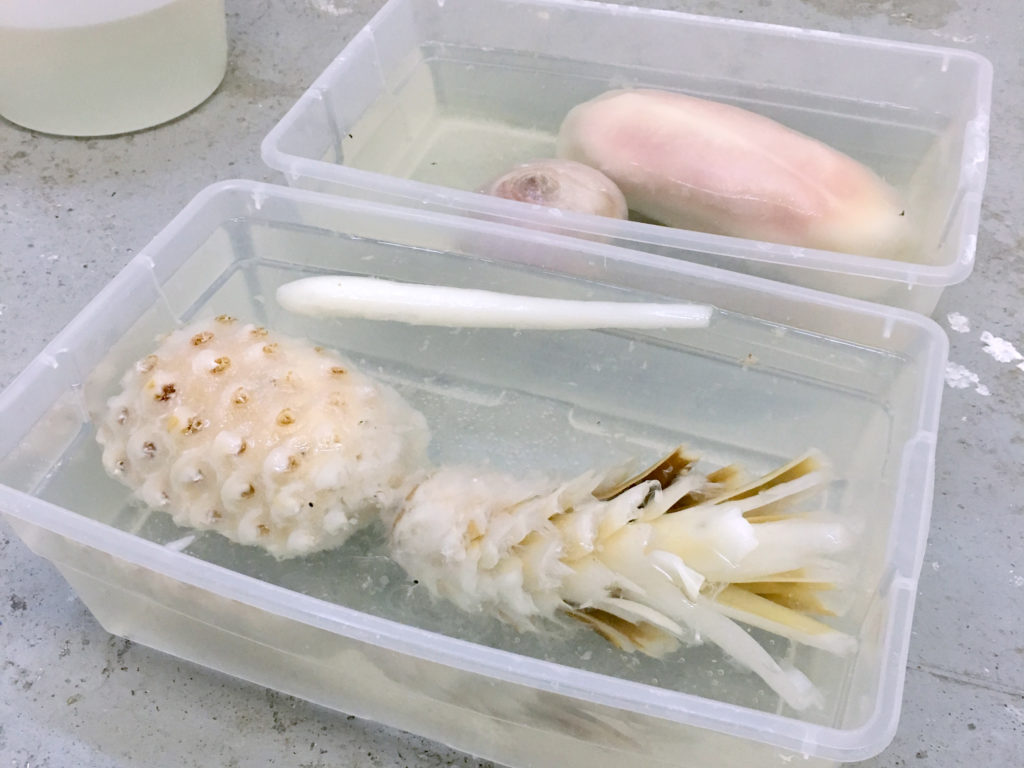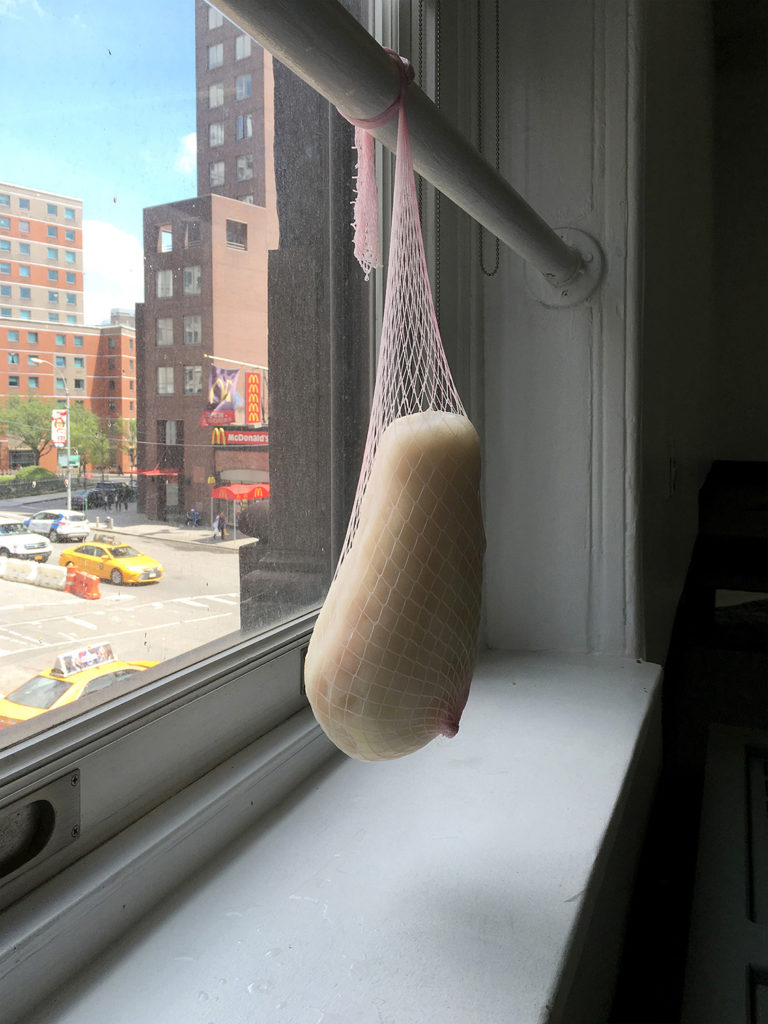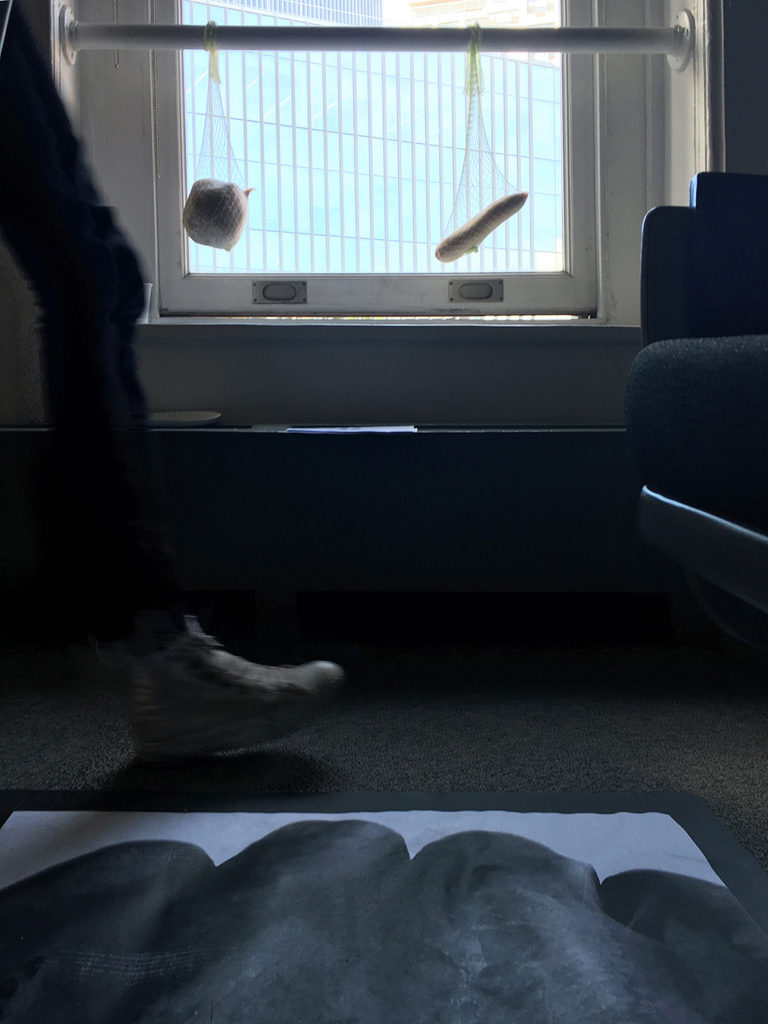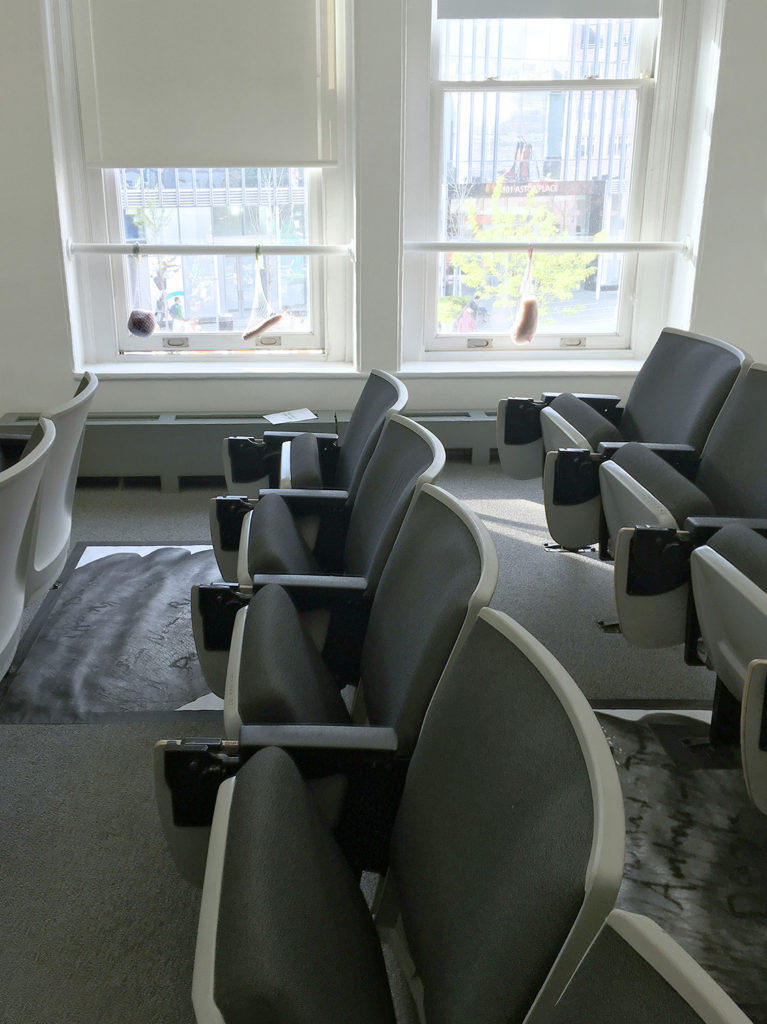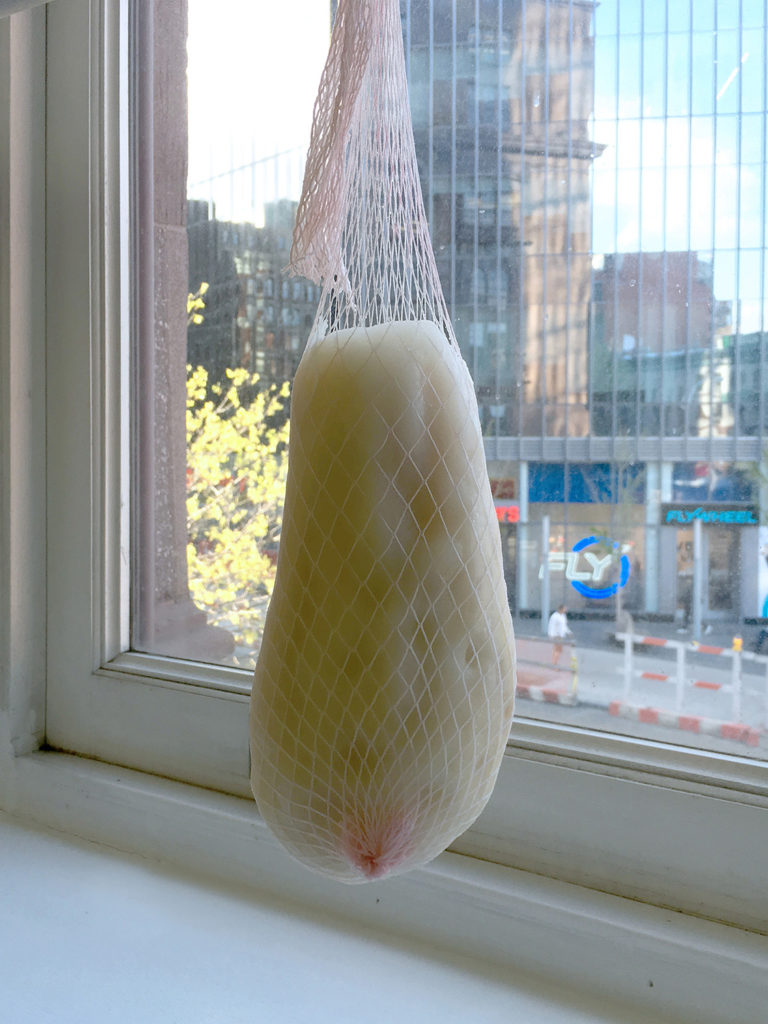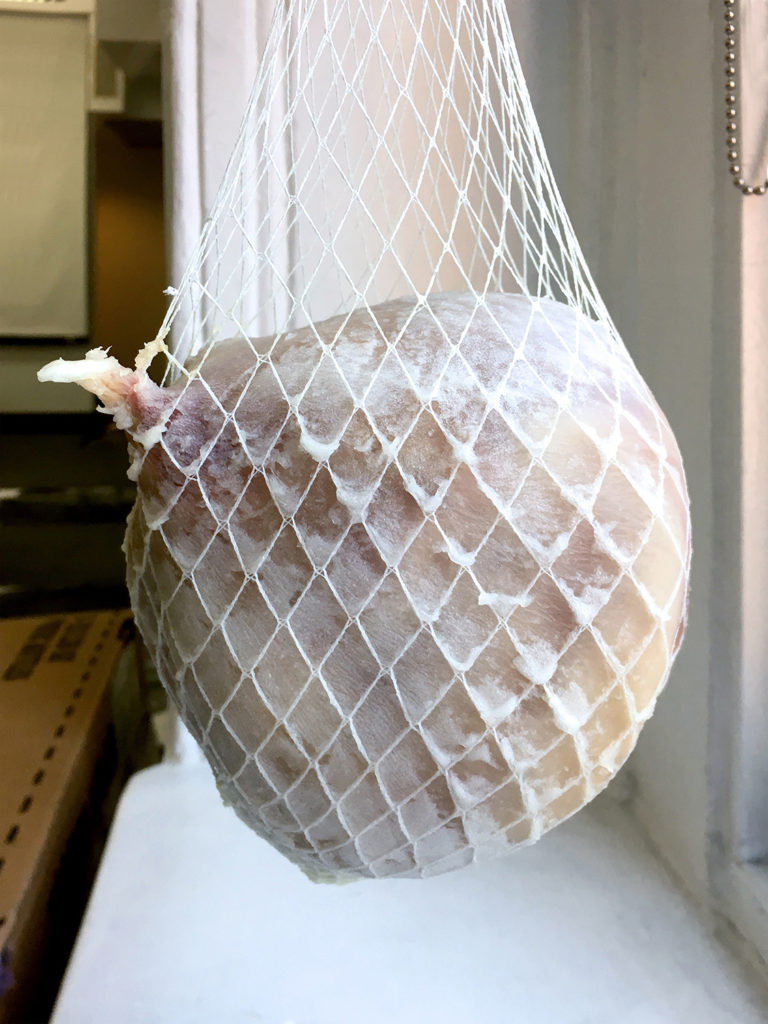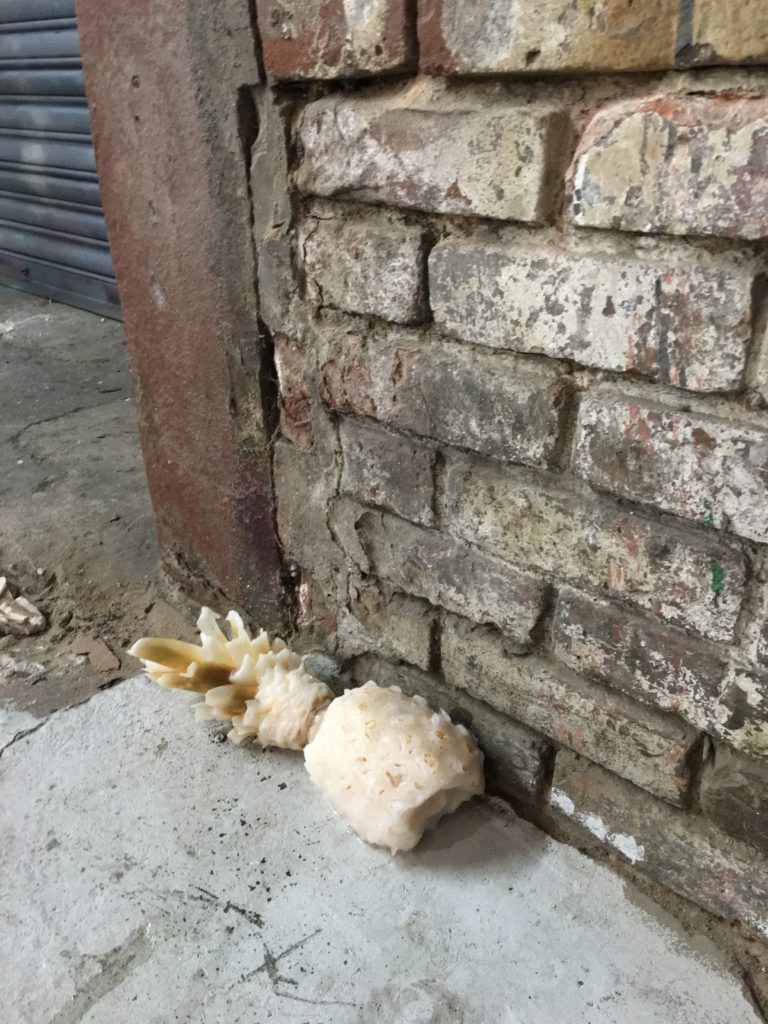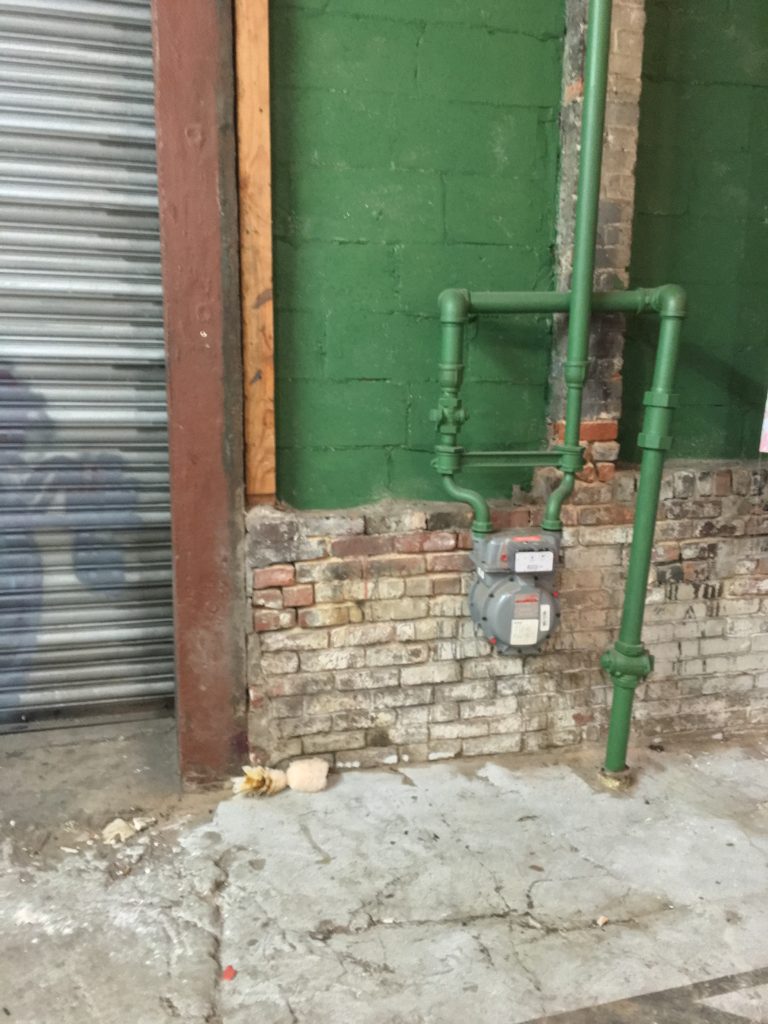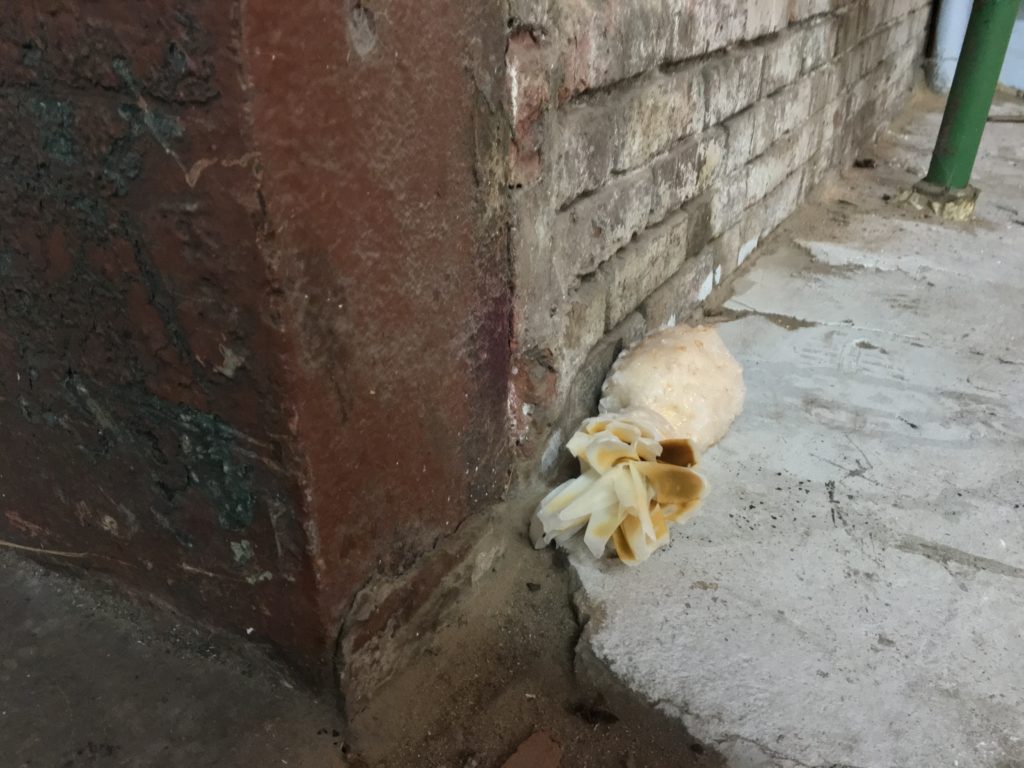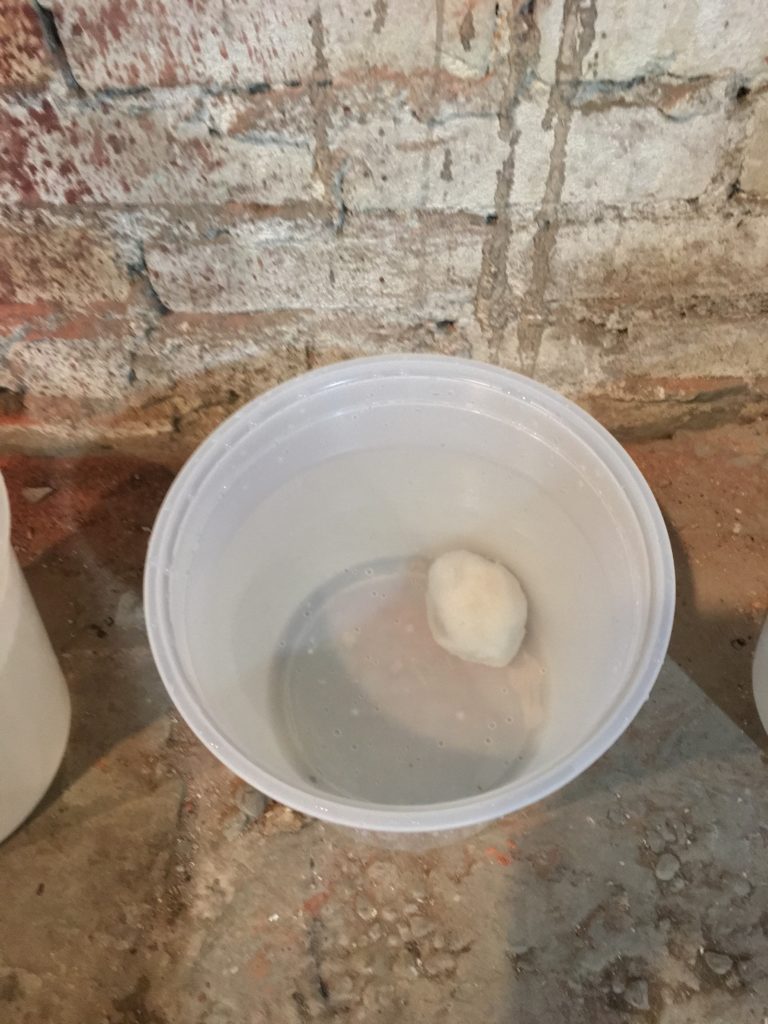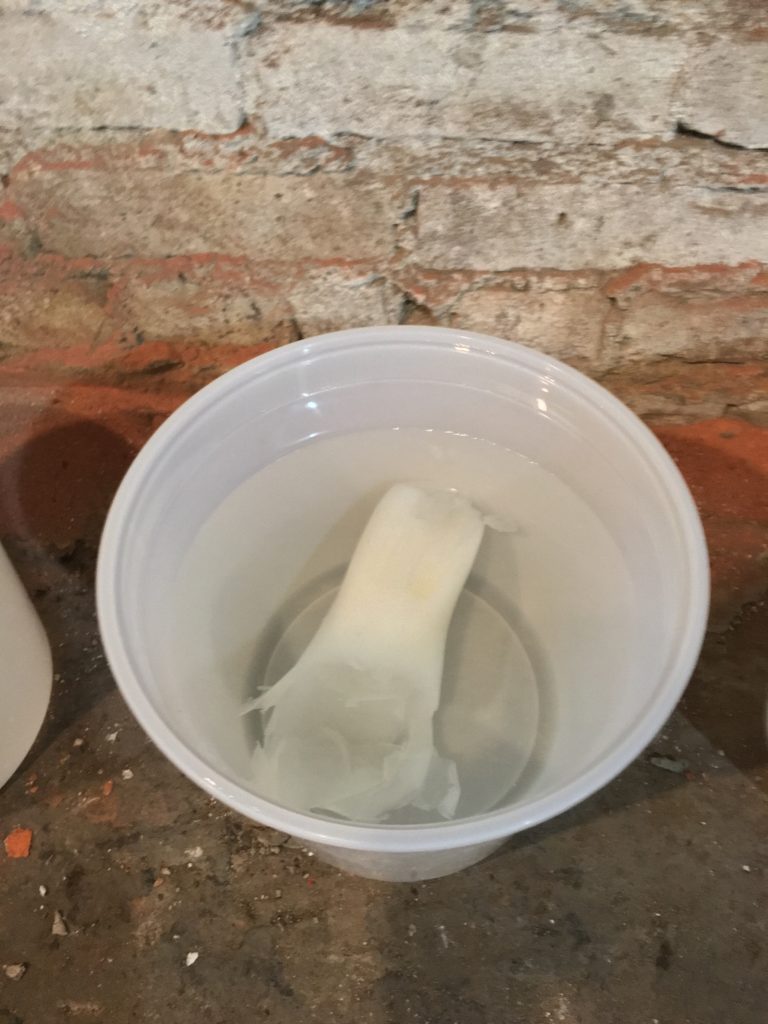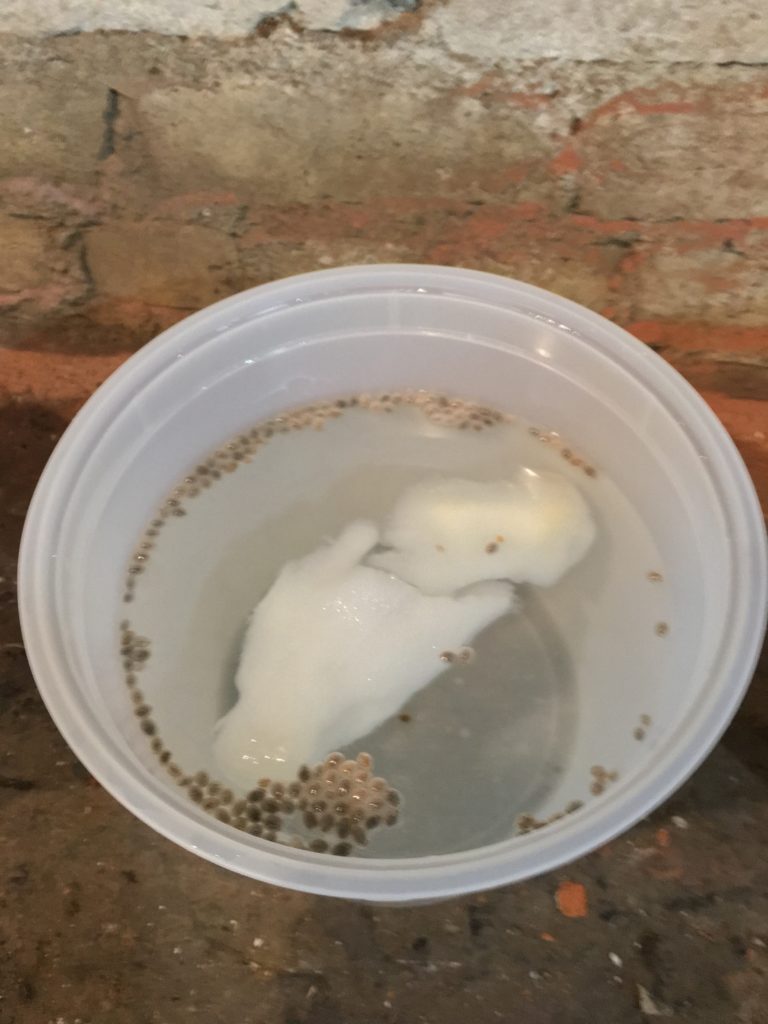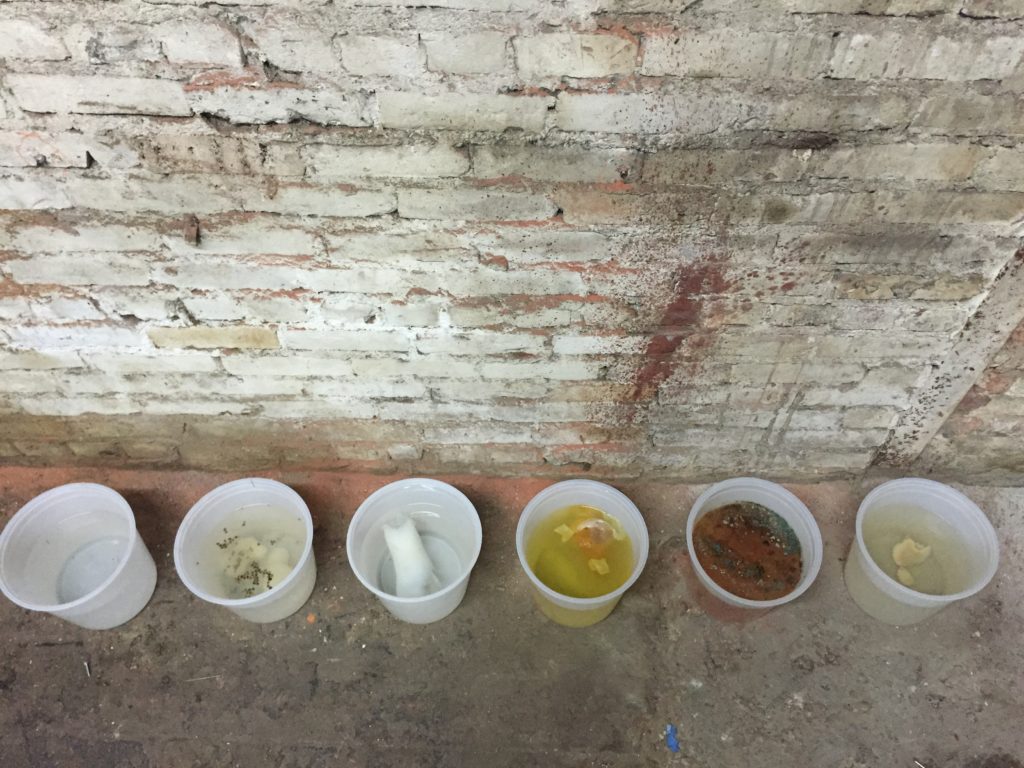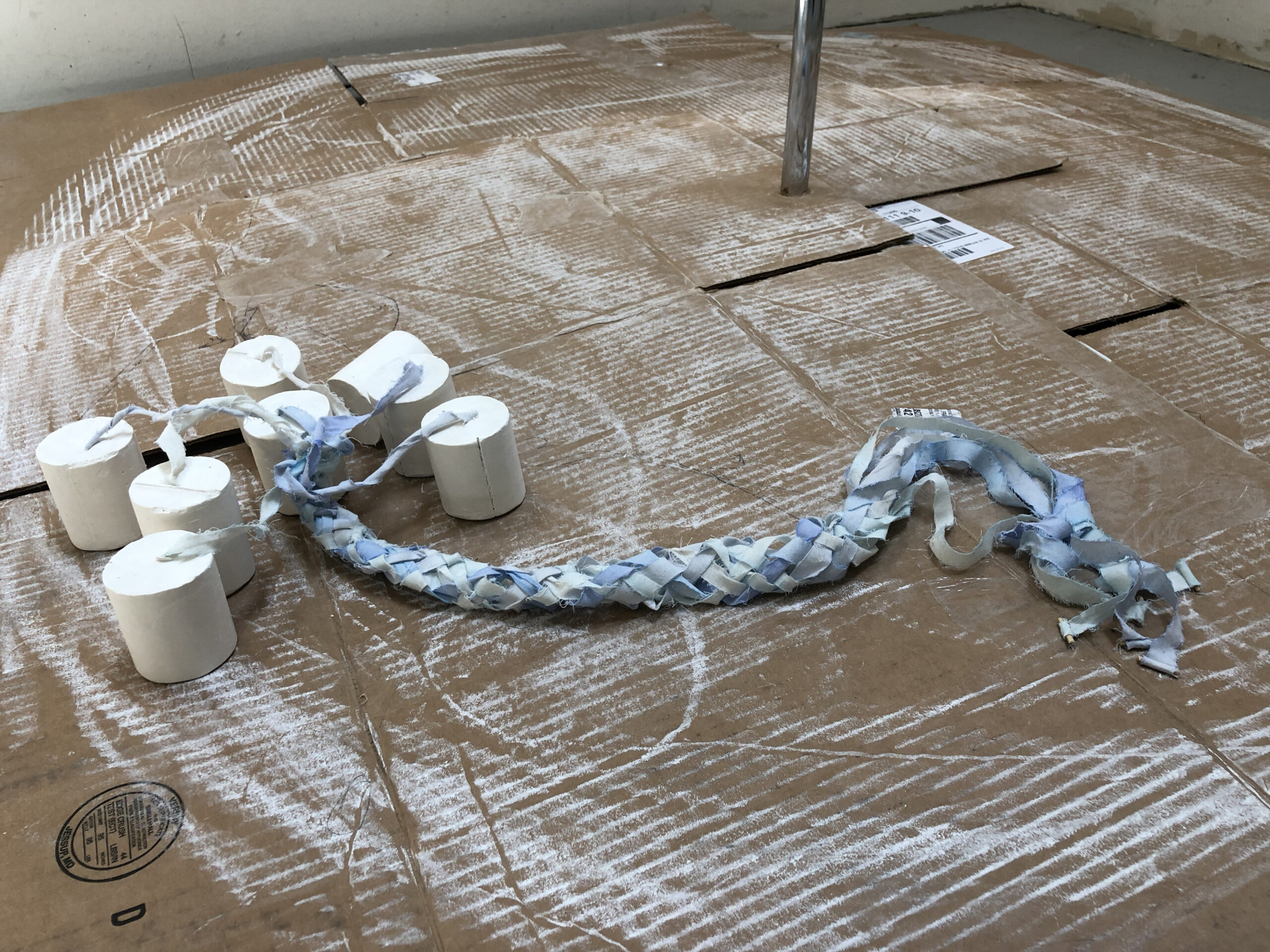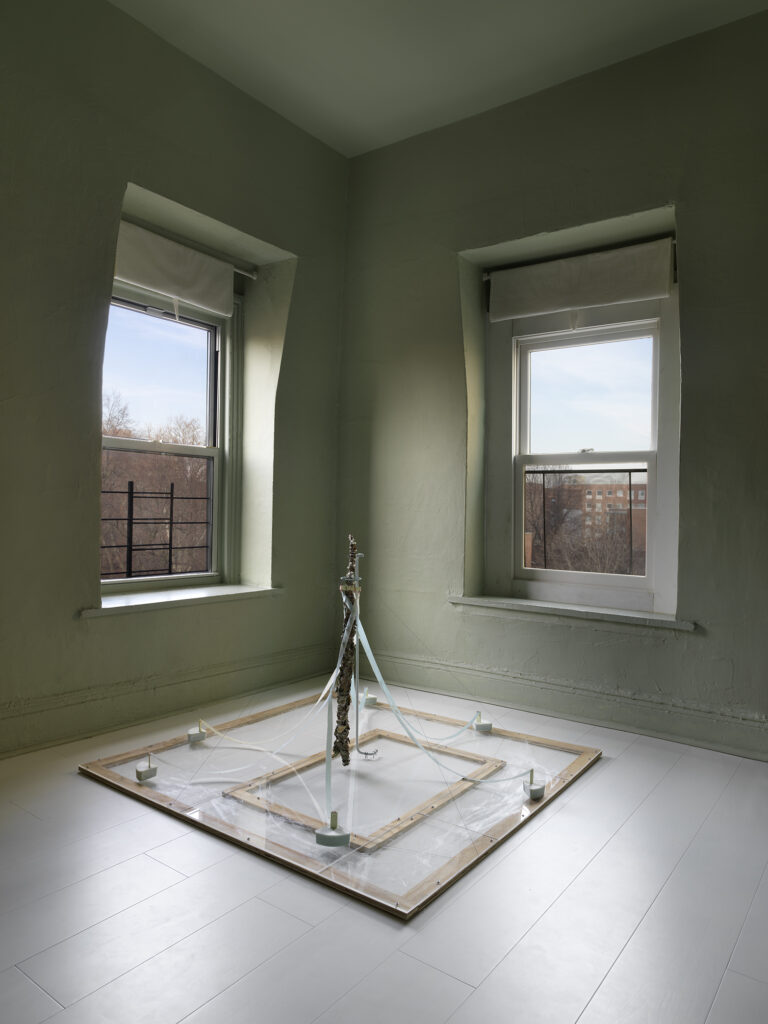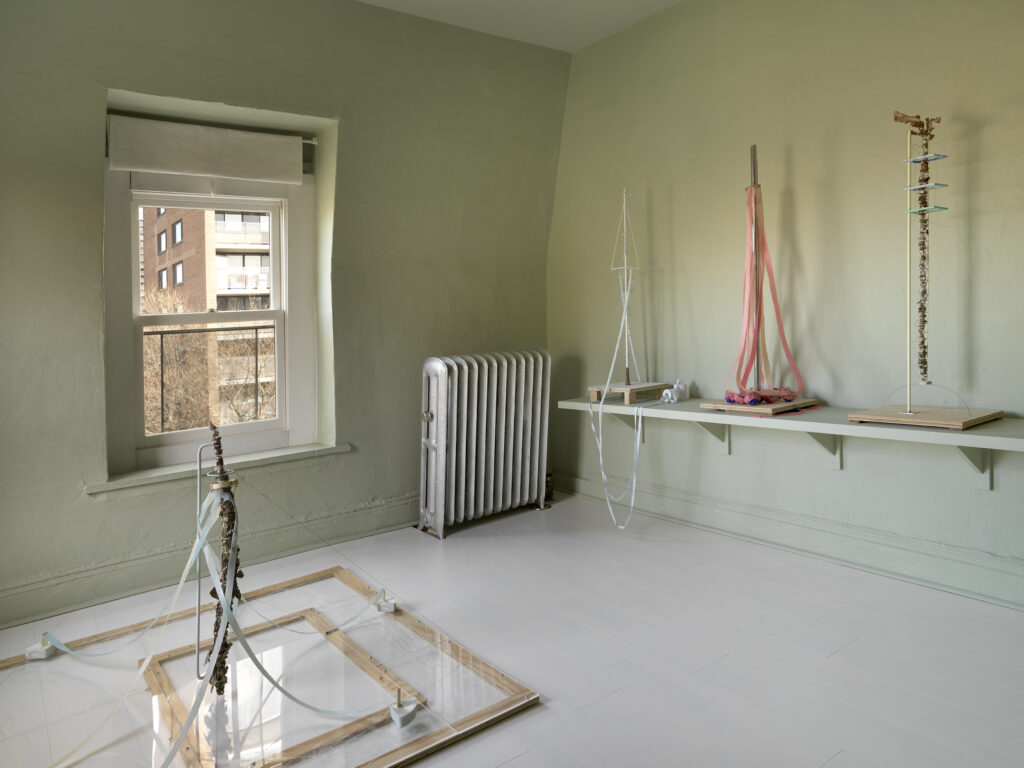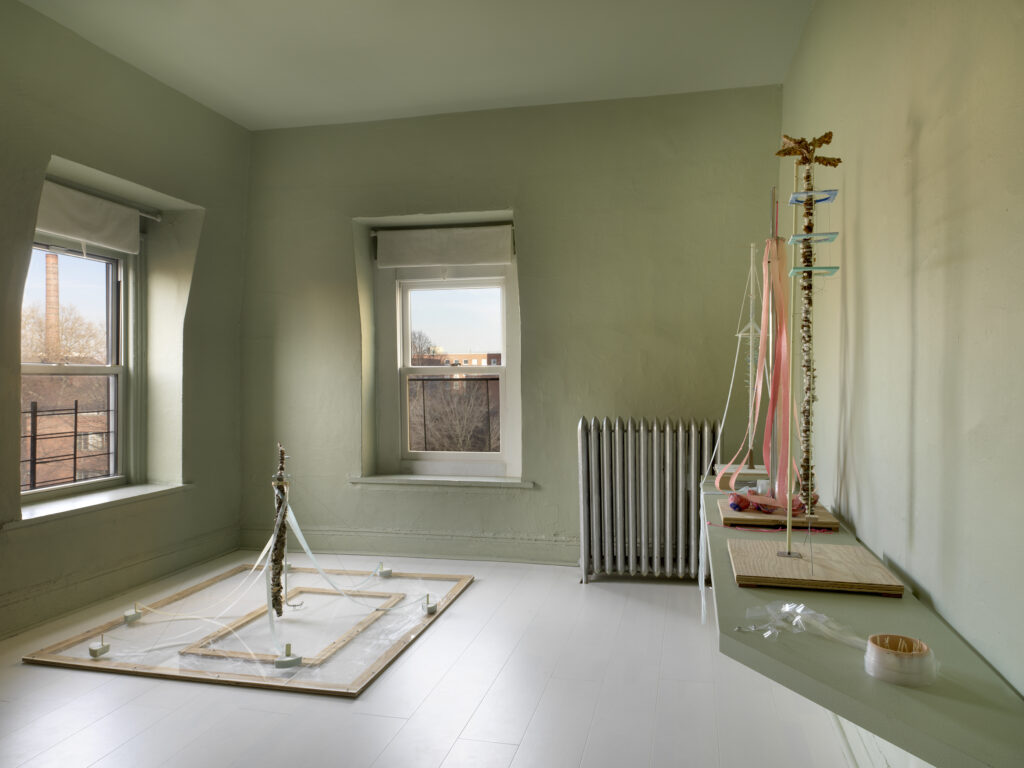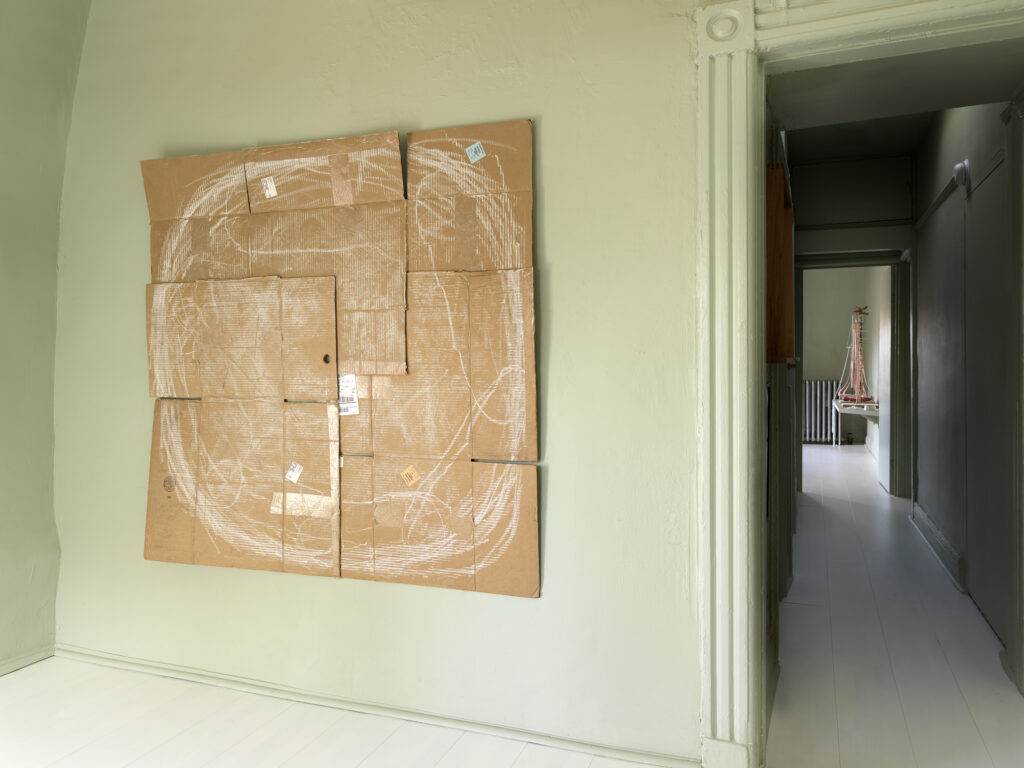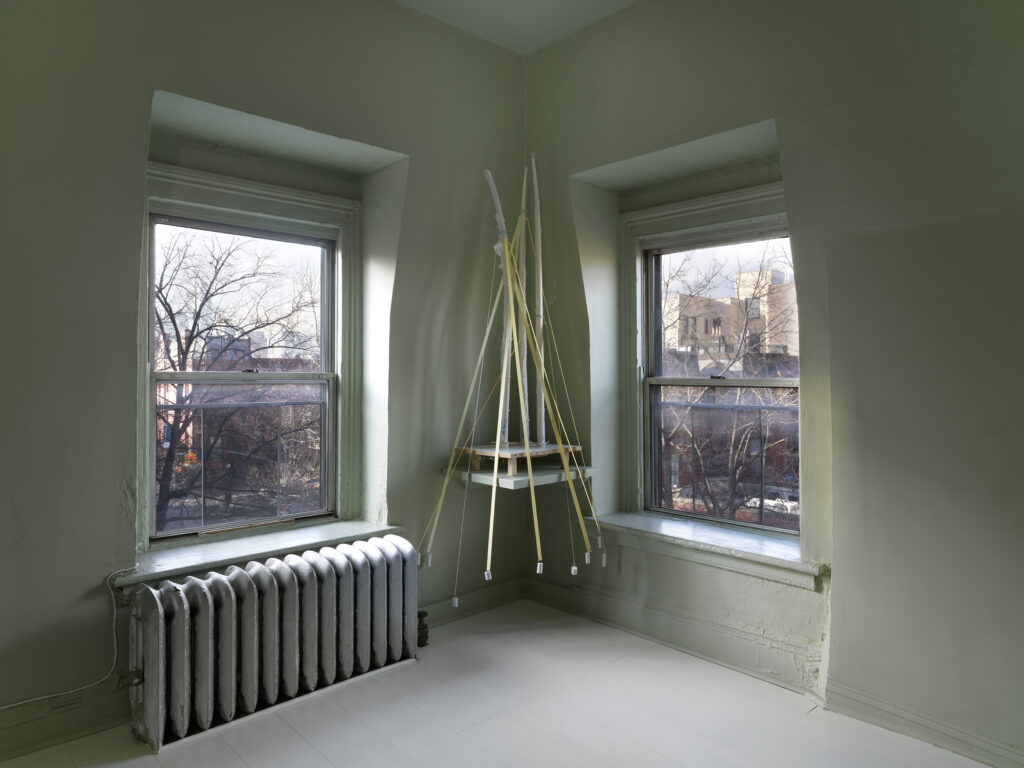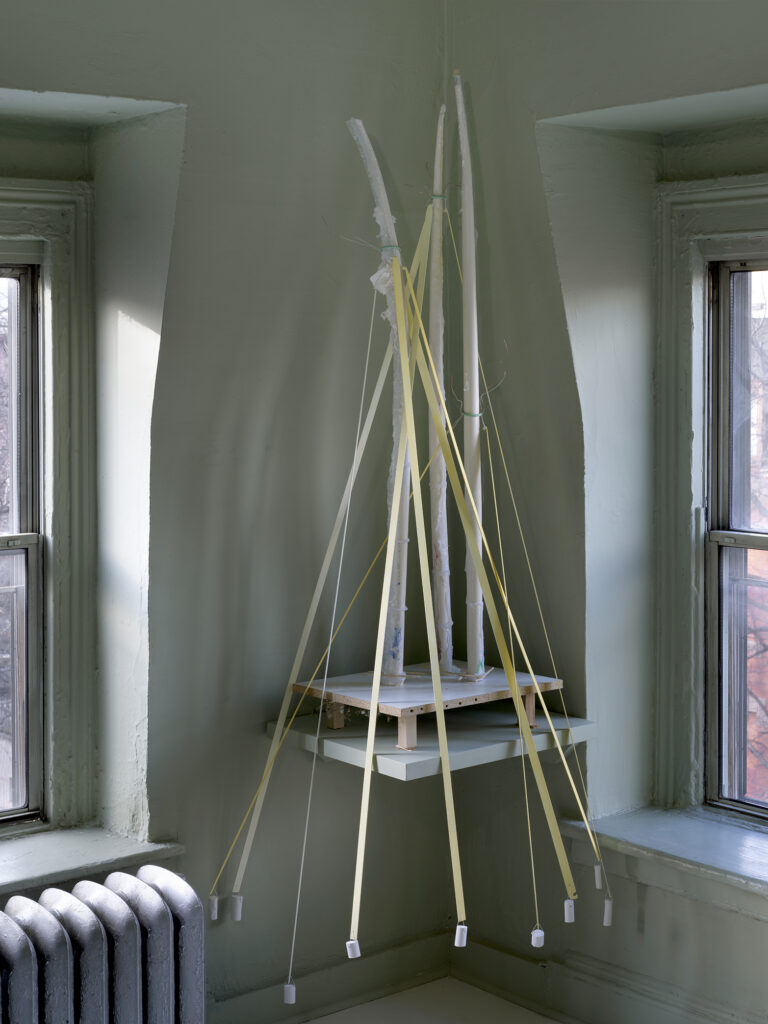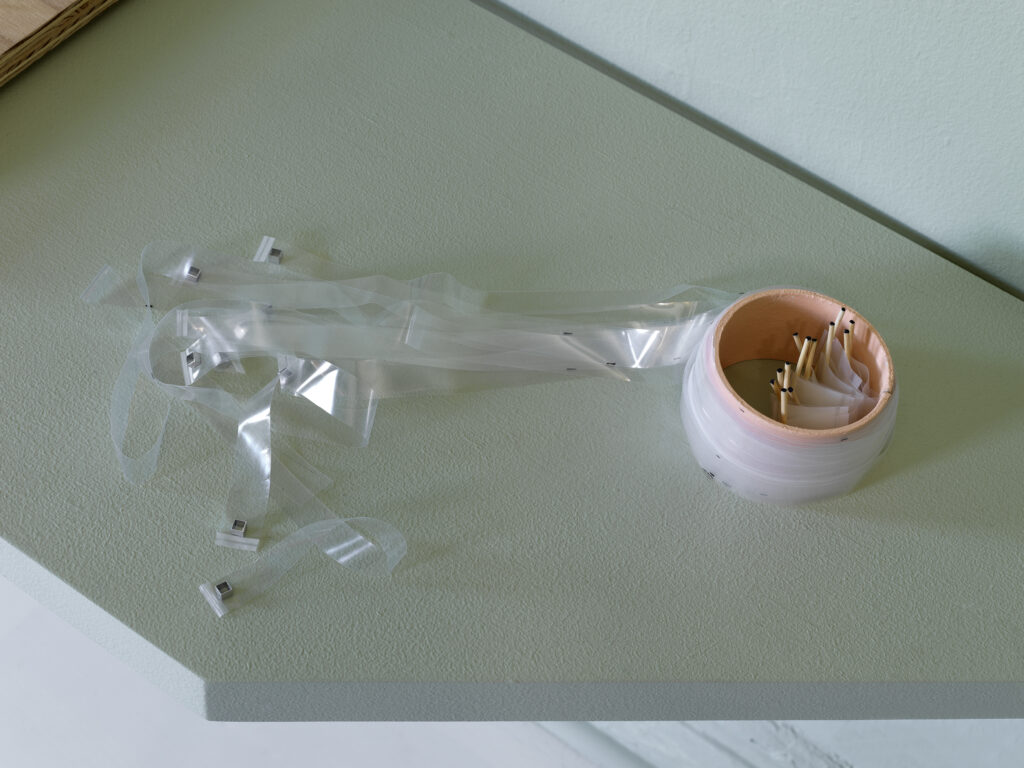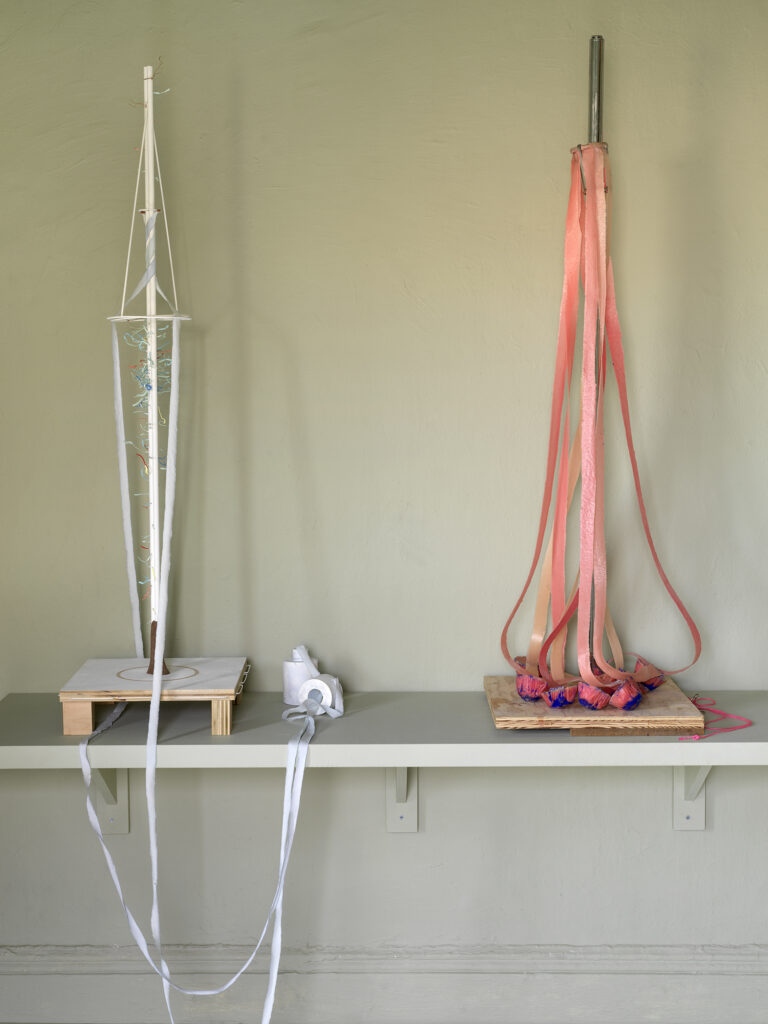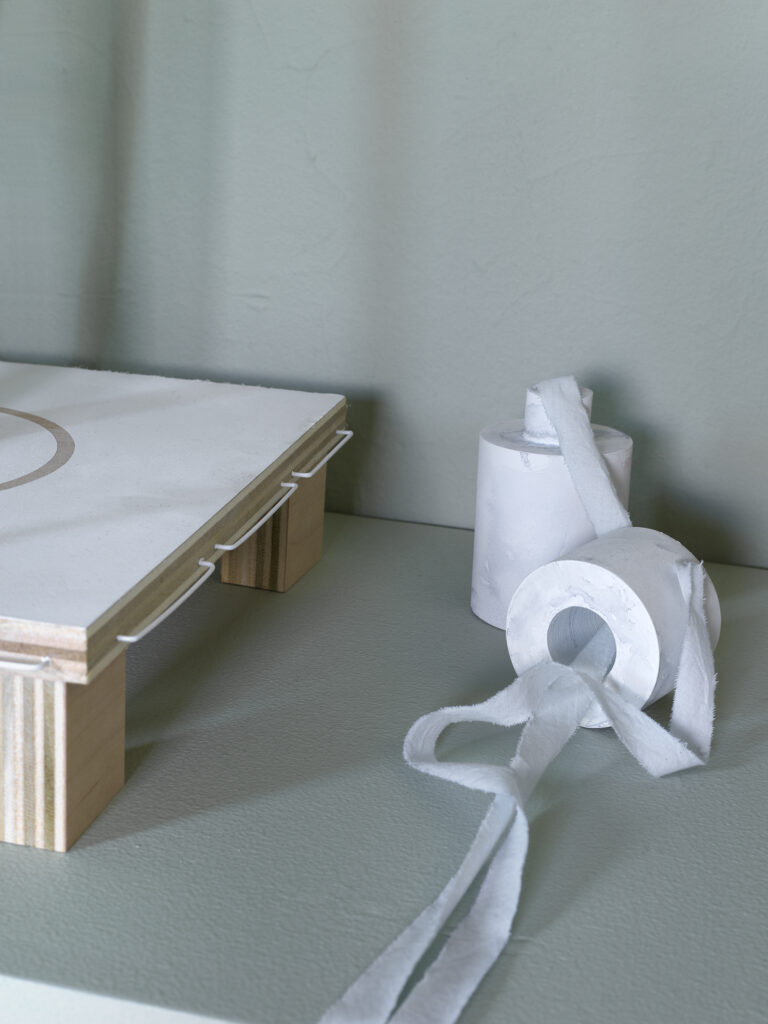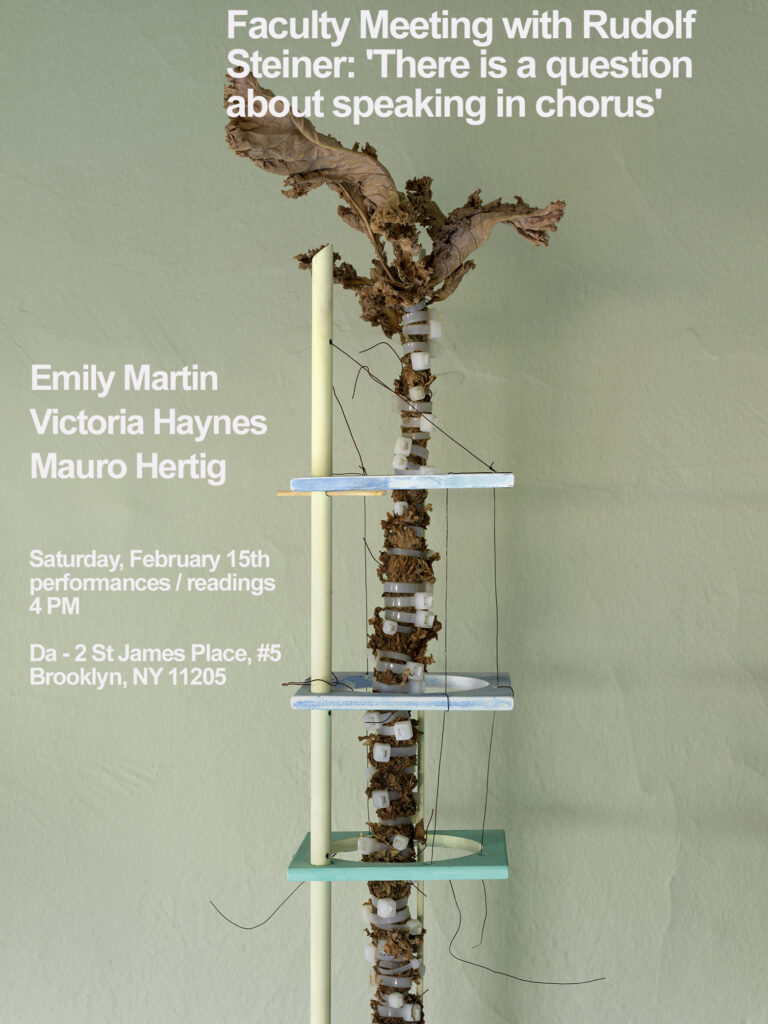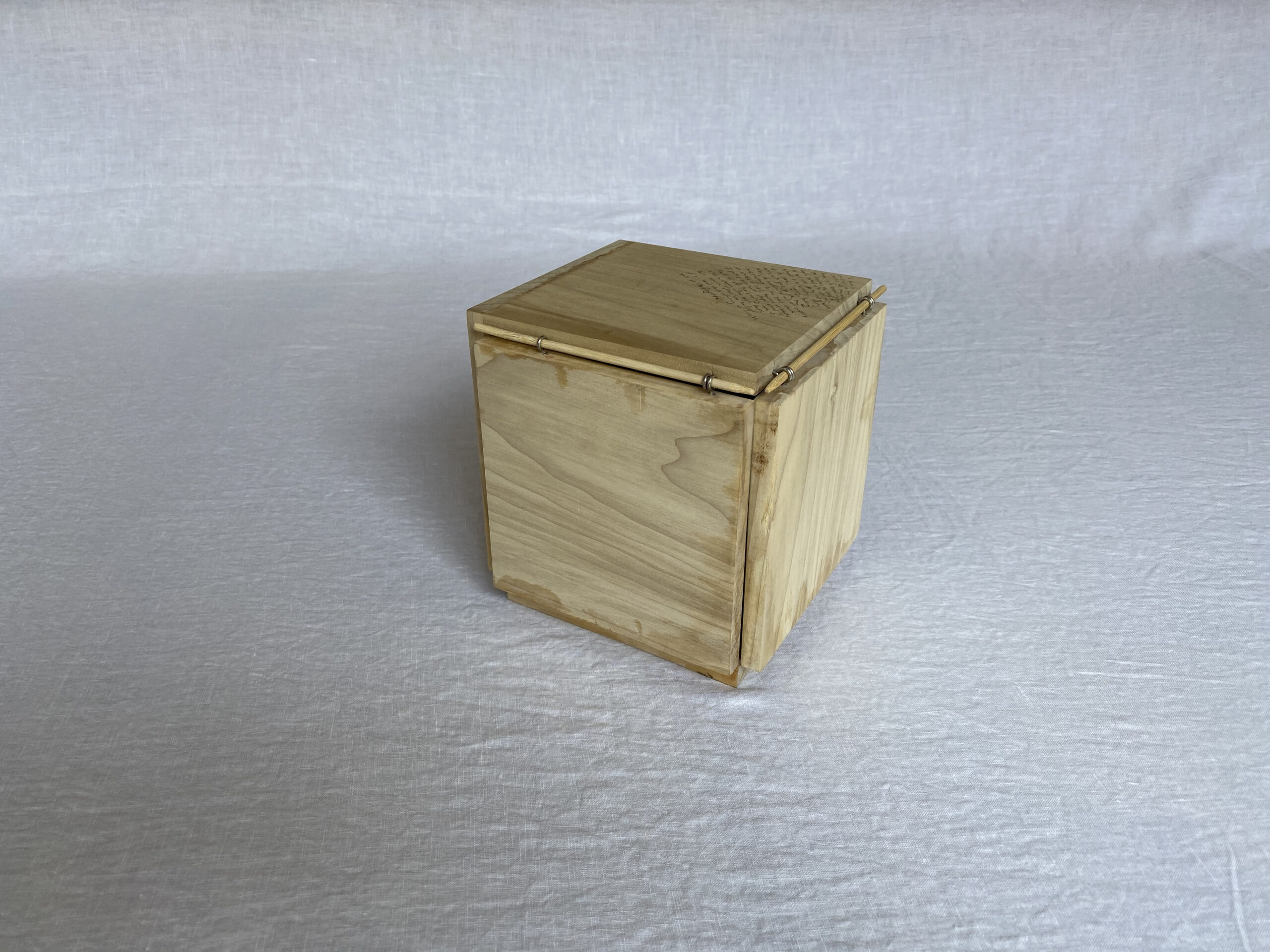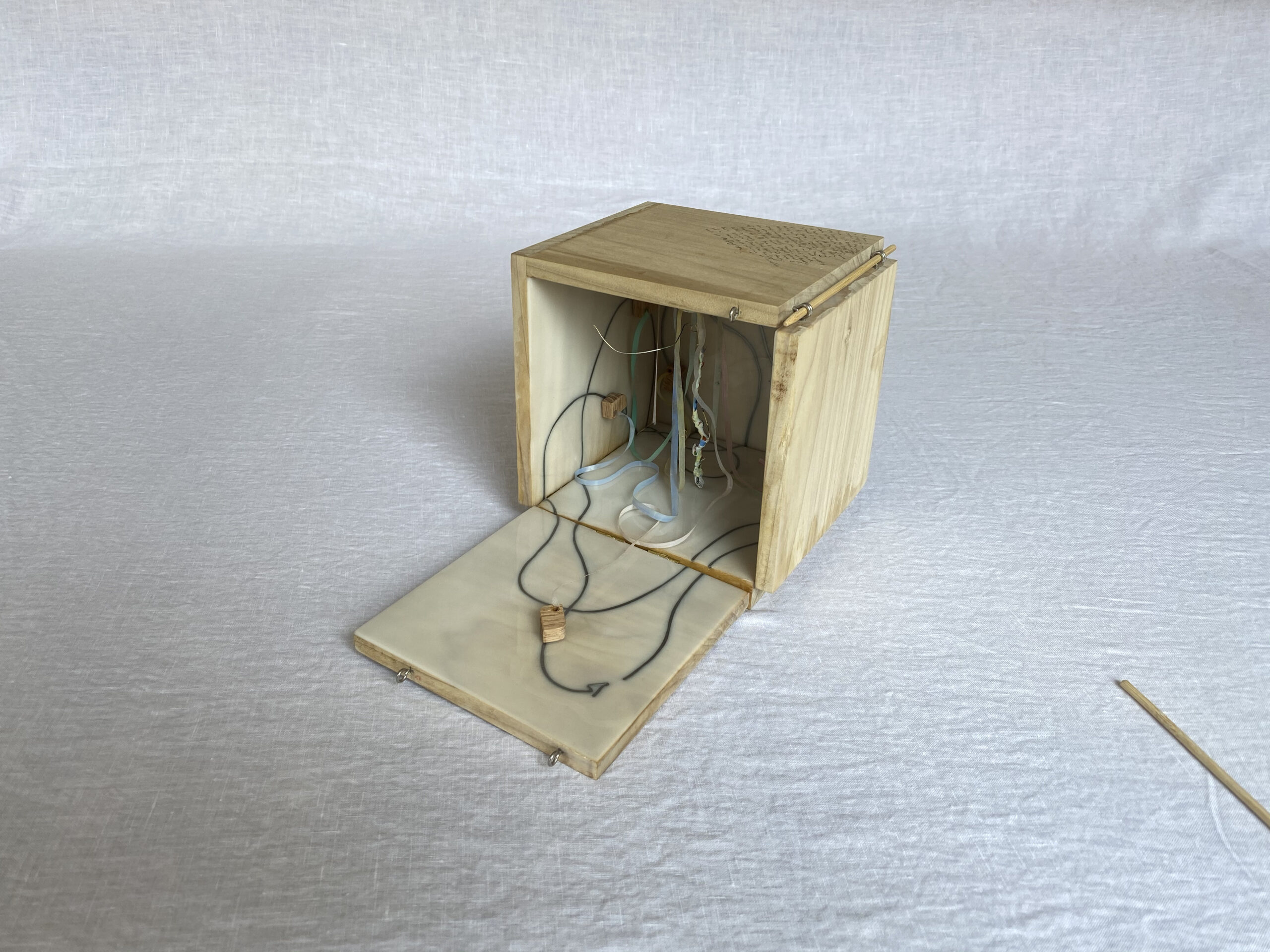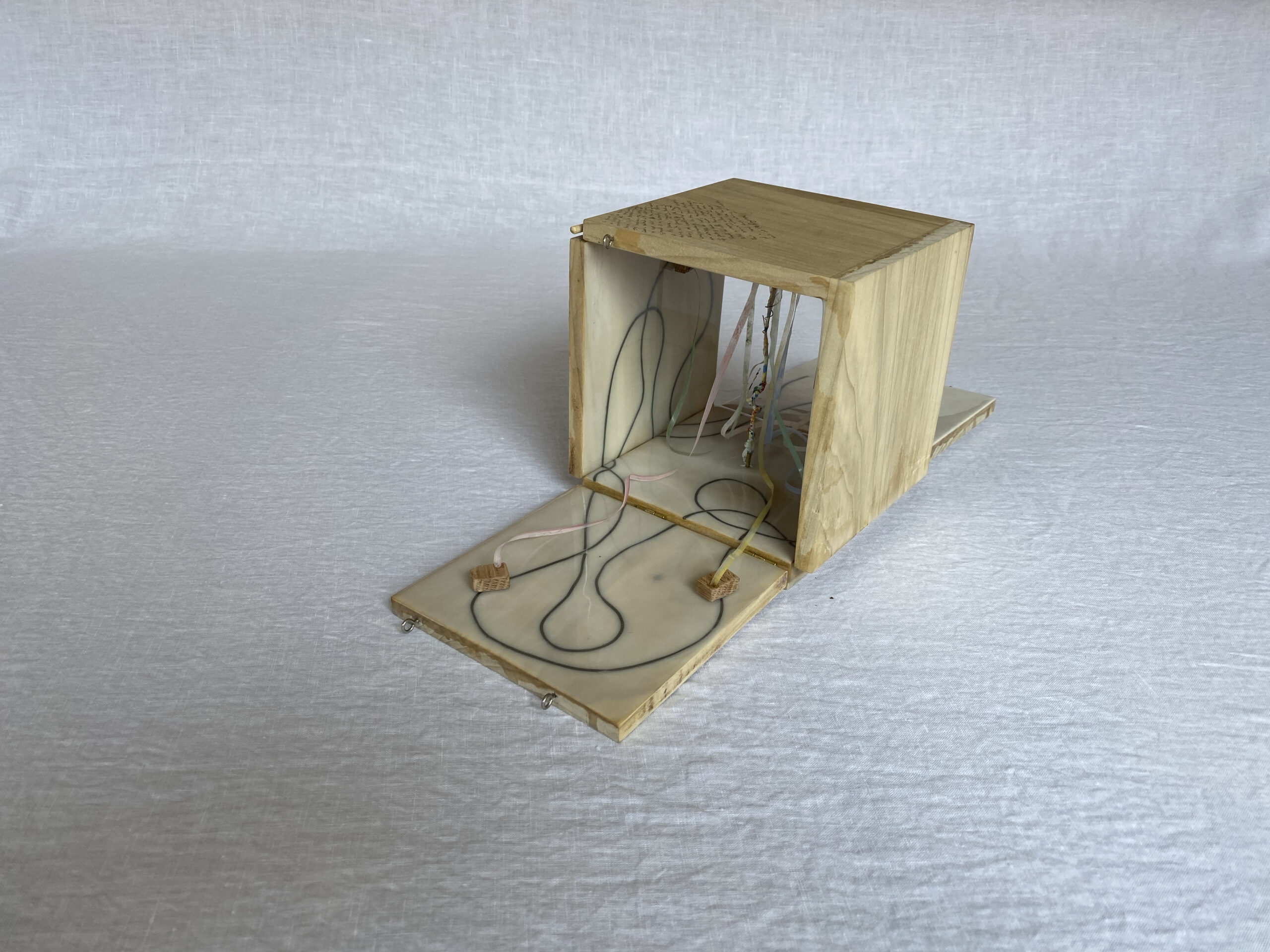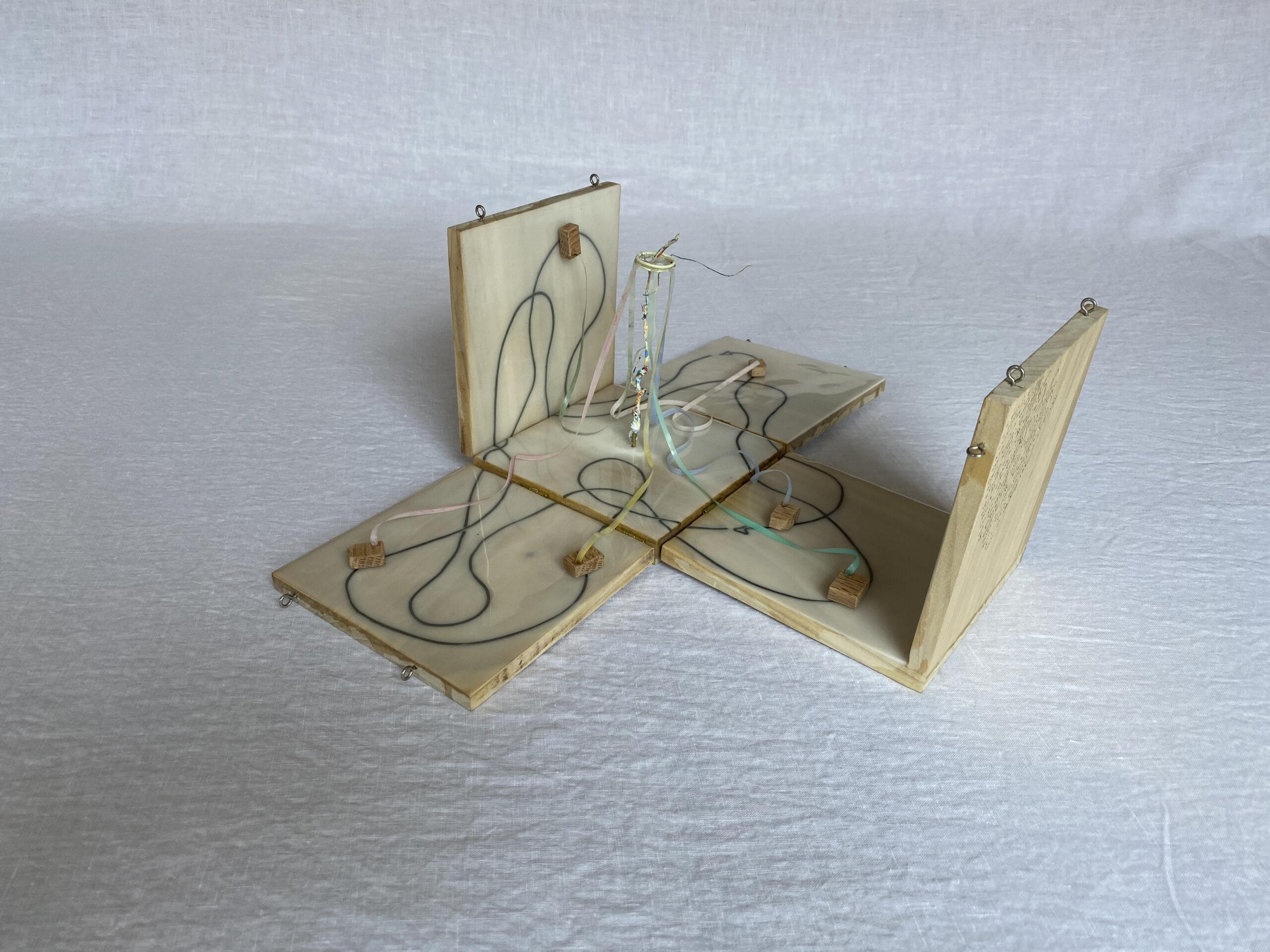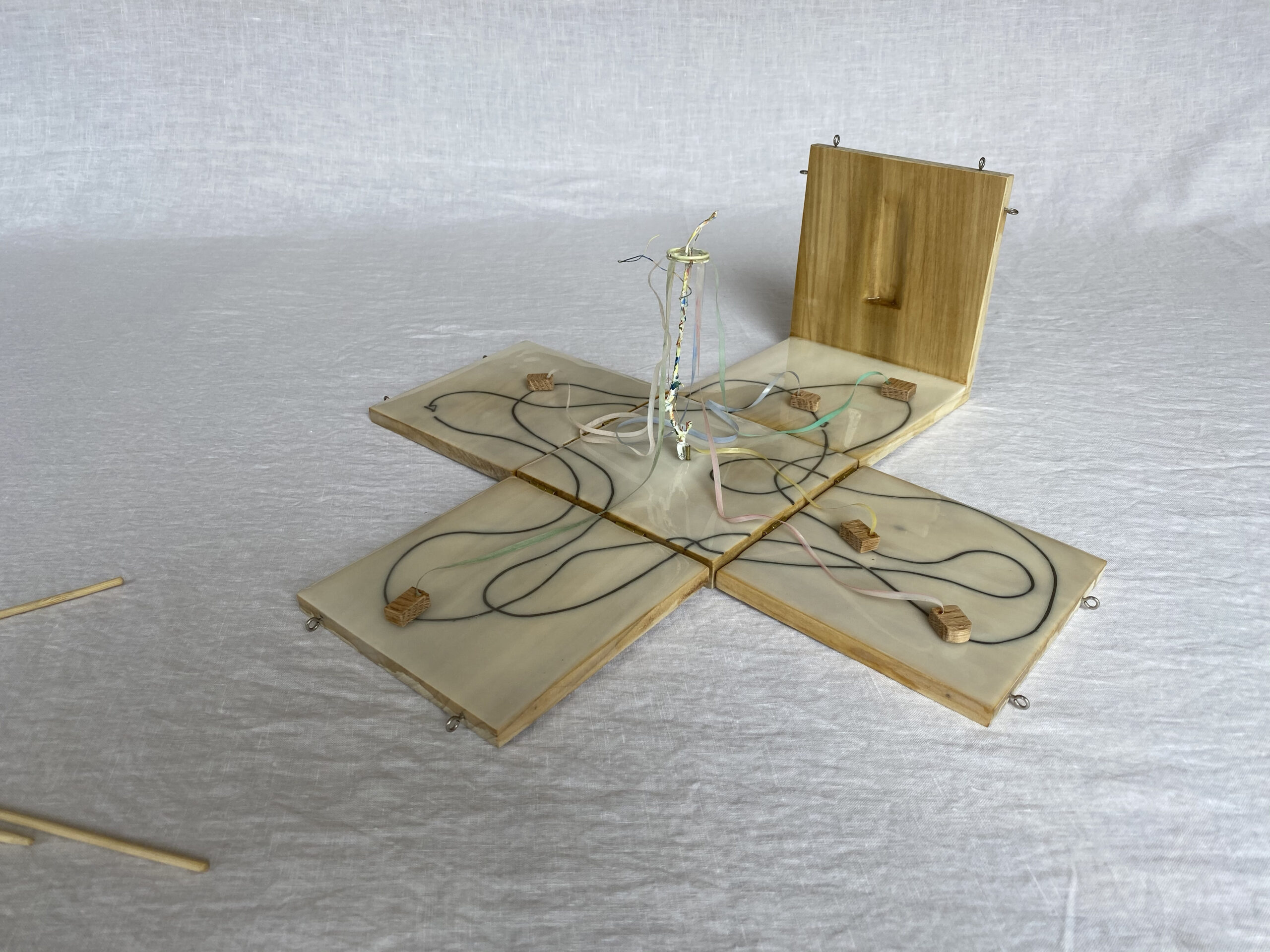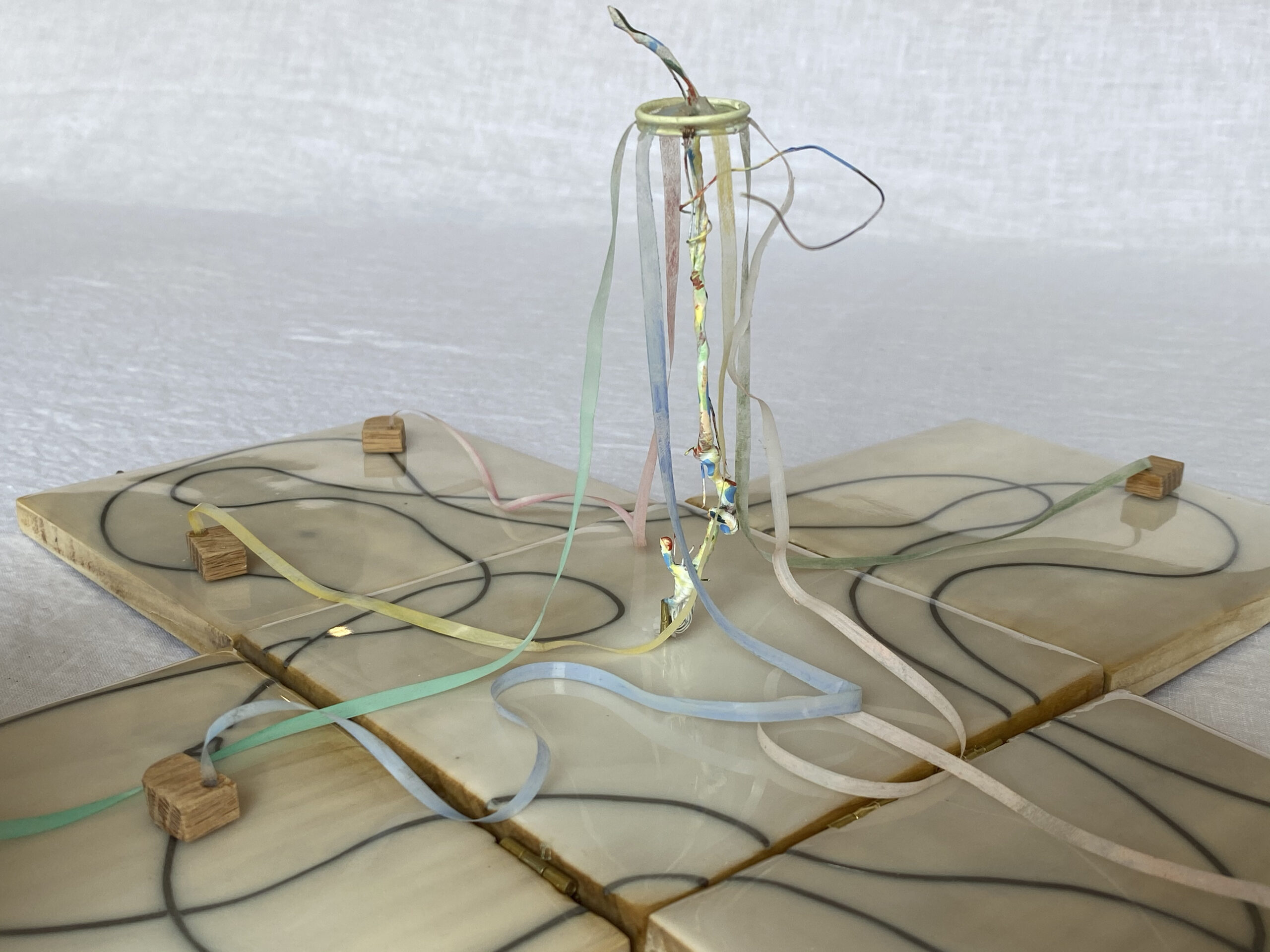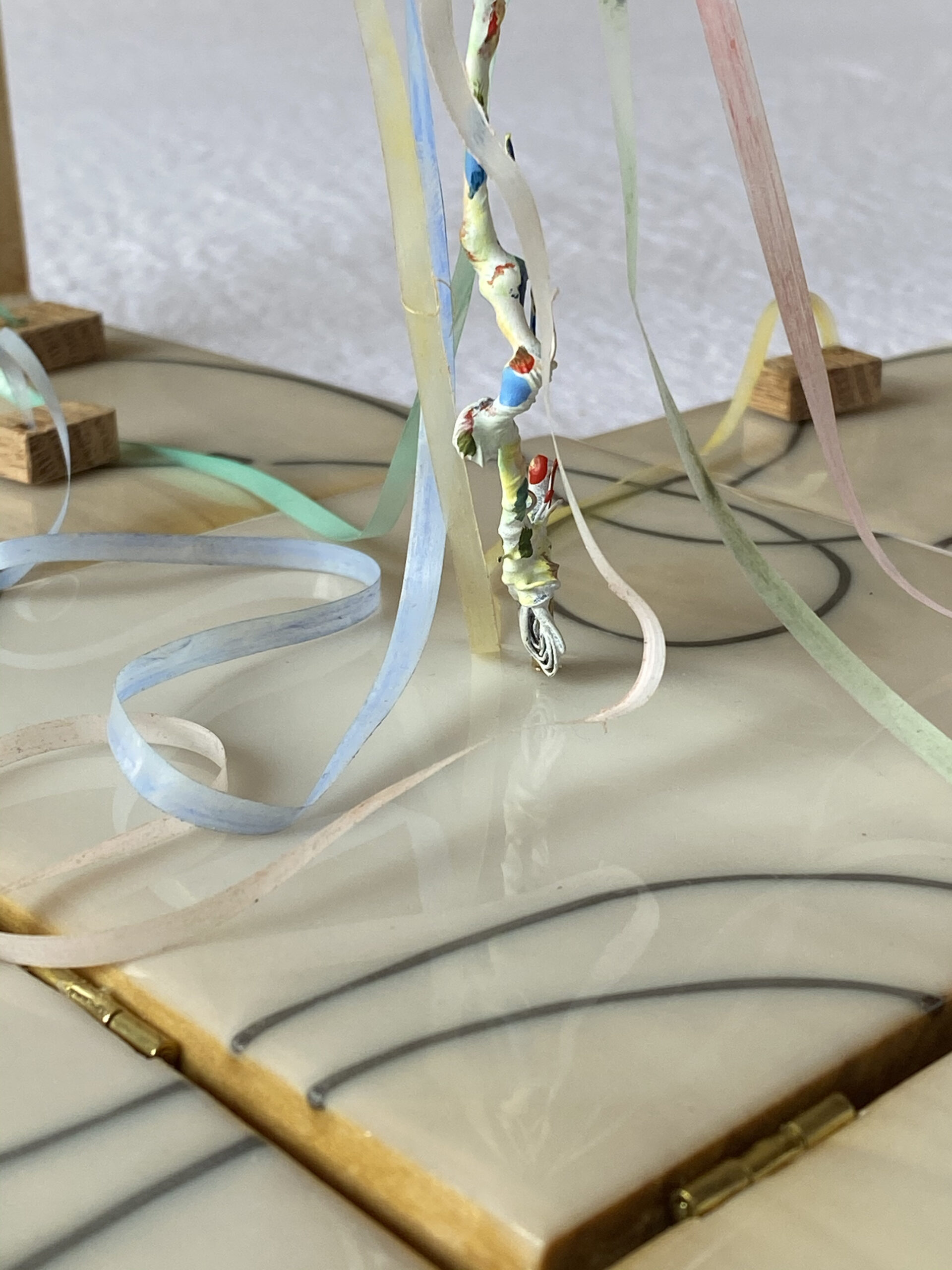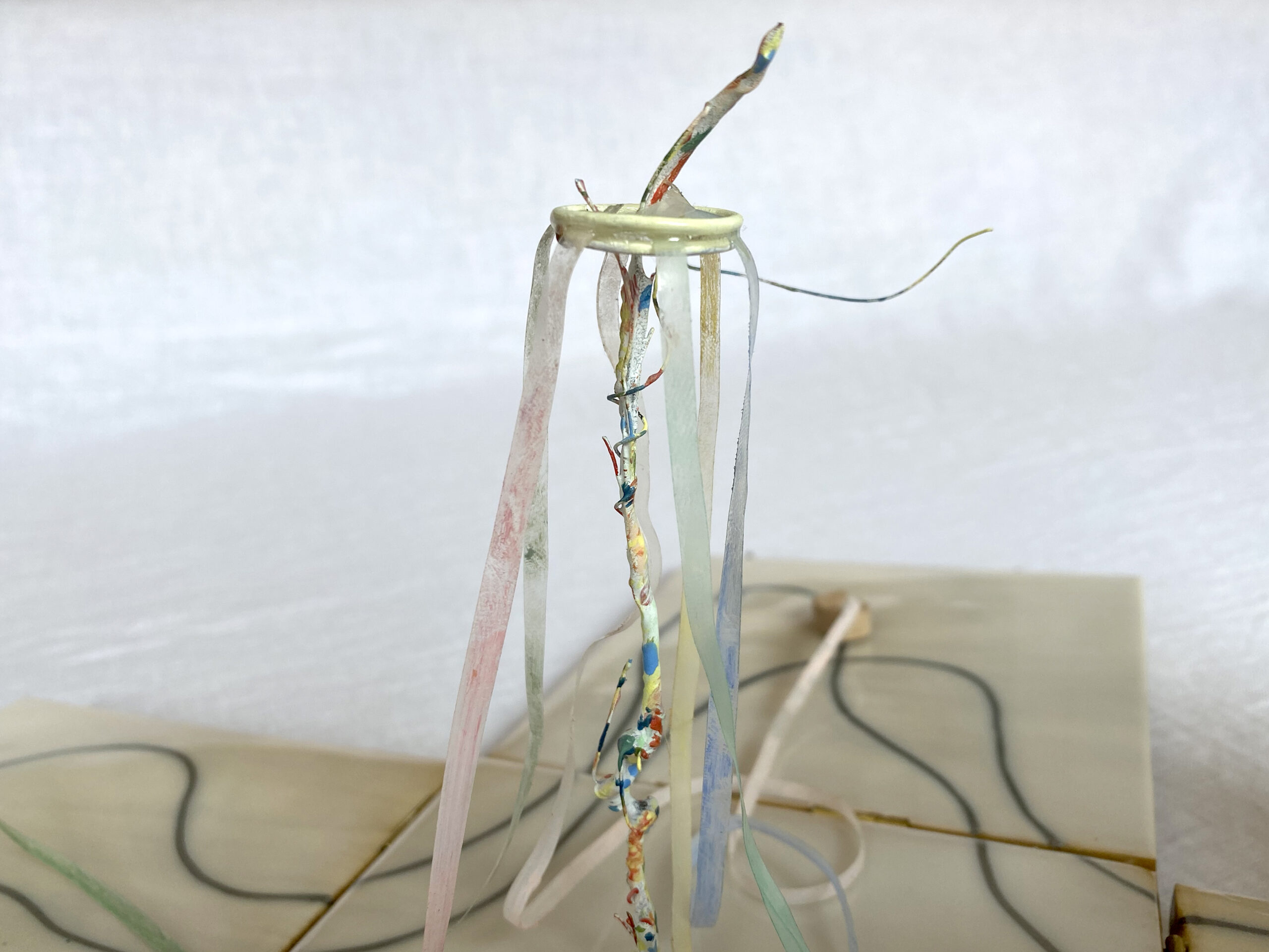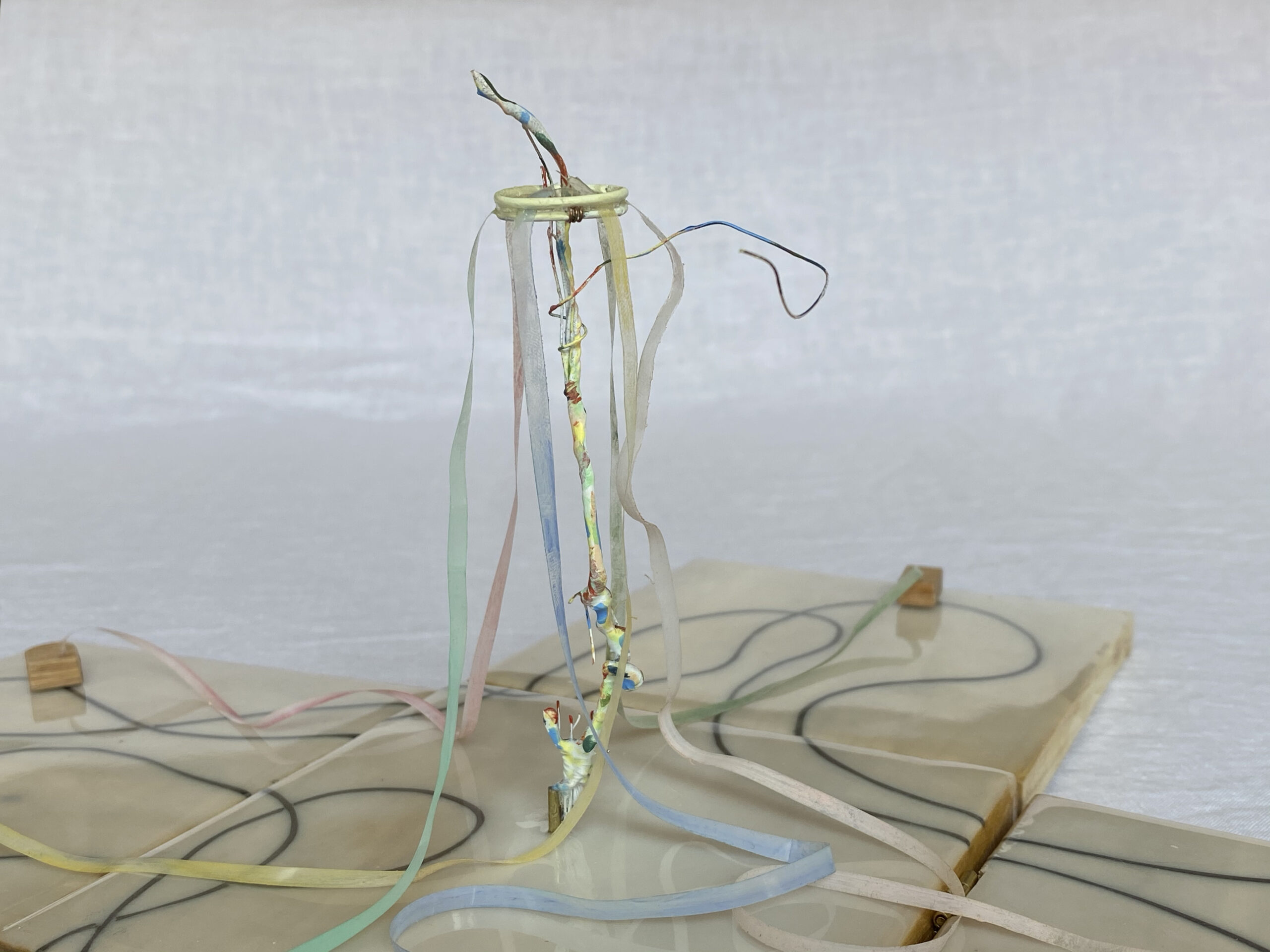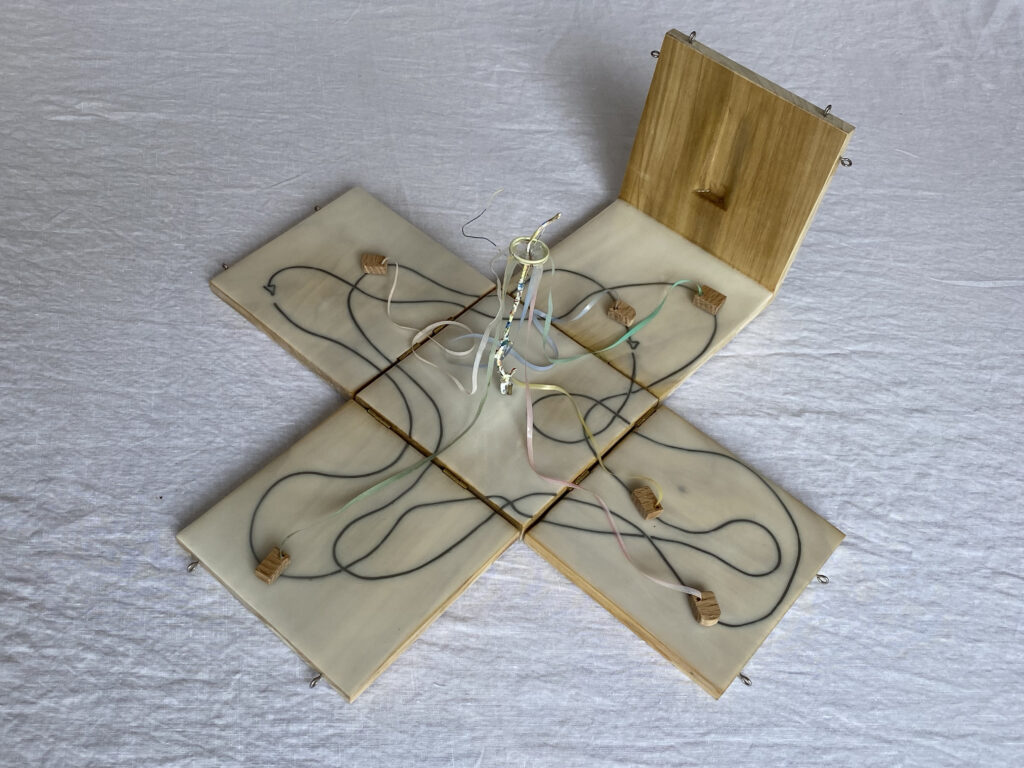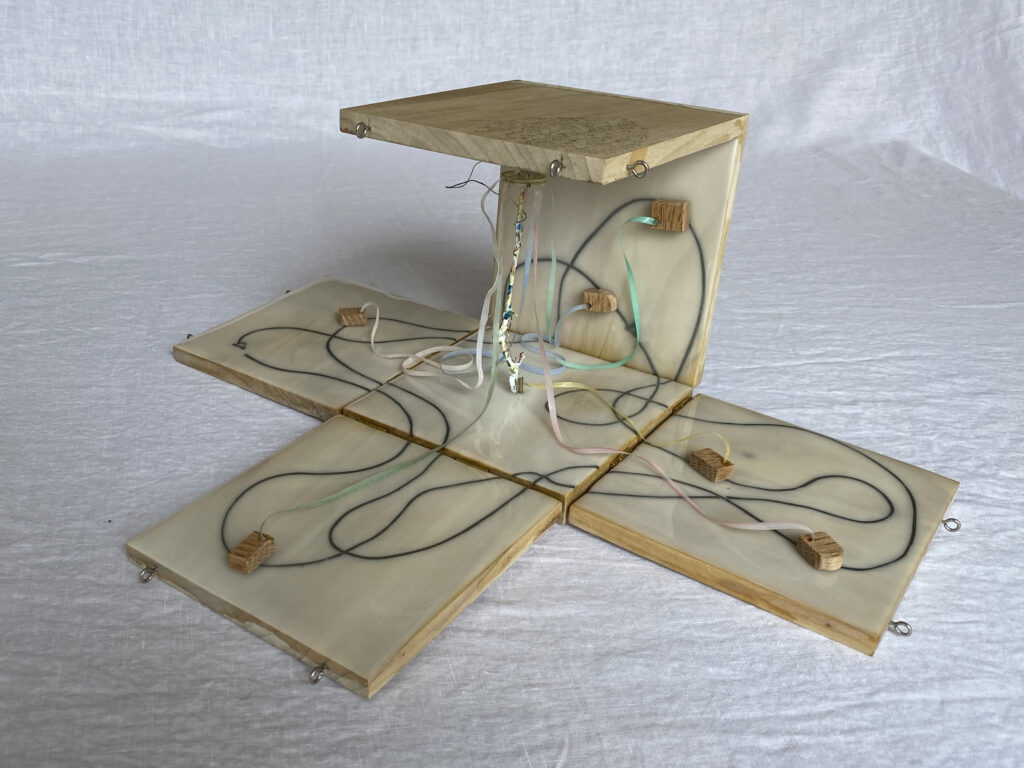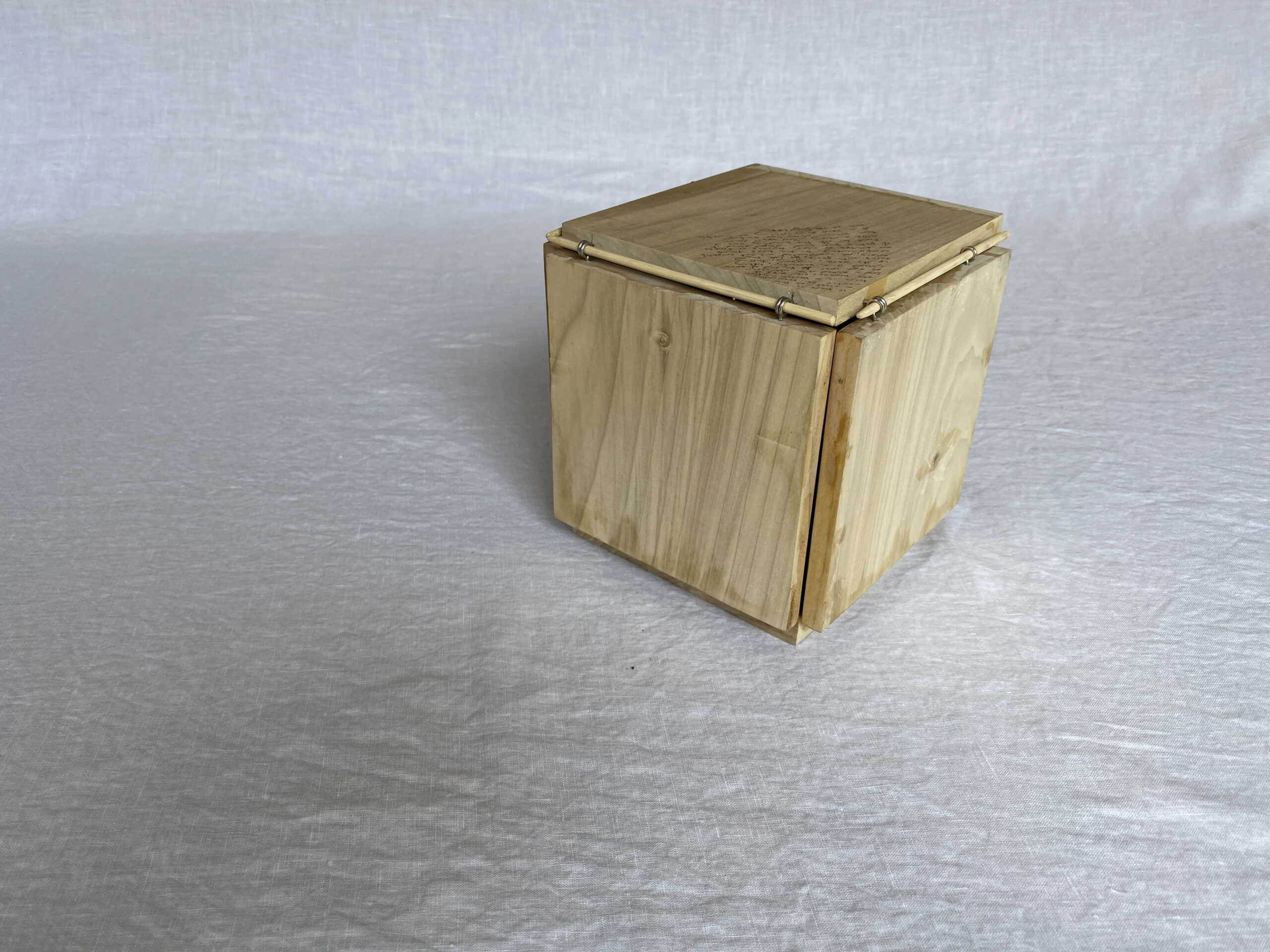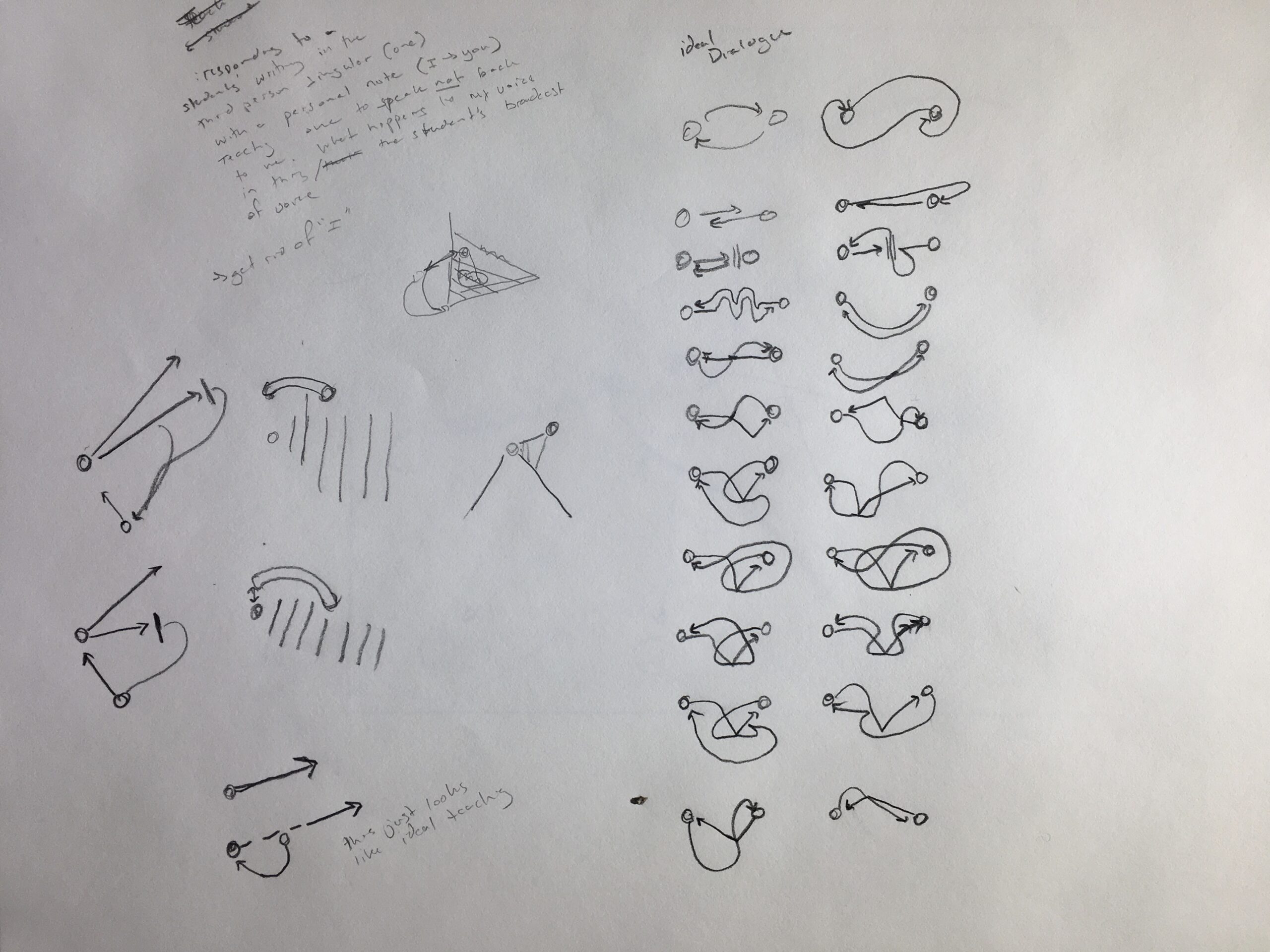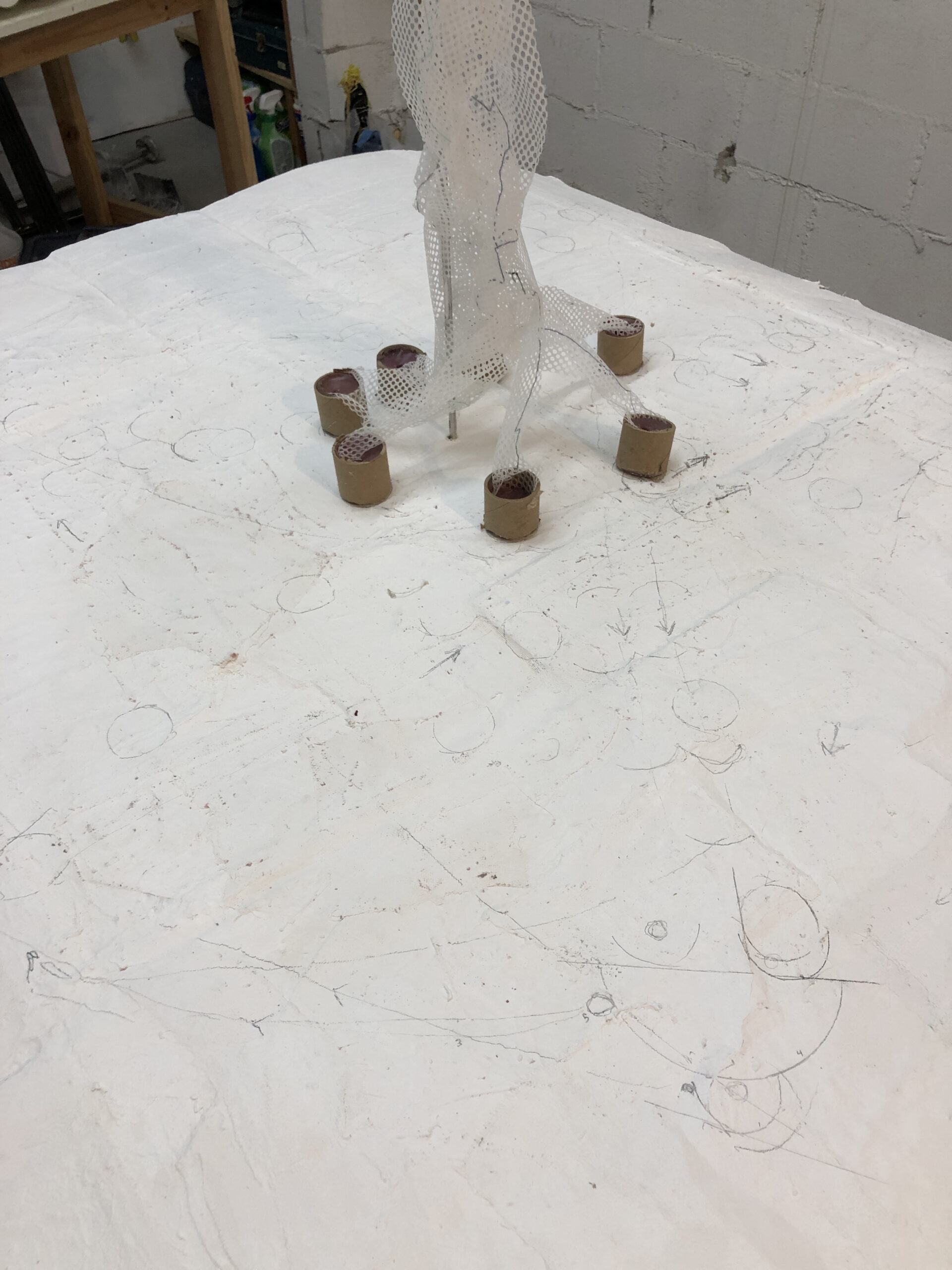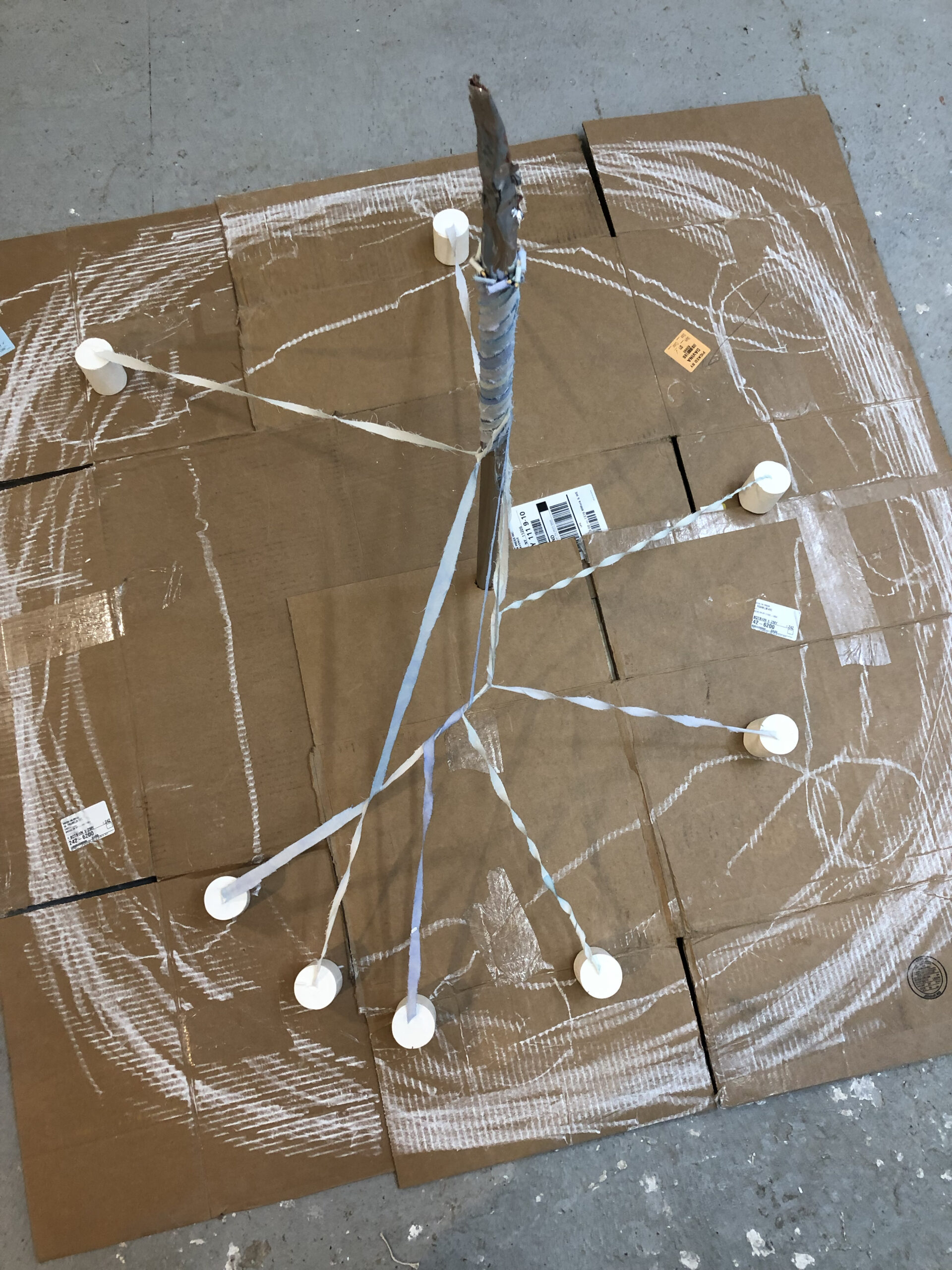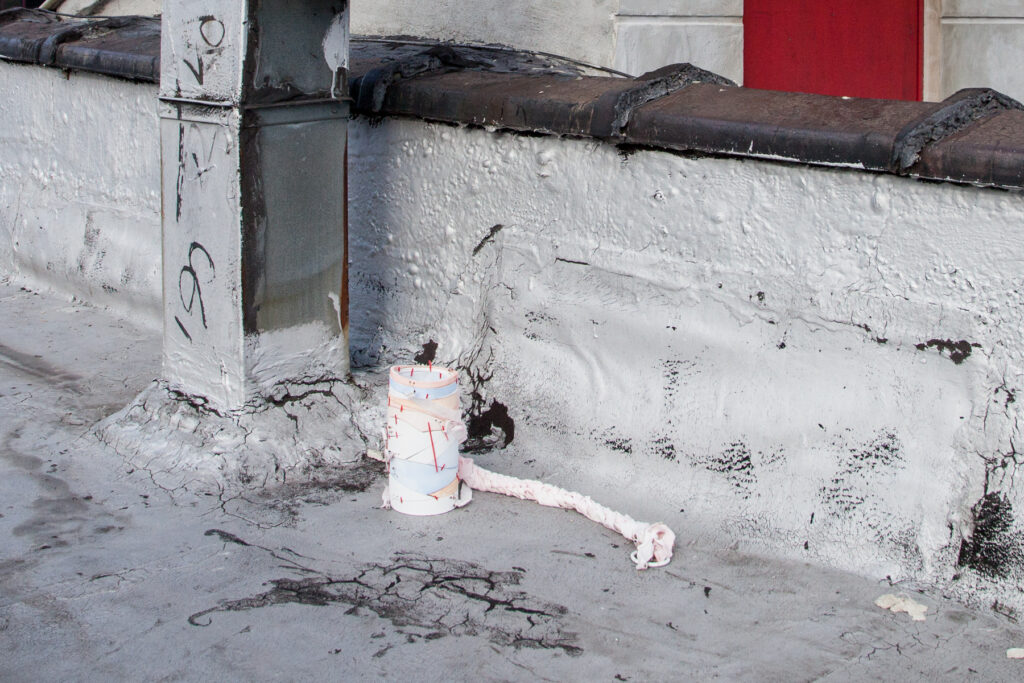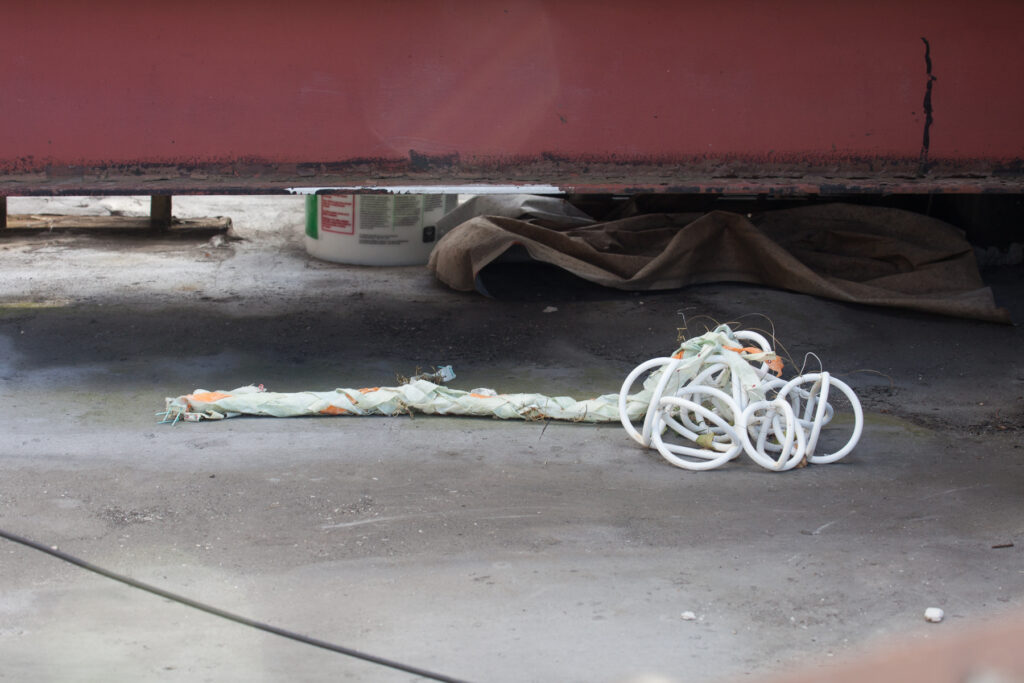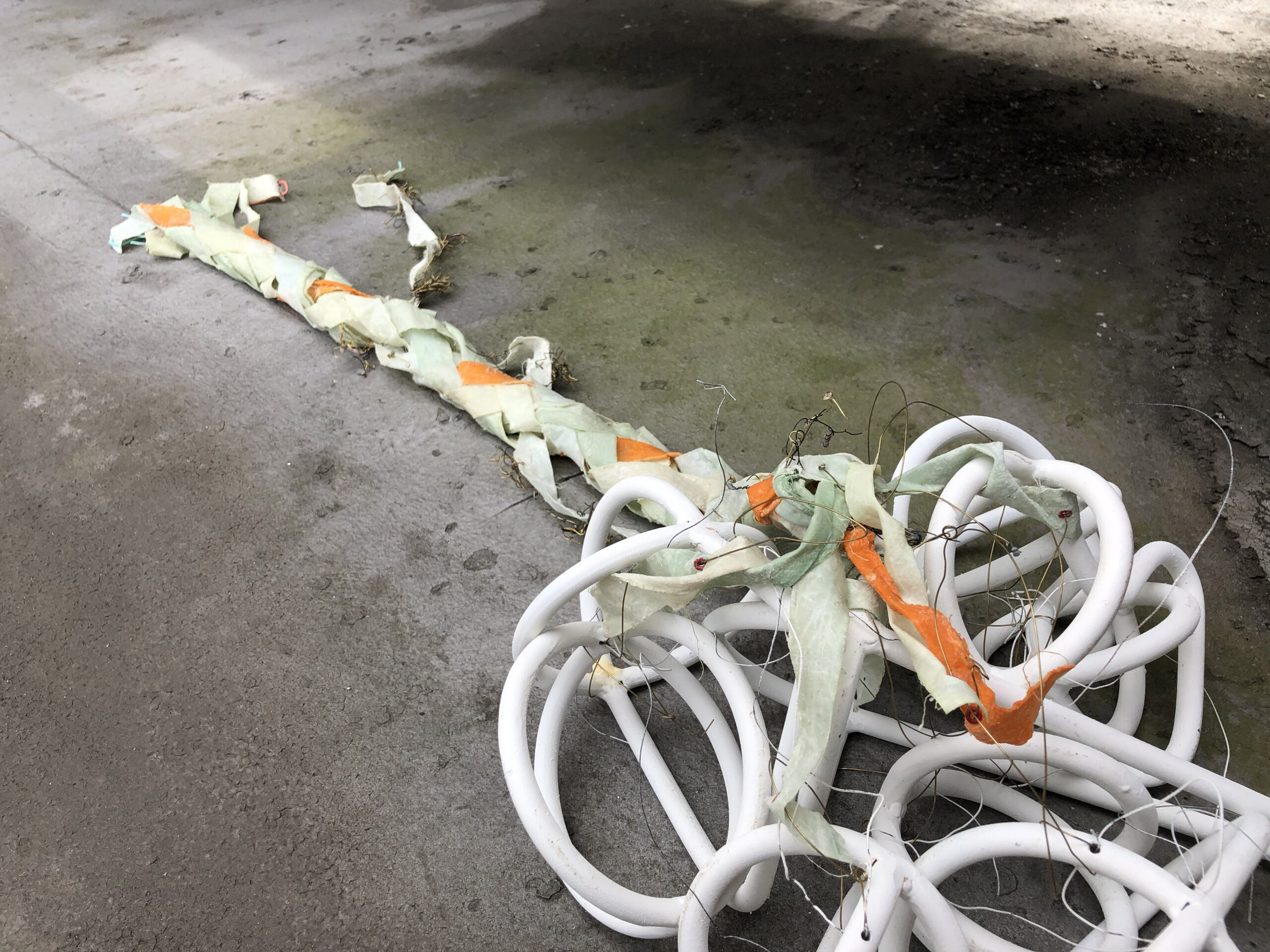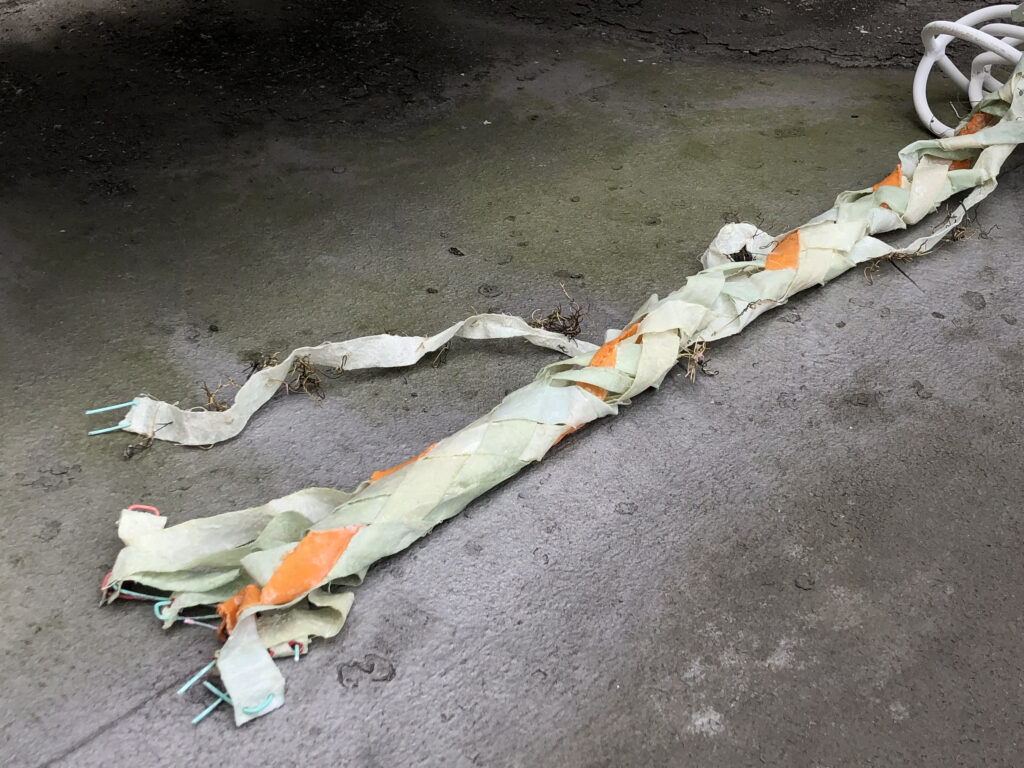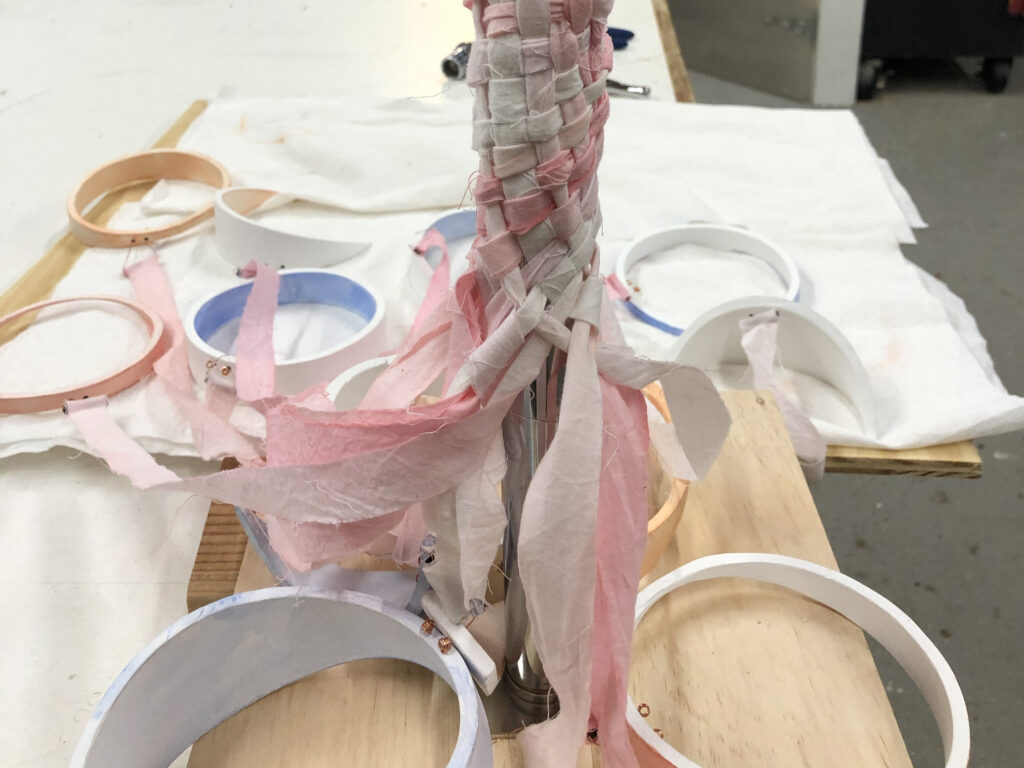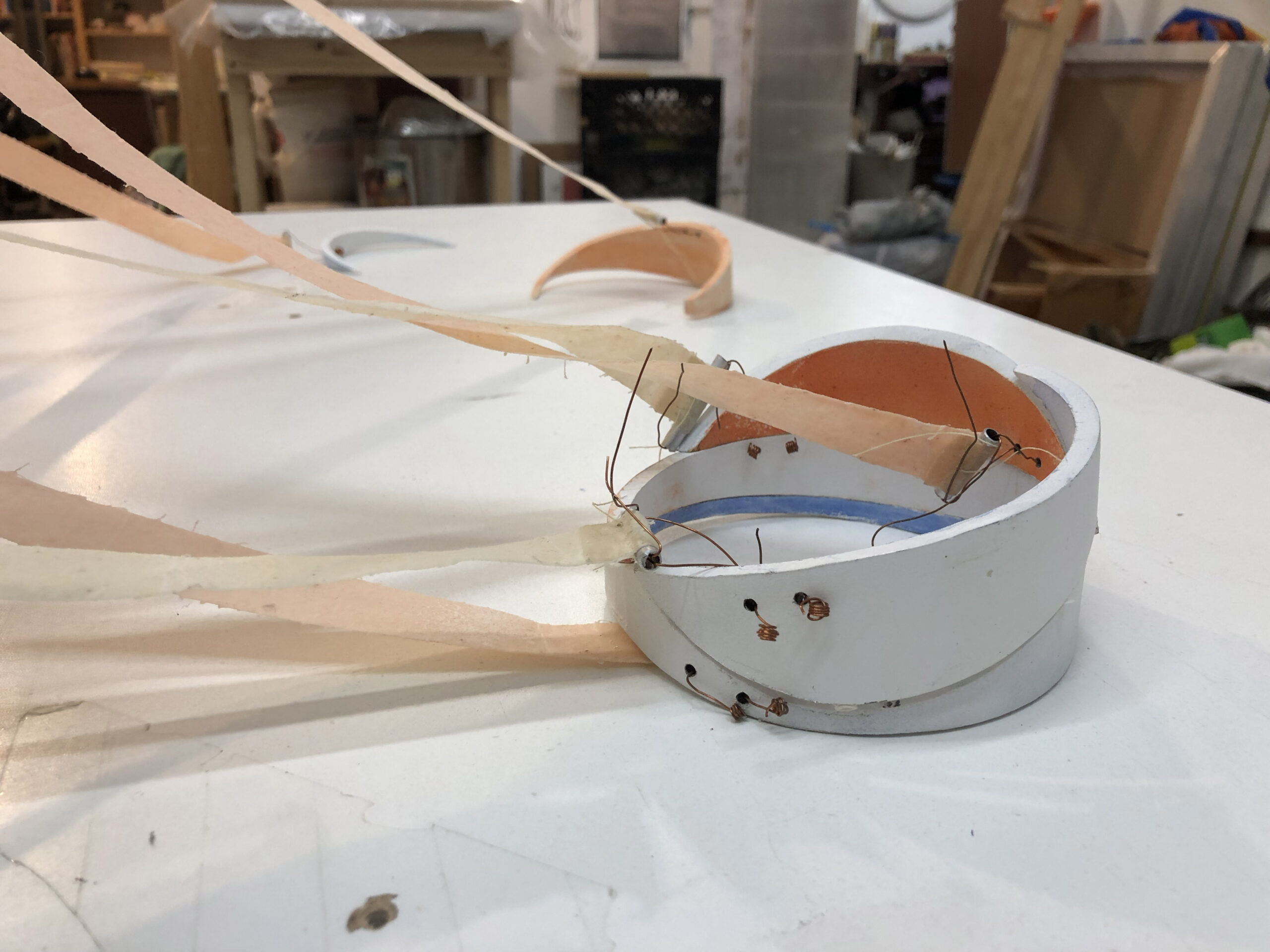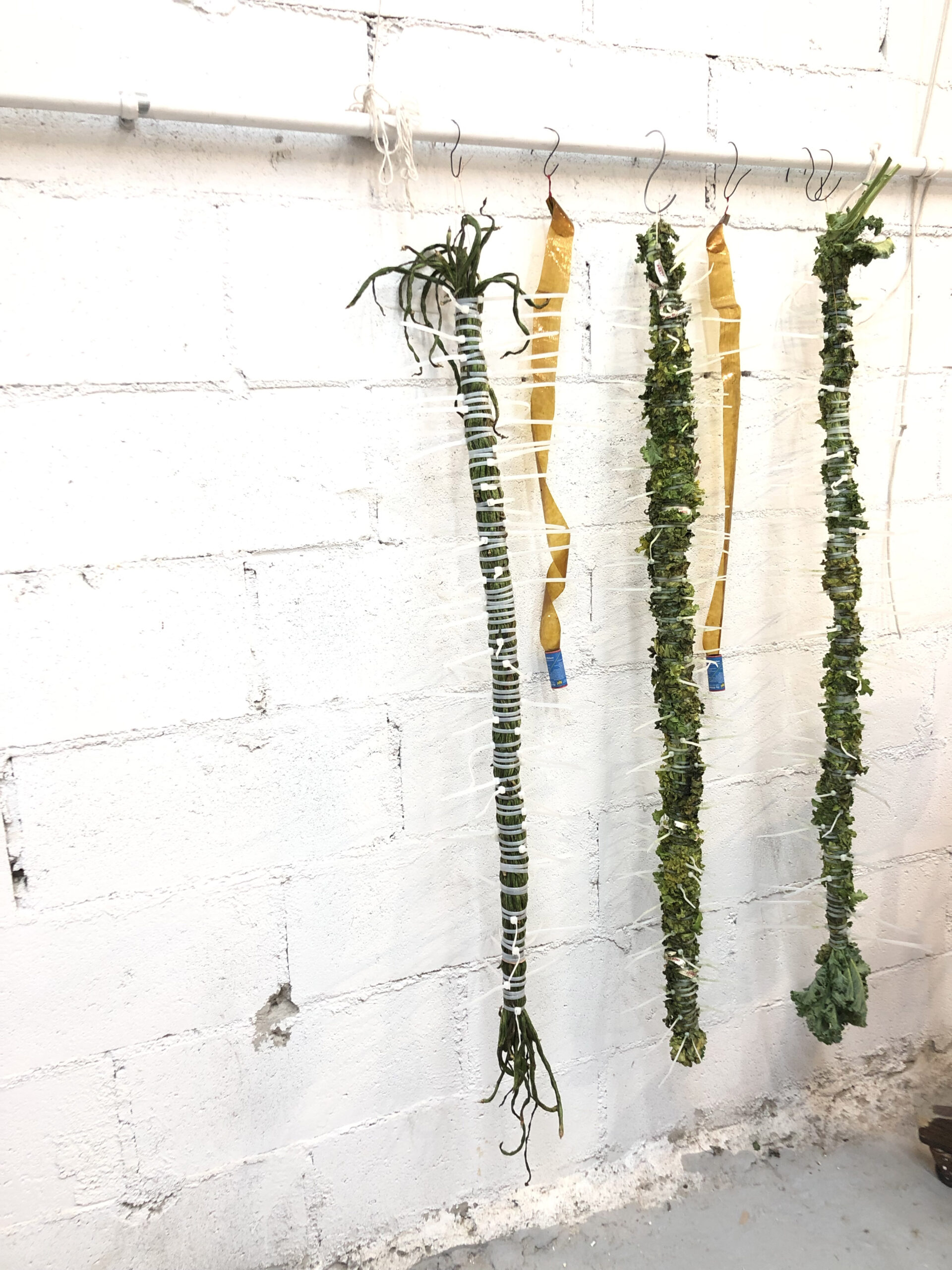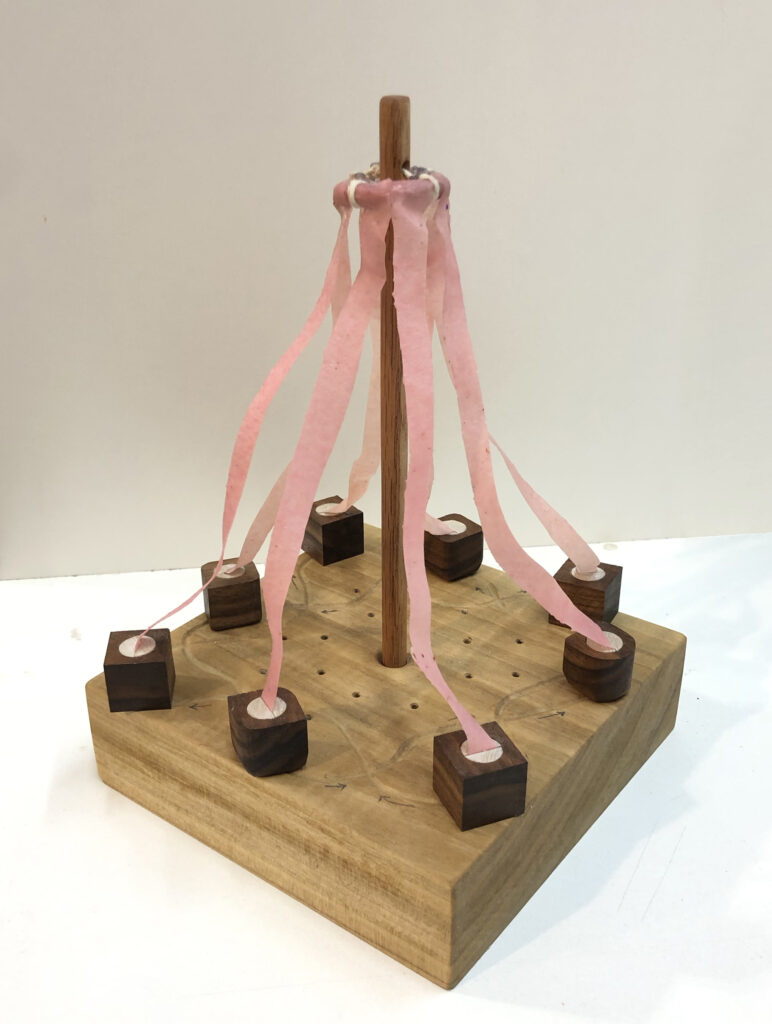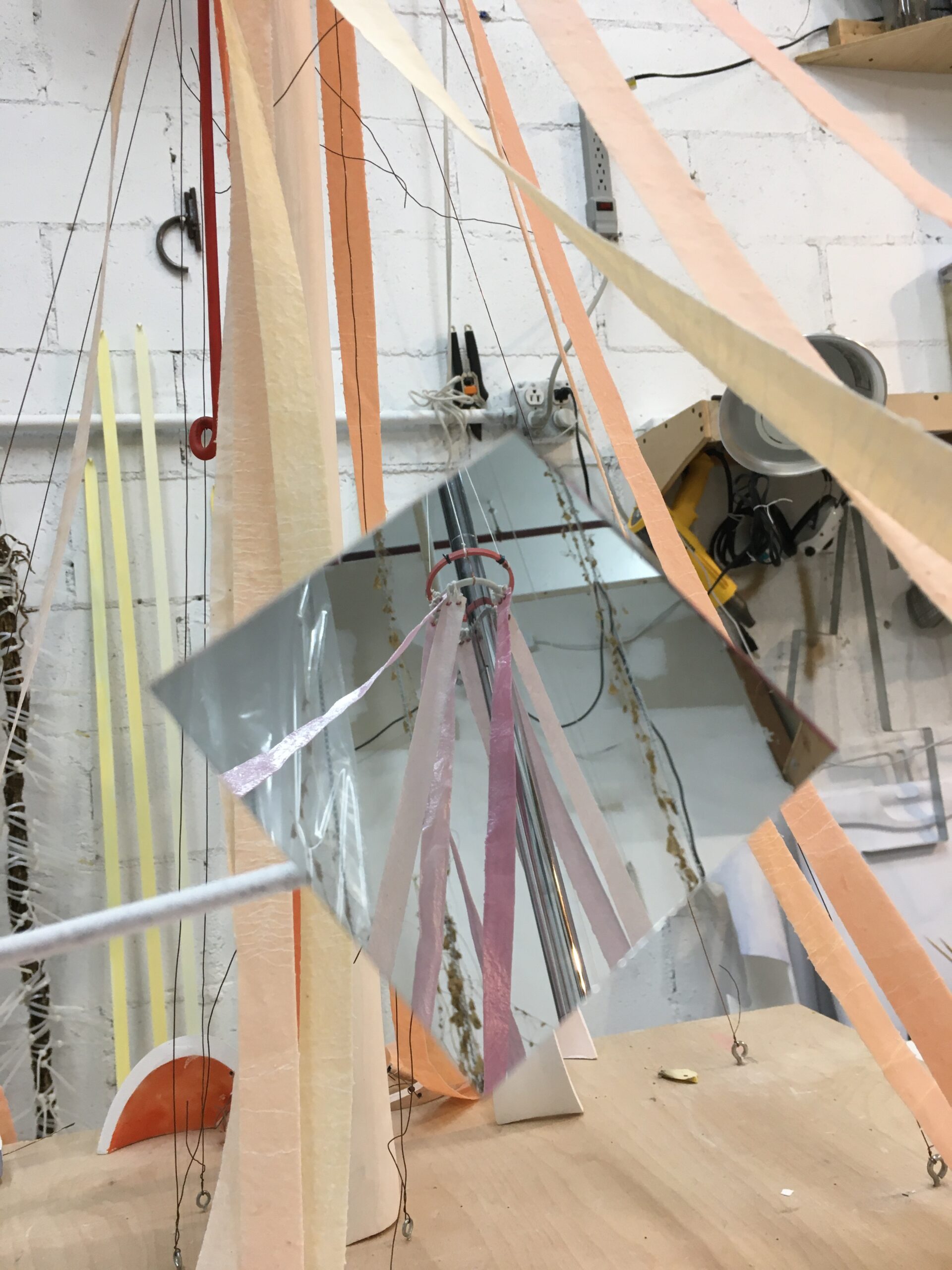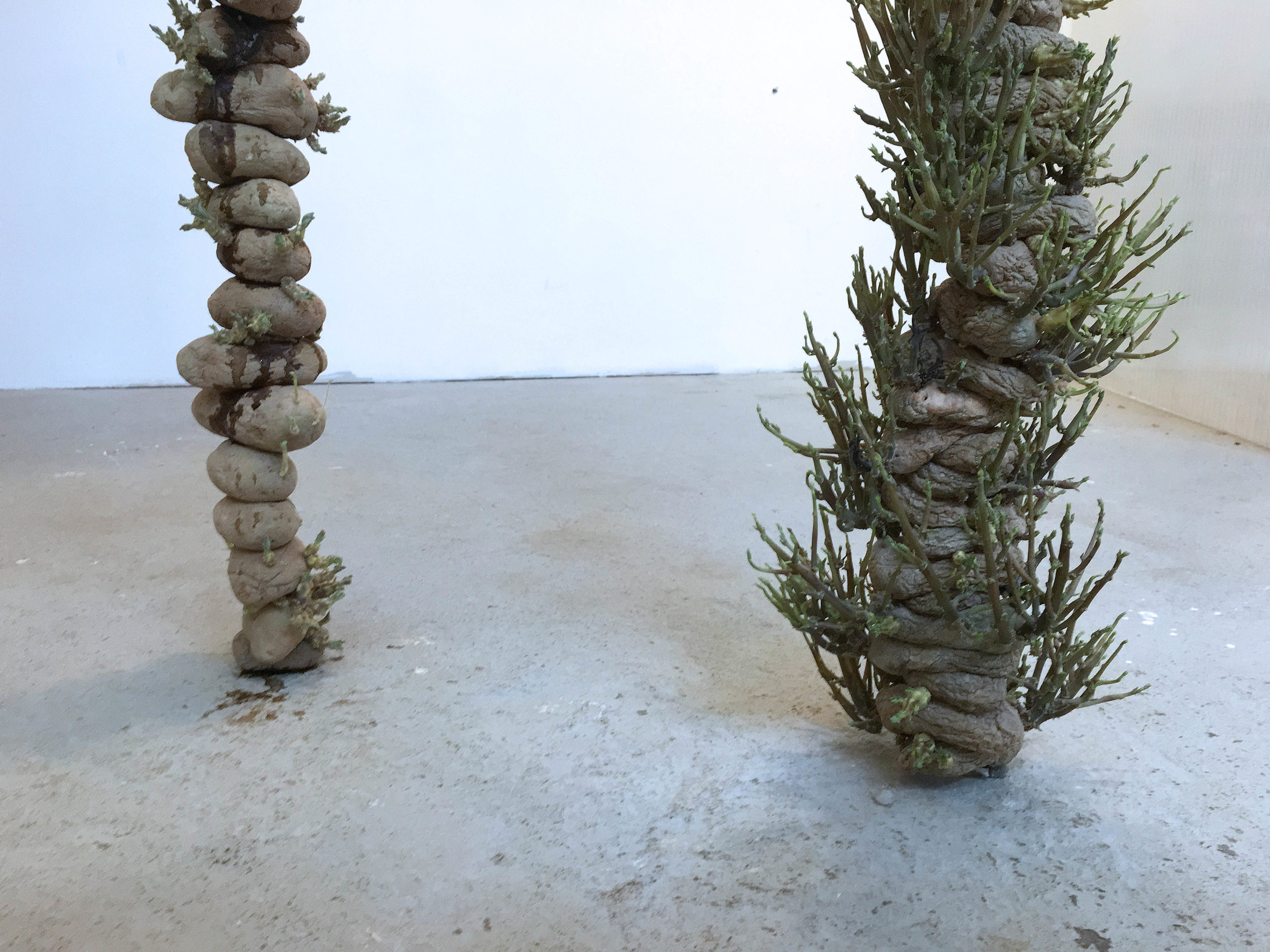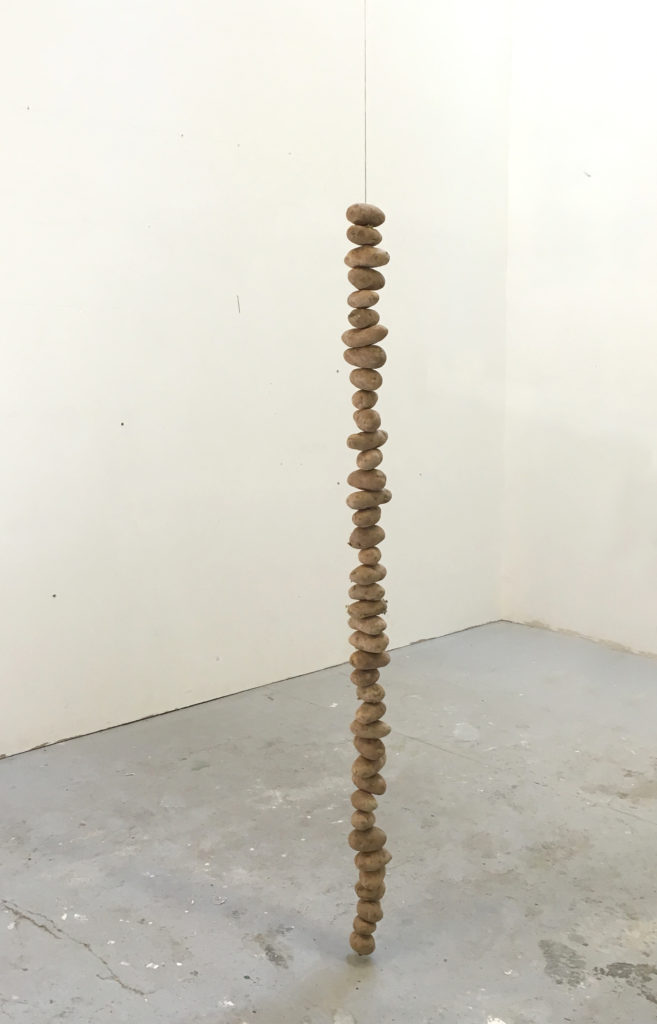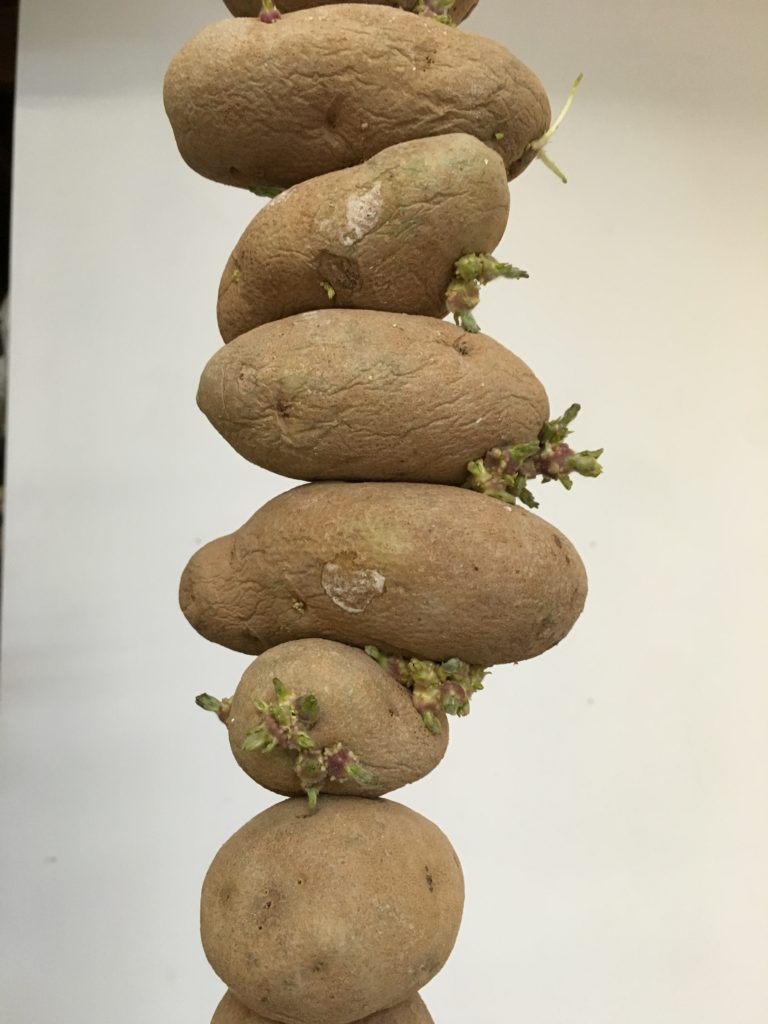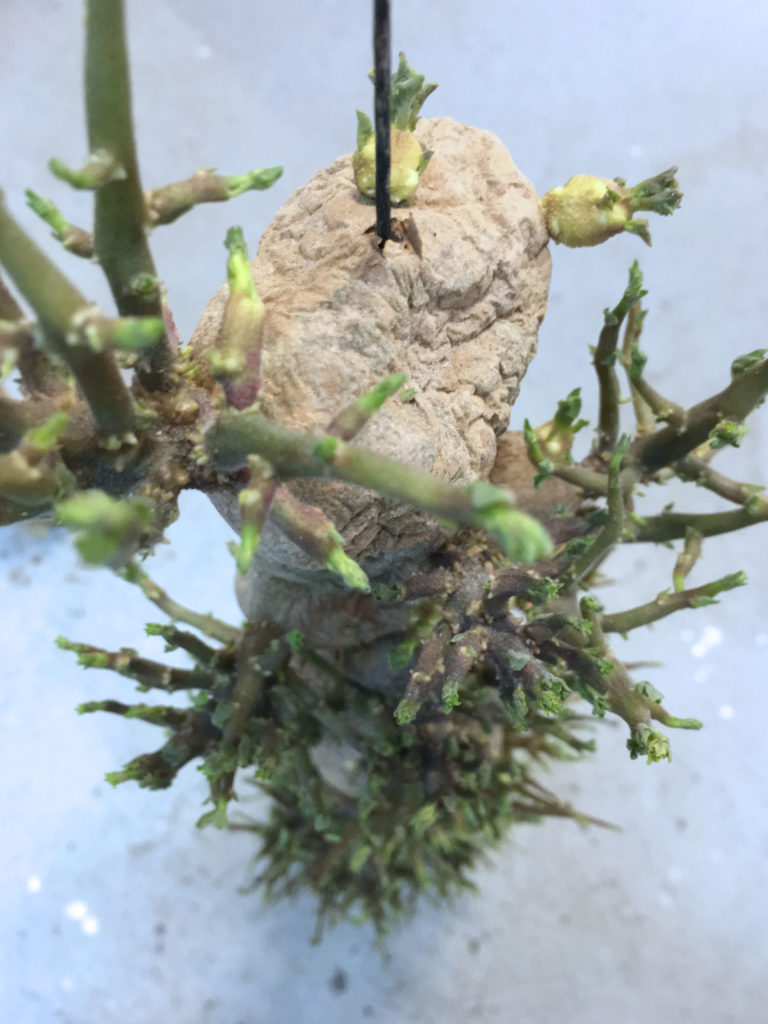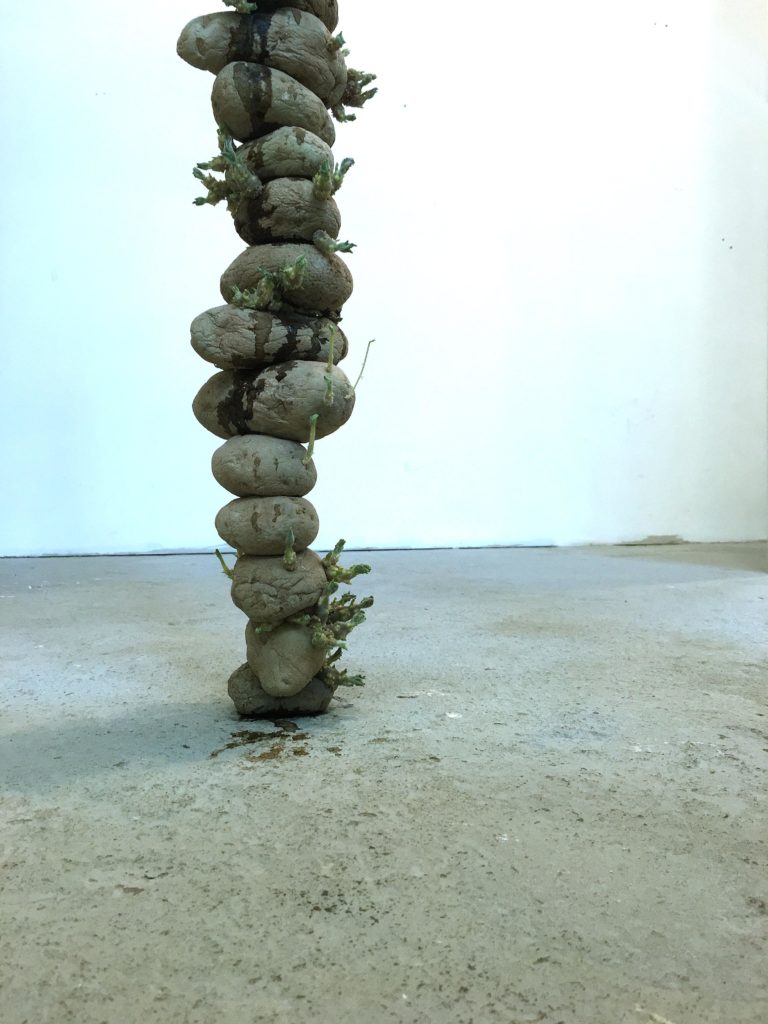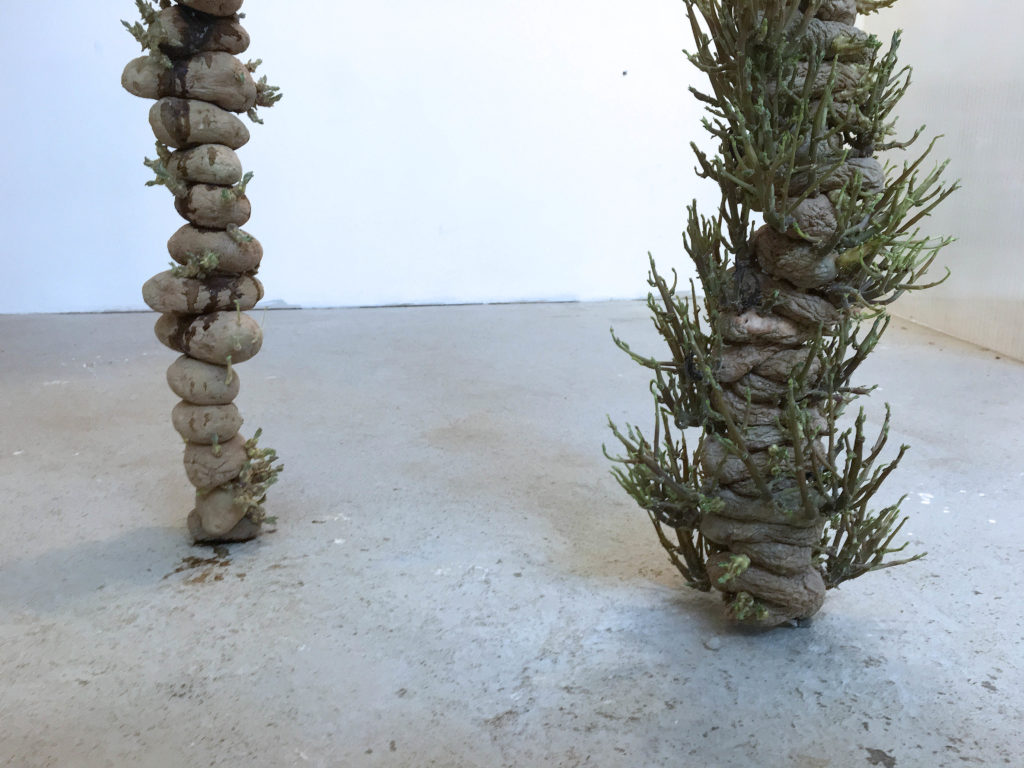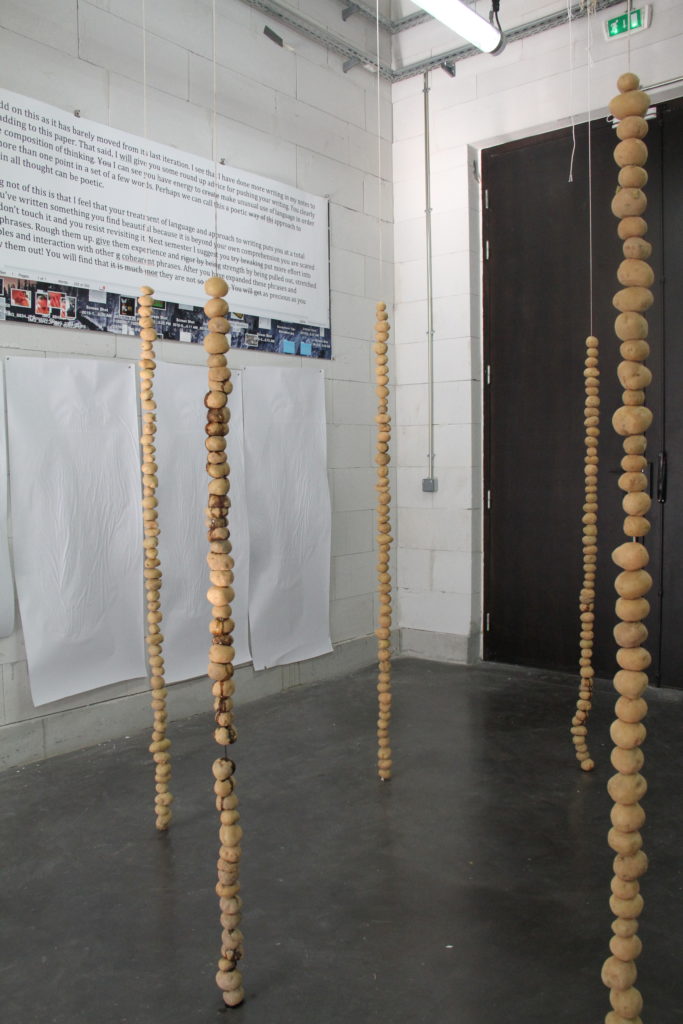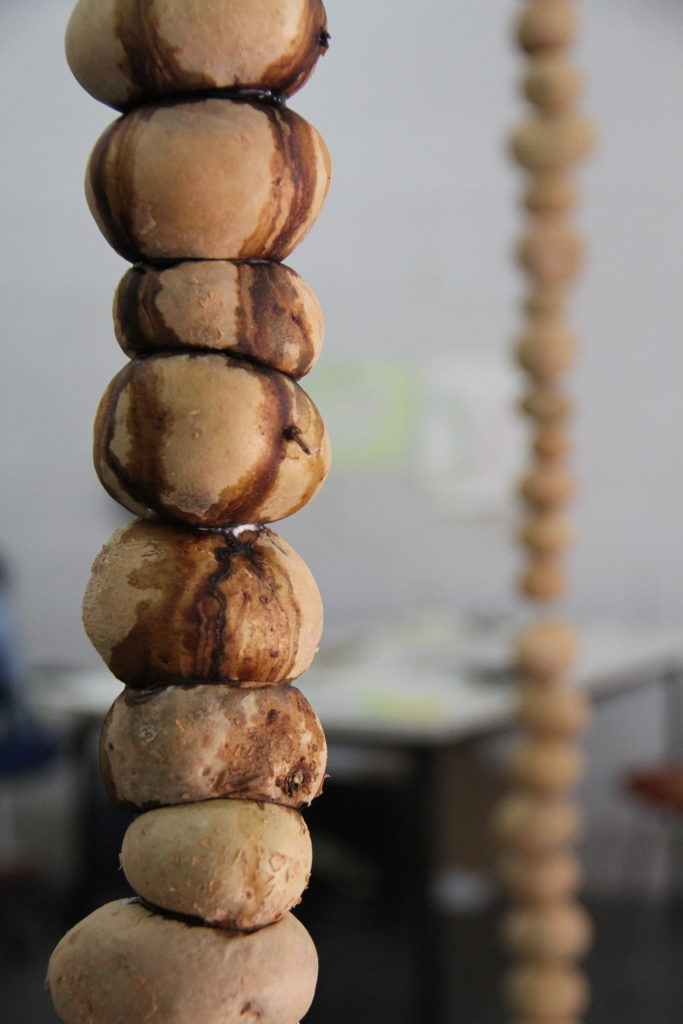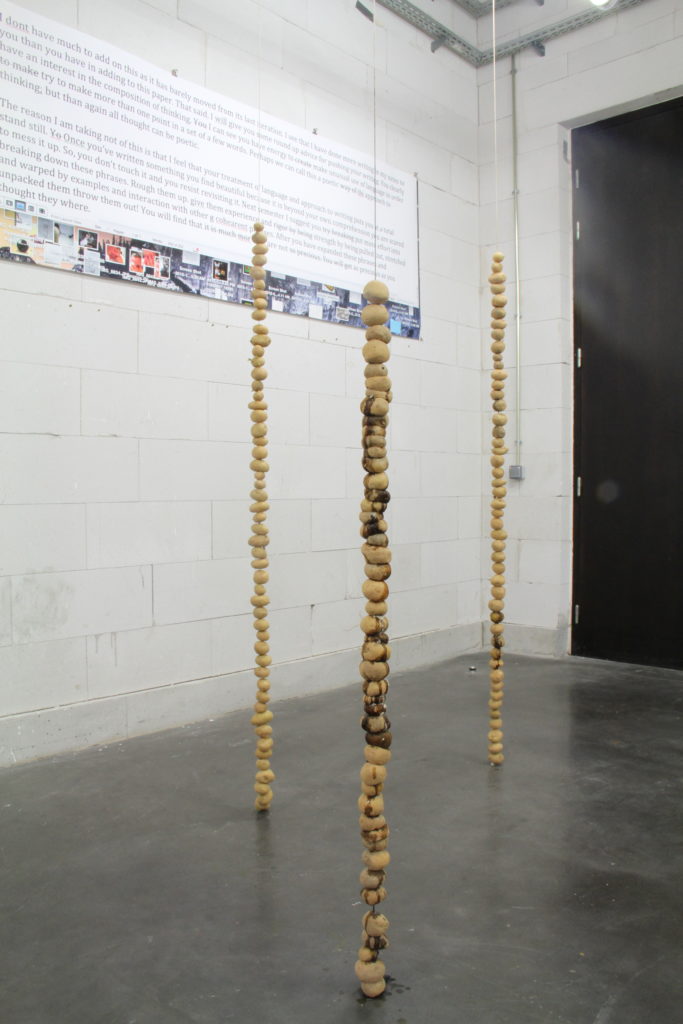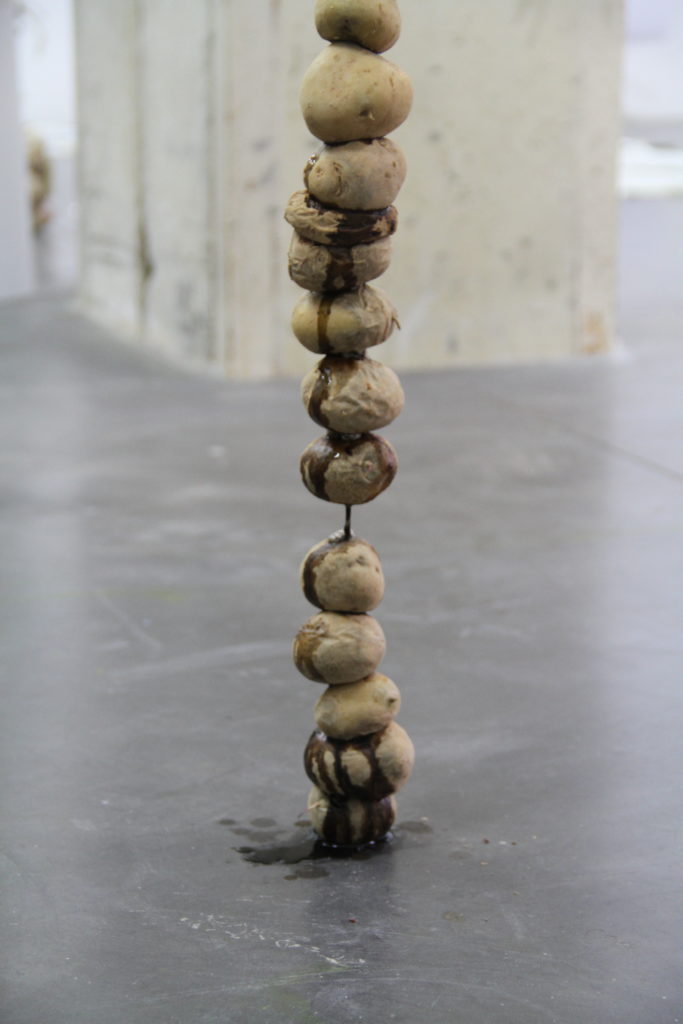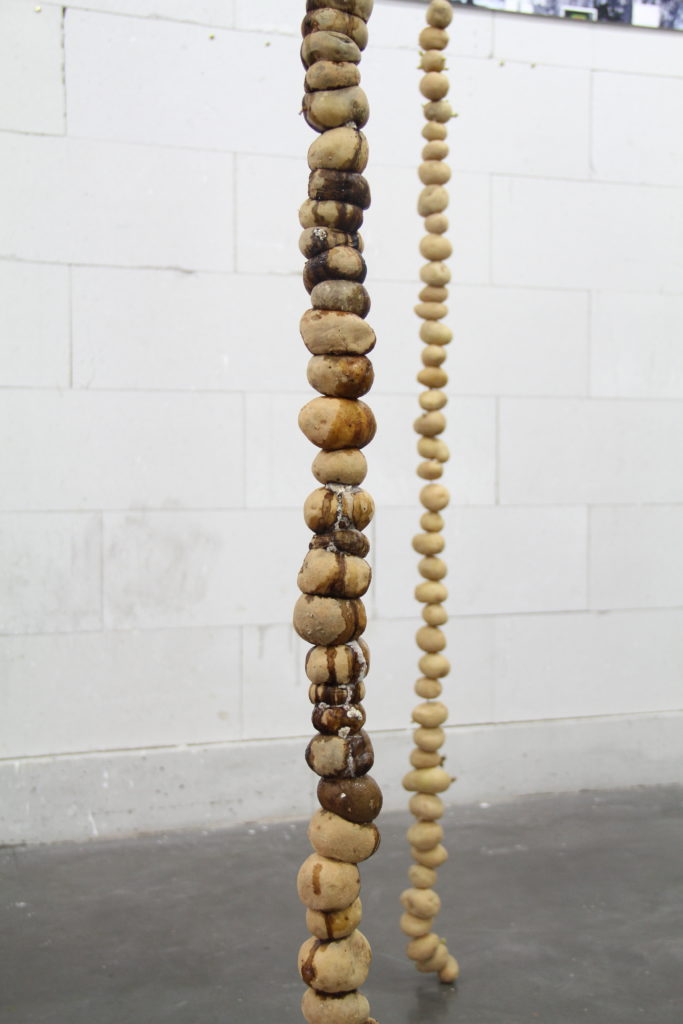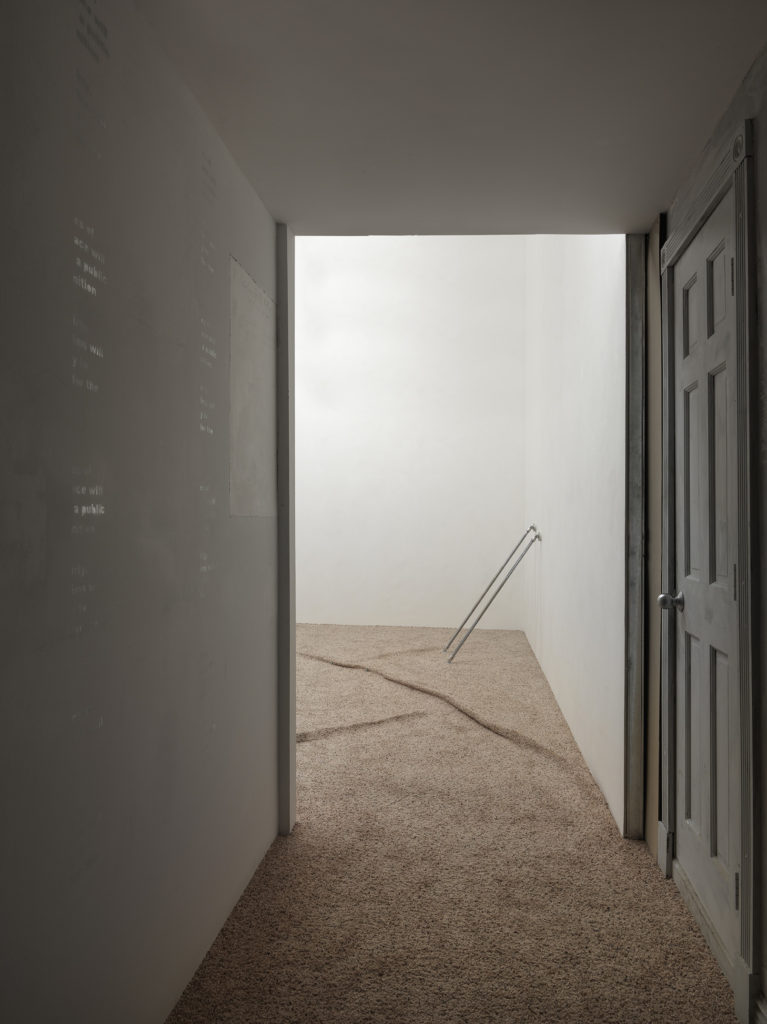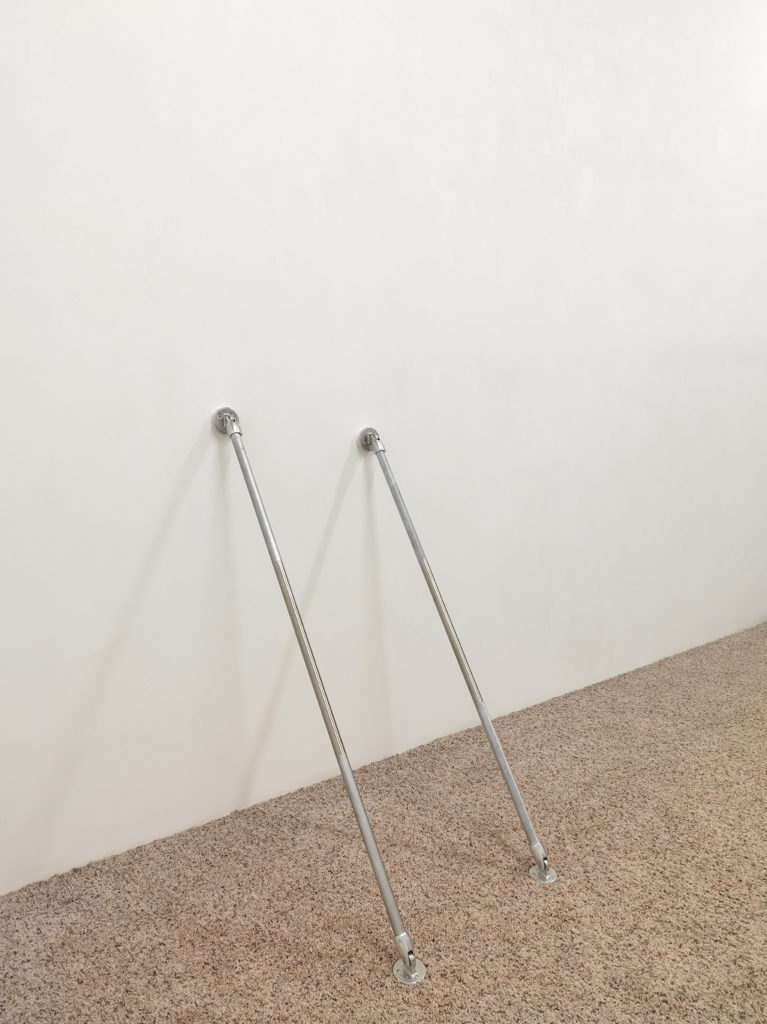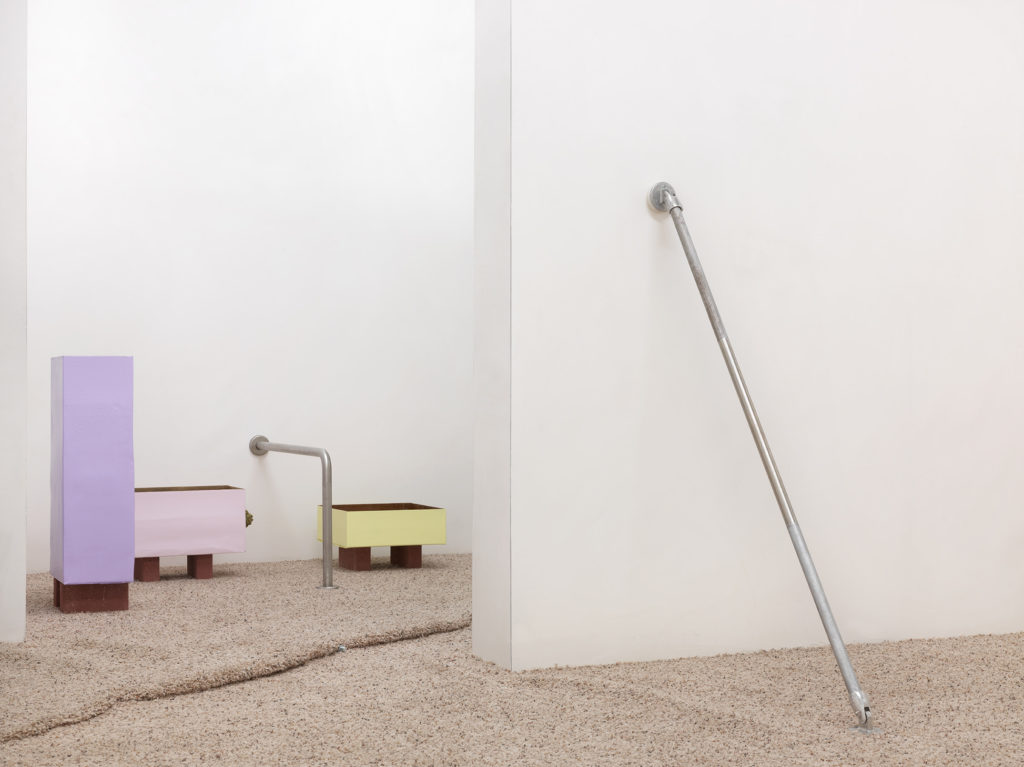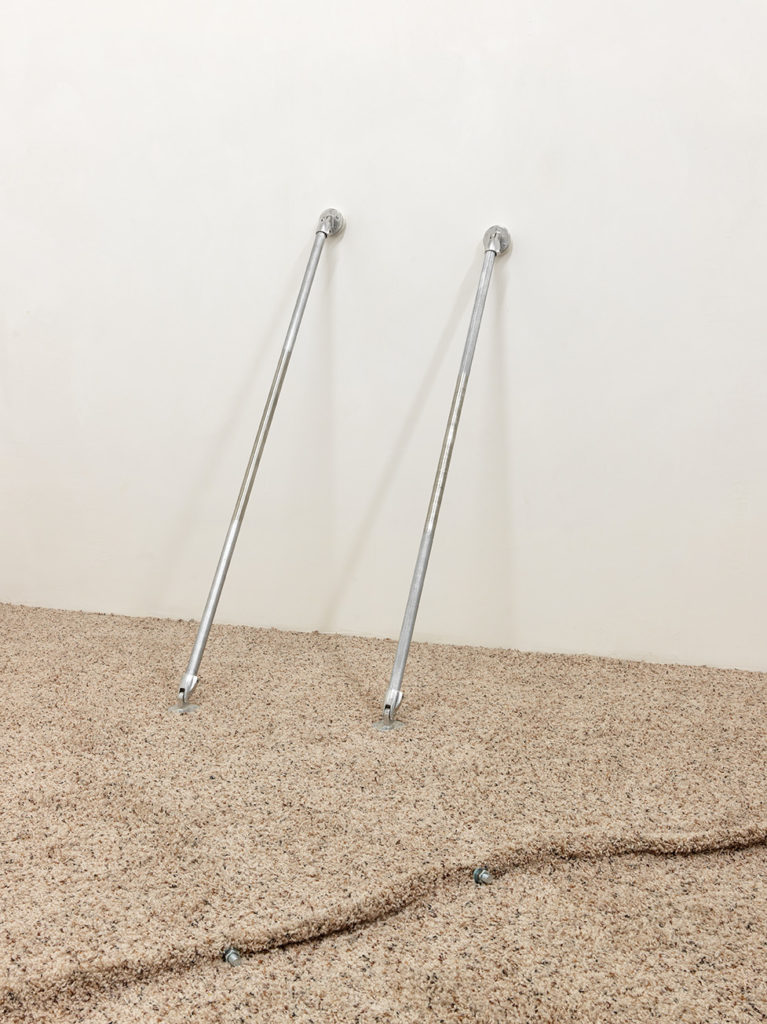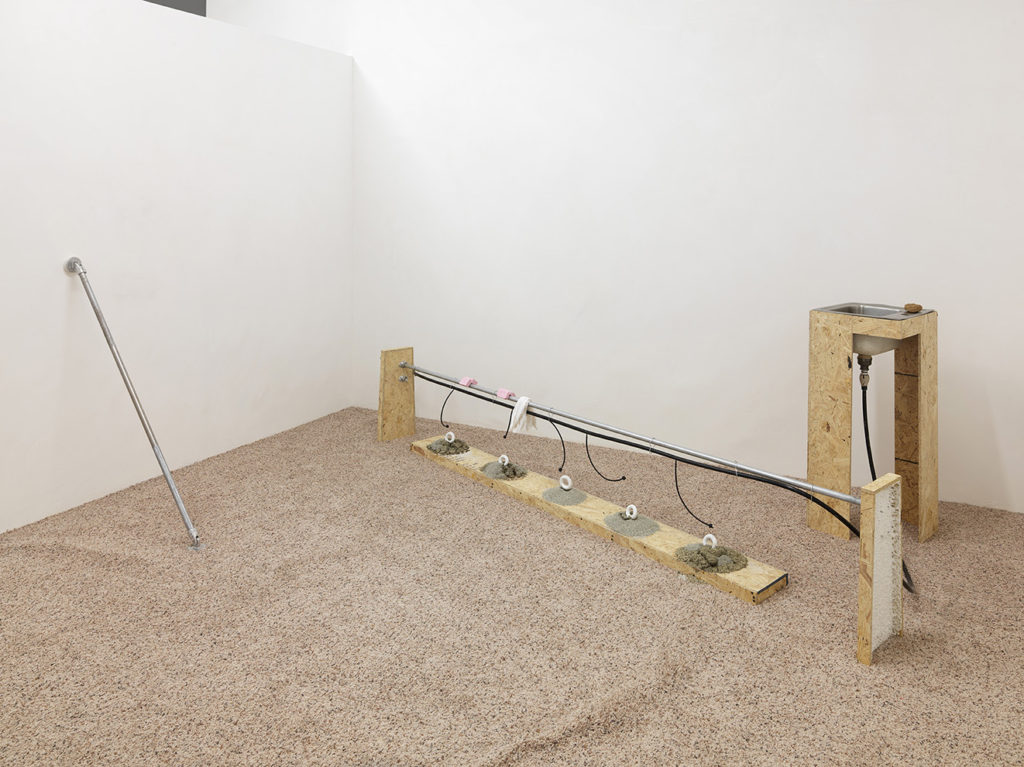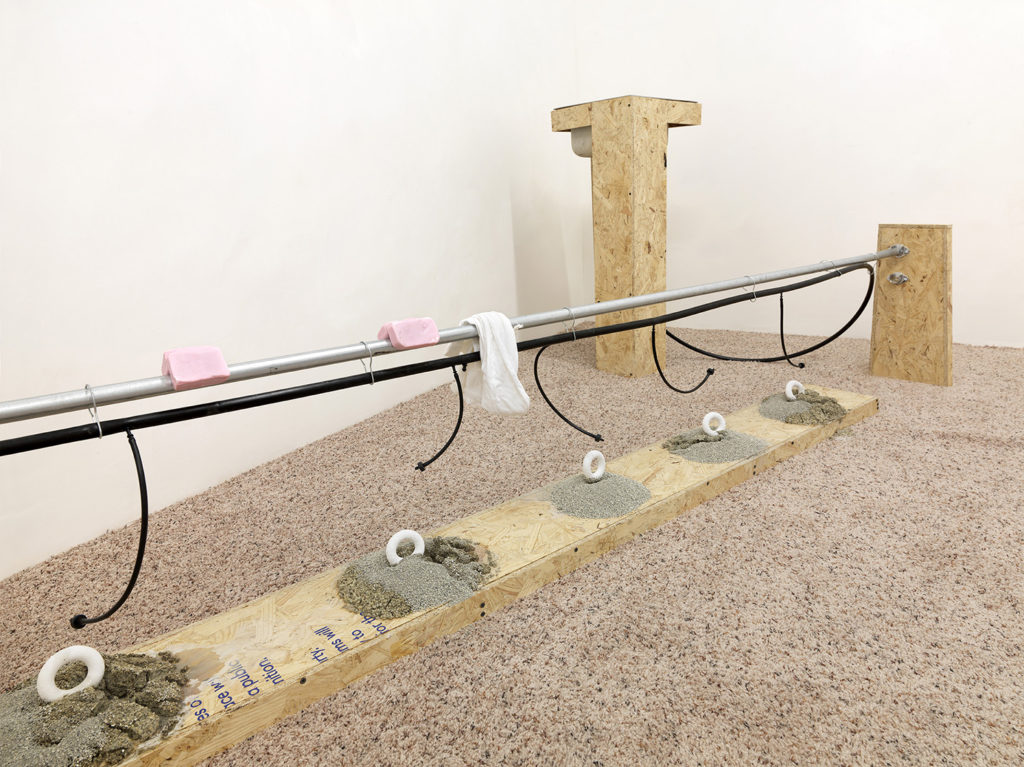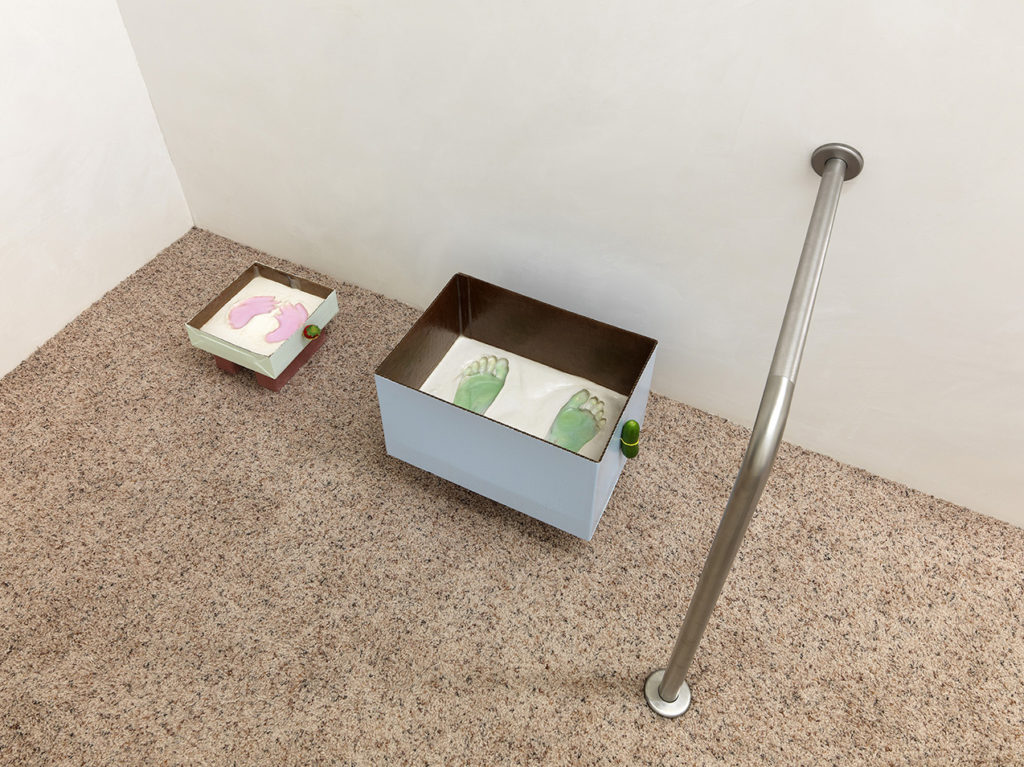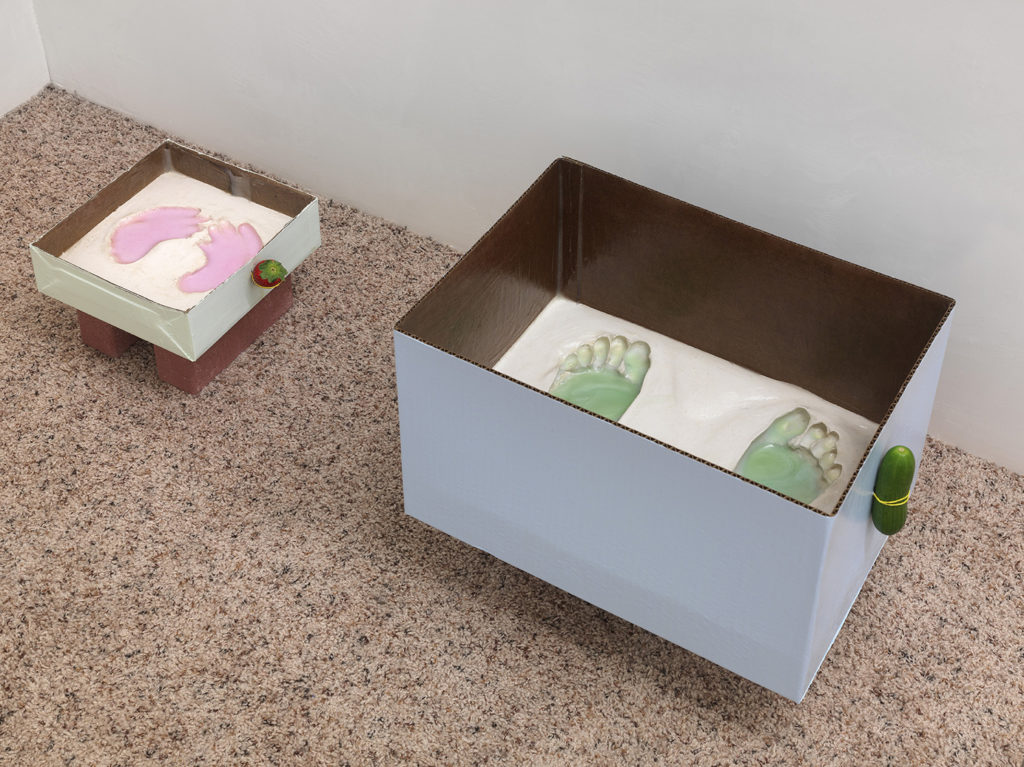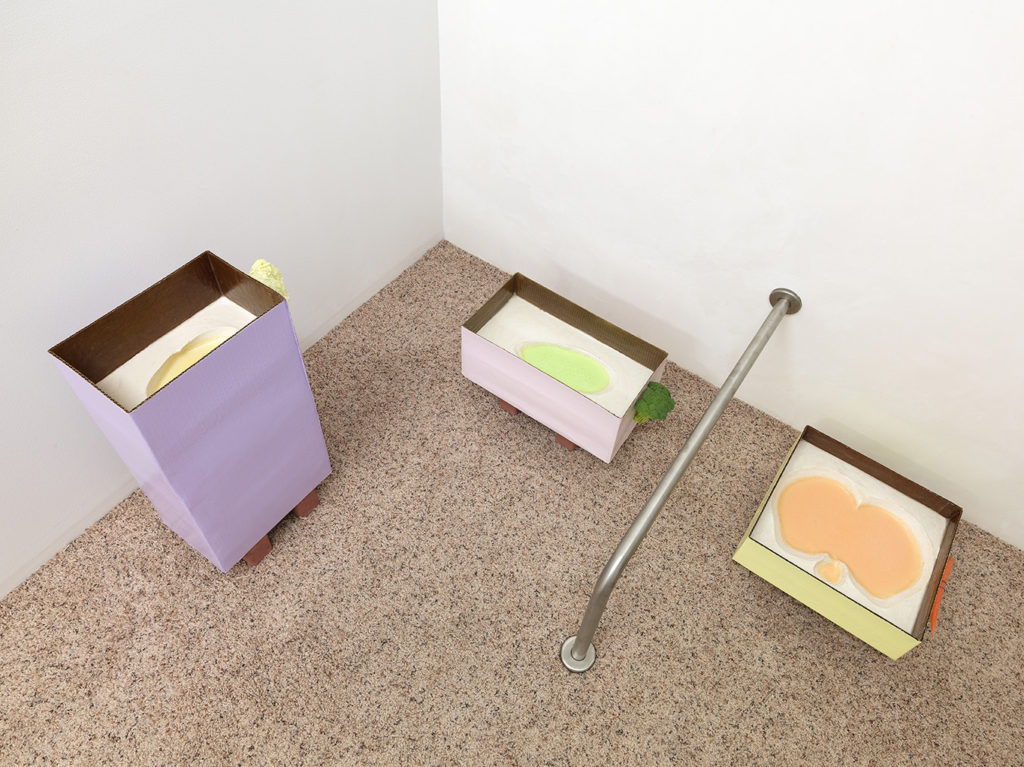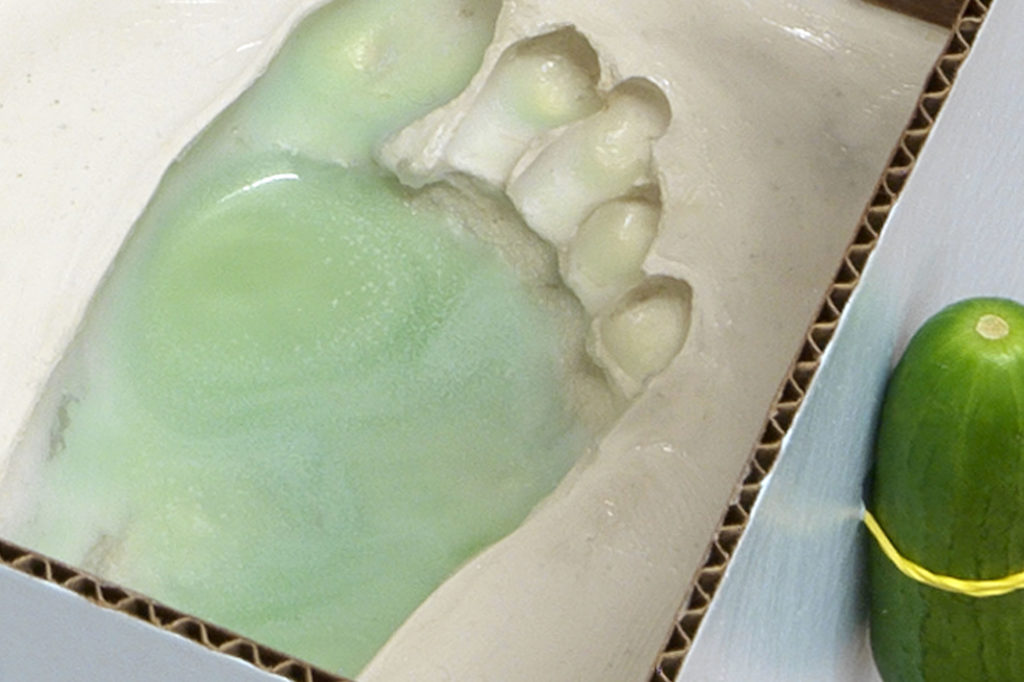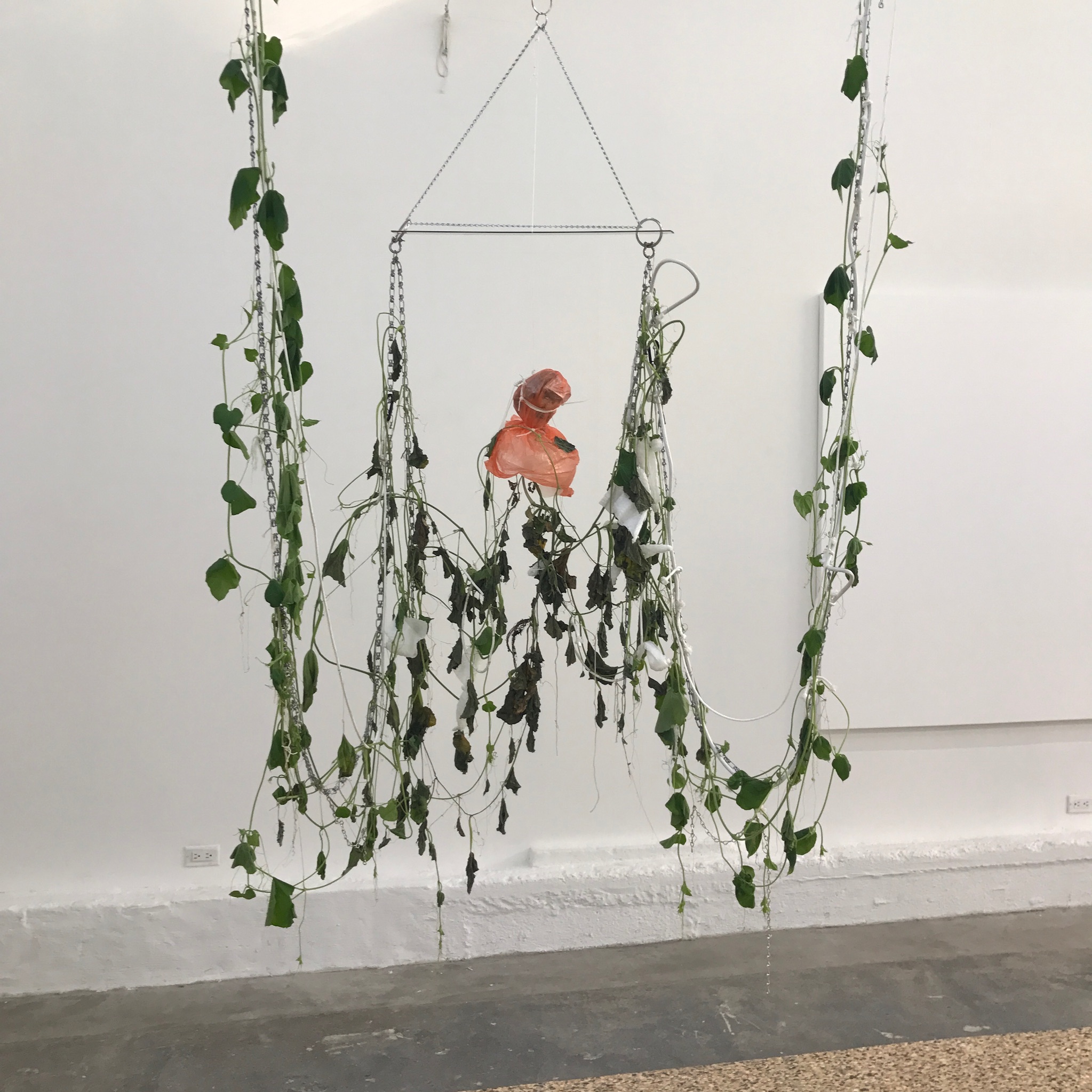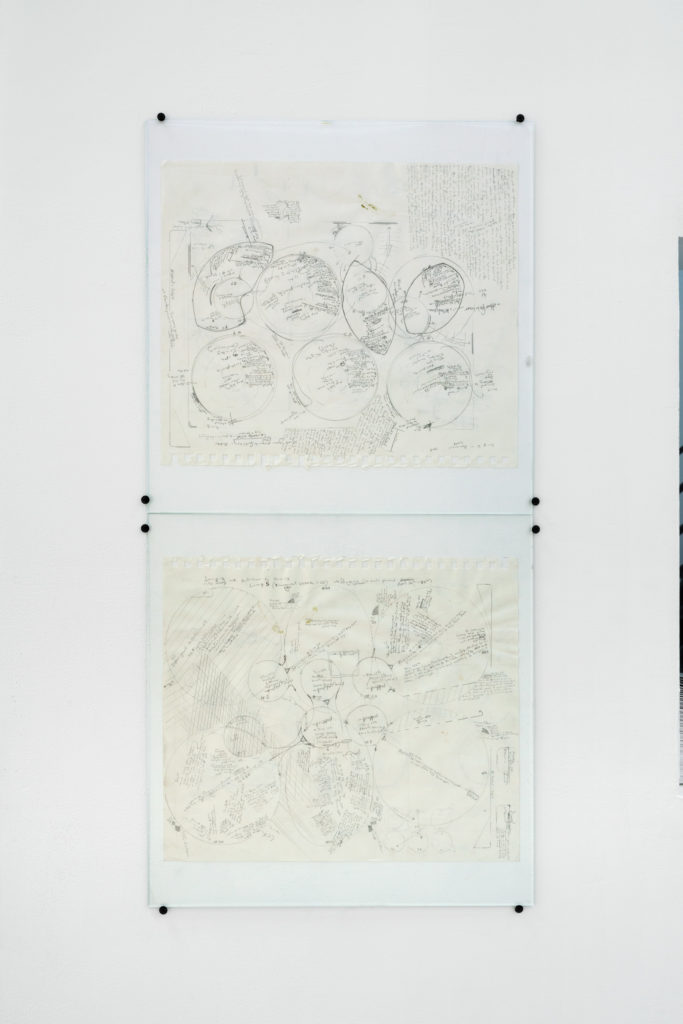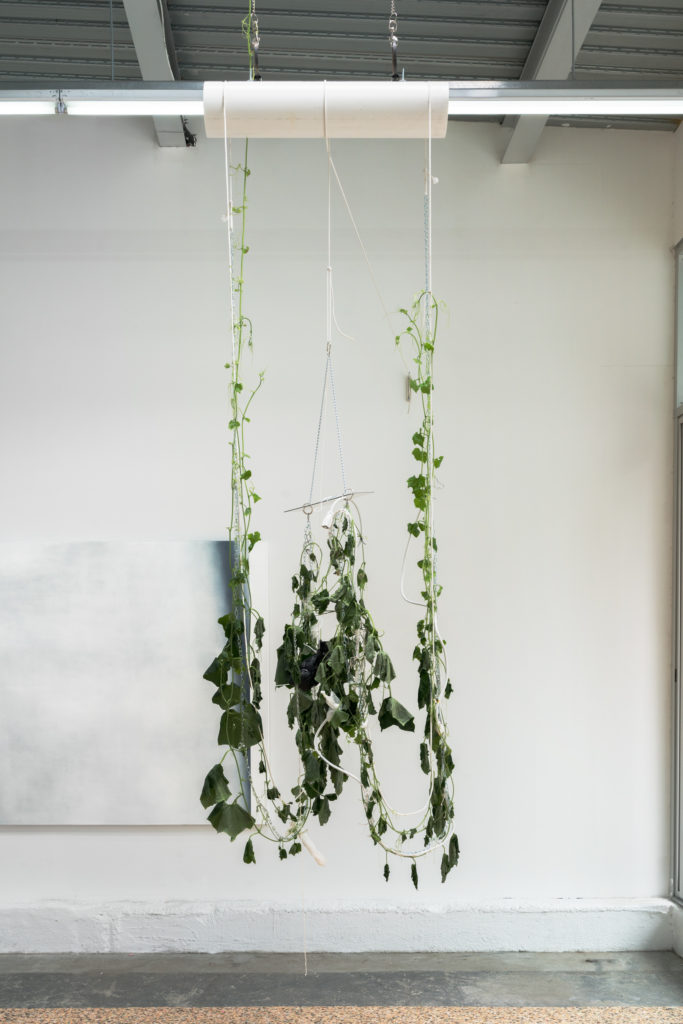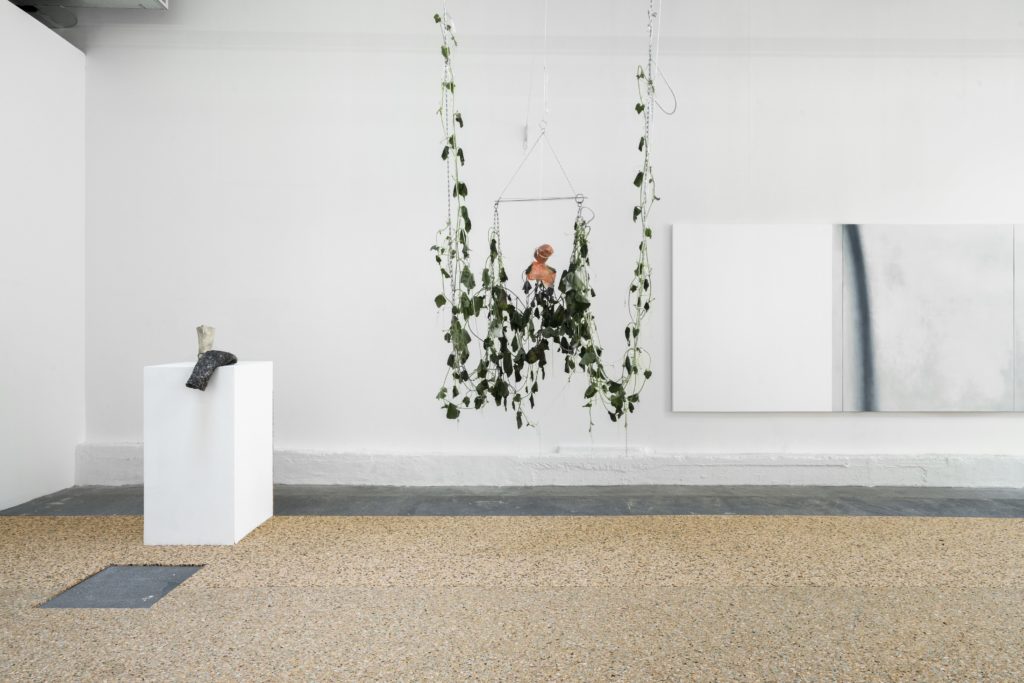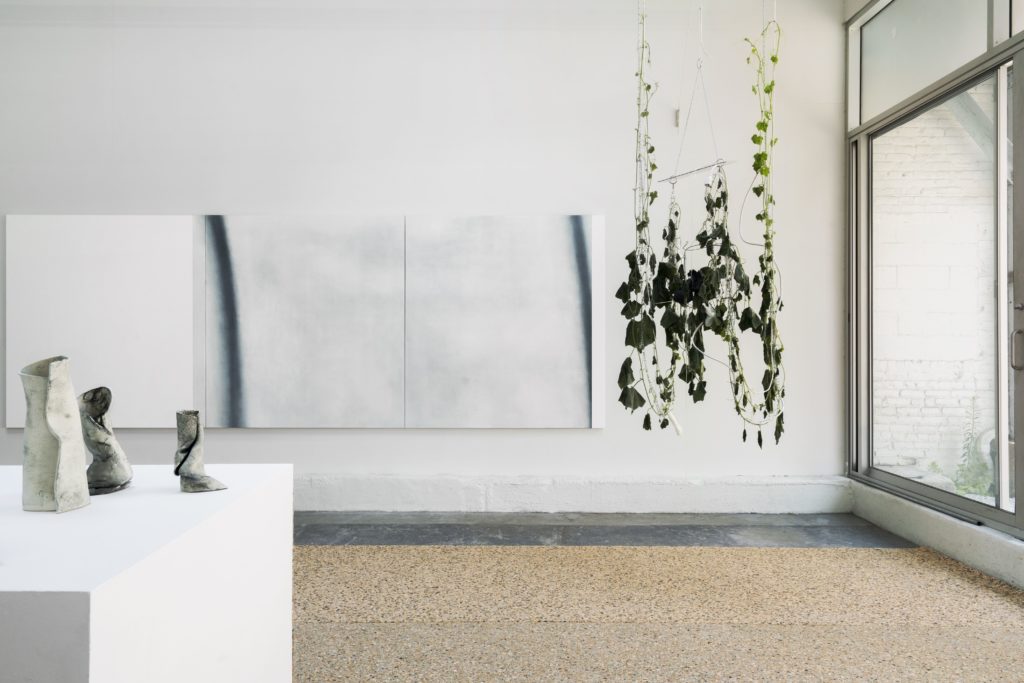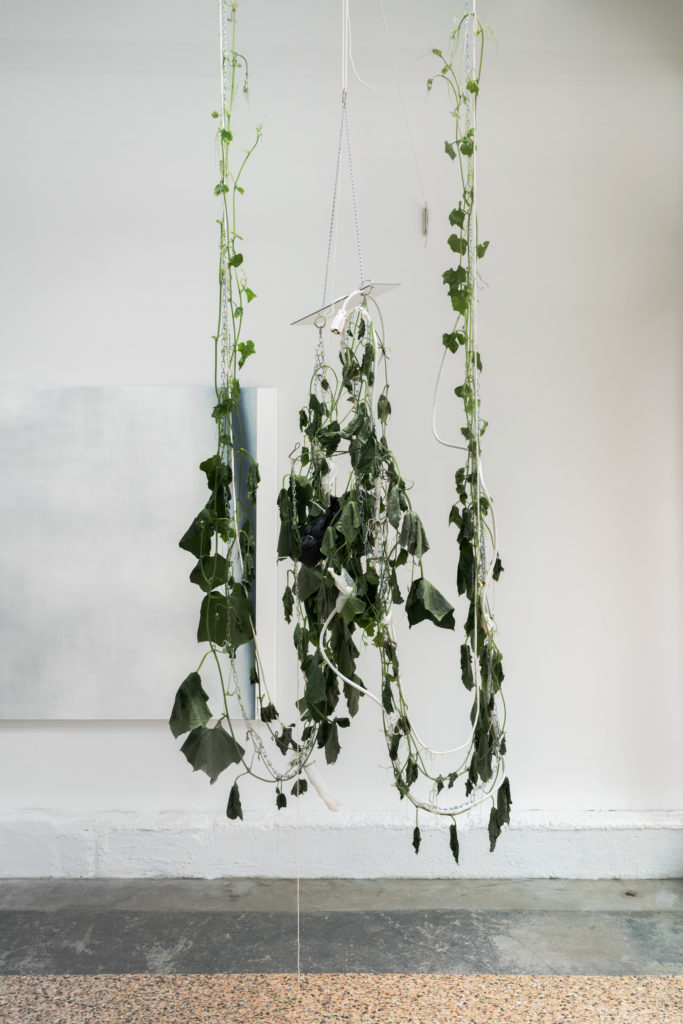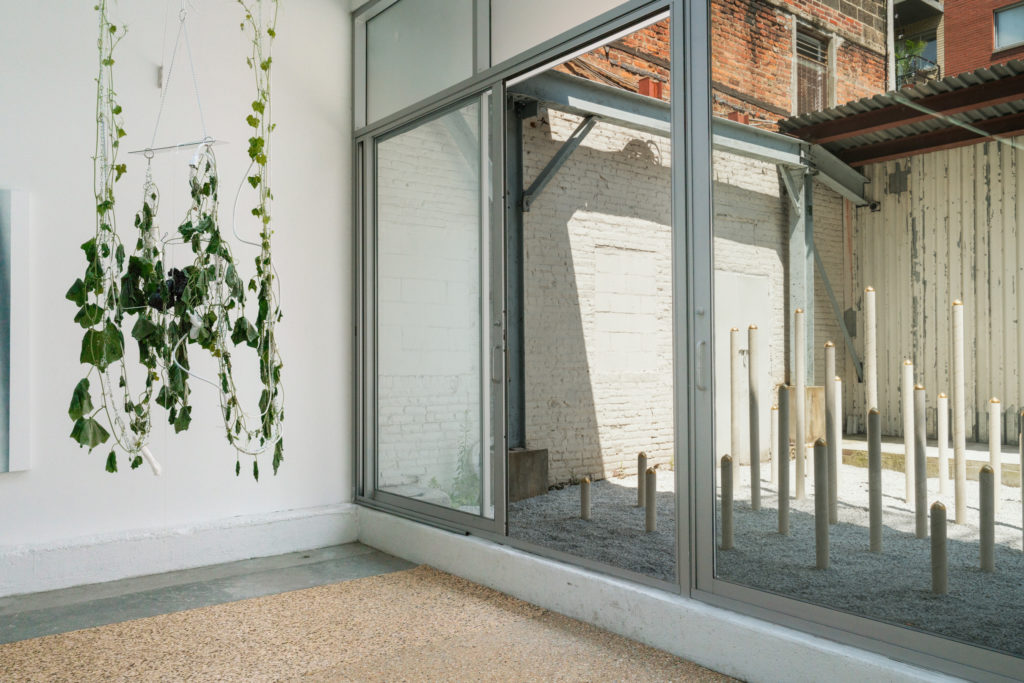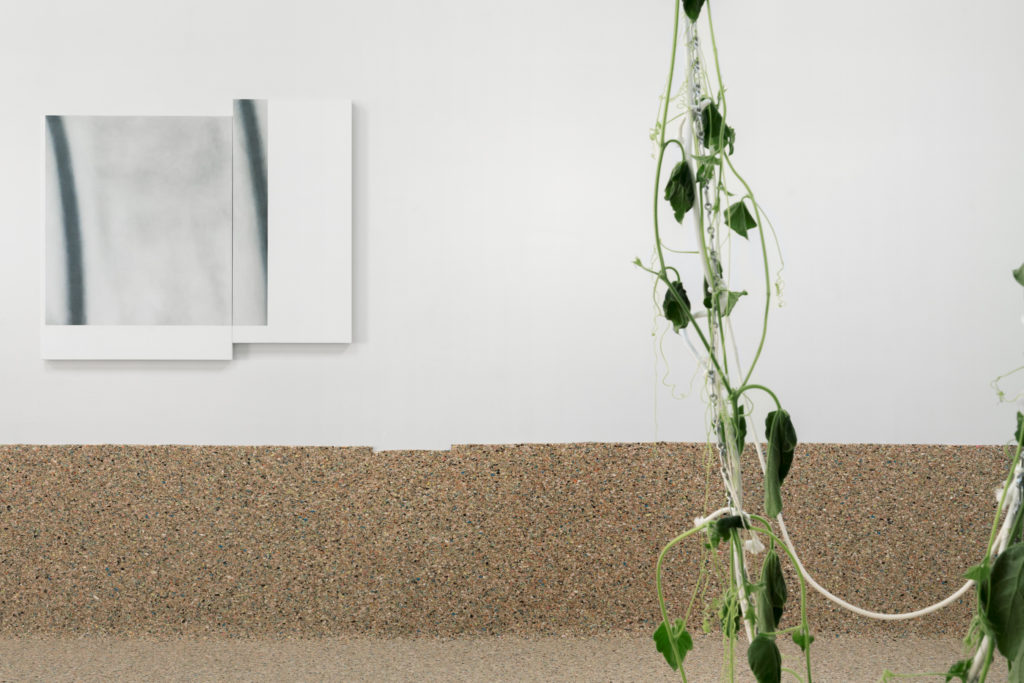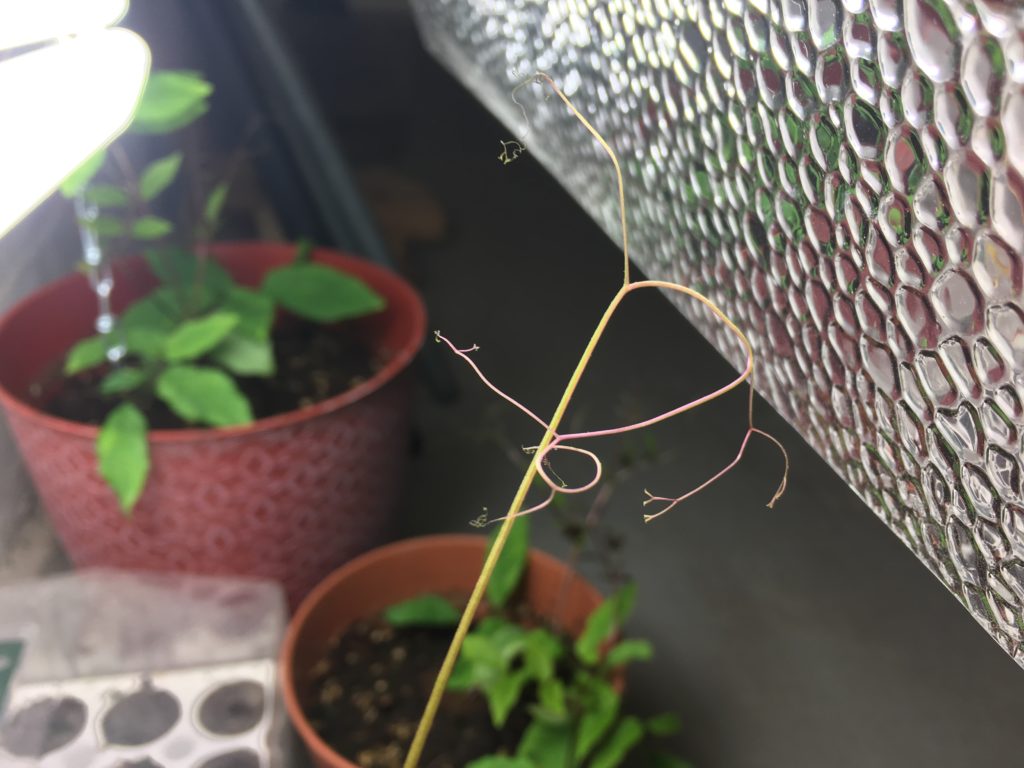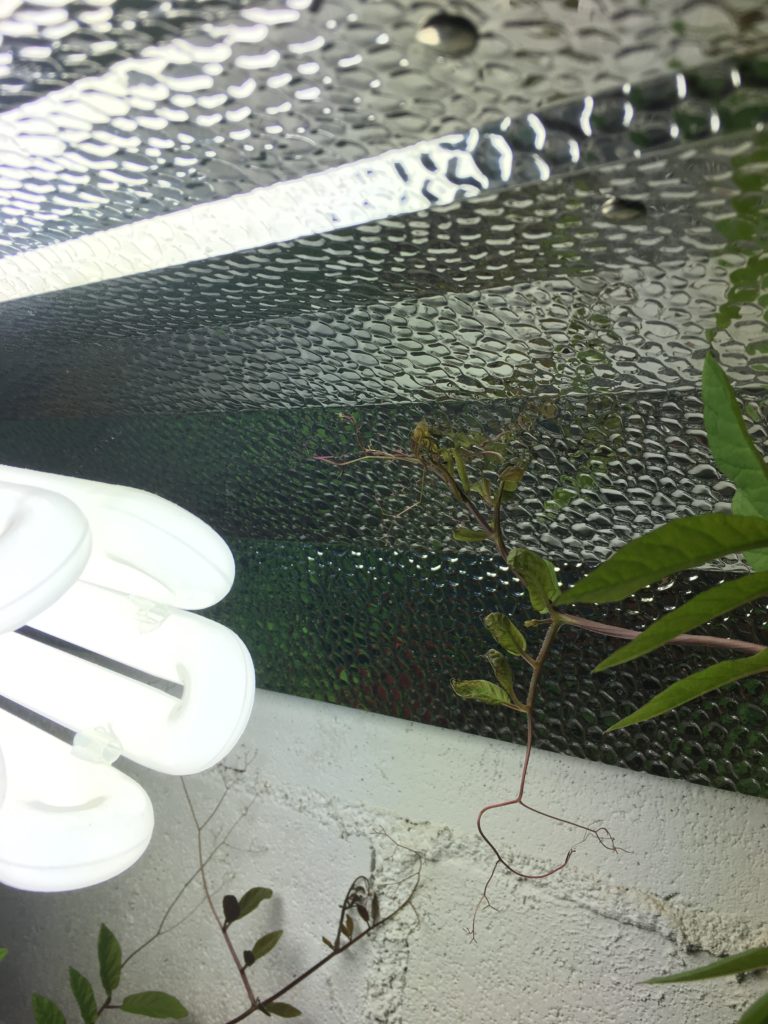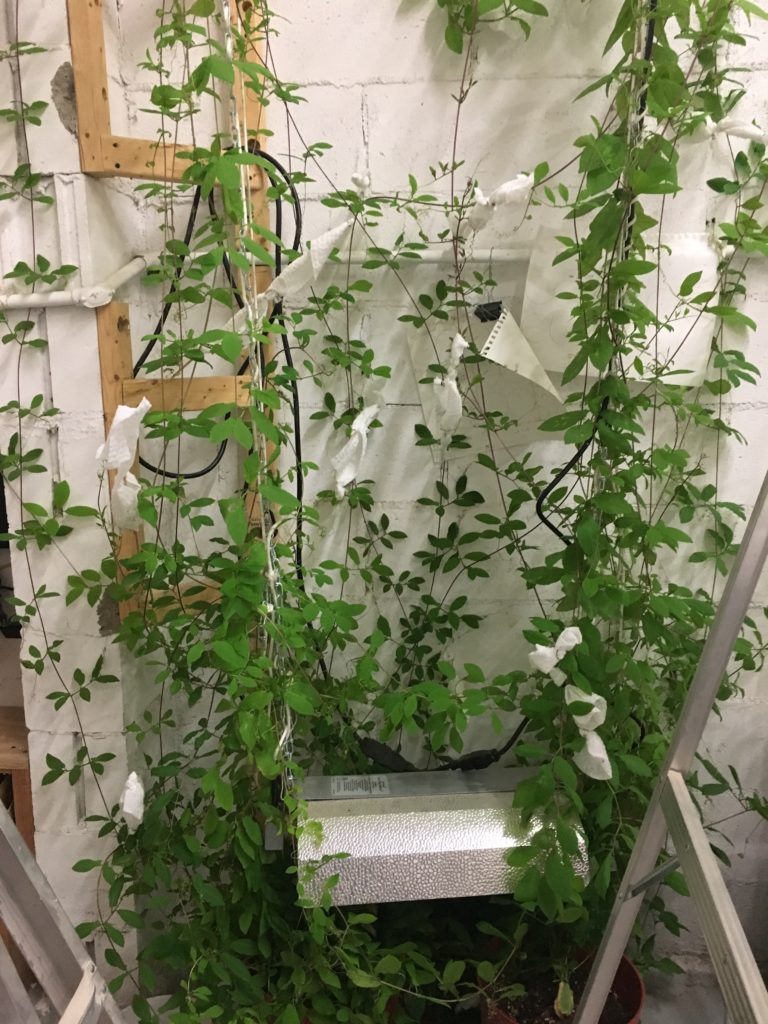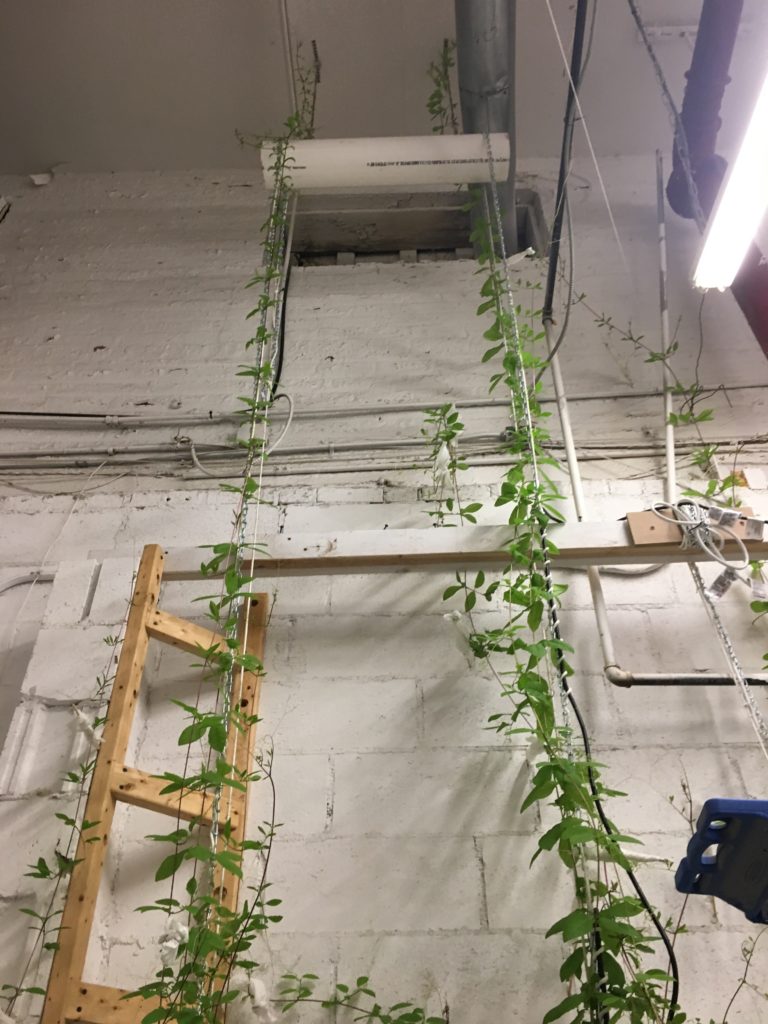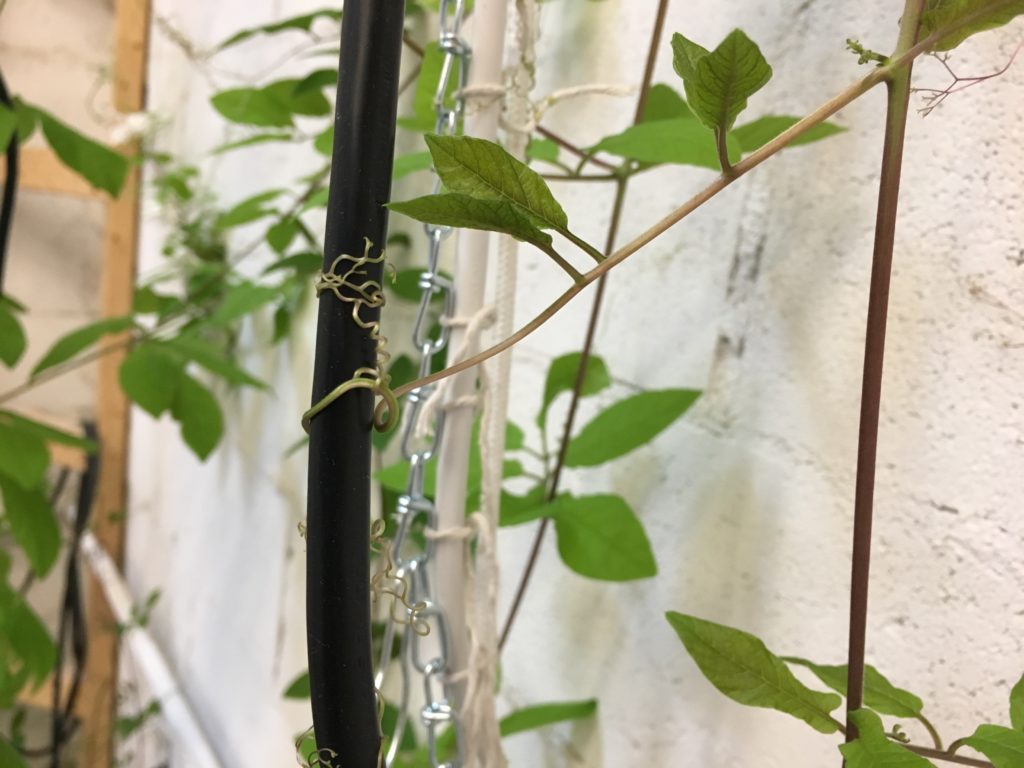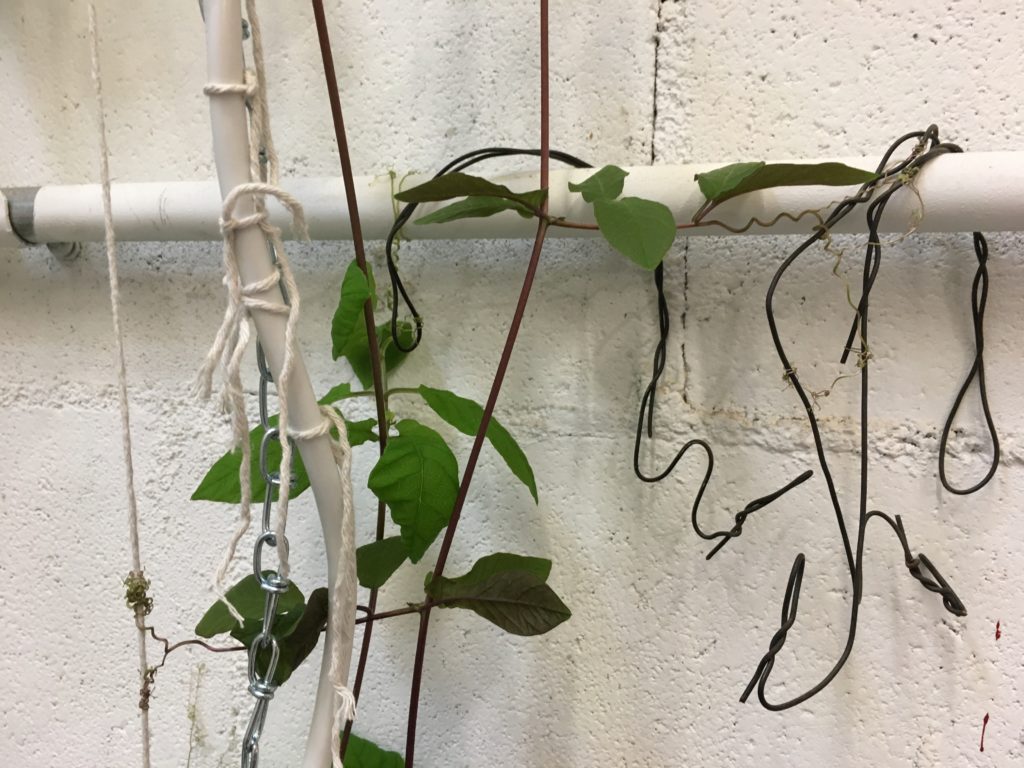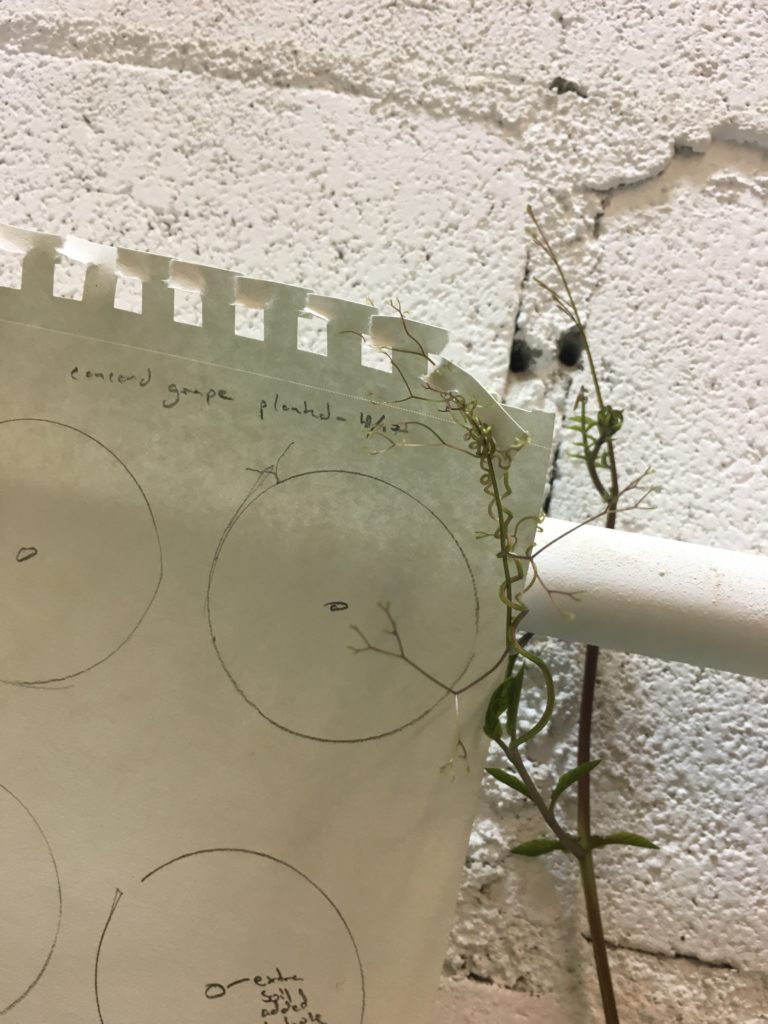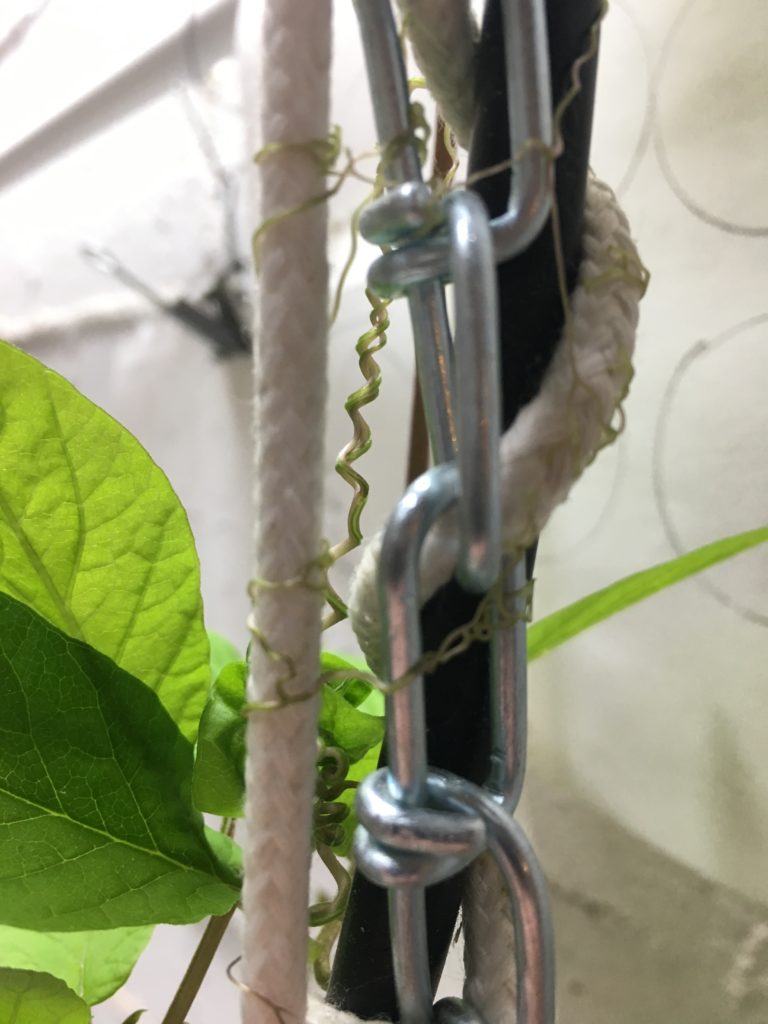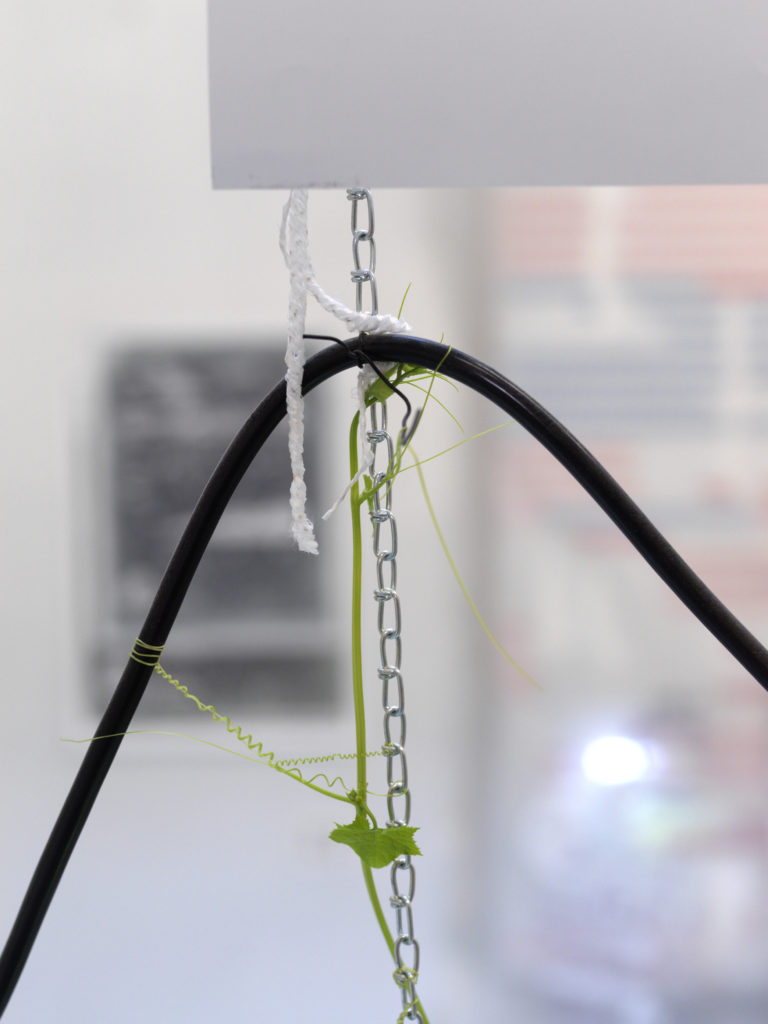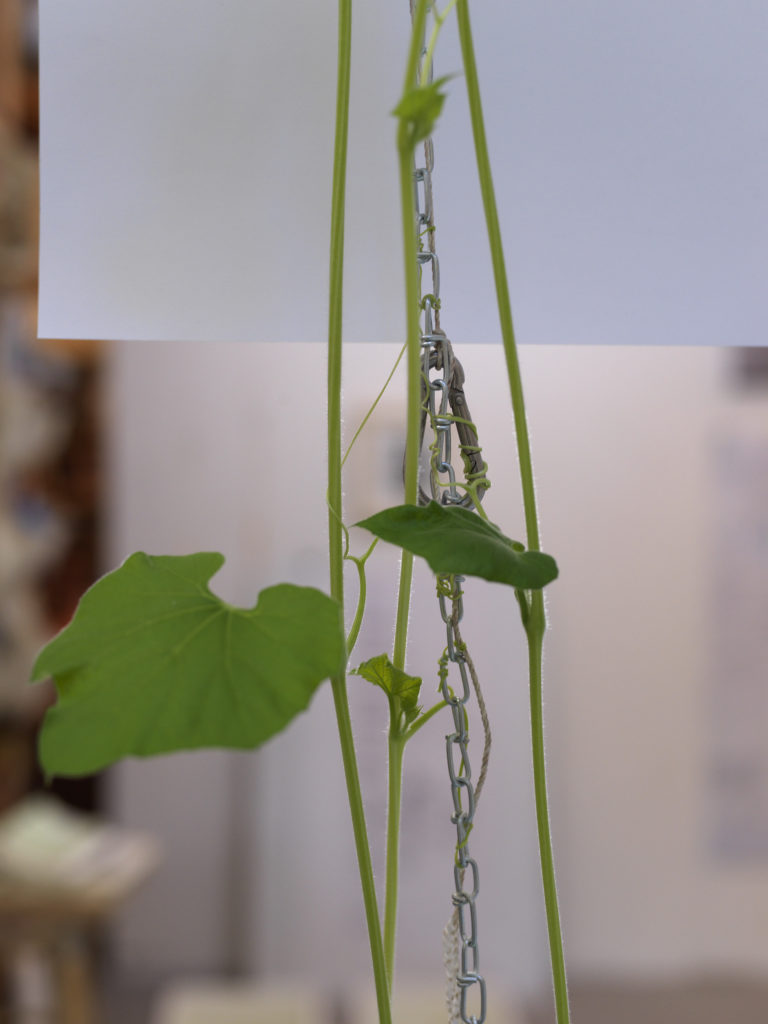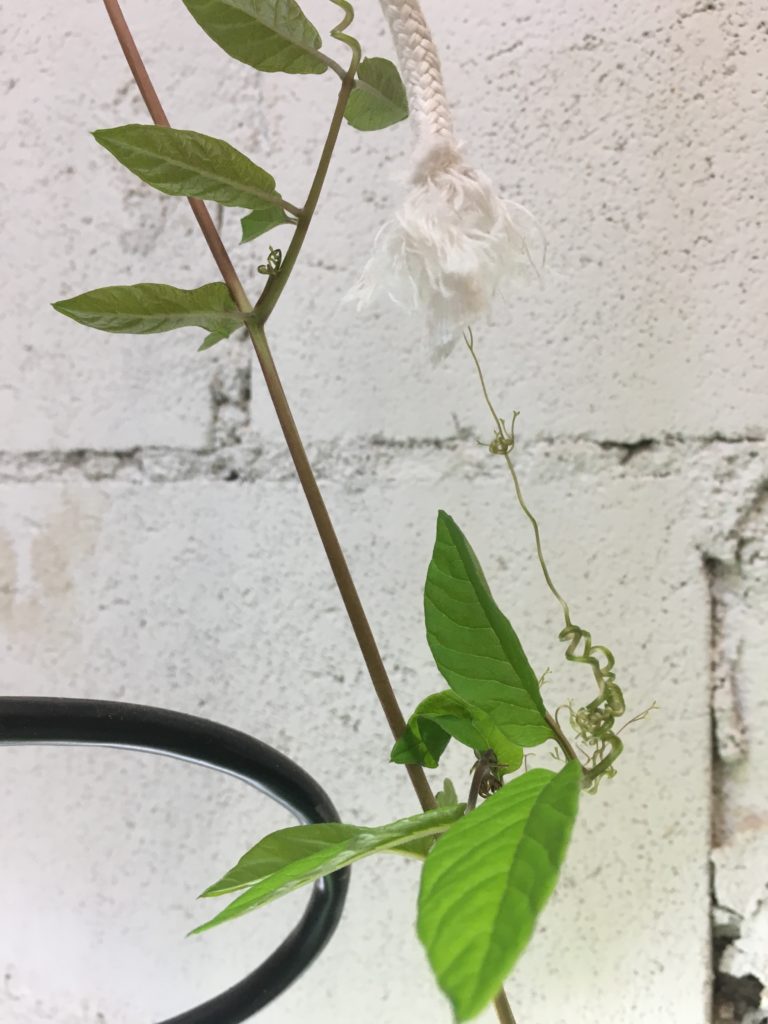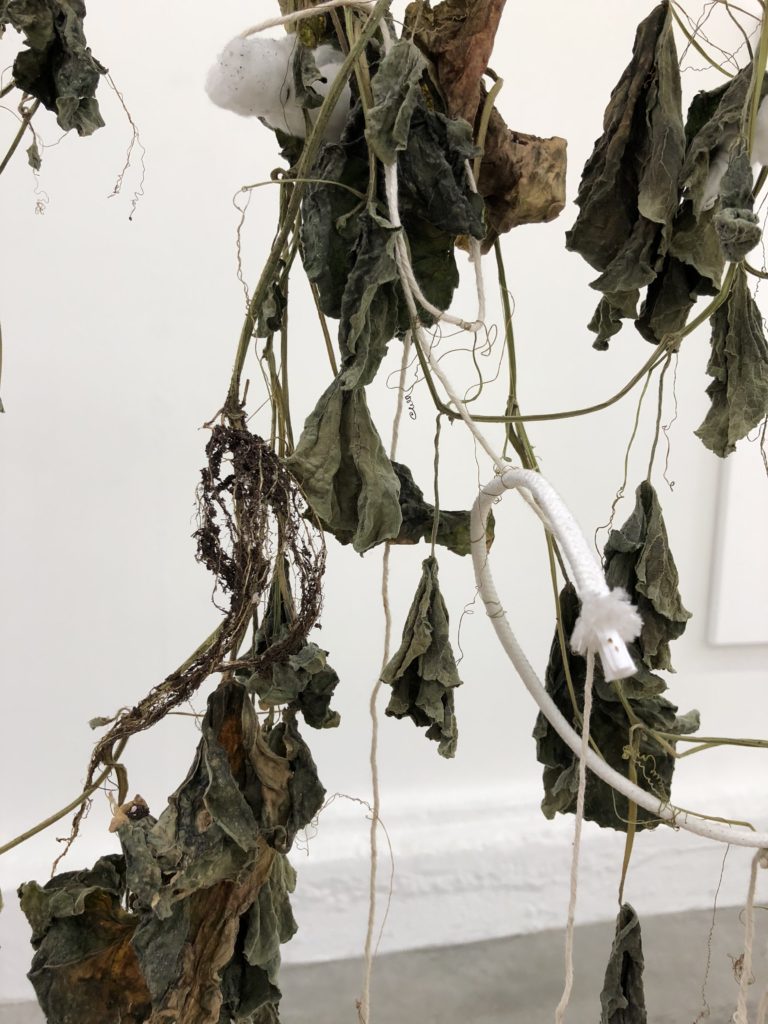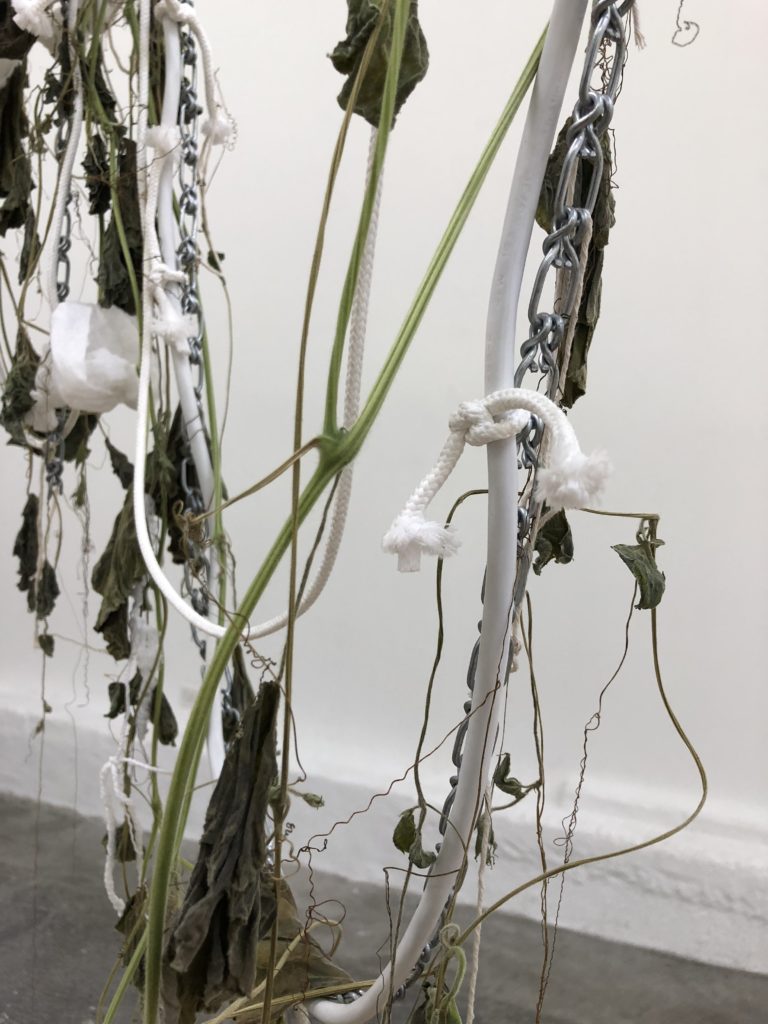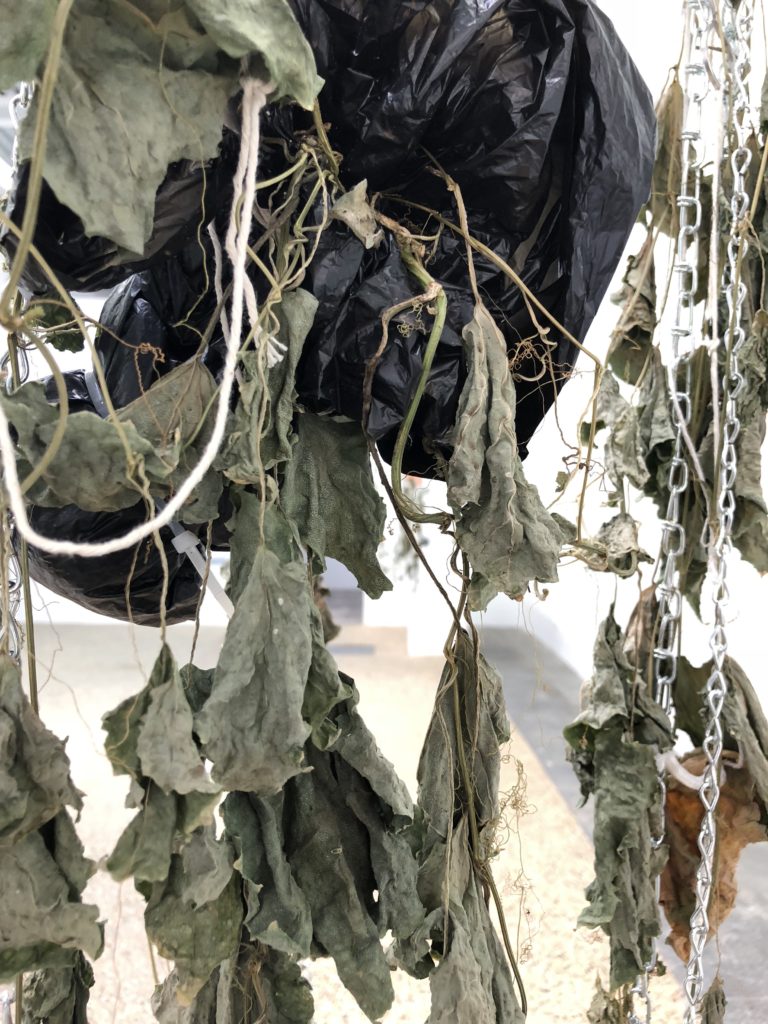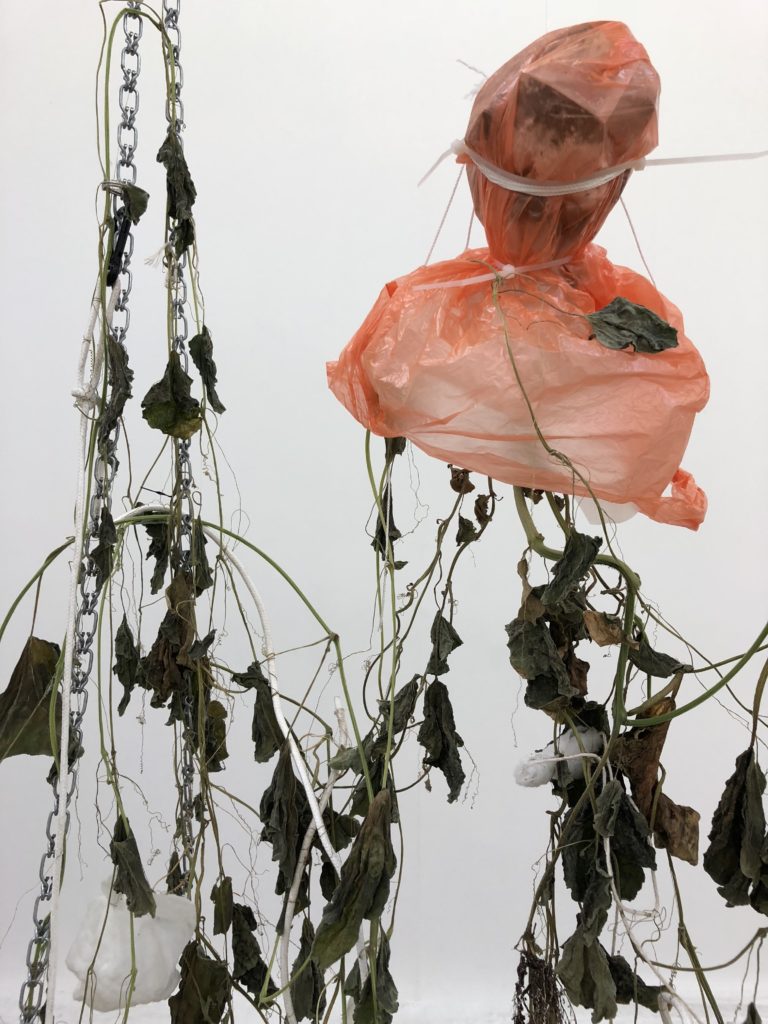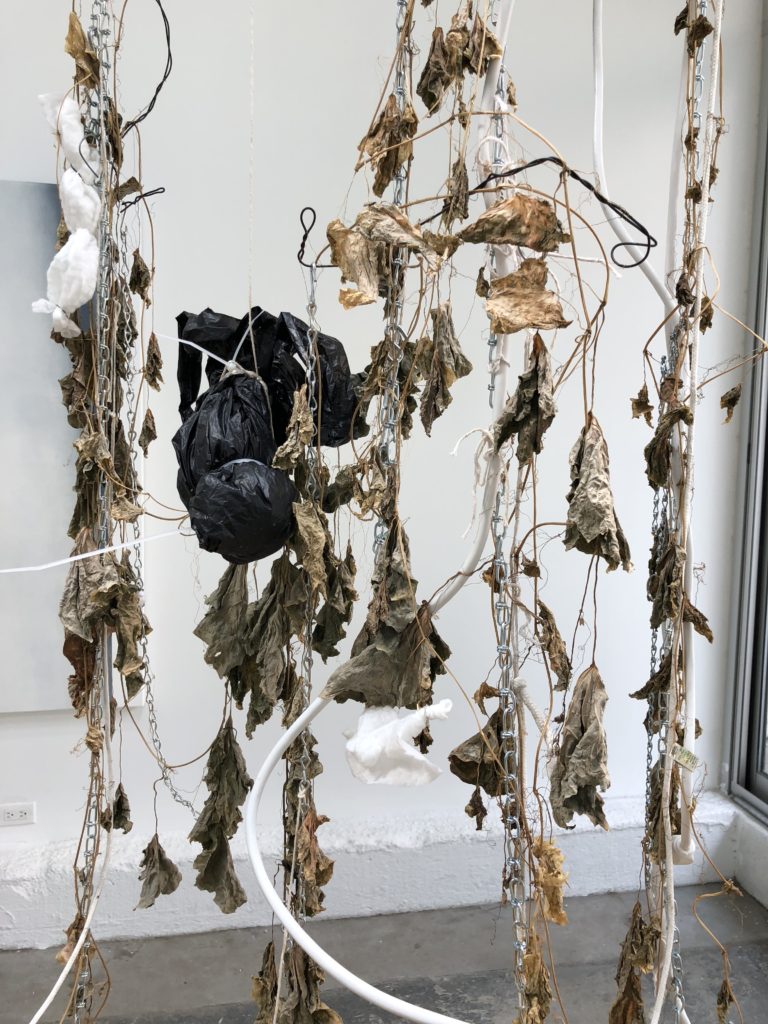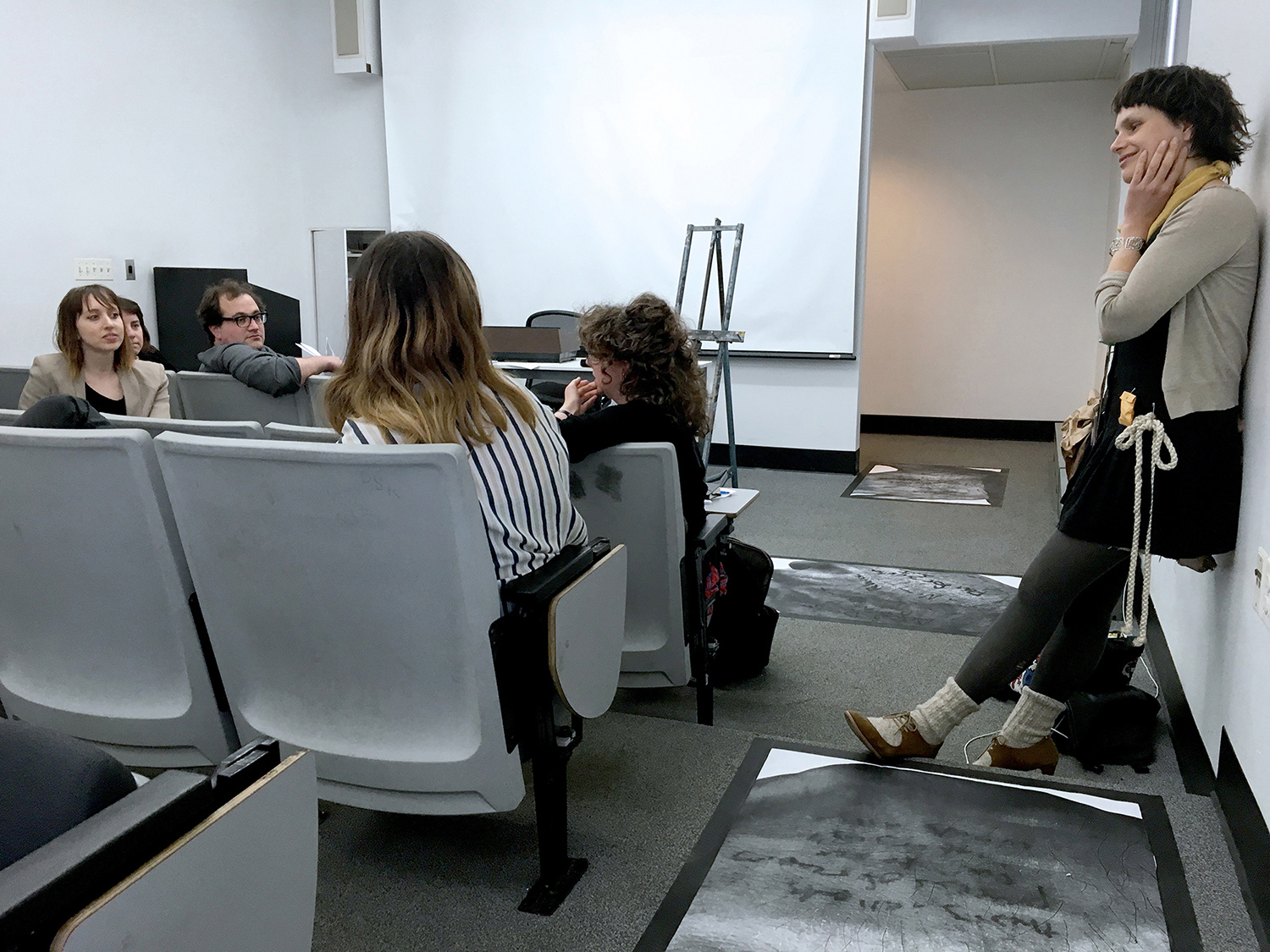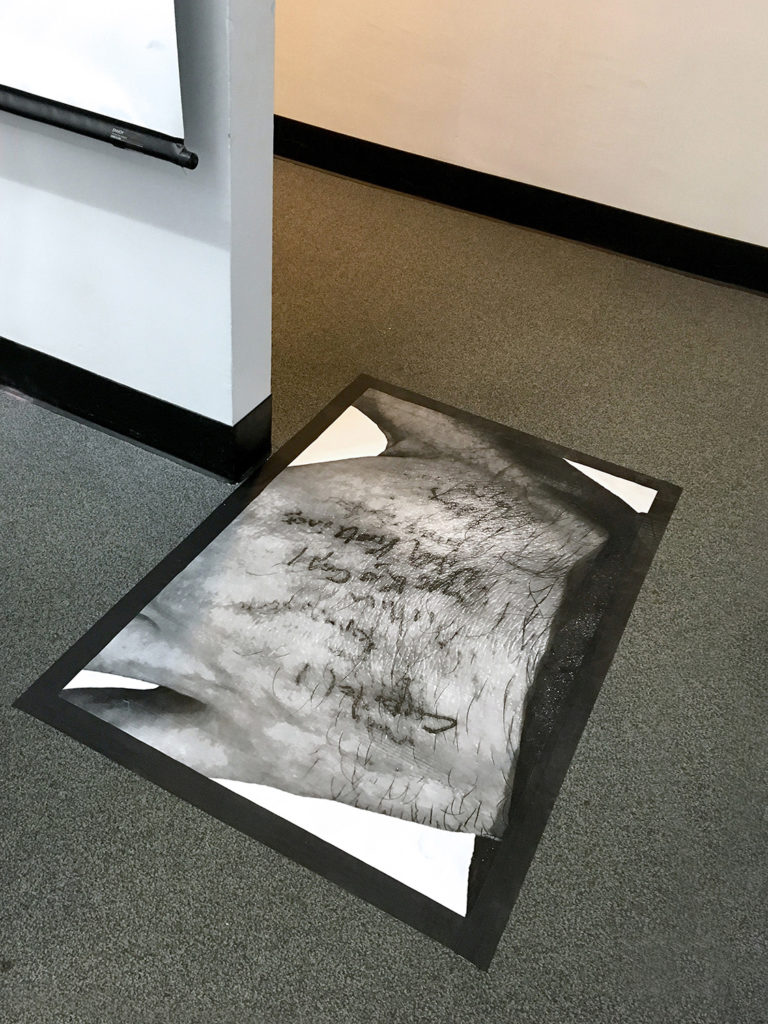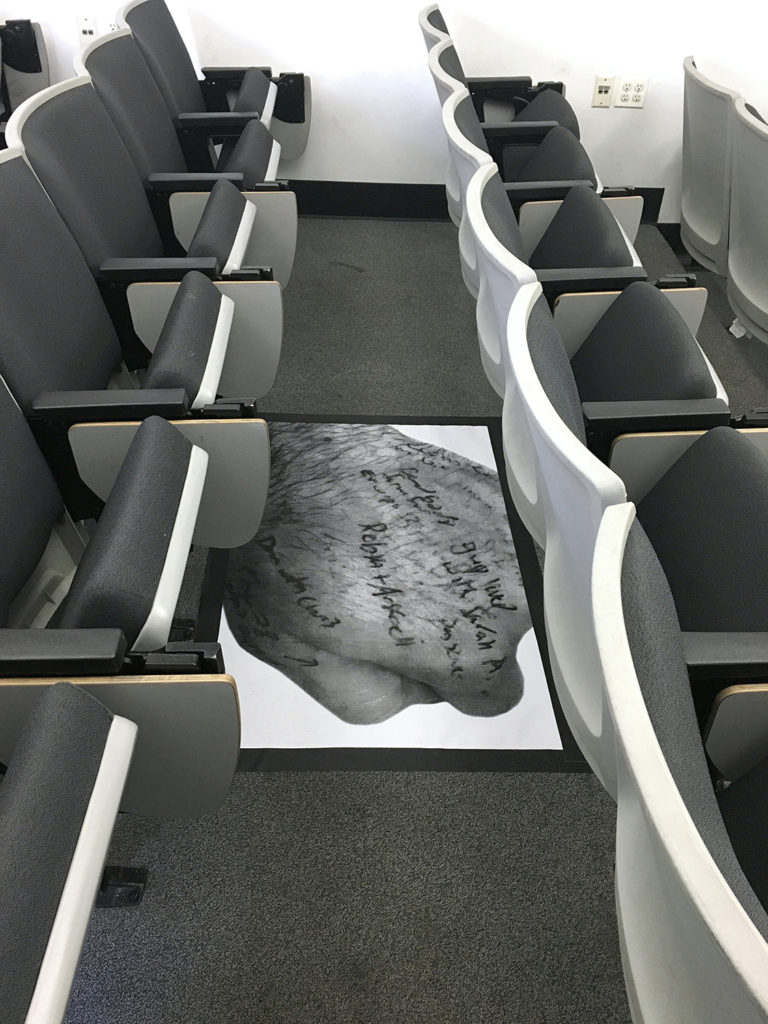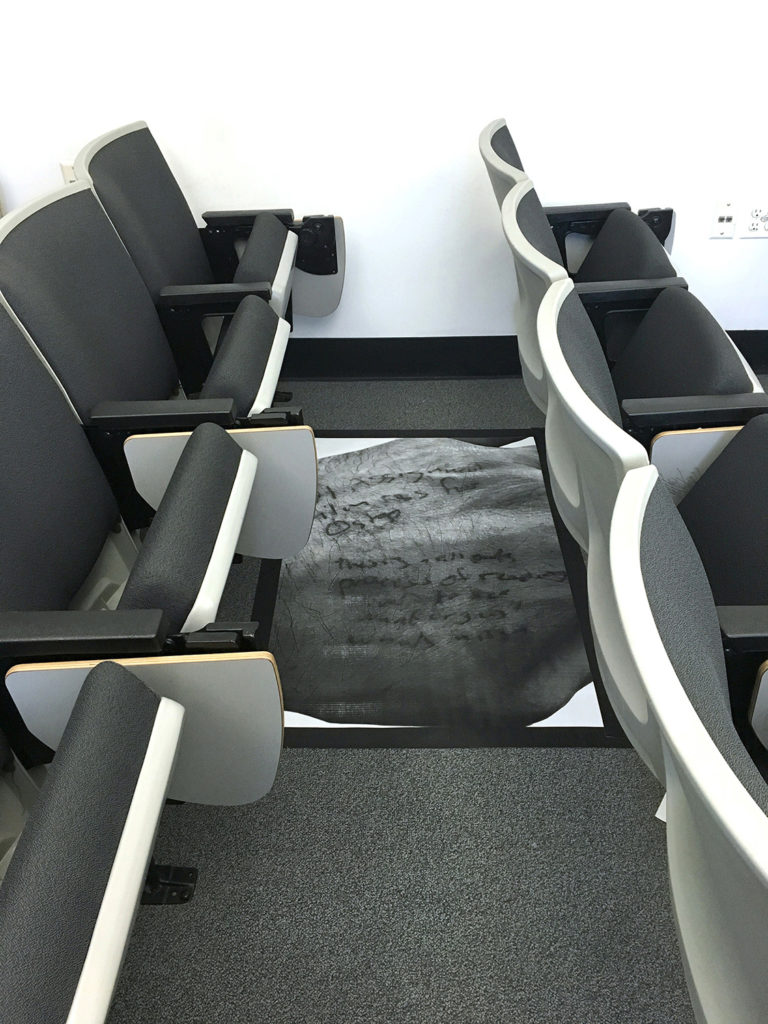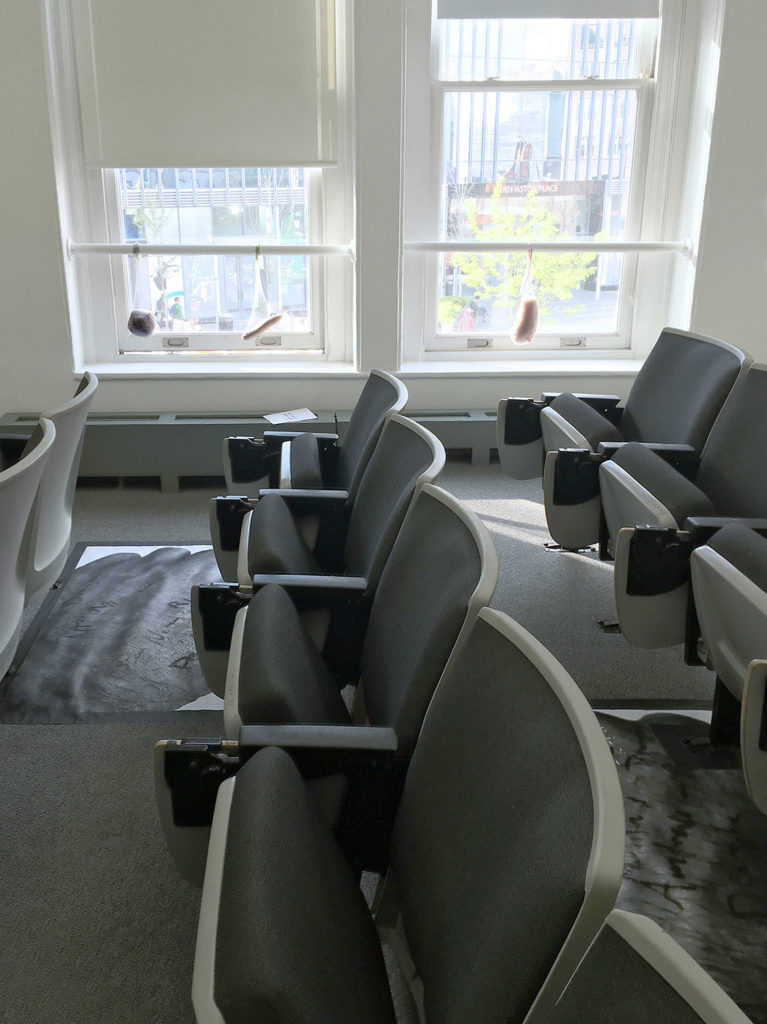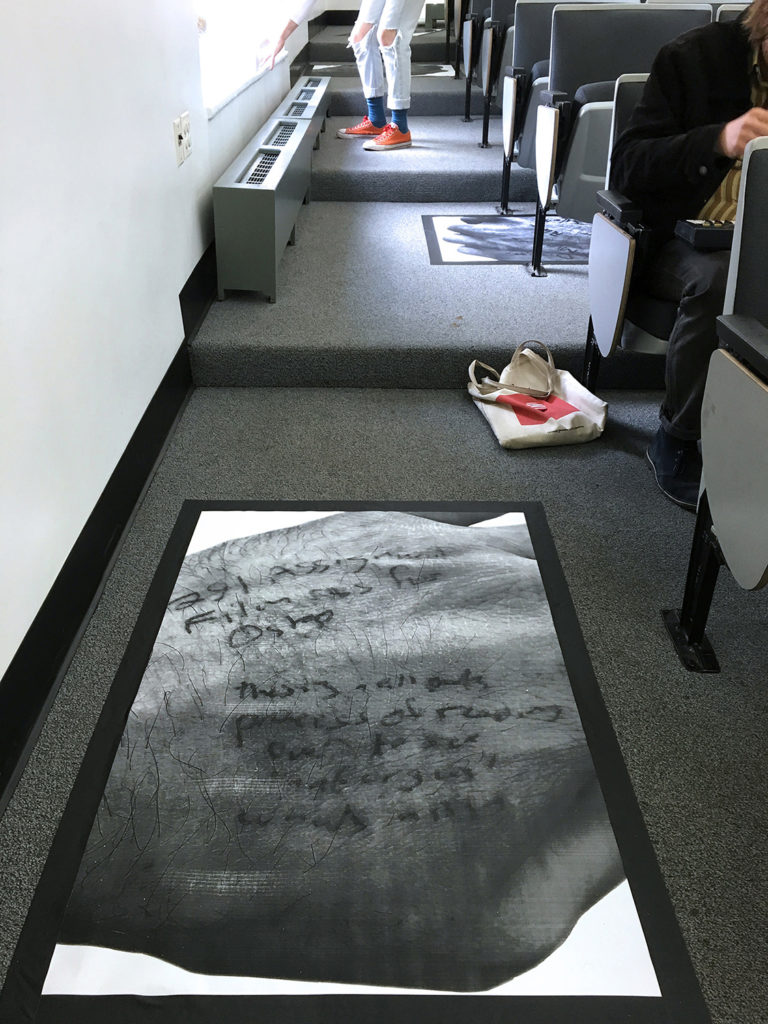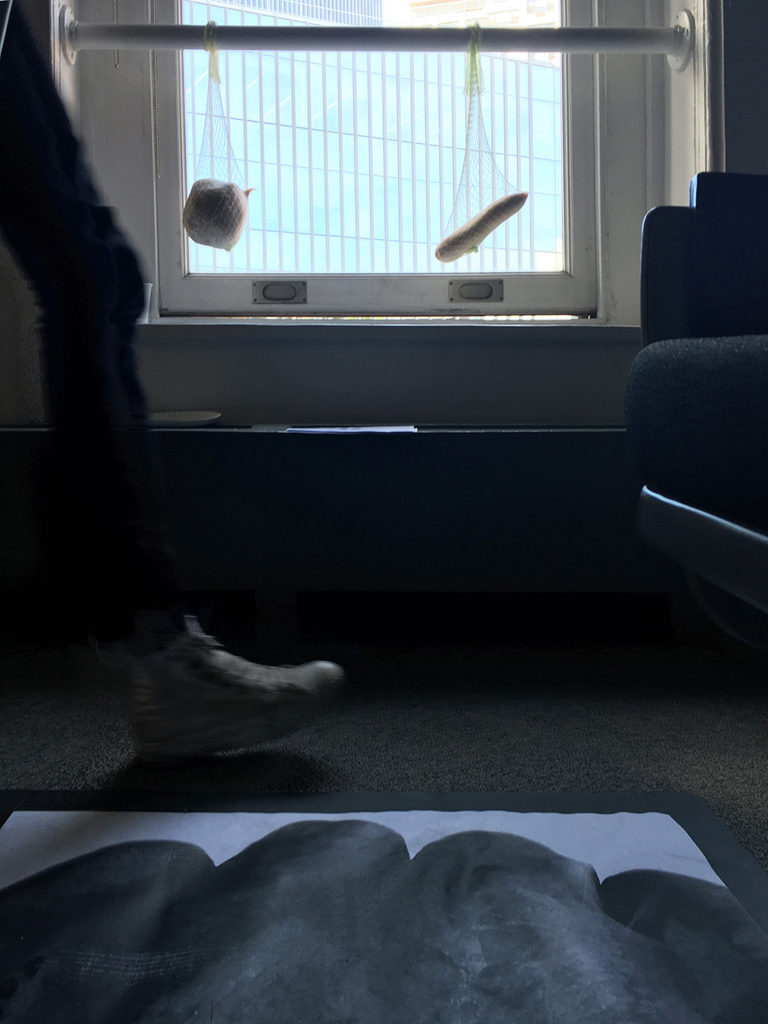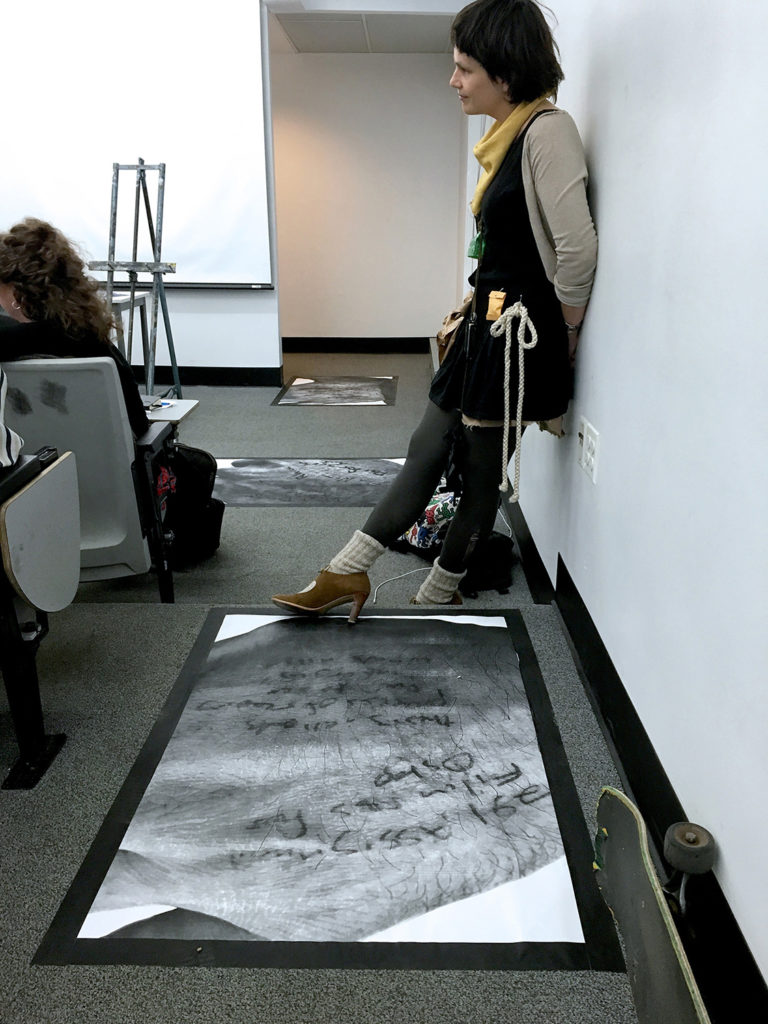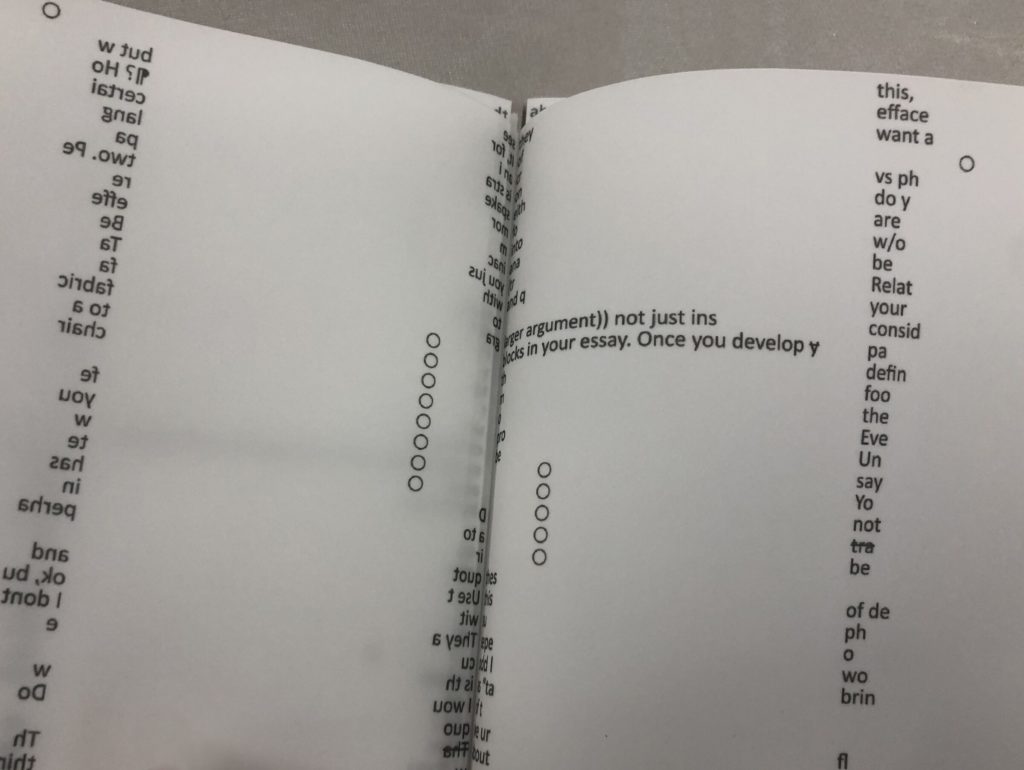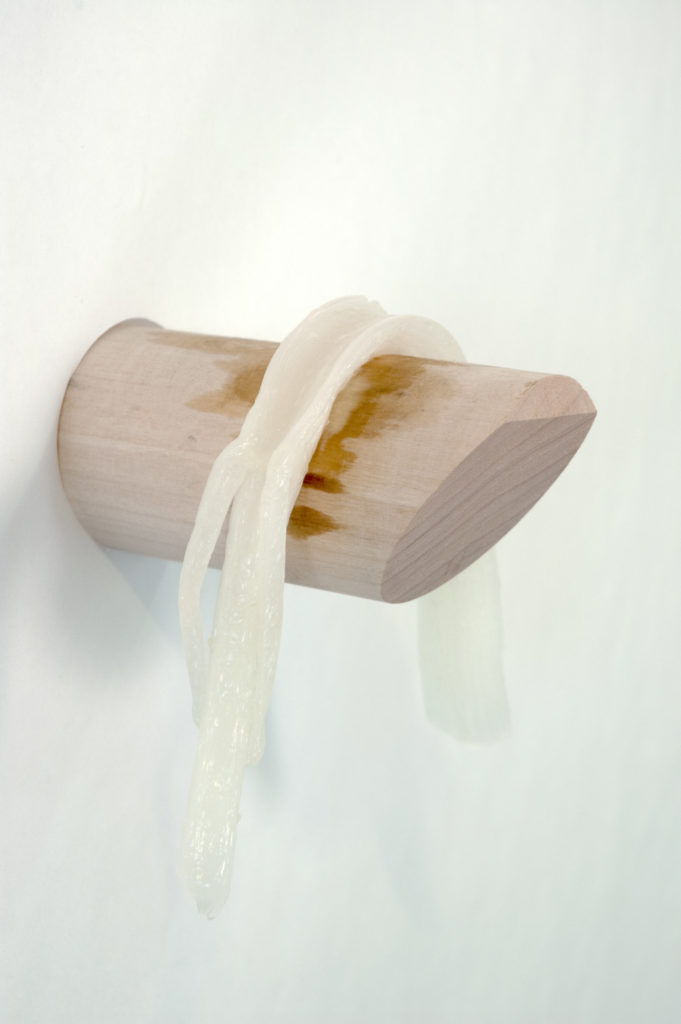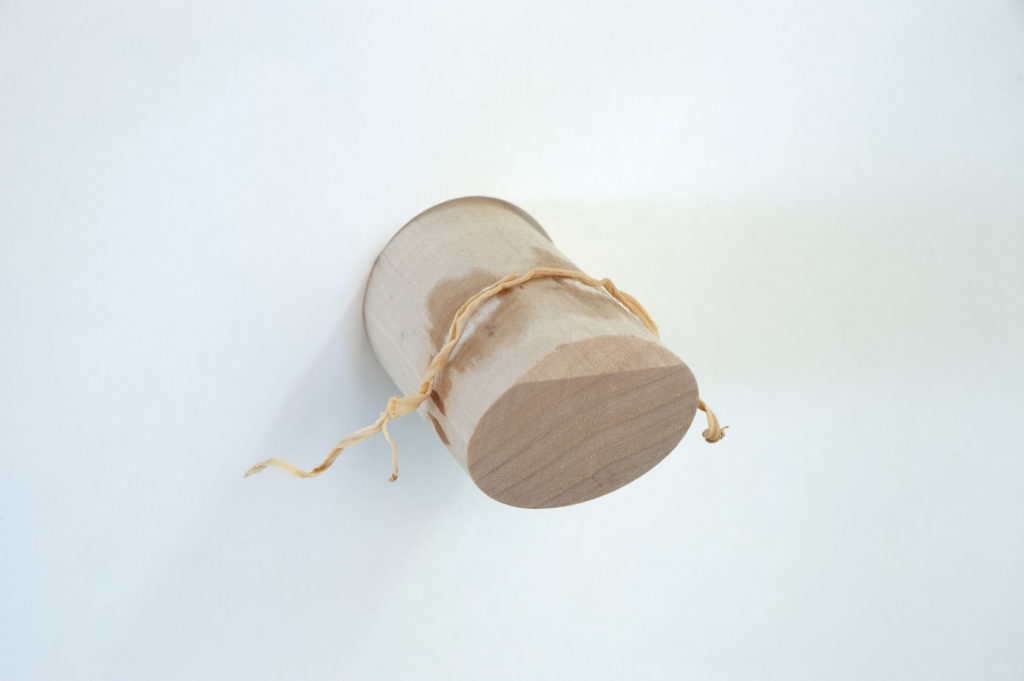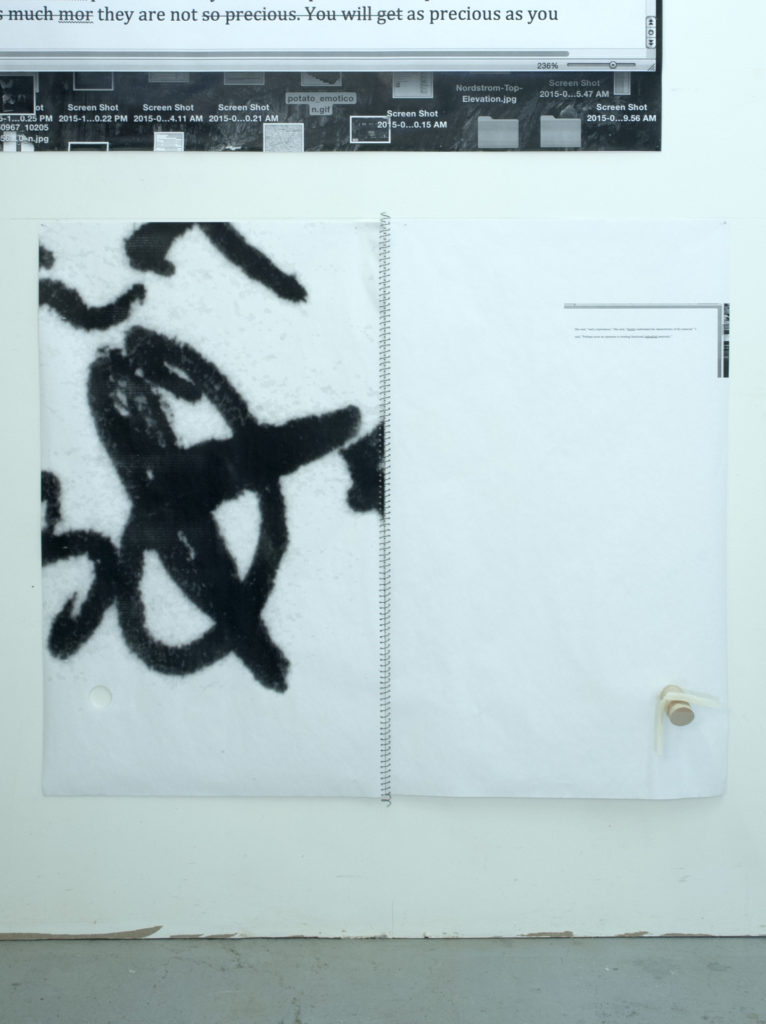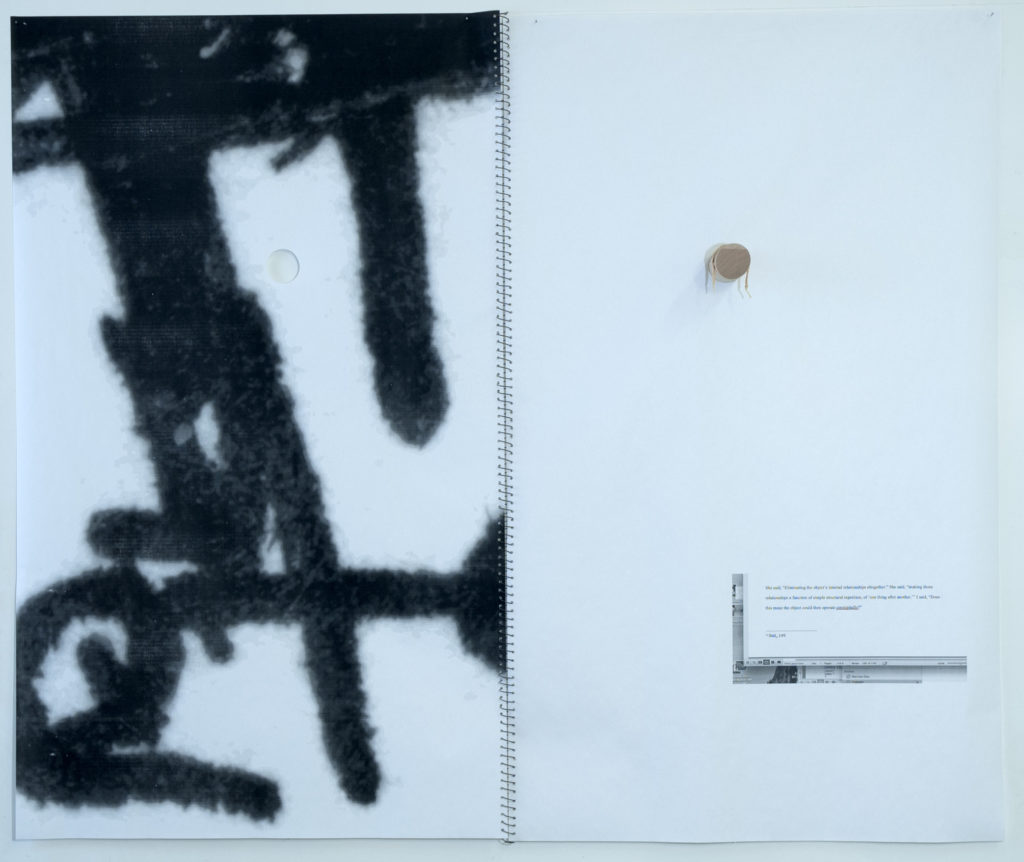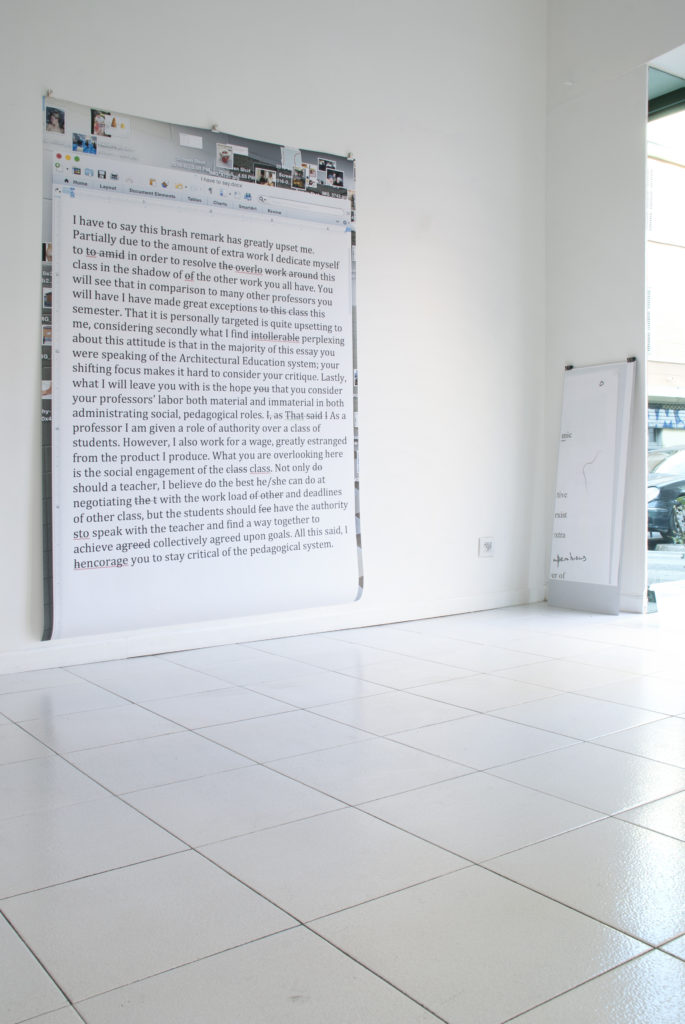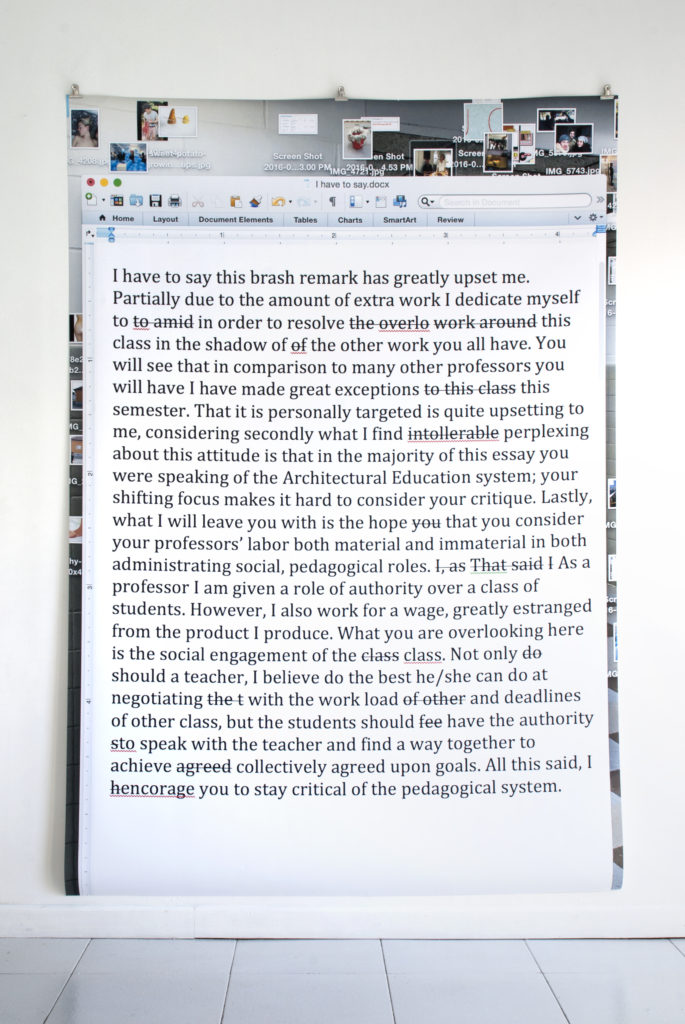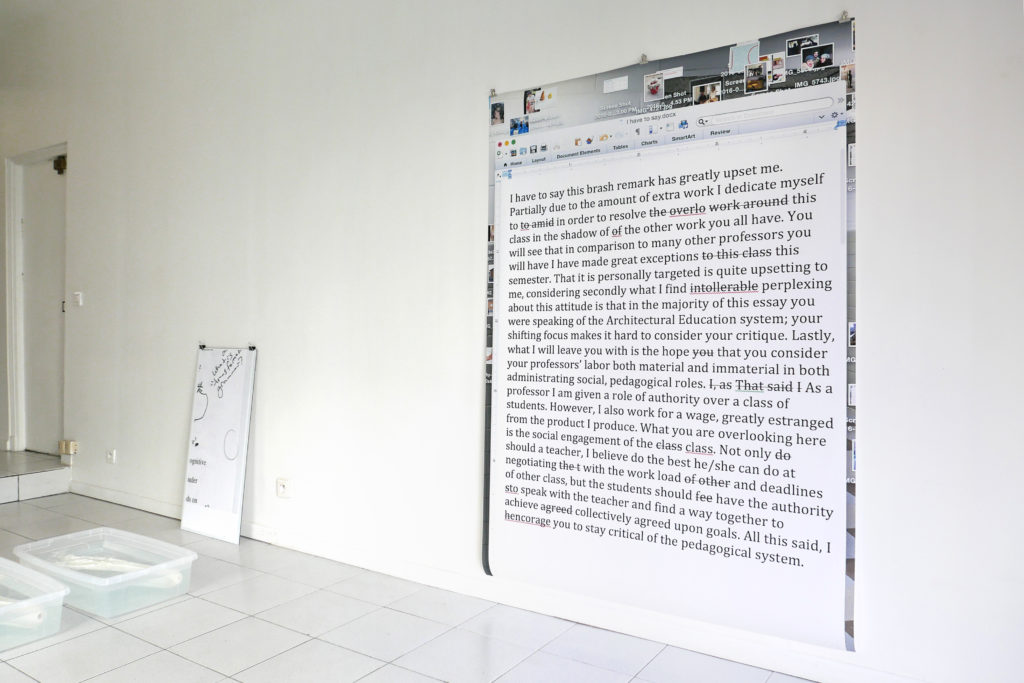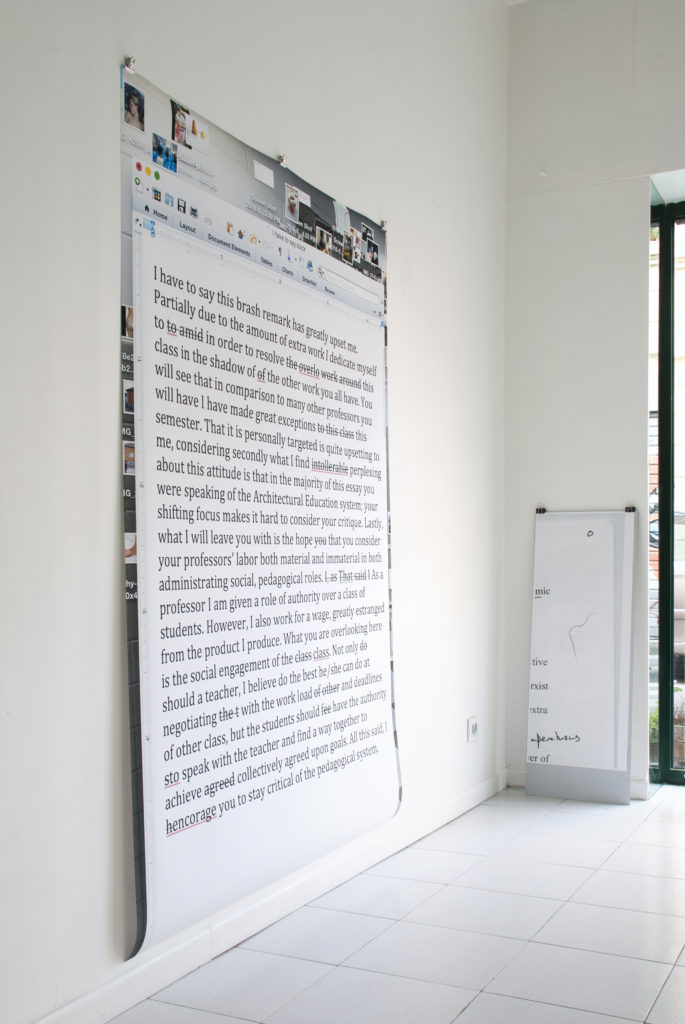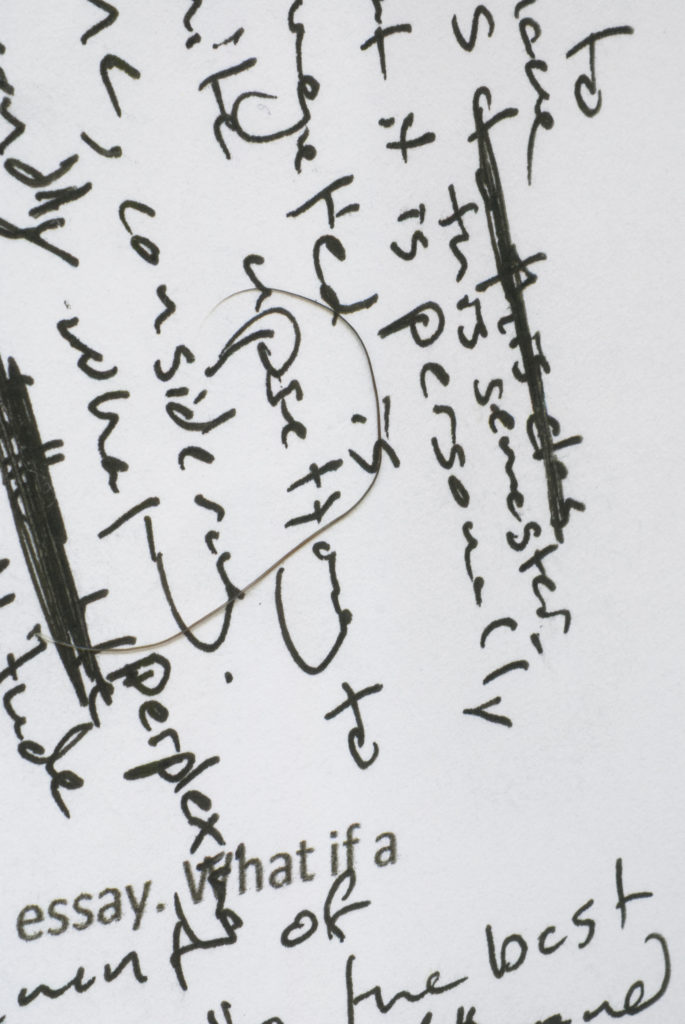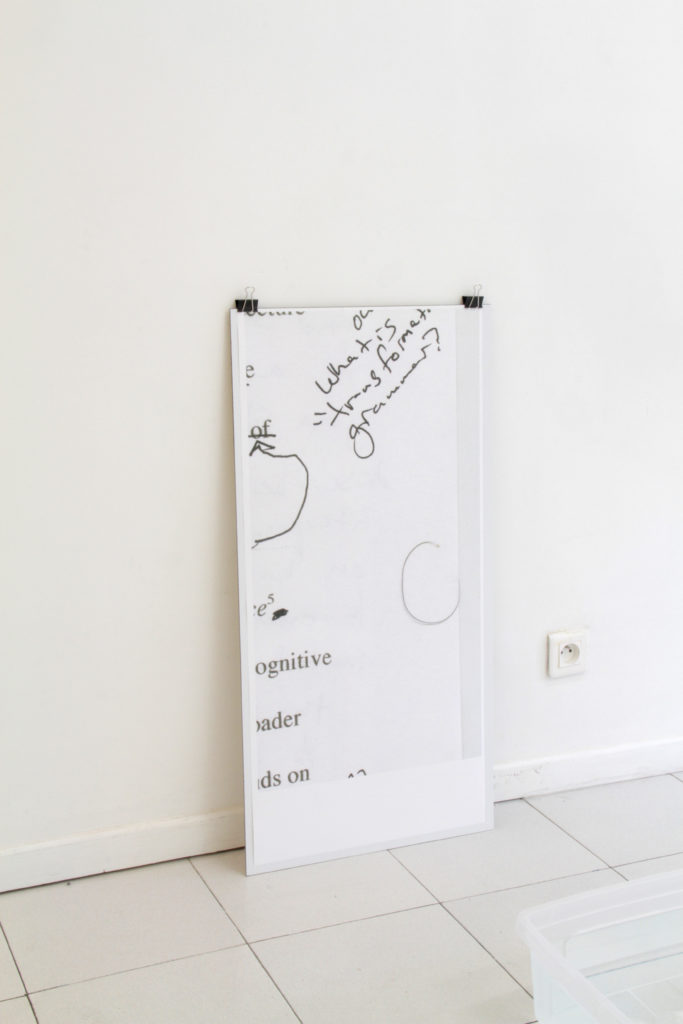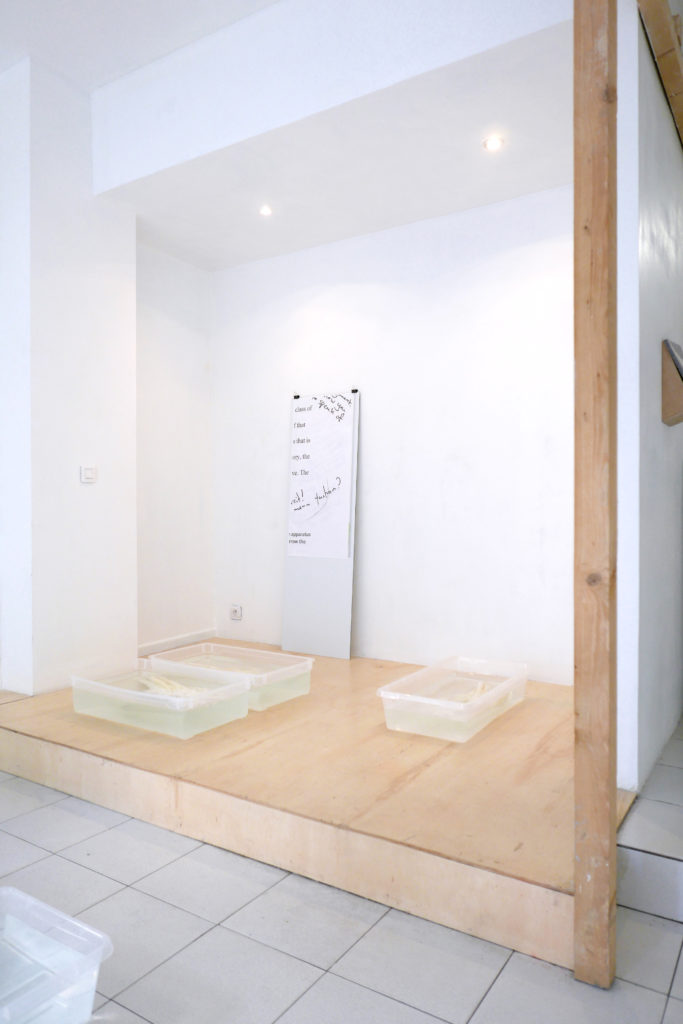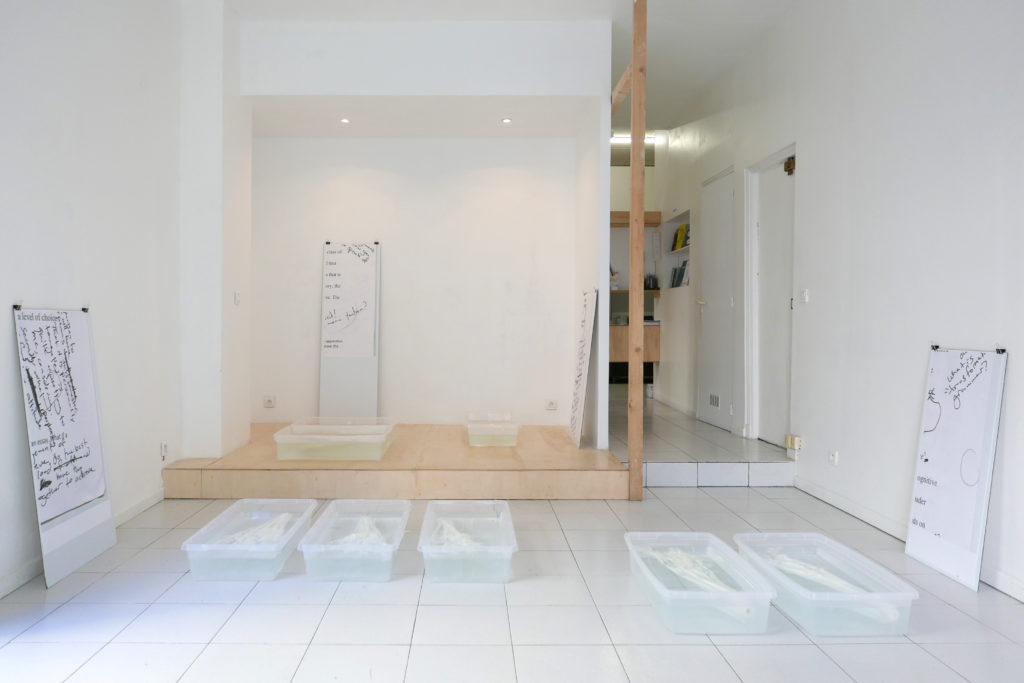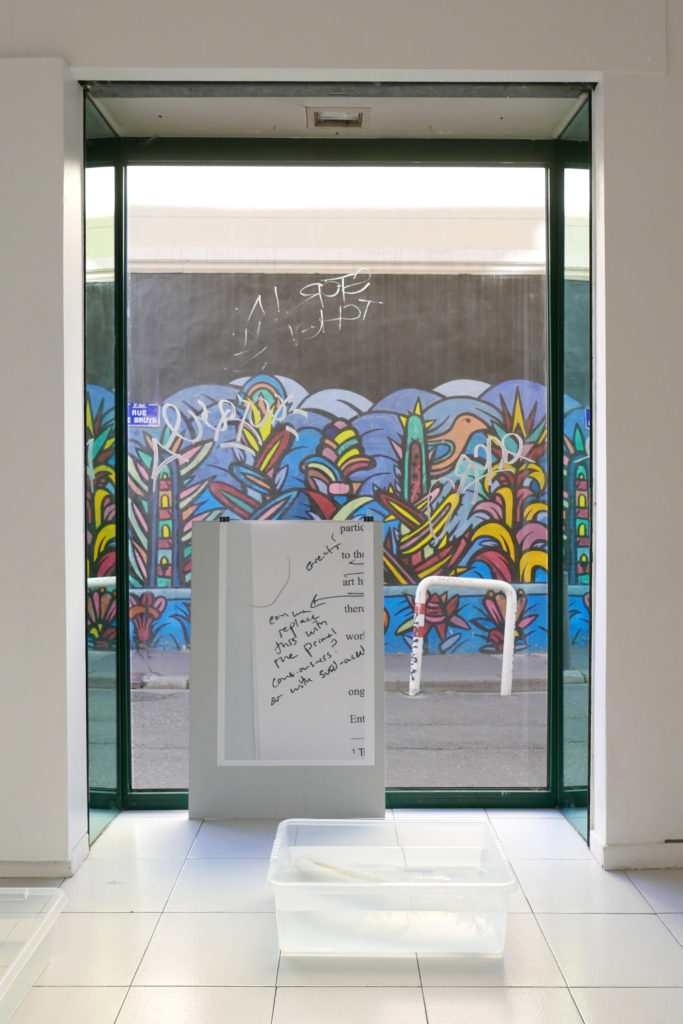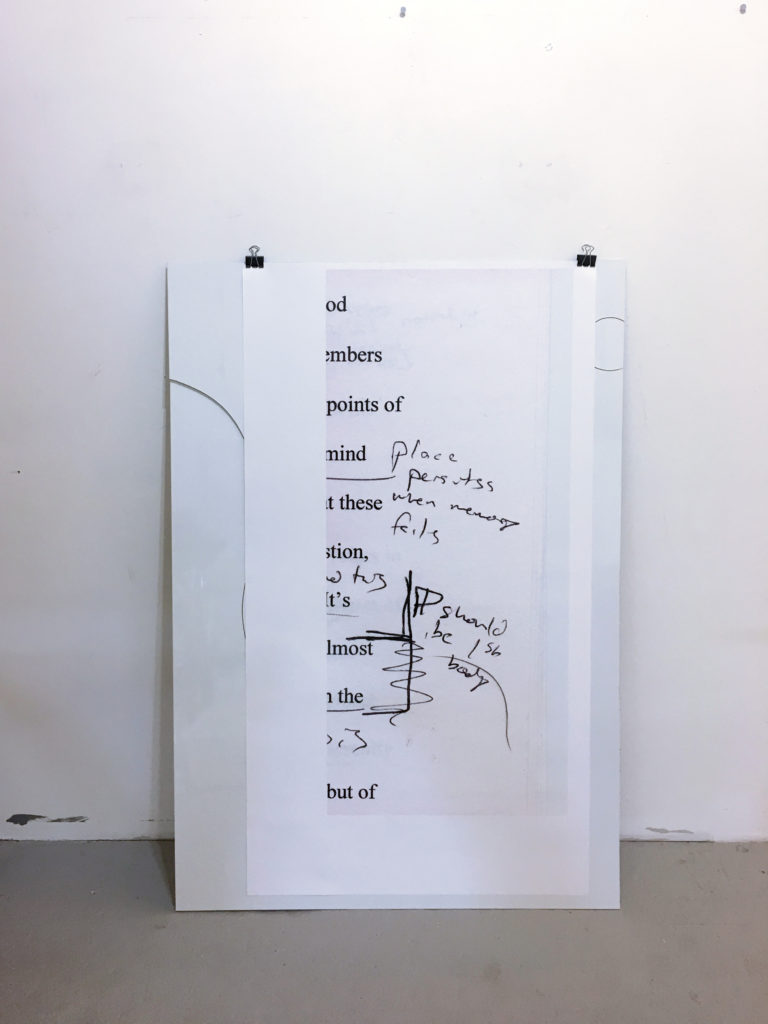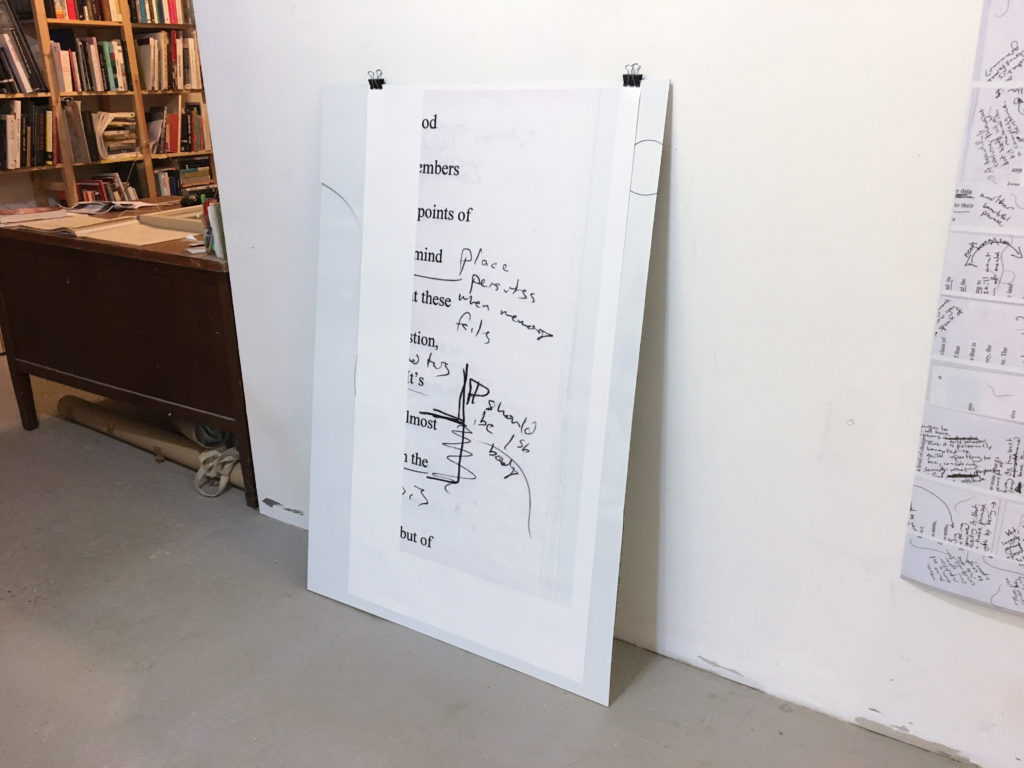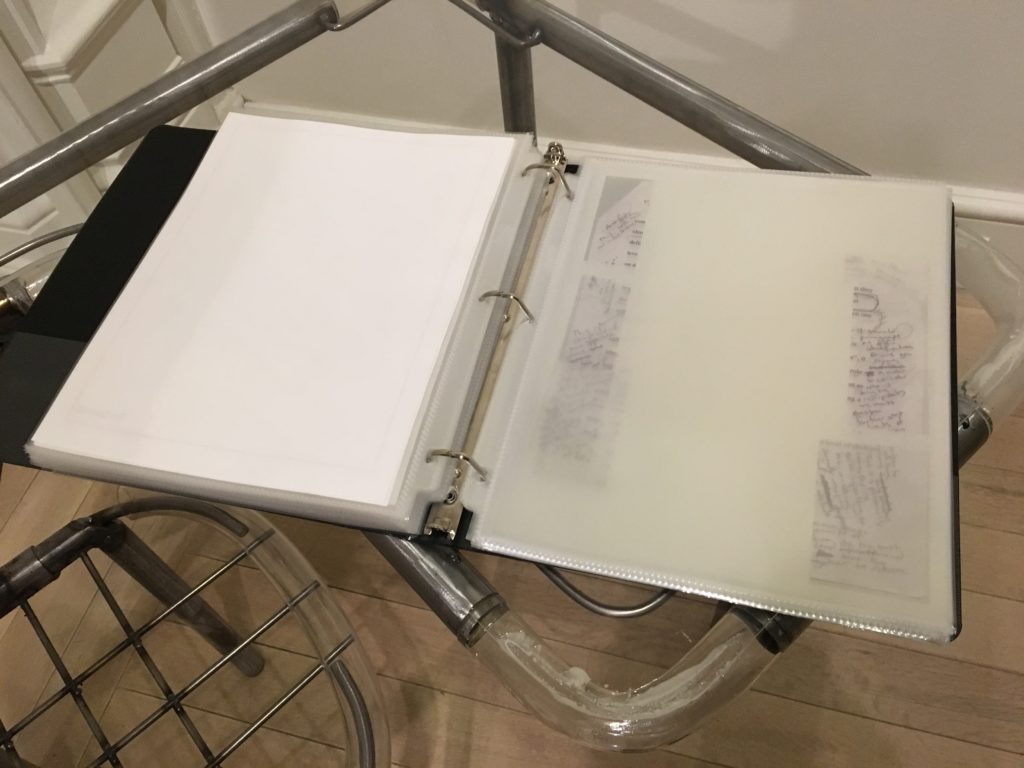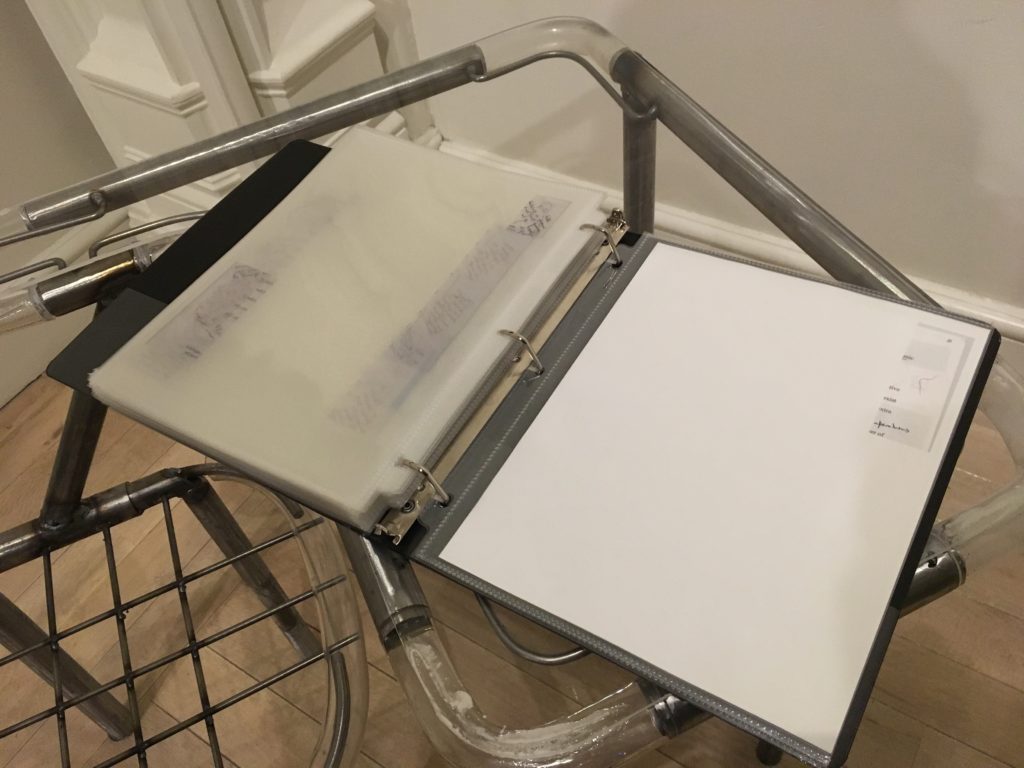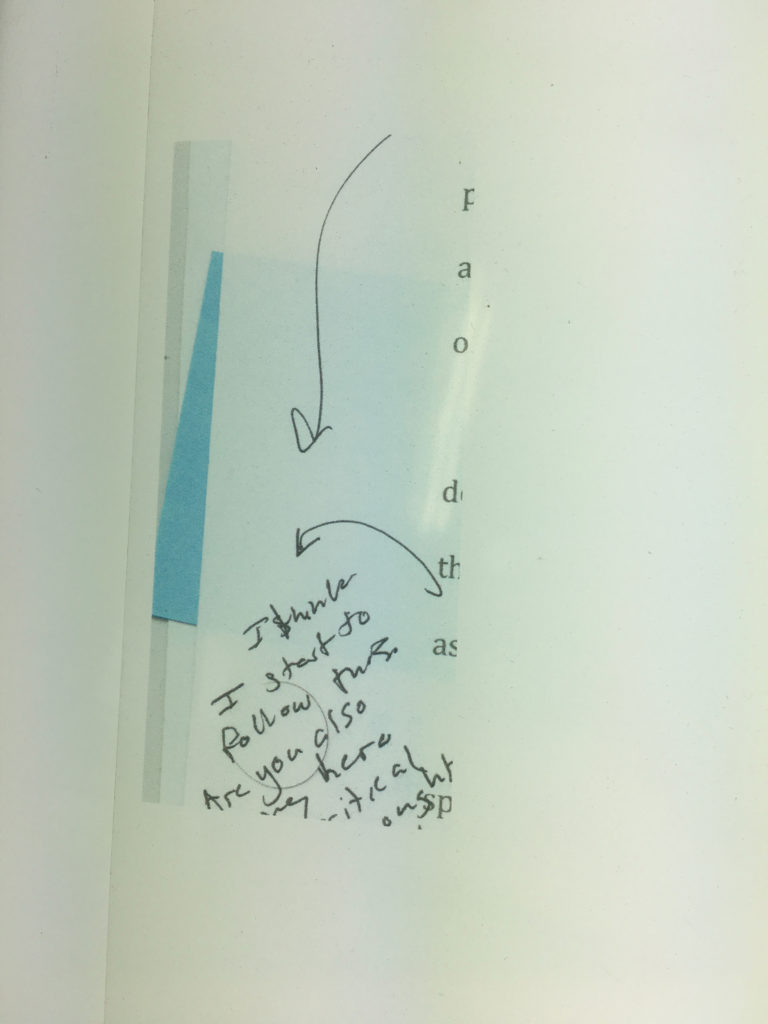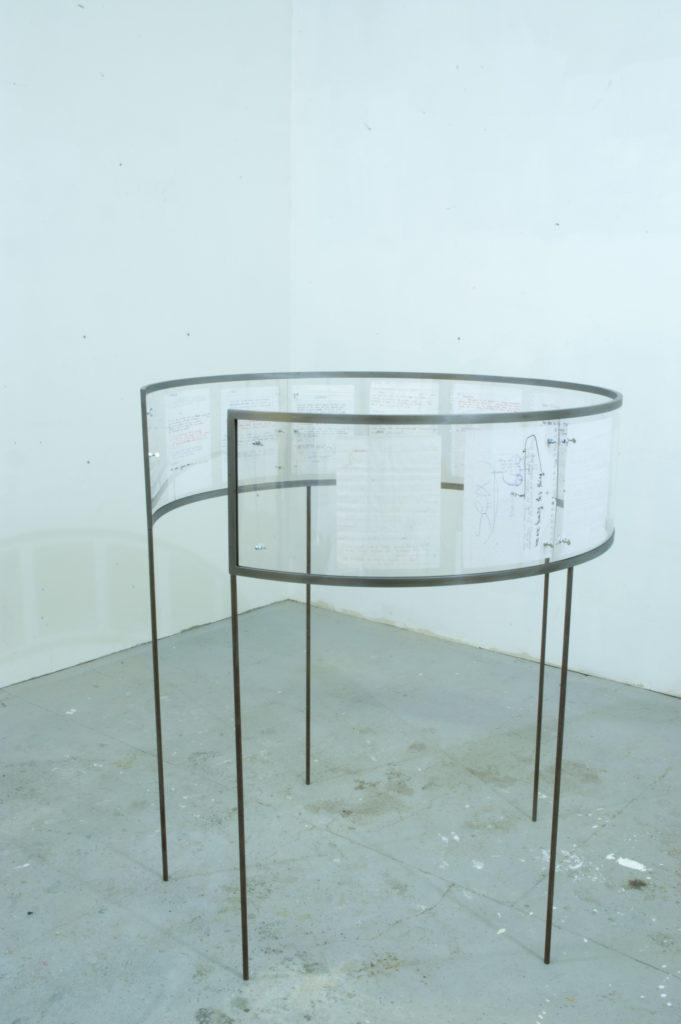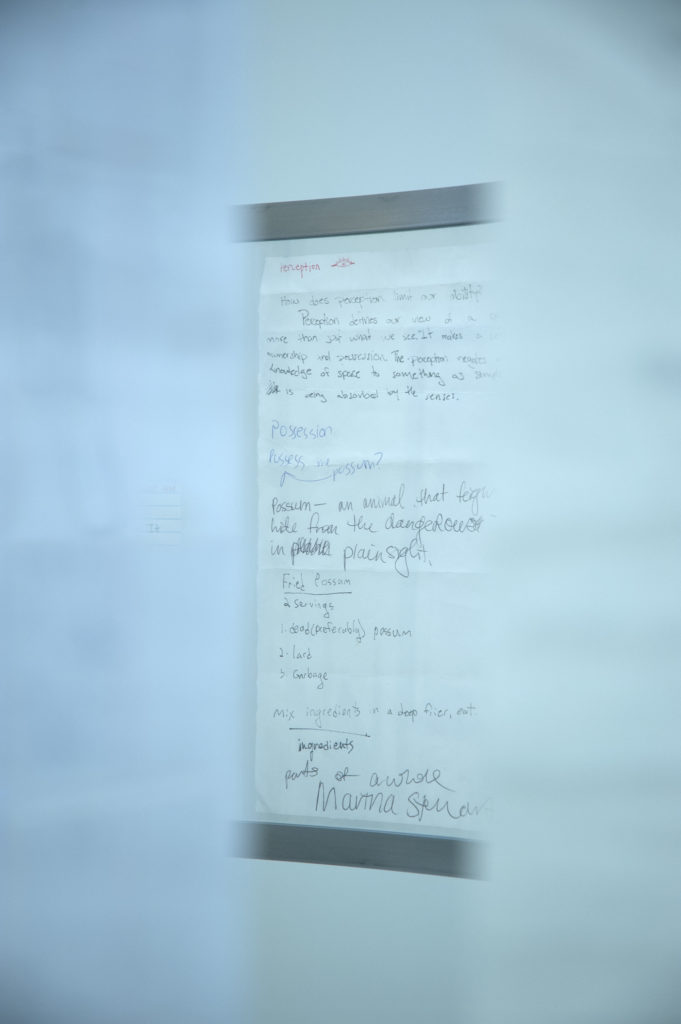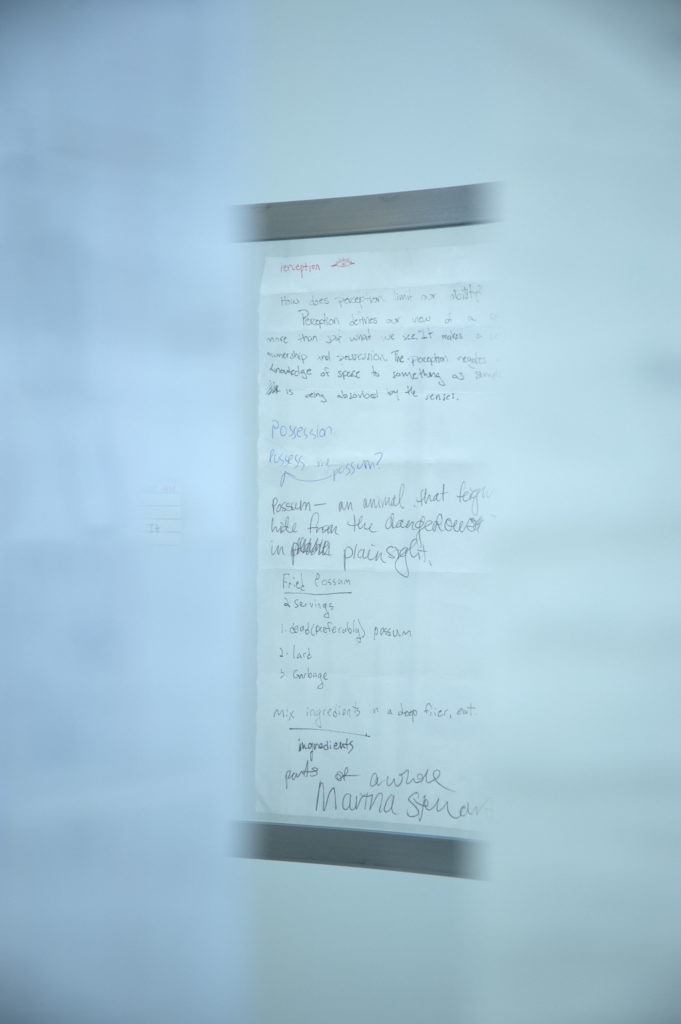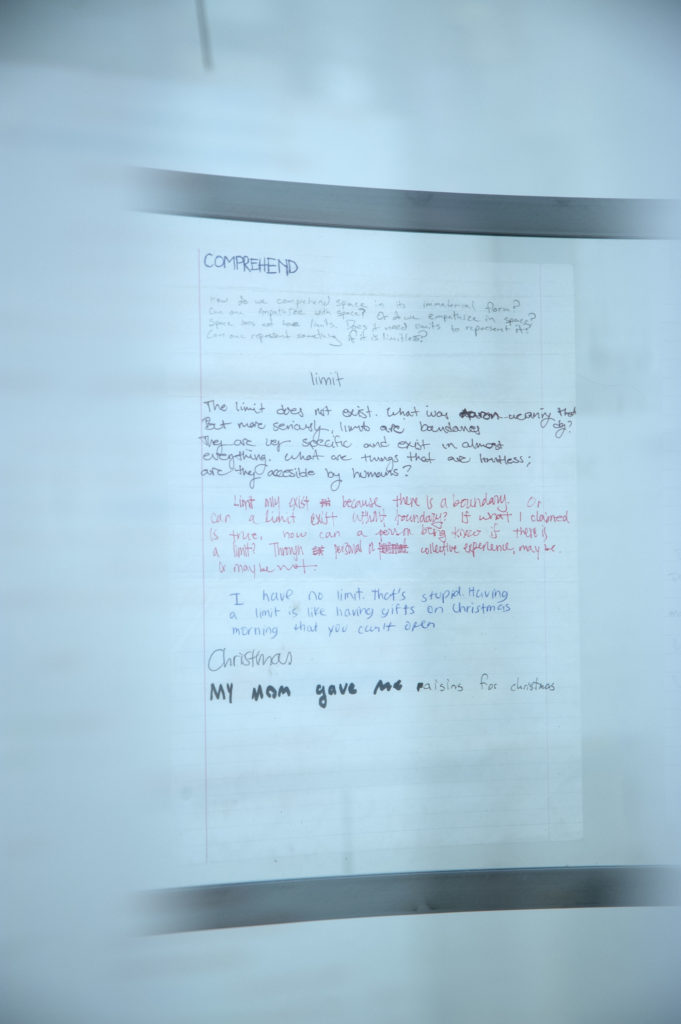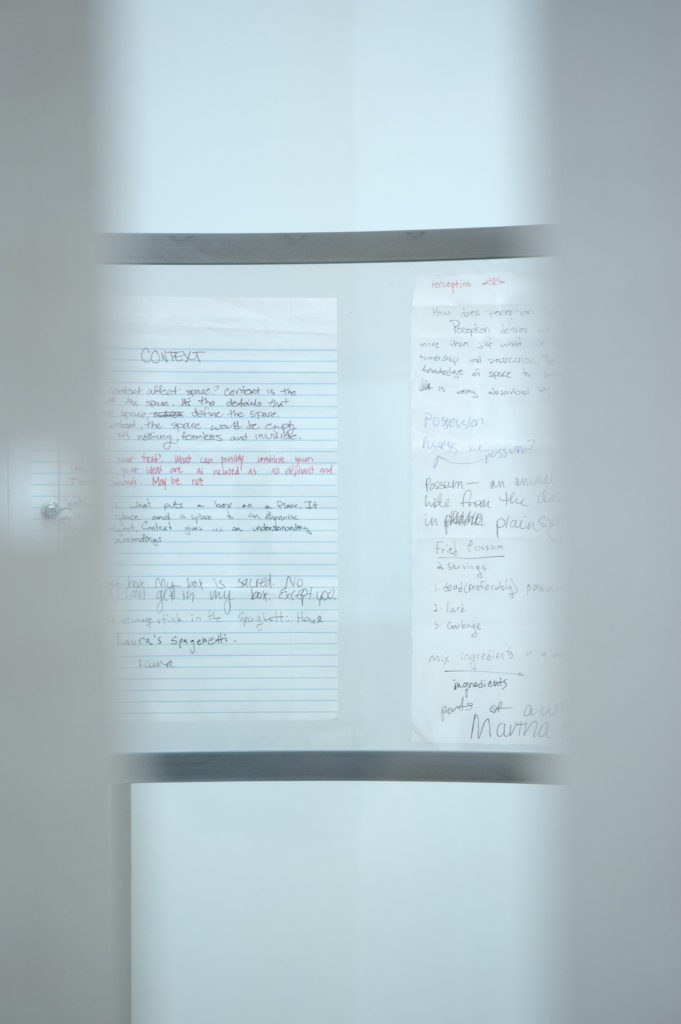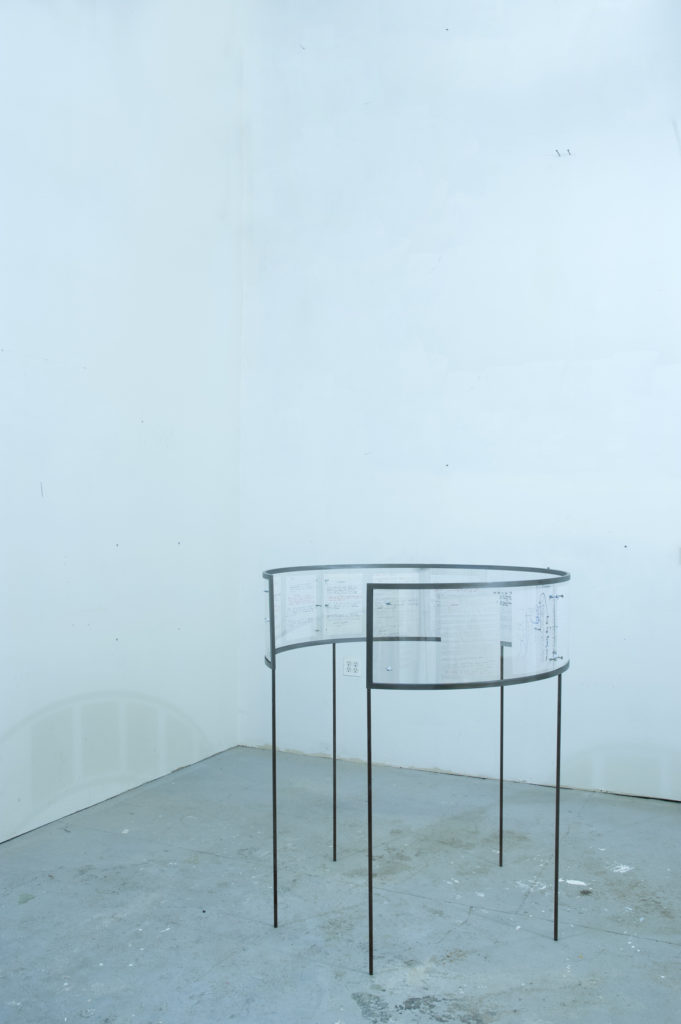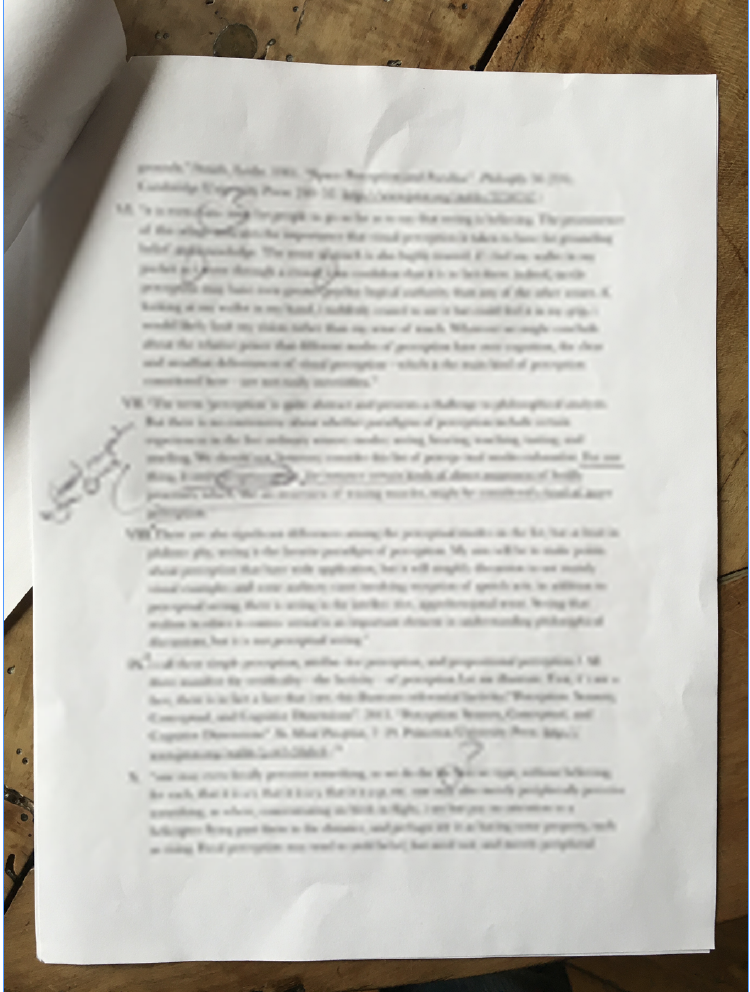Category: Index
• solips
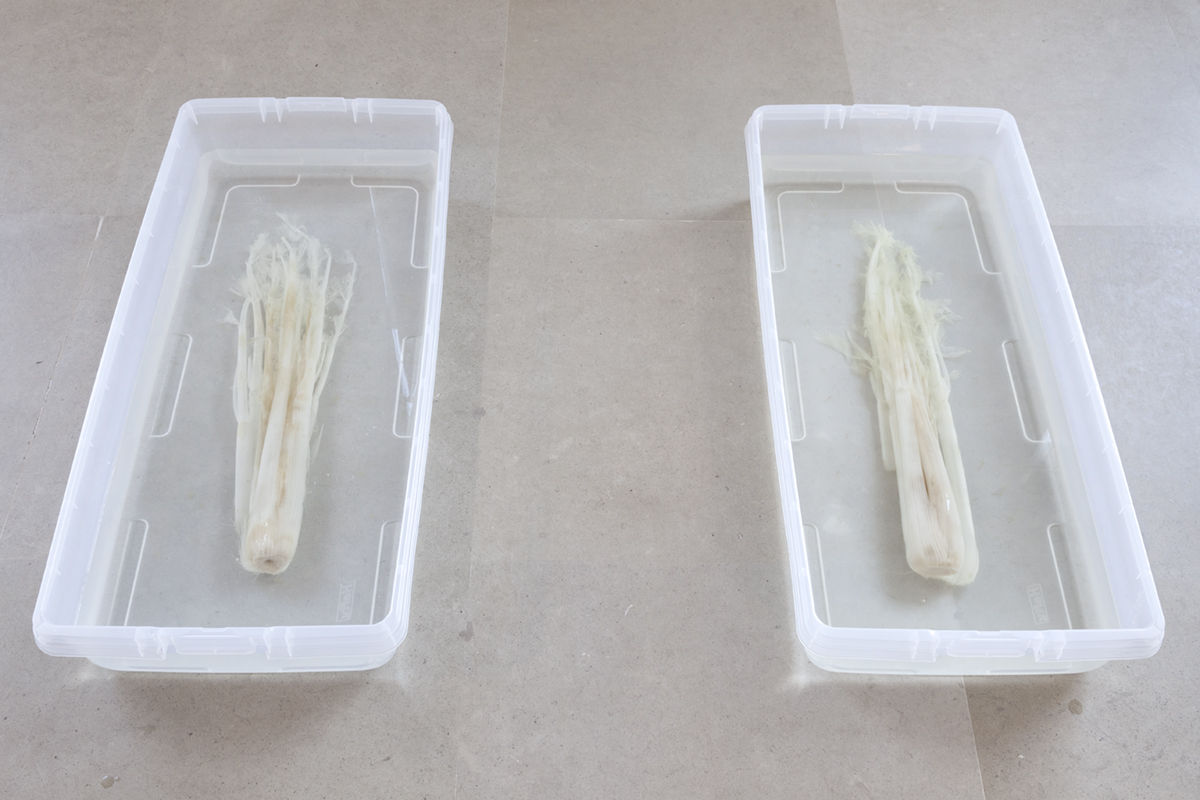
solips are plant-grown fruit (vegetables and fruits) overcorrected with bleach. A few are not edible growth, but urban weeds.
celery, water, traces of bleach and under-bed storage bins as a part of Exo Emo curated by Antoine Catala and Vera Alemani at Greene Naftali.
Exo Emo curated by Antoine Catala
and Vera Alemani at Greene Naftali.
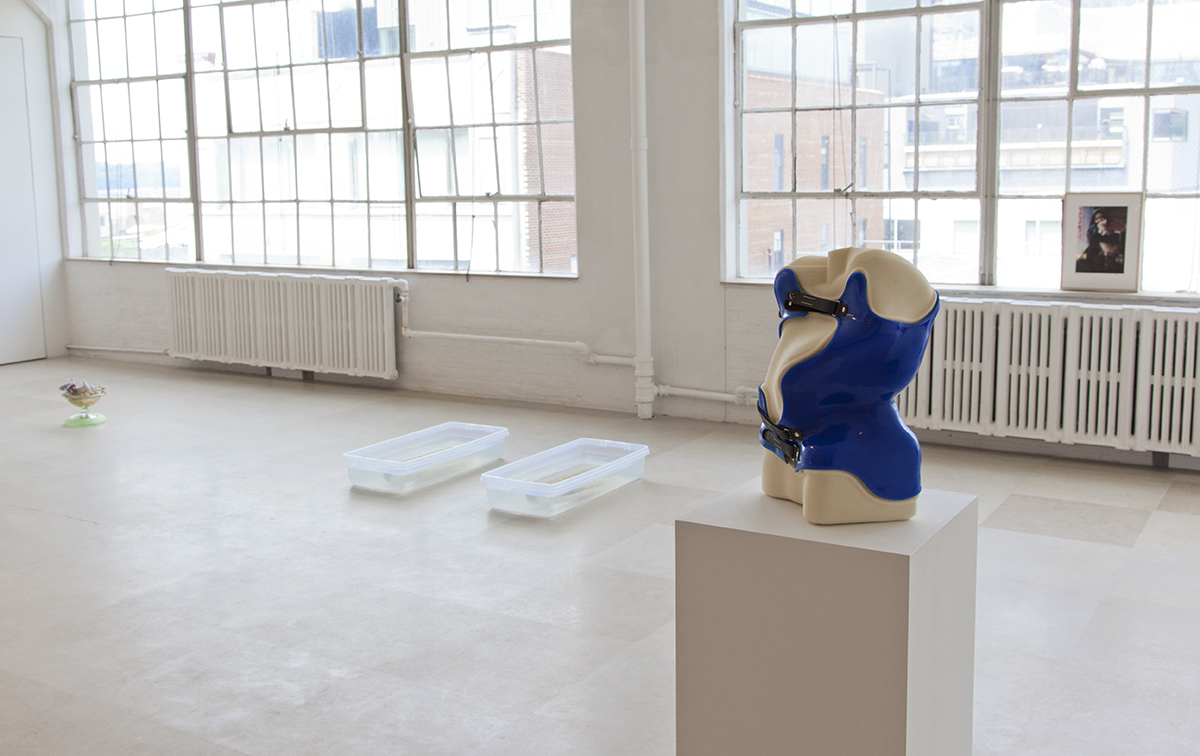
Solips is not a word but in English it has related sounds to solipsistic, solo, solitary, lips, polyps

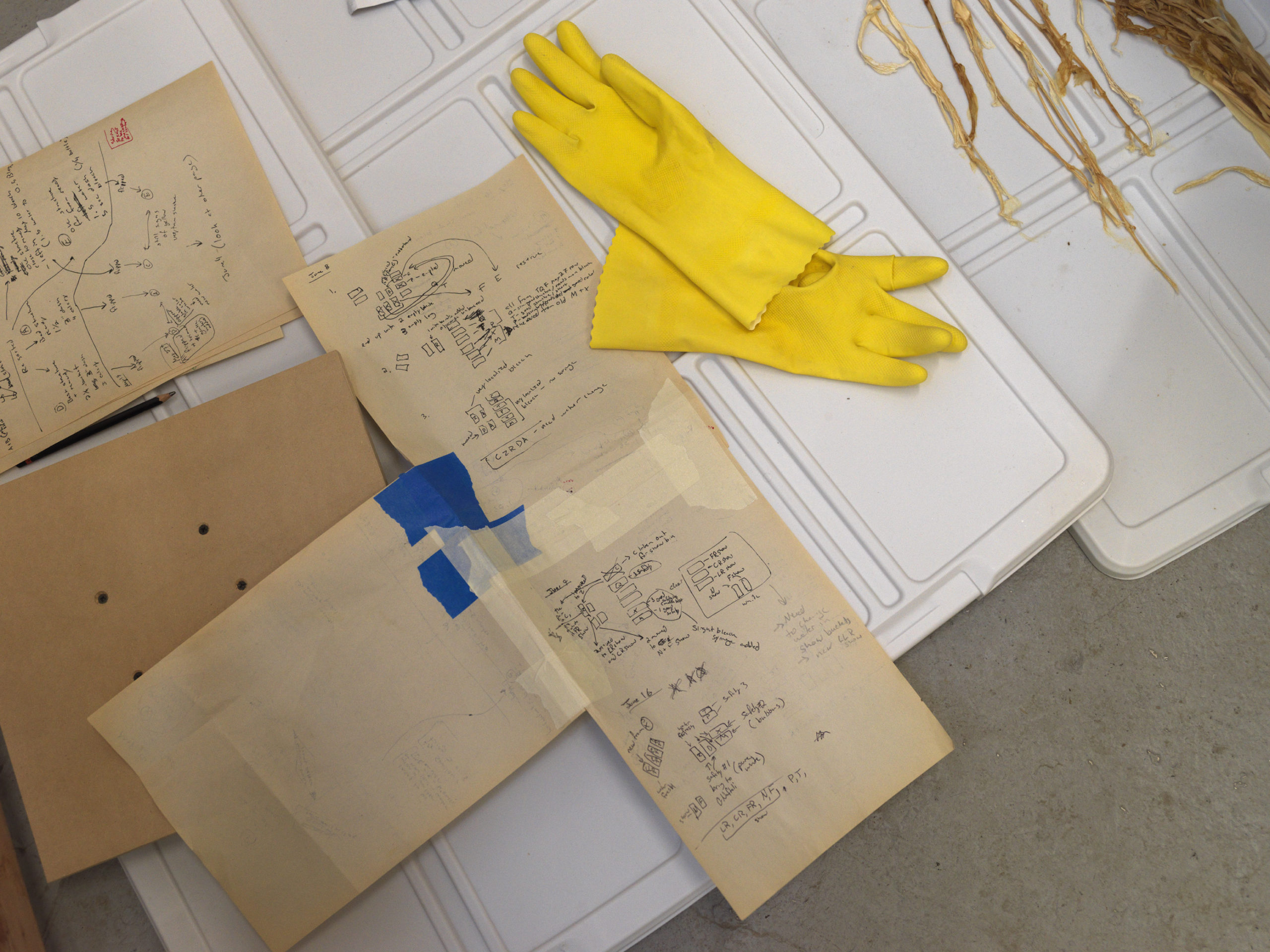

celery, water, traces of bleach and under-bed storage bins
installed as a part of I said, “say they” at Rond-Point Projects, Marseille.
press release, I said, “say they”
at Rond-Point Projects, Marseille.
Rond-Point Projects

Controlling food.
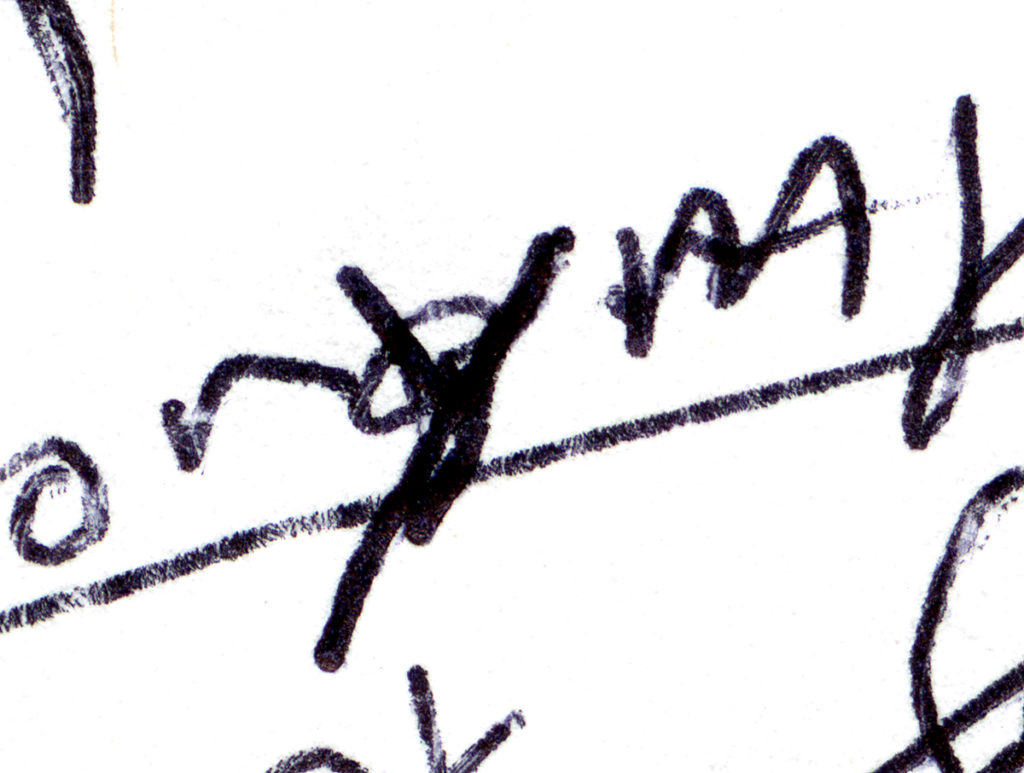
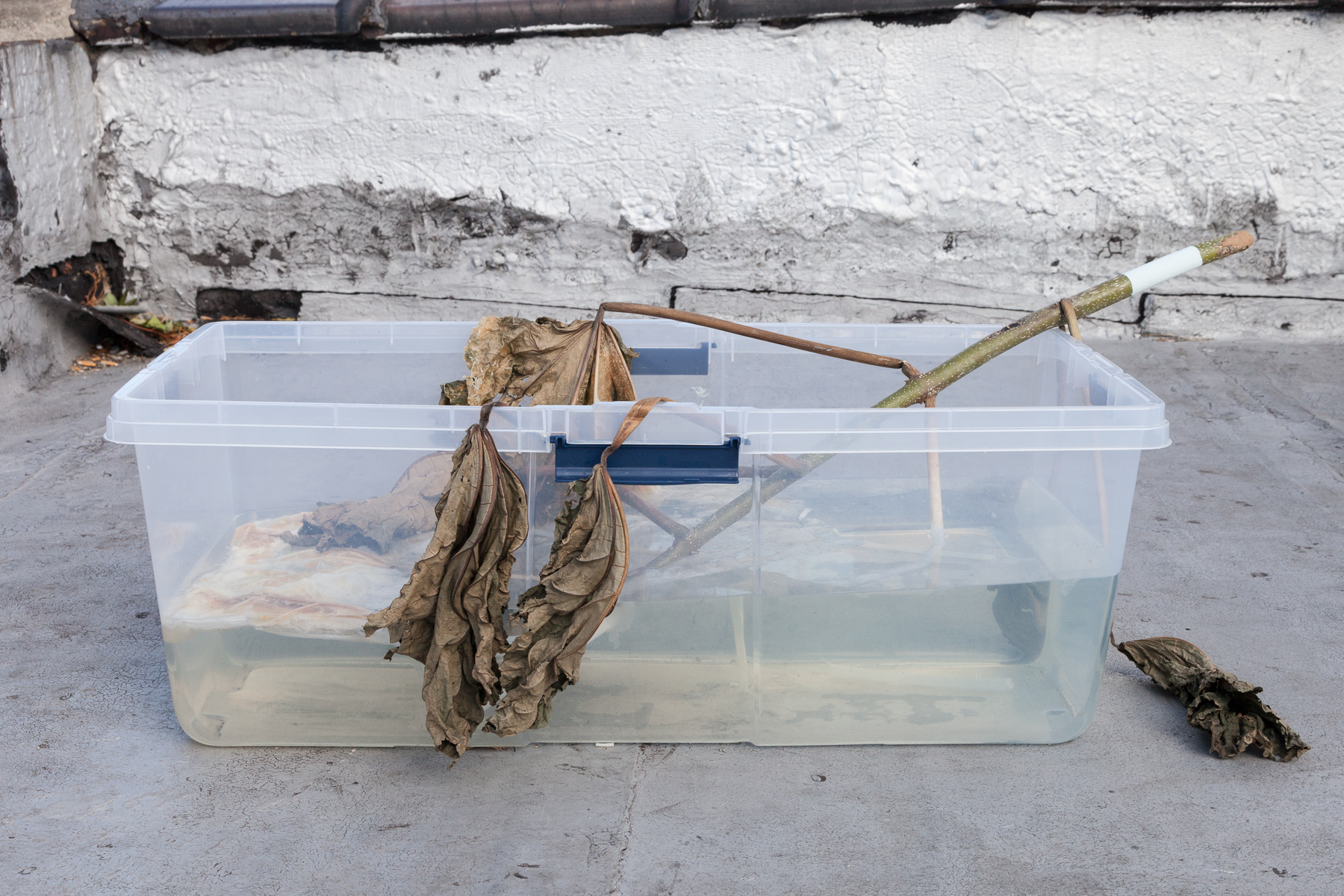
Empress tree, water, traces of bleach and storage bins
installed as a part of Pendant, curated by Tabitha Pisenoat WPN Projects, NY.
press release, Pendant at WPN Projects, NY.
WPN Projects
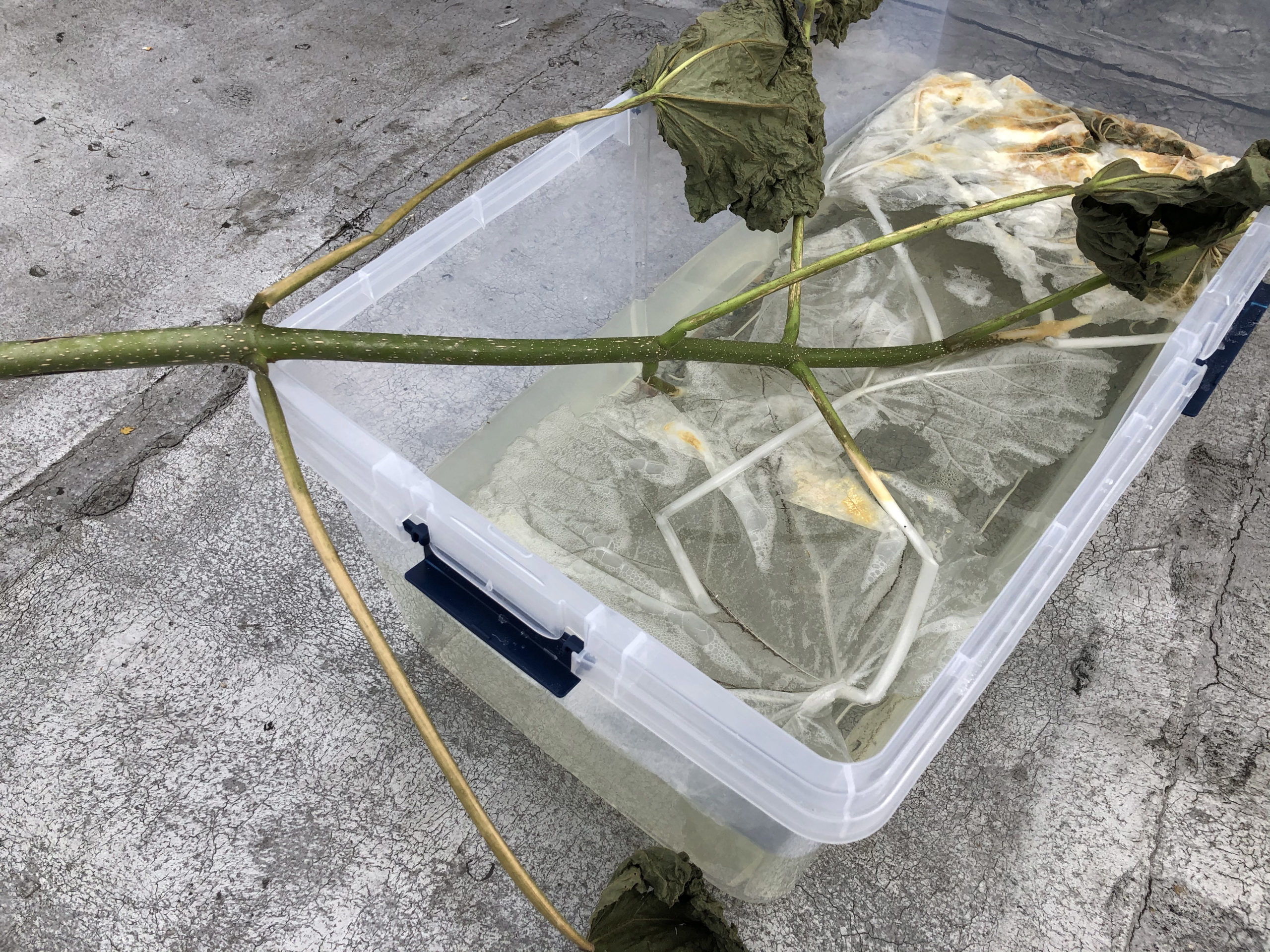


Routines of care.
Transparency is something we associate with honesty, purity, or letting someone in on something. Yet at the same time as a piece of plexi or glass reaches for the ideal of being looked through—honest, pure, and uninterrupted by glare and muddling reflections—it hides itself and meekly shrinks away. A way of receding, shrinking back, hiding in an act of exposing something, making something pure, or making something evident. In that way the formal qualities of transparency are very human and social, a kind of emotional and interactive complex between someone and the world around them. Active and passive. Transparency as a kind of camouflage. —meek and assertive—crossing ones feet and wanting to be imagined and seen as shouting.
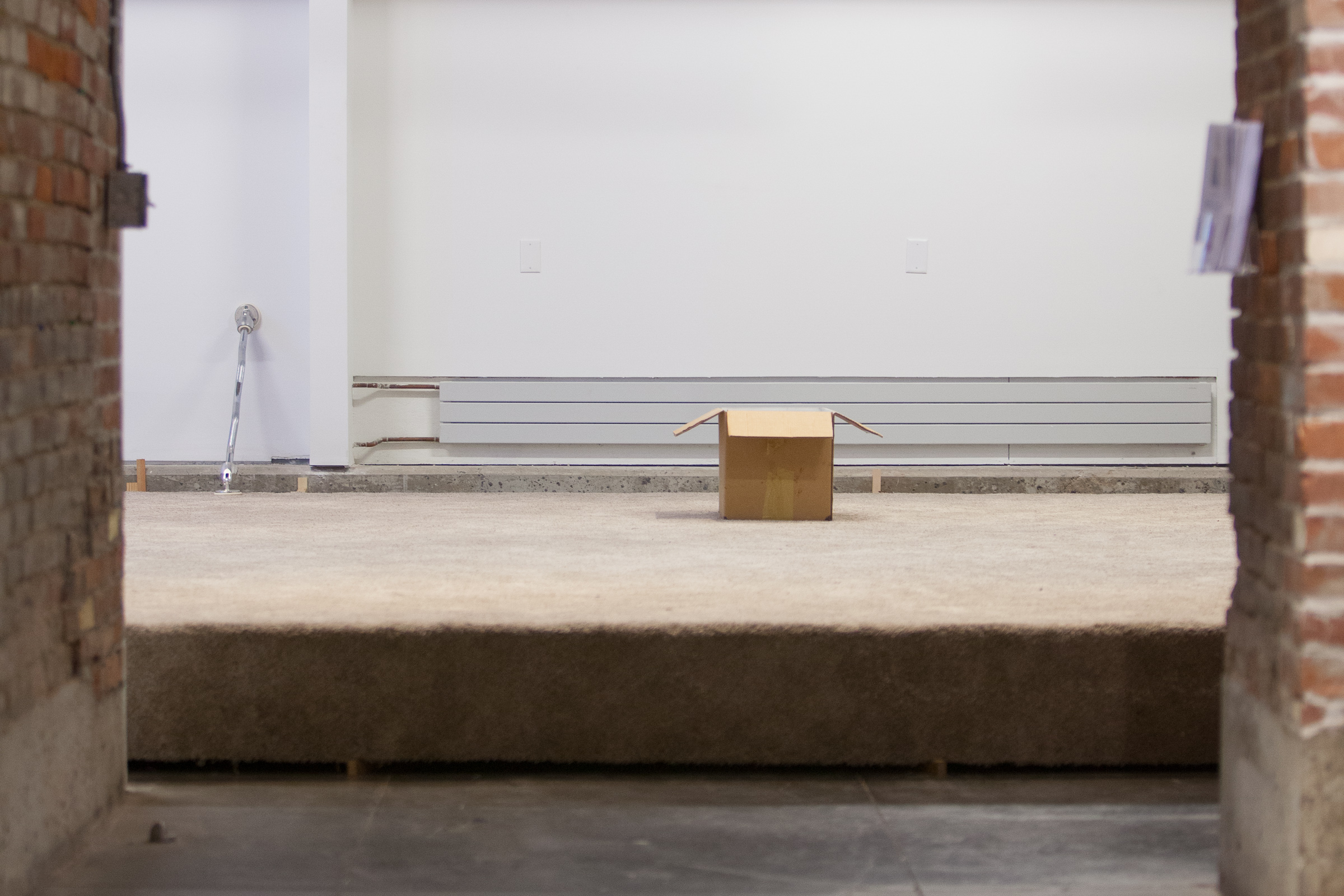
celery, water, traces of bleach, resin sealed cardboard box
installed as a part of The Way You Look: Ashish Avikunthak and Tim Simonds, curated by Pete Moran at Burlington City Arts, VT.
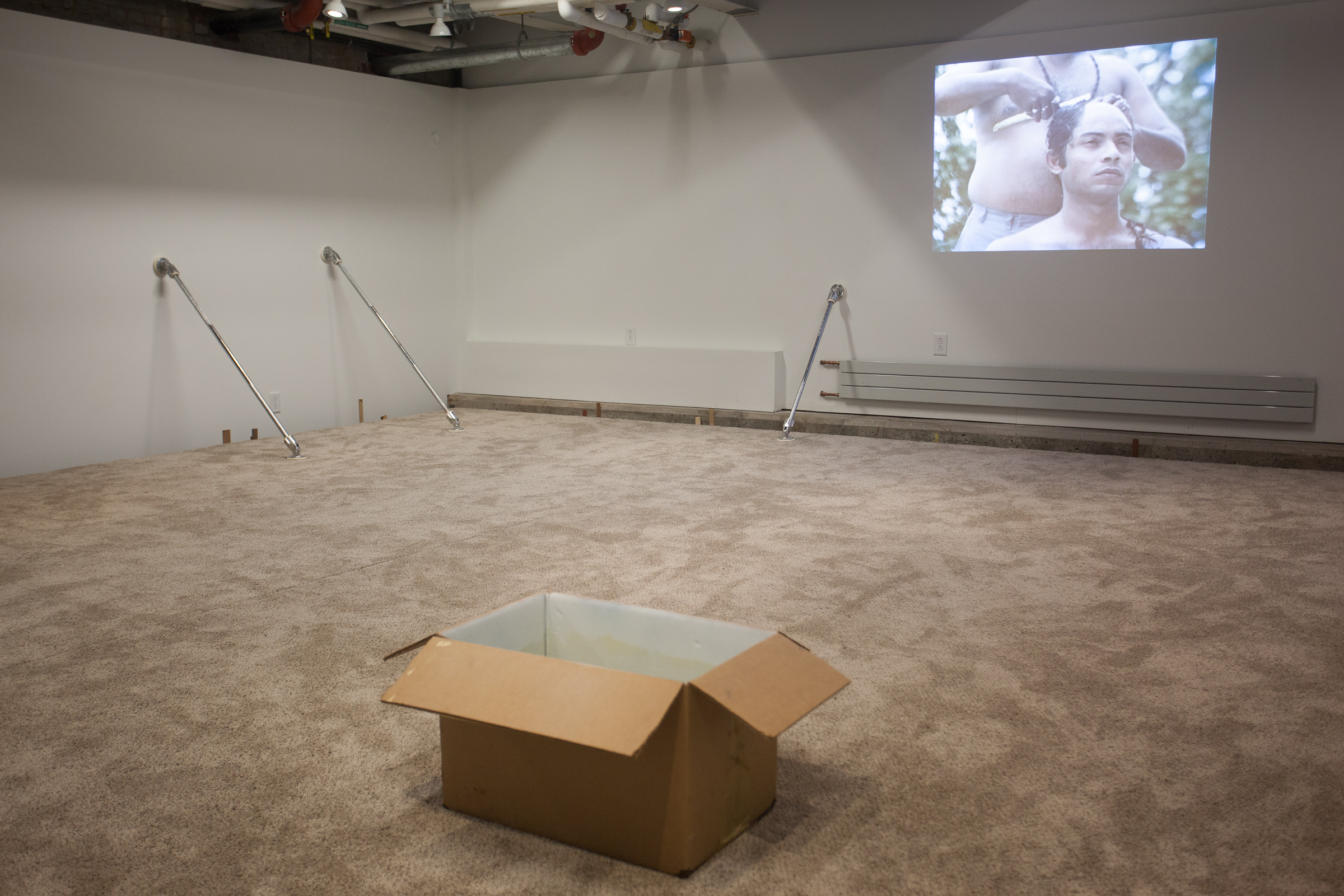
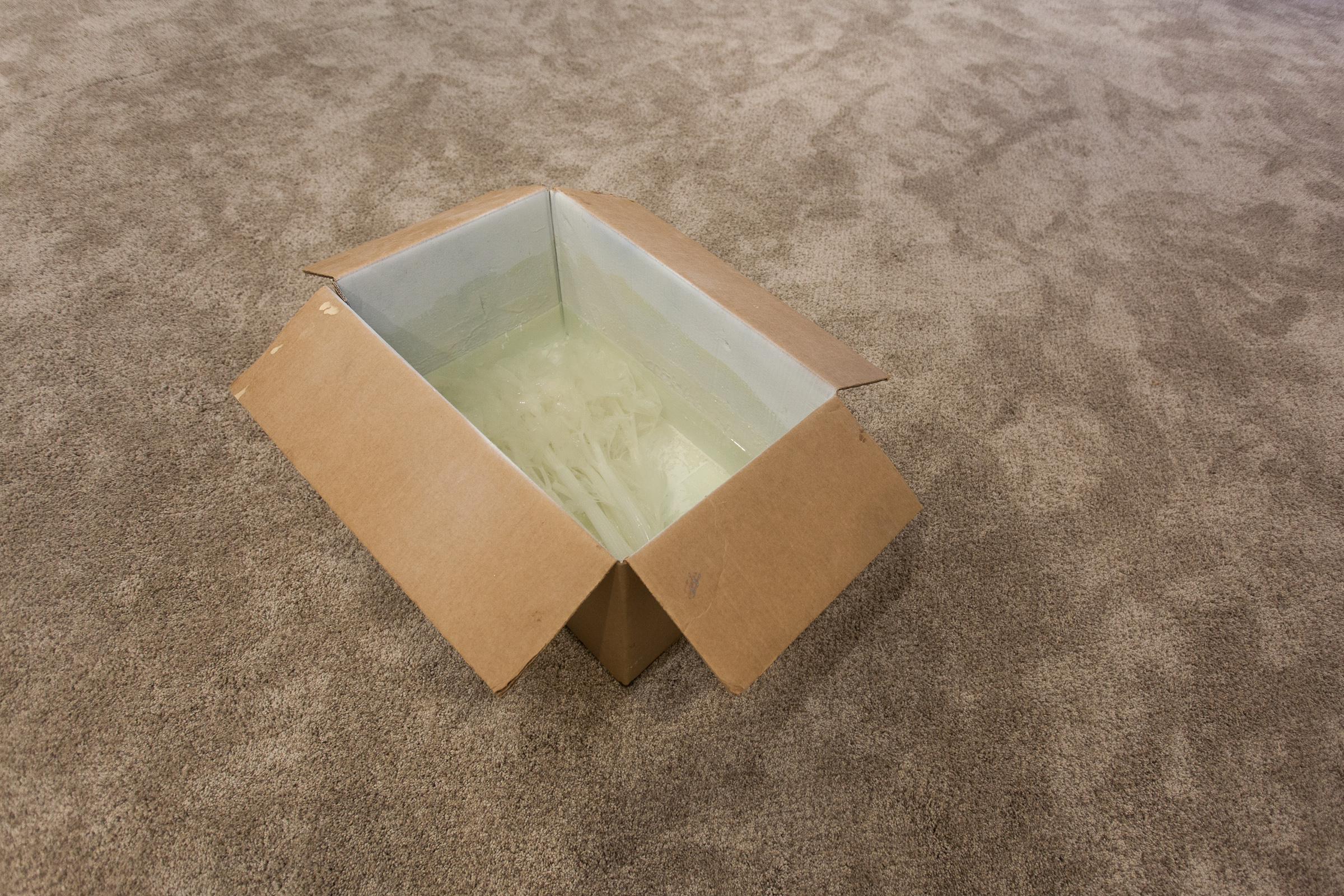
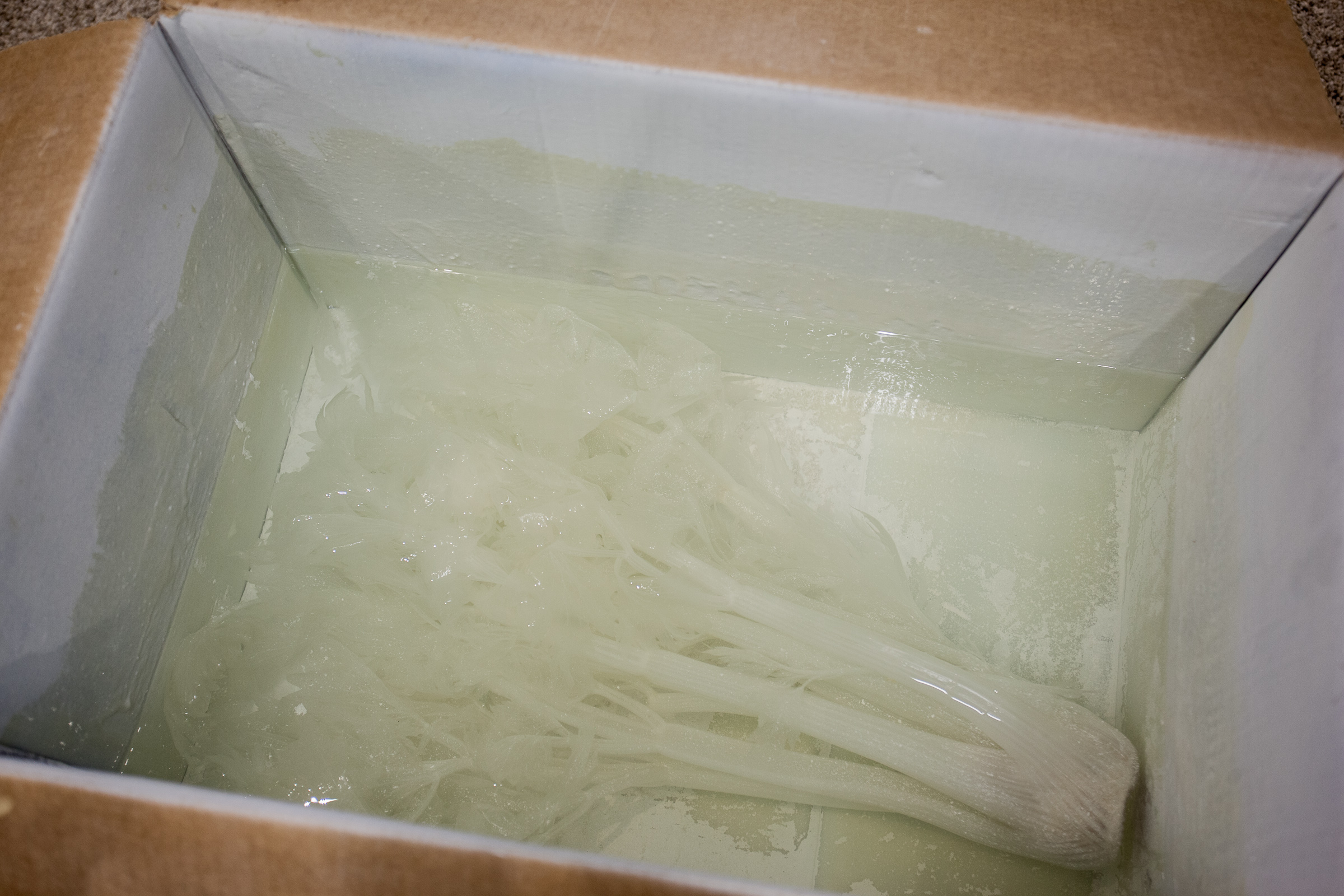
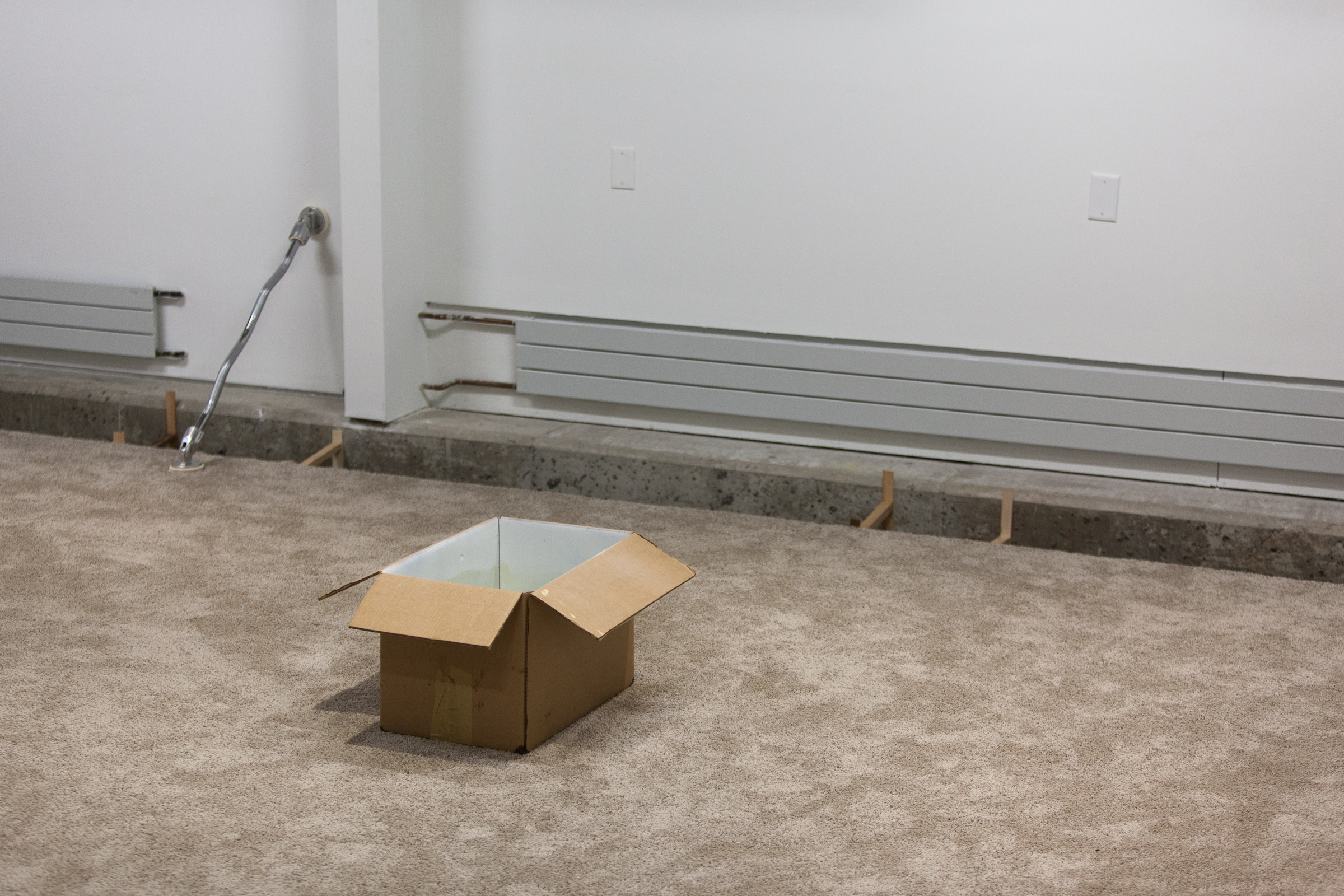
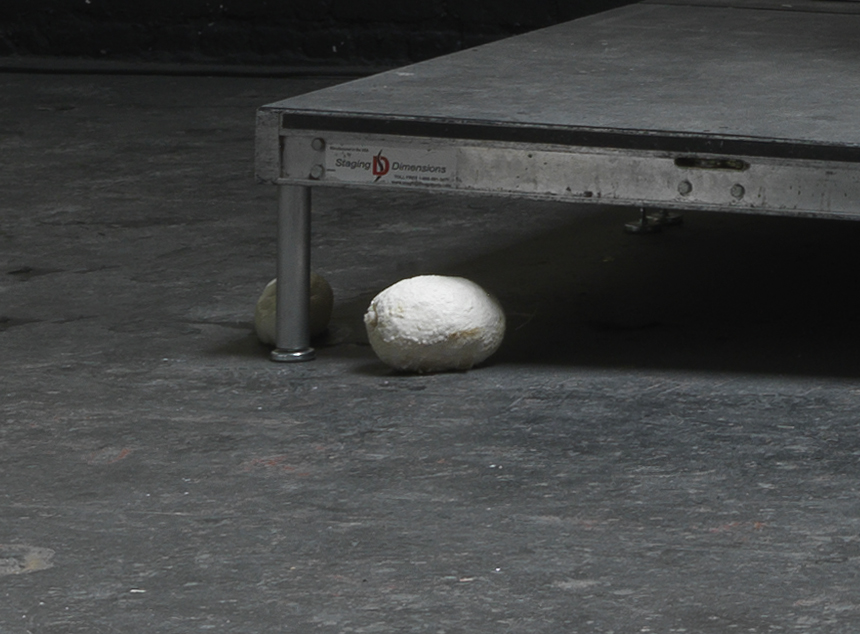
Honeydew melon, papaya, carrot, daikon, onion, pineapple
installed as a part of Cathouse Retrospective, curated by David Dixon at Chemistry Creative, Bk.
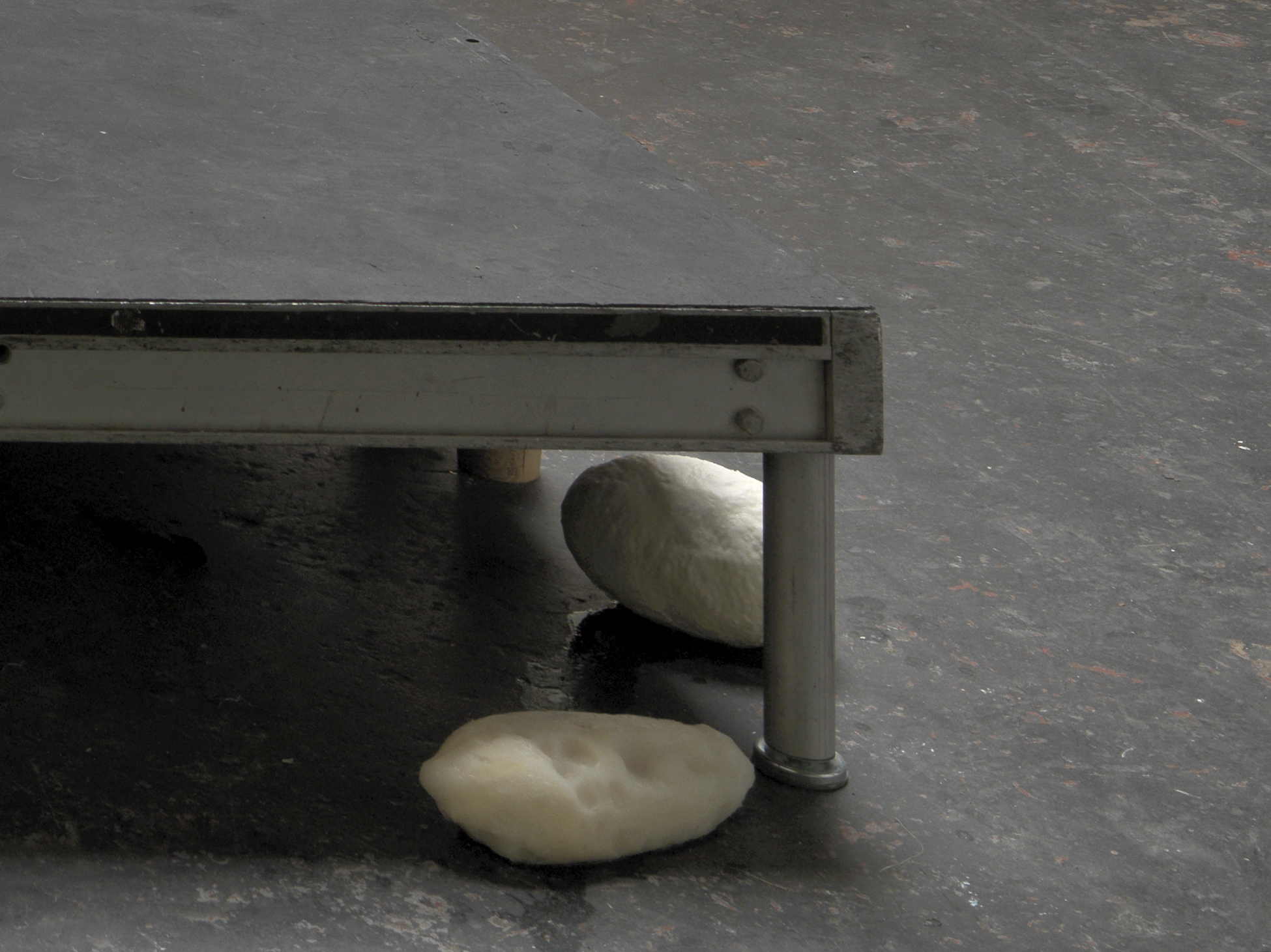
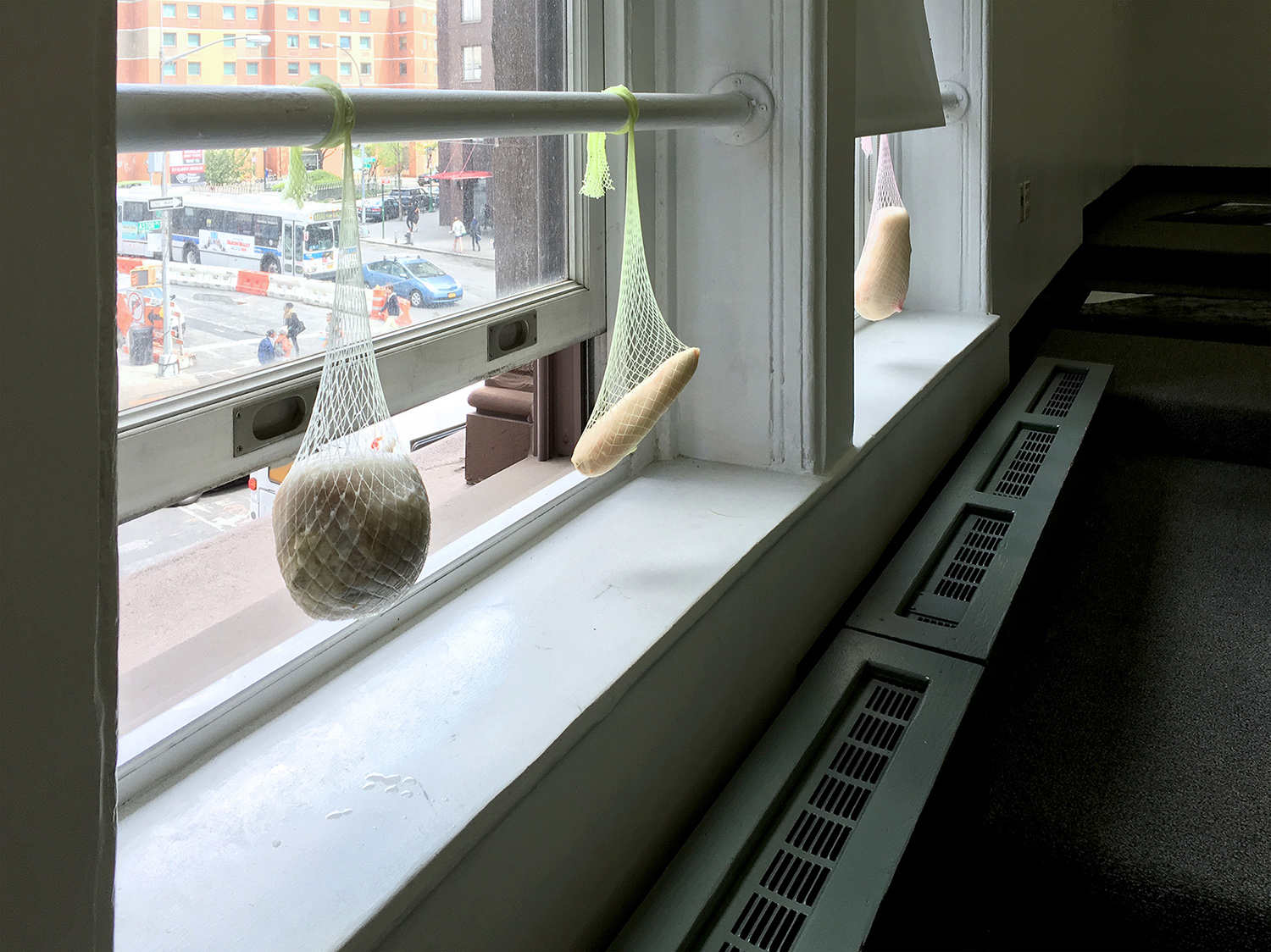
beetroot, carrot, papaya, bleach, fishnet stocking
as a part of Dump Camp, a conference and sequence of performances organized and curated by Bethany Ides and Ari Ferdman in a lecture-class room at Cooper Union.
Hung in the window bays in netted bags. The clean smell of their bleached flesh wafts in with the open windows over the course of the day-long conference / sequence of performances. Dripping dry, and becoming more opaque as the day goes on and in the case of the beat, slowly re-reddening as it re-dyed itself from the inside out. How does this flesh take care of itself, inform itself? Is correcting, over-done, self defeating, self effacing?
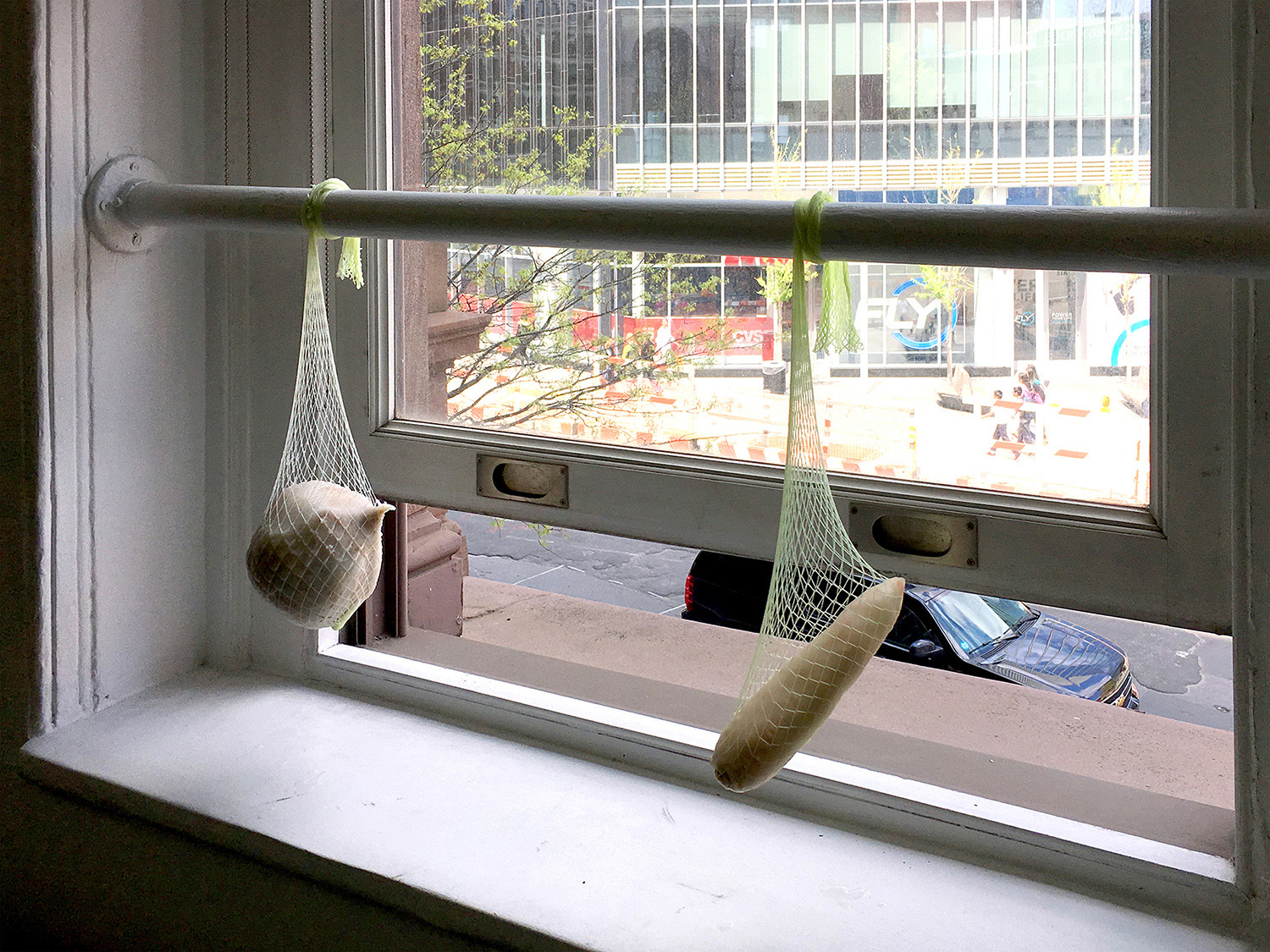
On the floor in the same space are a set of prints (To do before washing hands) taped to the floor in the way of the walking paths of the classroom. Each print is an image of a hand with reminders and to-do lists written on them. Some of the images show a wet hand, with handwriting smudged or running.
These are the first solips or bleached vegetables and fruits. I had at the same time been bleaching single stems of celery and hanging amidst prints that I was making from my spelling errors in my correspondences to my students. solips have always been a form of hyper-correction that runs parallel to the way I have thought of a teacher’s insecurity, the position of a teacher’s voice that is correcting itself.
What happens if the badly idealized forms of teacher and learner are folded over each other? What is the centripetal-ness, the self-awareness, self-reflection, self-correction, selfishness, passive, meek and undependable nature of a position seen and idealized centrifugally, hierarchically, as selfless, active, responsible? Though I had started then to work with teaching as a material, I only realize now, that the space of Bethany and Ari’s conference/performances was the first time that I entwined my work with an environment of teaching; I had taught in similar classrooms for a few years and still do.
In grade school when you learn how plants work, at the same time, how human work, how the blood circling around makes its way back up your legs, you place a piece of celery in a cup of water and food coloring. You watch the red, blue or maybe yellow march its way up the stem and to its leaves.
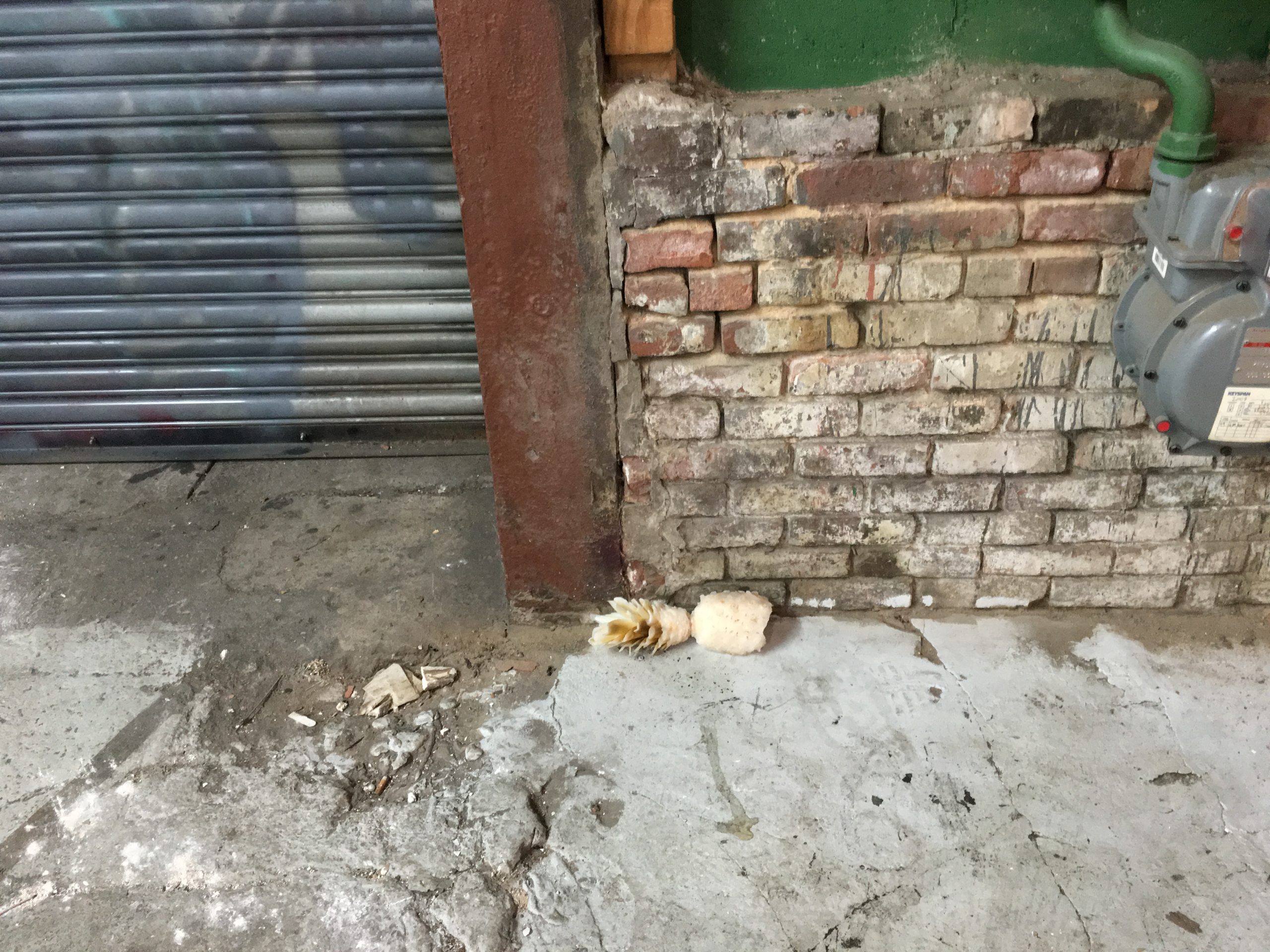
pineapple, mango, beet, apple, squash, papaya, kiwi, traces of bleach, plastic bins
in House of Orange at Wilma Projects.

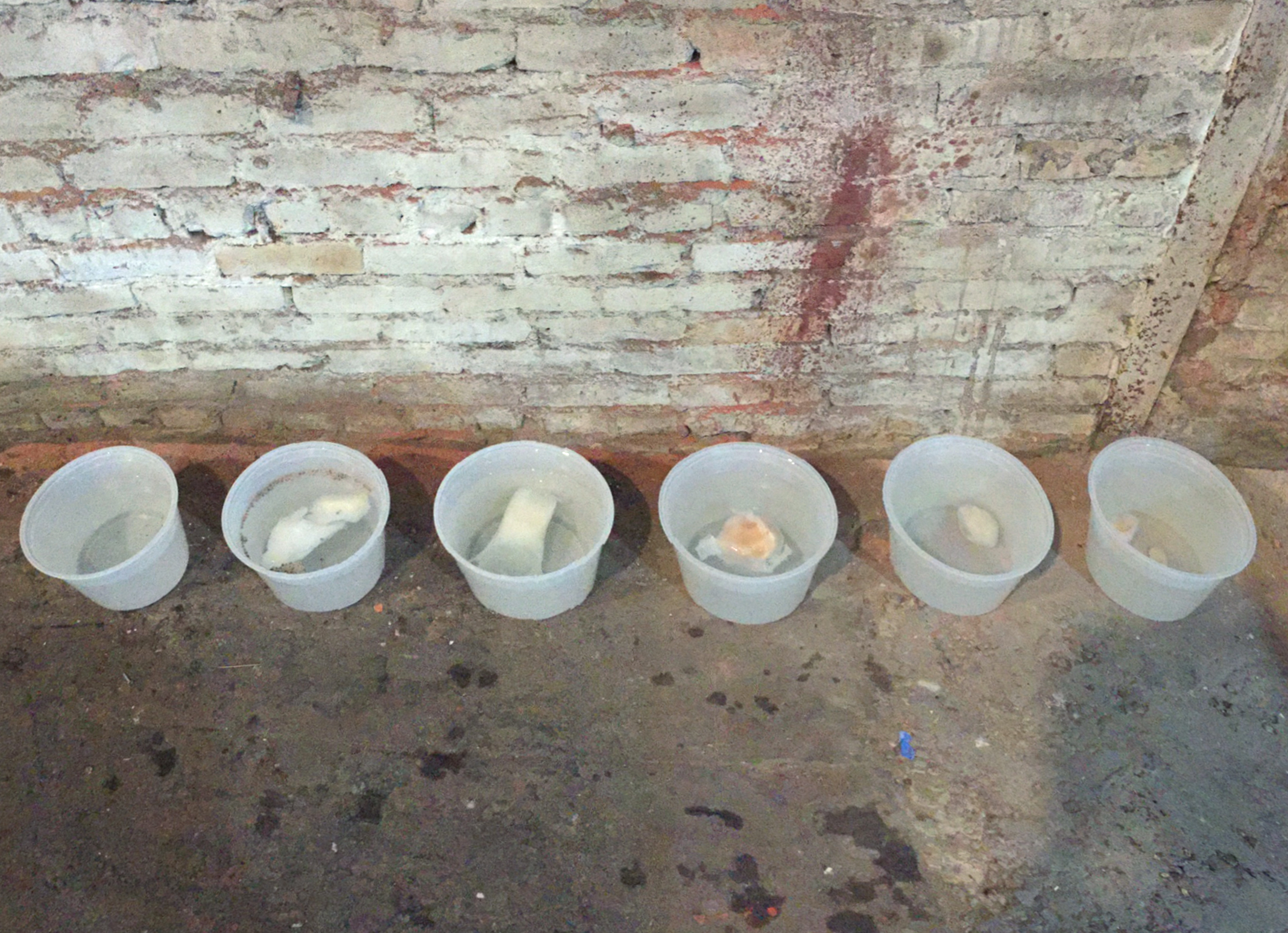
Horizons of whitening.
• model maypoles and braids

press release, model maypoles at Da, 2020
Two or more people have a conversation in a room and then leave it. They leave the room and leave the conversation. The conversation is left in the room. But it has no story. It hasn’t been left with a story. There is no “about.” It is a pattern. Or a patterning. Just the relations. A bunch of prepositions lingering there. Some negotiation. Some coordination. All the social words with which we describe music: harmony, dissonance, chord, discord, resolution, fugue, counterpoint. It is left there. But it is not residue. More like a puppet. It moves. And might be dressed up. A puppet that is a teacher. A puppet that is a teacher with only limbs. And someone else, some other people, might come in and use it; pick it up and dance with it.
Here are a set of maypoles. They are like the midsommarstång danced around in Sweden, like liberty poles and arbres de la liberté that rally a gathering for someone to speak out in a small village in 18th century France or North America, like the poles plaited in Waldorf schools as a part of elementary education, like the Maibäume birch tree tied to the corner of the houses of lovers in the Rhineland. They are model size. Smaller rituals. Some move. Some are obstructed. Some are knotted from the outset. And some are too fragile to stand on their own.
Once circle,
All equally spaced around,
numbered clockwise.
The even numbers face out.
The odd numbers face in—
they do not move, but act as gateposts.
The even numbers move.
Away from the center of the circle
Turning right,
And moving back towards the center of the circle
passing between the next gate post.
Turning left,
And moving back away from the center of the circle
Passing between the next gate posts.
Turning right,
And so on and so on…
One evening in the winter of 1801 as I walked in the park, I happened to meet Mr. C—who was engaged as first dance in the opera, a man very popular with the public. I told him, in passing, that I had seen him several times at an outdoor marionette theater that had been set up in the market square to entertain the common-folk with song and dances and short dramatic burlesques.
He assured me that I need not be surprised at his delight in the pantomime of these marionettes; and hinted that they could be very effective teachers of the dance. Since he did not seem to be indulging a mere whim about them, I sat down with him to discuss this strange theory in which marionettes seemed to become teachers.
— Heinrich von Kleist, On the Marionette Theater, 1810 (translator unknown)
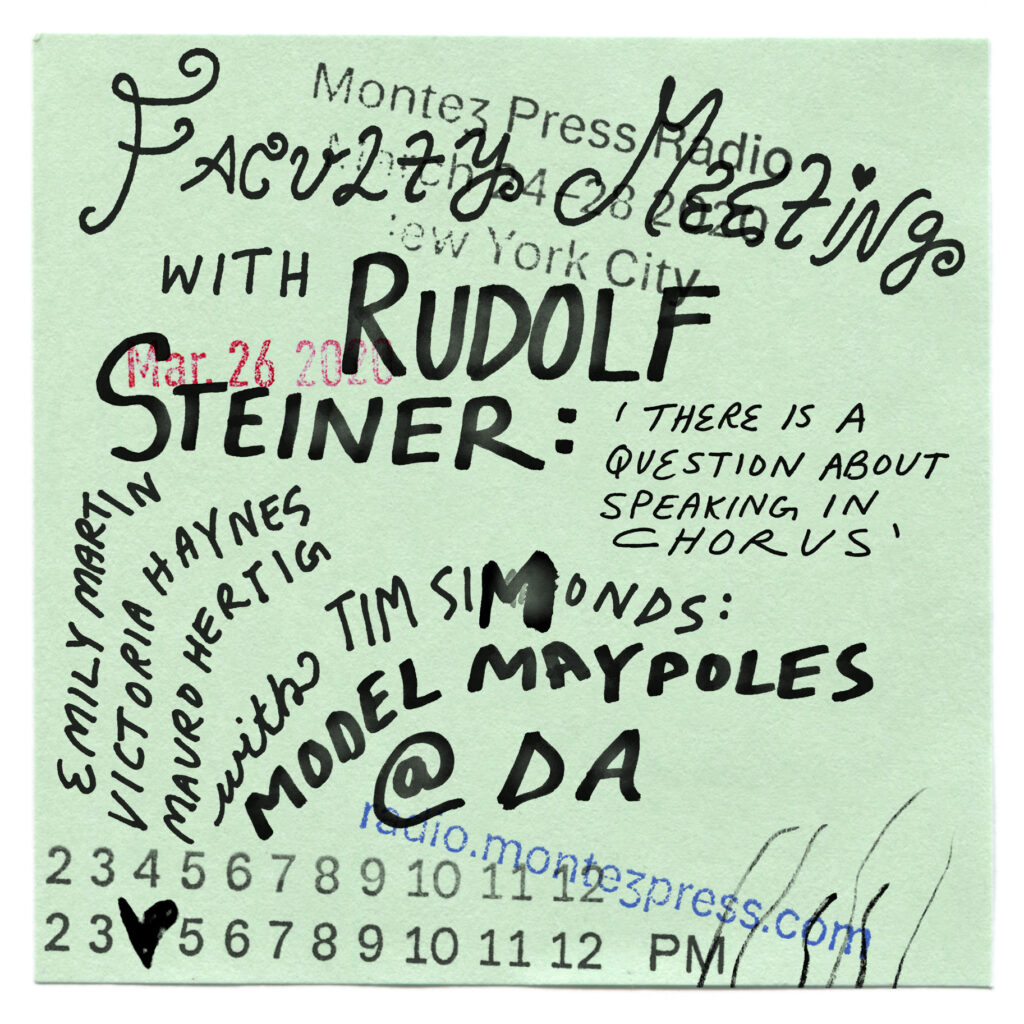
Readings and performances by
Victoria Haynes, Mauro Hertig, and Emily Martin
Broadcast on Montez Press Radio,
March 26th, 2020, 4:00 PM – 5:00 PM (EST)
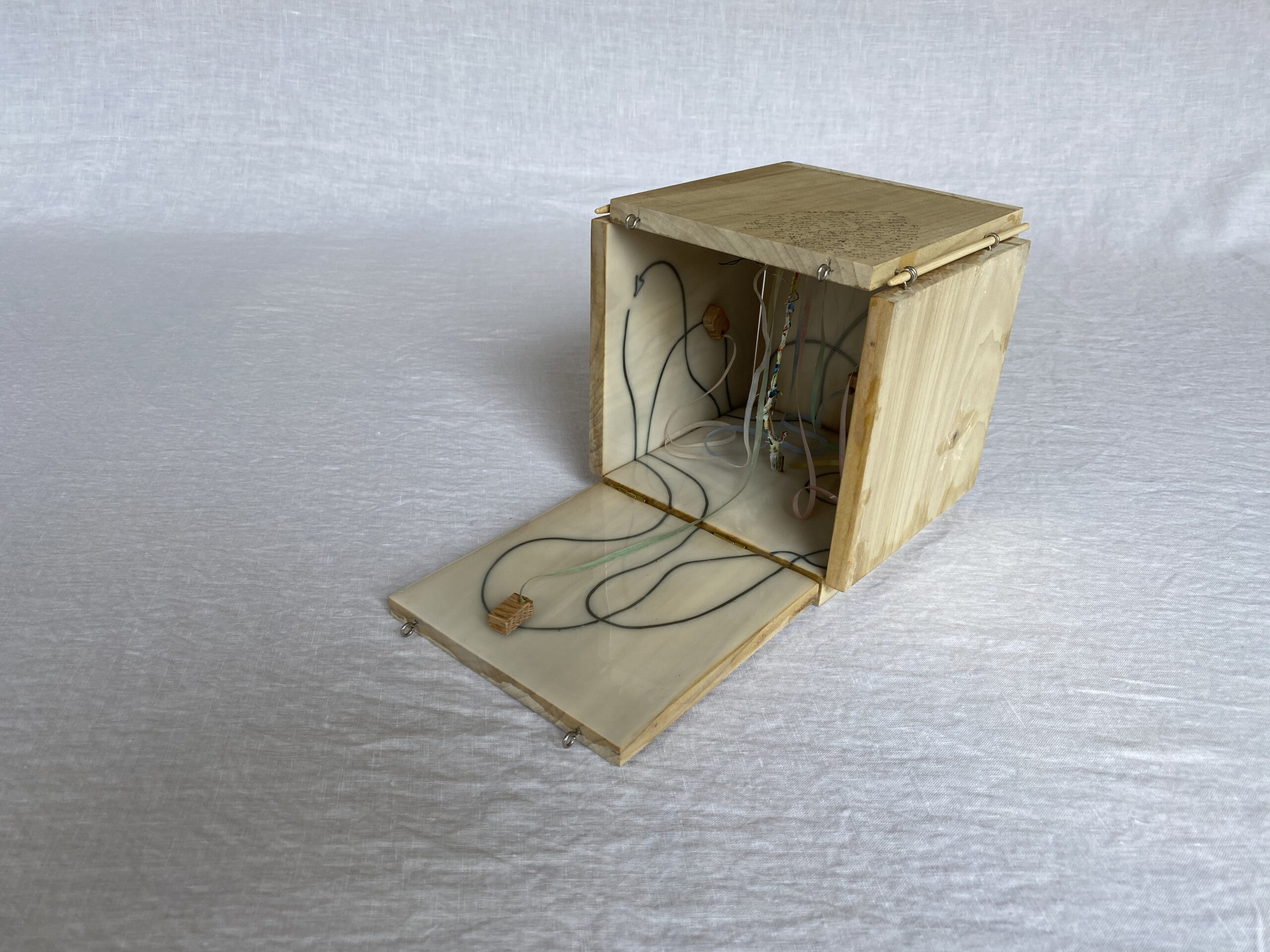
• janus stacks
• in corners
• bottles and diaries of routine ghosts
as a part of Inclinations, curated by Jae Cho at Spencer Brownstone
Diaries that track each vine and their transplanting. A tracking of the routine presence of watching them.
Bottles grown from seed, transplanted several times and trained to climb. Hanging in a shorter space than where they were grown, uprooted and roots uplifted.
What is spoken personally (embottled, bottled up) and what is shared openly.
A bottle’s open top is its horizon. The stopping access of the world. Gravity moves up rather than down. The terrain of a ghost trap. The view from the lobster. Building a ship in a bottle means building it underwater or at least already lost at sea. From a remove. It takes patience and care always at a remove. My nose always on the other side of glass. Patience, care, remove, fragility
Bottles are not as big as pots. Bottles entail routine. One day, one event opening or closing.
Being put in an effort to be preserved. Not just maintained in their growth but held to fit in an environment. How to freeze them or transplant them, wanting to hold onto them or to literally stop them, in the same way one stops a bottle, corks it. They share the form of a bottle. Vines work like liquid, moving up, filling up according to their container rather than fully determining their own strength by dint of their roots. Their roots are essentially along their trunk, a sort of inverted plant, where roots are high, and the horizon has been shifted to the top, like a perspective under water or from the perspective of a fly trapped in a bottle. Where they were grown.
Routine ghosts are the haunting of a habit (as in something that is supposed to be almost instinctual and subconscious, here coming forward), and our habitual encounter and looking over (or through) of the un-neat, untidy, the detritus of “punctual” activity, — in other words marginalized elements automatically dead. We make dead by caring and wanting to preserve things. Ghosts of the every day. Unnoticed things.
To go back to the first, in the vines is always a kind of ghost of a routine, watering, training, that has its repetition but no clear end, no “fruit.” The whole is defined by the absences as a result of care. What is not there, (the space that they were grown in, the soil and pots they grew from). Nature without nostalgia. Culpability of caring.
“bottled naturalism” —(Gabrielle Cody)
The calabash gourd (penguin is a varietal) is one of the first plants to be grown agriculturally not for it as food but as a tool. A bottle, a hollow, for drink, preserving, or music.
• to do before washing hands

Installed as a part of Dump Camp, a conference and sequence of performances organized and led by Bethany Ides and Ari Fredman in a lecture-class series at Cooper Union.

On these prints are images of a hand with reminders and to-do lists written on them. Some of the images show a wet hand, with handwriting smudged or running. The fragile and cheap prints are installed on the soft carpet of the classroom along the walking paths of the classroom. Hanging in window bays is another work that made up the environment of this day-long classroom conference series of solips (grottenholm), bleached fruits and vegetables hanging in netted bags, including a beath, carrot and papaya.
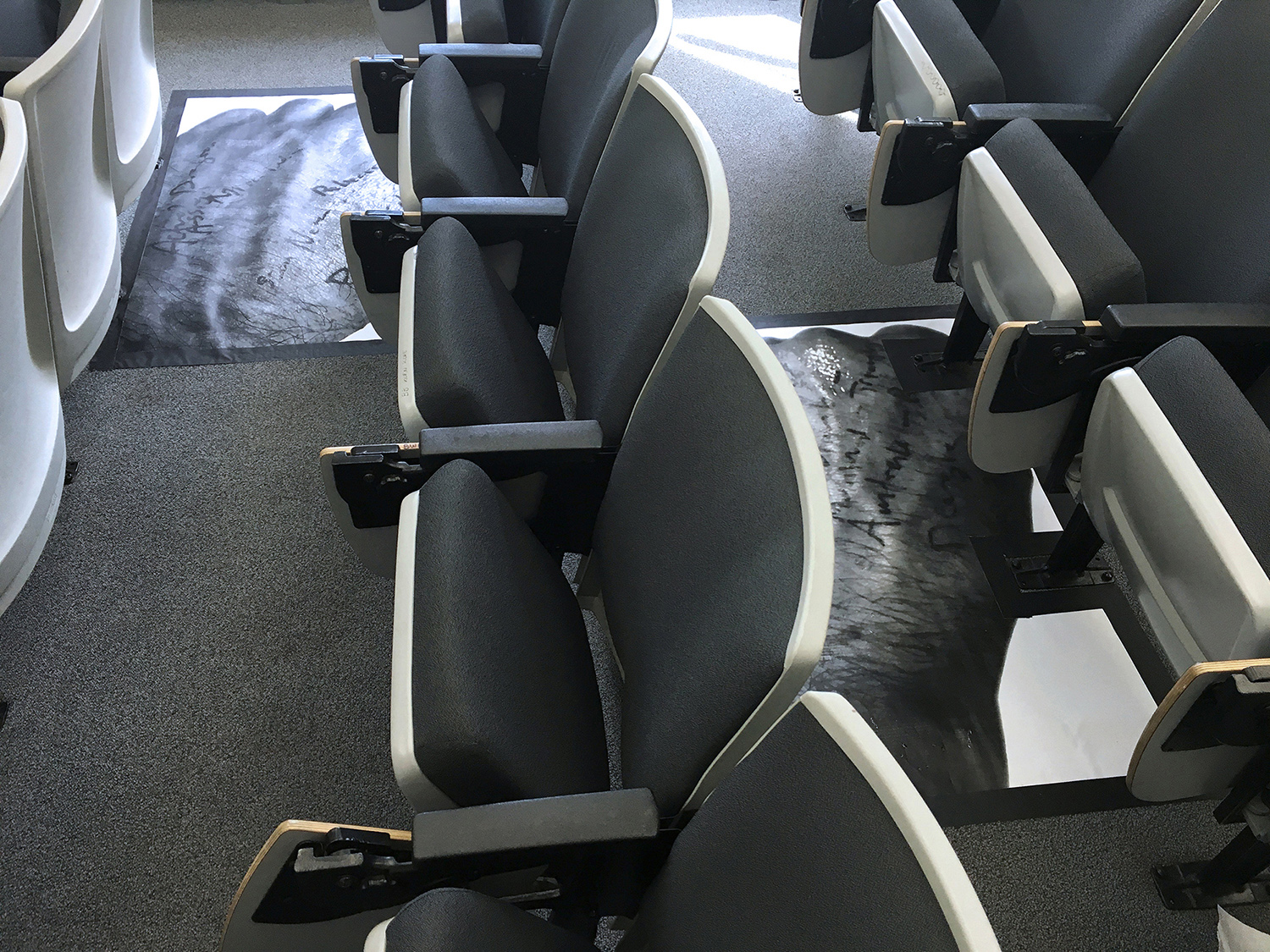

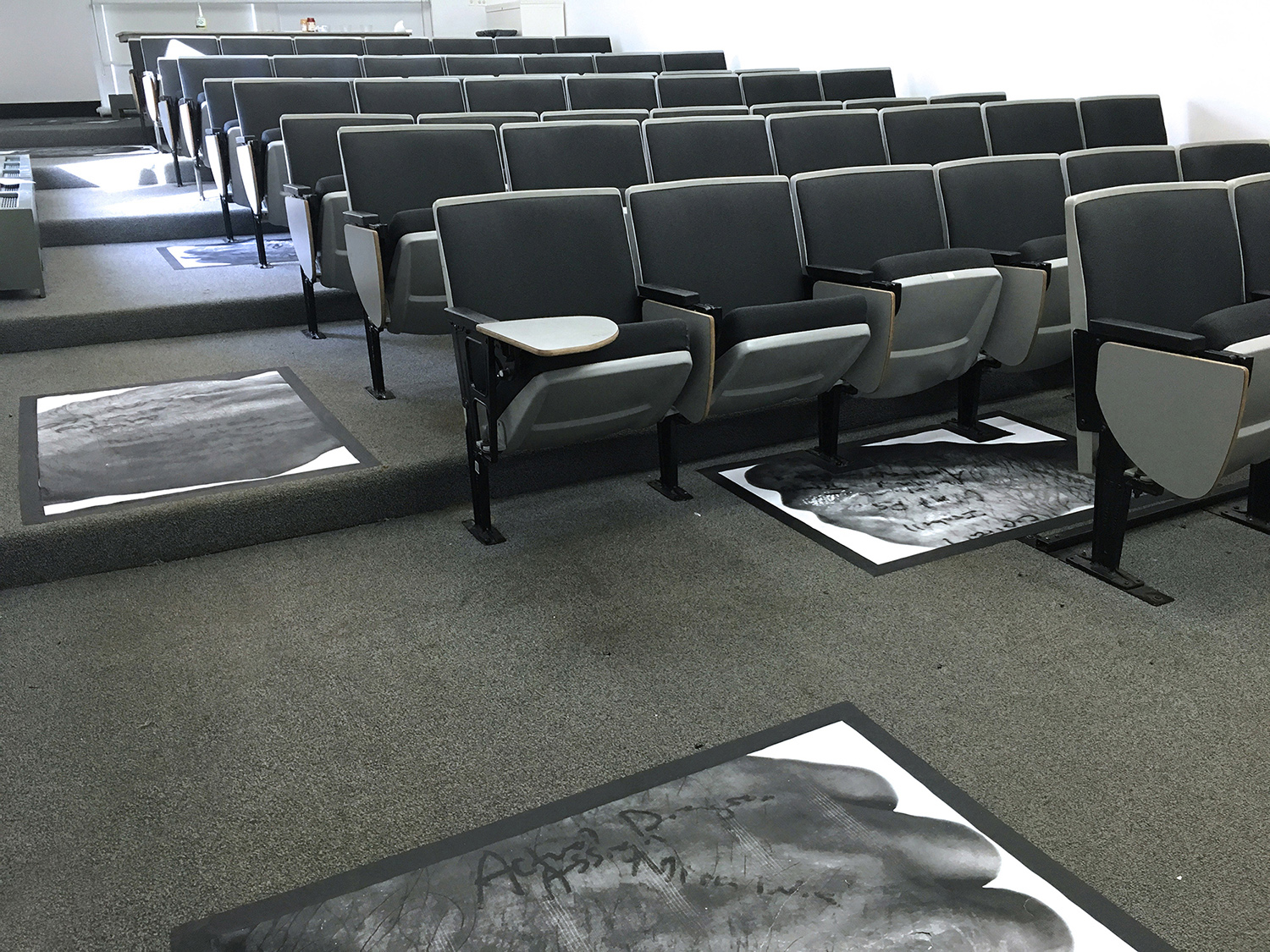
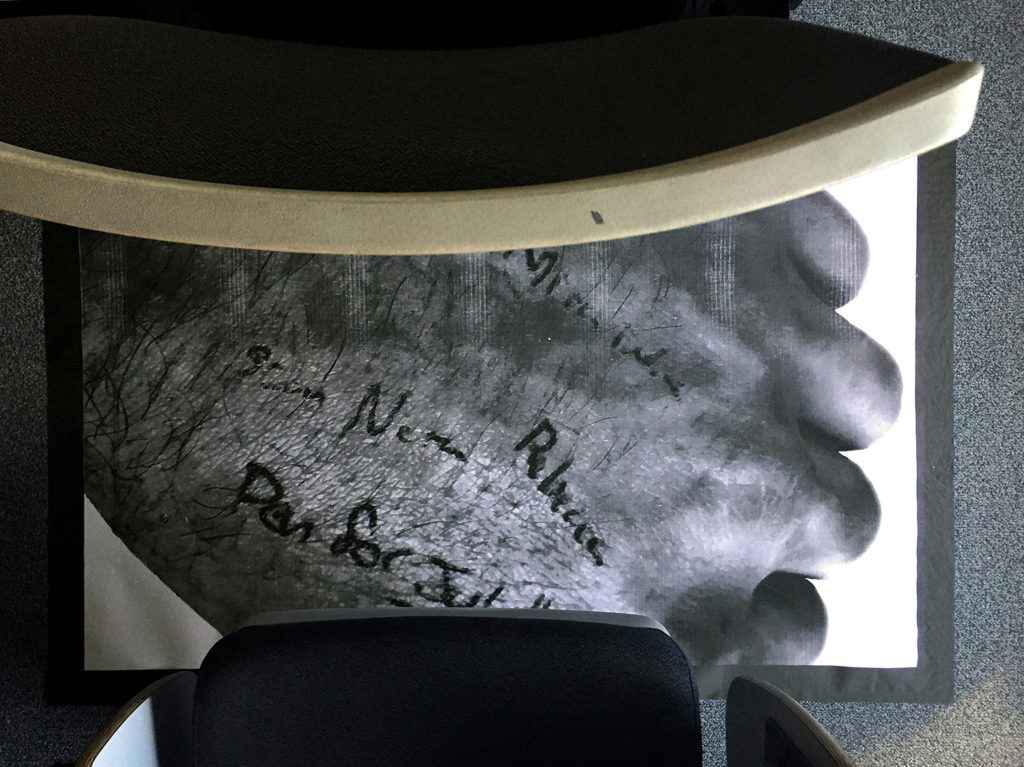



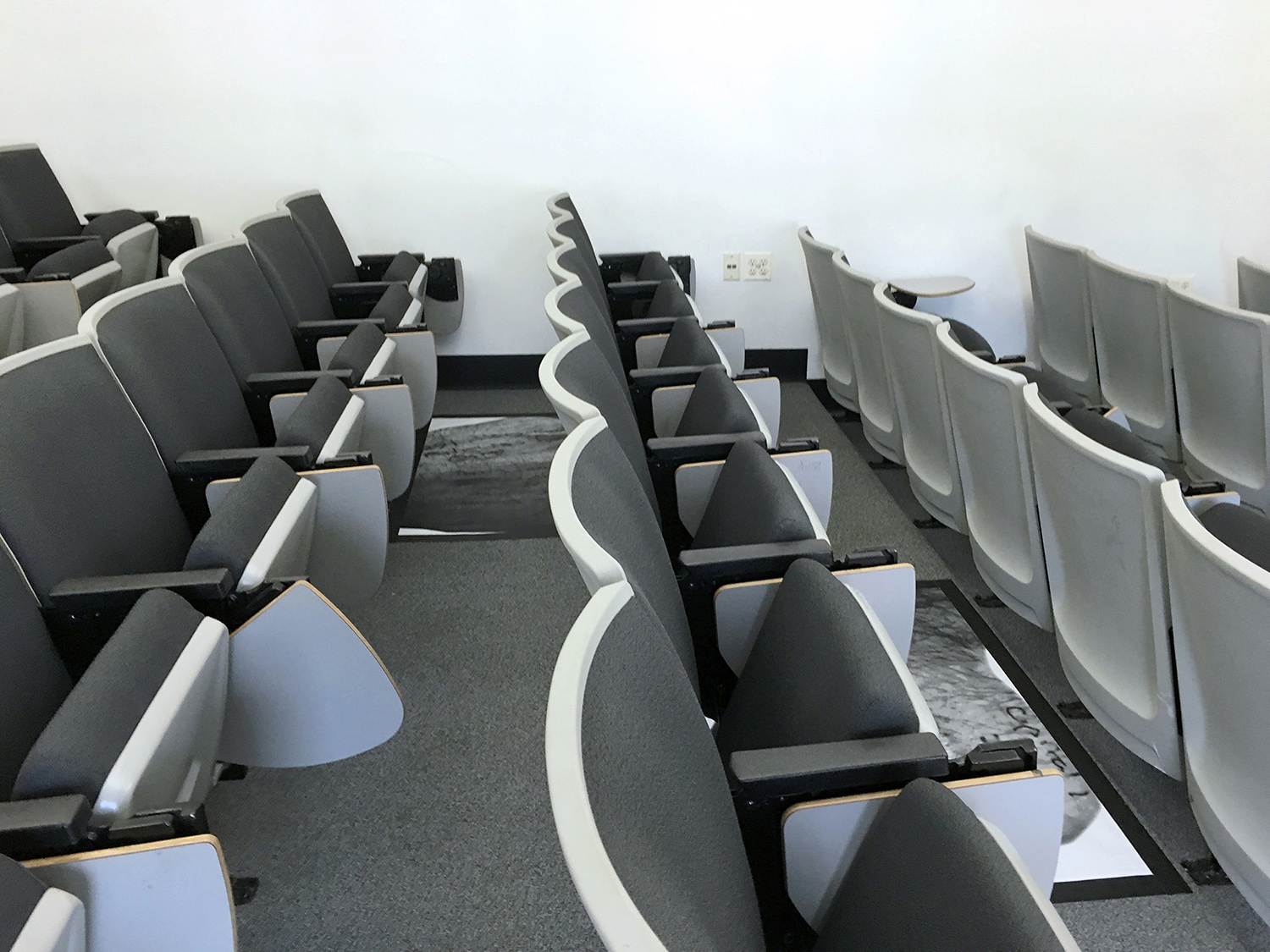
• teaching documents
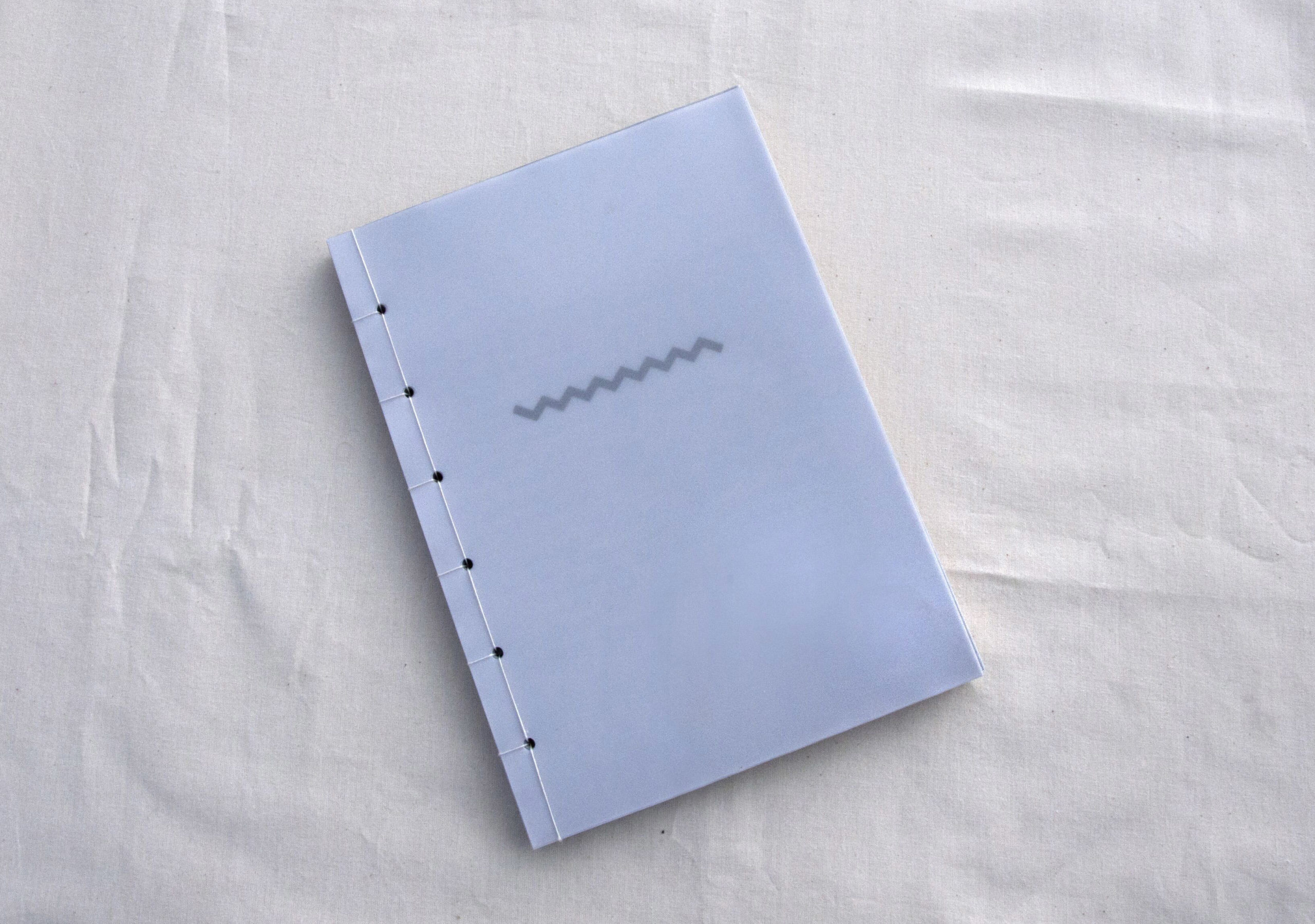
A collection of hesitations, misspellings, and auto-corrections in teaching. ╲╱╲╱╲╱╲╱╲╱╲╱╲╱╲ is composed of a typed transcription and enlarged images of a teacher’s handwritten marginalia on students’ essays; moments that uncover indecisions, or masked spelling mistakes—where an erring “a” in “differance” has been gently transformed into an “e.” The book is printed on trace paper, a kind of transparency that encourages things to get in the way of each other—transparency that doesn’t clarify.
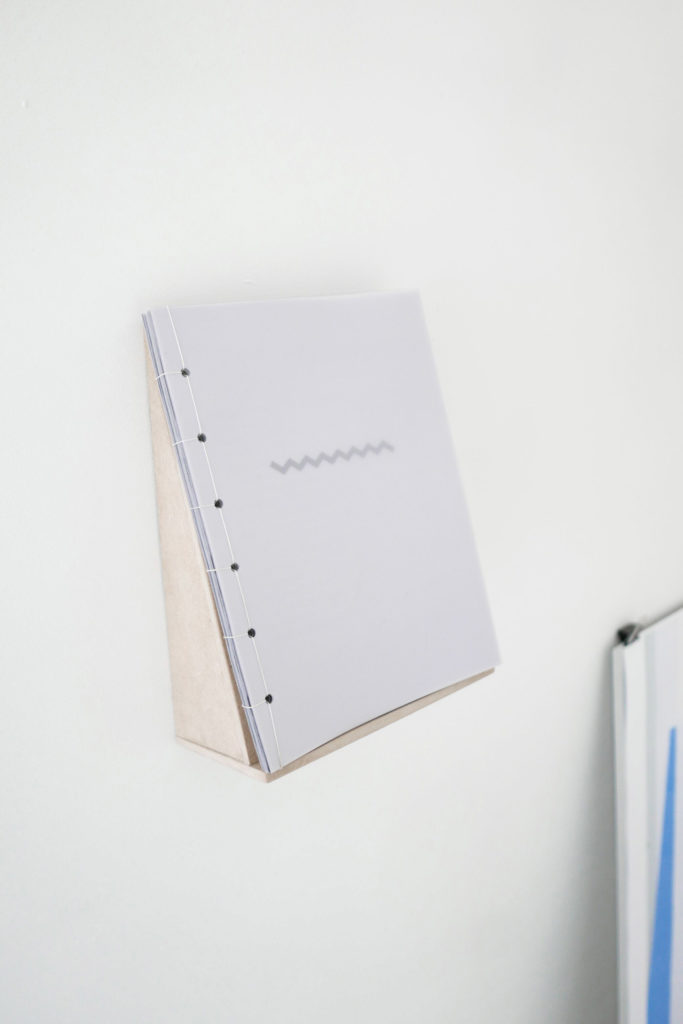
Printed on the occasion of the exhibition I said, “say they” at Rond-Point Projects, Marseille (2017). ╲╱╲╱╲╱╲╱╲╱╲╱╲╱╲ has been sold and distributed through Printed Matter (NY), Greene Naftali (NY), International Print Center New York, Rond Point Projects (Marseille), Burlington City Arts (VT), Colophon Art Books (Paris), and Cathouse Proper (NY)
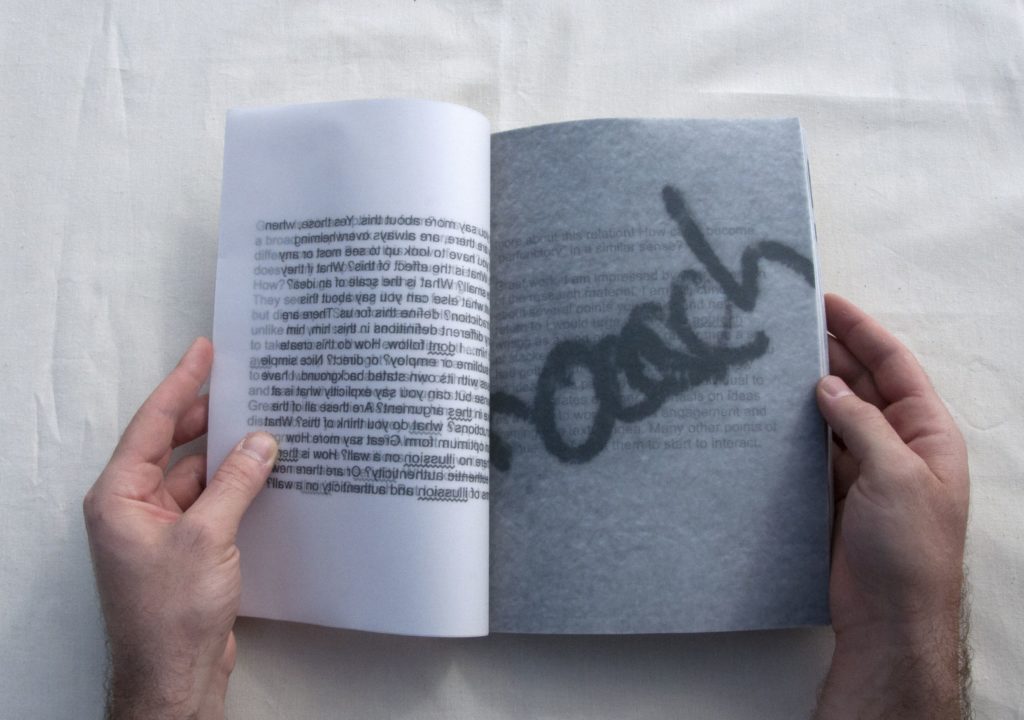
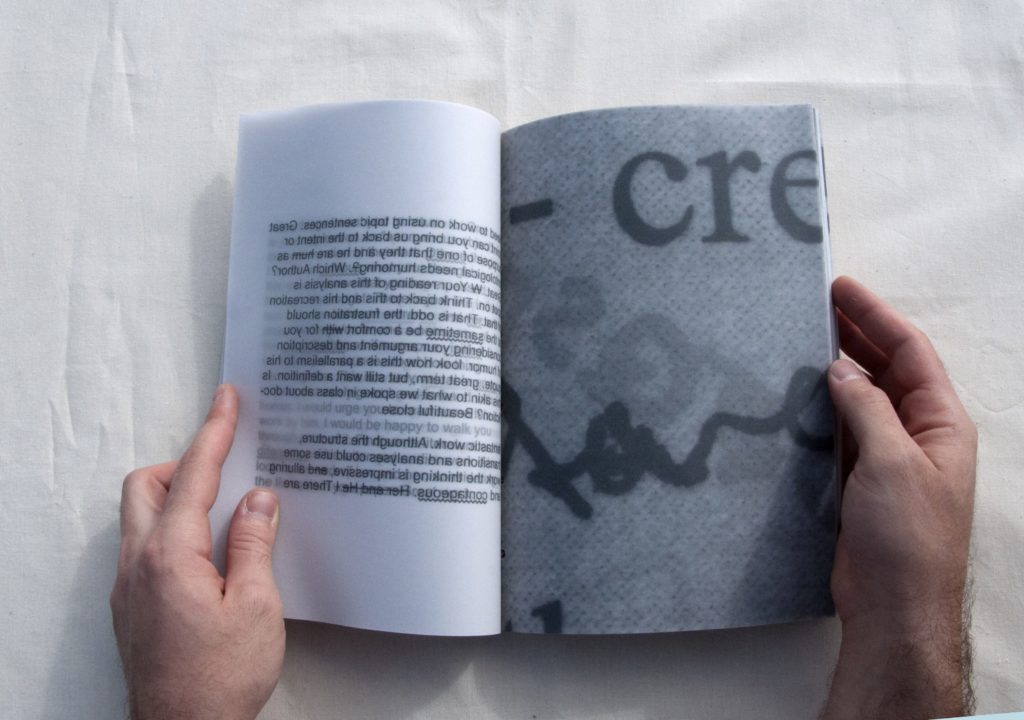
For the U.S. release of ╲╱╲╱╲╱╲╱╲╱╲╱╲╱╲ the book was read by a group of teachers following a set of exercises to read in the musical structure of a canon.
at Cathouse Proper at 524 Projects (Brooklyn, New York), in the context of Leslie Brack’s exhibition, Memorandum.
A group of faculty, teachers, and PhD candidates go through a set of exercises to learn how to read the pages of ╲╱╲╱╲╱╲╱╲╱╲╱╲╱╲, find a collective pace, vocalize over each other’s voices, and eventually read together in the musical structure of a canon. Read by Daniel Ayat, Elæ [Lynne DeSilva-Johnson], Thom Donovan, Emily Martin, Tom Rocha, Andrew Starner, Kyle Waugh, and Tim Simonds. Special thanks to Leslie Brack, Peter Bussigel, David Dixon and Ethan Ryman.

In 2019 the exercises and group reading, Faculty Canon was published as an audio recording by Reading Group as Faculty Canon (rg15). Edition of 75 with insert (translucent voices piled into strata–accordion folded on polyester film).
tr. 1: phatic talk (6:58)
“…its hard to be those two at the same time”
tr. 2: exercise 1 (6:25)
breathing / introduction to a closed circle / finding part of a word
tr. 3: exercise 2 (3:29)
jumping / contents of the book we are reading / practicing reading
tr. 4: exercise 3 (1:02)
aspect us an depen on a dis lang from struct o
tr. 5: exercise 3 (3:15)
aspect us an depen on a dis lang from struct o, no.2
tr. 6: exercise 4 (2:51)
aspect us an depen on a dis lang, with delay
tr. 7: exercise 5 (1:02)
pacing by page-turning
tr. 8: exercise 5 (7:16)
pacing by page-turning, no.2
tr. 9: exercise 6 (1:27)
refining pace
tr. 10 (0:53)
canon
tr. 11: (9:24)
canon, no.2
tr. 12: (2:26)
phatic talk “I have the same one…”
Reading Group
Printed Matter
Alongside, teacher’s margins, and solips, these prints are reflections on the role and voice of a teacher, focusing on qualities that are not associated with a teacher. These images are printed screen captures, showing the standard application window of Microsoft Word and a personal desktop behind. Typed in the document is a transcription of an endnote responding to a student’s paper. The errors and revisions of the teacher’s writing are emphasized by the editing symbols of Microsoft Word.
Installed as a part of I said, “say they” at Rond-Point Projects, Marseille
Installed as a part of I said, “say they” at Rond-Point Projects, Marseille


